Roorkee is a city in Haridwar district, Uttarakhand. This place is famous for IIT Roorkee institution. Since 1853, it is one of the India’s oldest headquarters of Bengal Engineer Group. Word Roorkee is derived from the name Rurimadi Imran. She was the wife of local Rajput Chieftain. During the Moghul Period, this place acted as capital of the Moghul Mahal. It came under the rule of Landhaura State during the 18th century. Later Britishers occupied this place.
What to see at Roorkee:
Roorkee Cantonment: In India it is one of the oldest cantonments. It is the prime attraction of the city. Inside the cantonment visitors can see a stroll around the war memorial. In order to honour the soldiers of the army this war memorial was constructed.
IIT Roorkee: with the assistance of Sir James Thomason it was established in 1847. Earlier name of this institution is Thomason College of Civil Engineering. In this university there are 18 departments. This university is well known for Civil Engineering training Classes regarding project of Upper Ganga Canal.
Solani Aqueduct: In 1846 it was constructed by the britishers. In Uttarakhand this is the perfect example of engineering marvel. It was constructed with the inspiration of Alcantara Aqueduct in Portugal on the River Solani.
Geophysics and Geology Museum: Specimens of minerals, fossils and rocks can be seen at this place. From Shivalik mountain range fossil tree brought here. Fossilised boned of elephants can also be seen here. Collection of geological models and charts can be seen here.
Sabir Paak: This place is also known as Piran Kaliyar Sharif. It is dedicated to 13th century Sufi Saint. All religion people come to this place believing that saint is having the healing powers.
Survey Museum: In 1950 this was established. In this region it is one of the best educational museums. Several types of surveying equipment and mapping can be seen here. These are dates back to centuries old.
Roorkee Group Museum and Achieves: It was established in 1978. Visitors can see huge number of pamphlets, photographs, paintings, documents, historical books. Portraits of Bengal Engineer Group, Weapons, and medals are also can be seen here.
What to see around Roorkee:
Rishikesh: Rishikesh is a sacred place to Hindu devotees. Rishikesh Attractions are Lakshman Jhula, Triveni Ghat, Parmarth Niketan, Bharat Mandir, Lakshman Temple, and Neelakanta Mahadev Temple.
Narendra Nagar: This place has historical importance. In 1919, this city was built by Maharaja Narendra Shah. Major attractions of this place are Nandi Bull and Royal Palace.
Haridwar: It is located 19kms away from Rishikesh. This place is a gateway to God. Major attractions of this place are Vaisho Devi Temple, Shravanathji’s temple, Gaurishankar Mahadev Temple, Bharat Mata Mandir, Daksha Mahadev Temple, Mansa Devi Temple, Chandi Devi Temple, Sapt Rishi Ashram.
Getting to Roorkee: Roorkee is well connected with roads and railways. From Chennai, Delhi, Nagpur, Agra etc buses come to this place. From Delhi, Agra, Ahmedabad, Mangalore, Thane etc trains come to this place. Nearest airport is located at Jolly Grant Airport which is located at Dehradun.
Getting around Roorkee: Several private buses, taxis, autos are available to visit the surrounding places of Roorkee.
Best time to visit Roorkee: Best time to visit this place is in the months of February, March, October, November and December.
Where to stay at Roorkee: Budget, Middle range and luxury hotels are available here to stay at this place. Best hotels which are located at this place are Hotel Royal Palace, Motel Polaris, Hometel, and Centre Point Hotel.
Where to eat at Roorkee: Best restaurants are available to have food at this place.
Mathura is the land on which Lord Sri Krishna is born. This is one of the most important religious places in India. this city is in the state of Uttar Pradesh. Mathura is visited by devotees not only from all corners of India but also from other countries. It was earlier called ‘Vrindavan’ situated on the banks of River Yamuna. Later on it became popular as Mathura. There are number of Krishna temples in the city. This place is important as religious place and equally important for its history and temple sculptures. Large number of people participates in the annual ‘Rath Yatra’ in Mathura. Krishnashtami is celebrated grandly here and the daily ‘Deep Aarti’ for river Yamuna also attracts large number of devotees.
What to see at Mathura:
Krishna Janmabhoomi temple:
This is believed to be the place where Lord Krishna was born. There is also a museum here in which the things found during excavation are kept which include a platform that is found in prisons.
Dwarkadhish temple:
This was built in 1814 and is located in the middle of the city of Mathura. One of the most visited temples of Mathura, this attracts the devotees with its beautiful paintings and carvings. Holi and Janmashtami are celebrated here grandly.
Banked Bihari Temple: This temple was built in 1864. The architecture of the temple mesmerizes the visitors. The idol of Lord Krishna in this temple can be seen for 15 minutes for each hour.
Madan Mohan temple:
This is a very ancient temple and is situated near Kali Ghat. This is said as the first temple to be built in Vrindavan. The idol of this temple was shifted to Rajasthan during the time when Aurangzeb was destroying Hindu temples, it is said.
ISKON temple:
One of the most beautiful temples in Mathura is the ISKON temple.
Rangji temple:
This temple is built in south Indian temple architecture style. This was built in 1851 by Seth, a rich family in Mathura. Main deity here is Rangnath Swamy. Every year Rath Yatra is held for ten days in the month of Chaitra.
Shahji temple:
This was built by Shah kundan Lal of Lucknow in 1876. The architecture and the sculptures are very beautiful.
Govind Dev temple:
This temple was built by General Man Singh in 1950 this is built in a combination of Hindu and Muslim architecture styles.
What to see around Mathura:
Vrindavan: This is right next to Mathura city. Vrindavan is believed to be the place where Krishna spent his childhood. this ancient town is most visited by Hindus. There are many important temples in this holy city.
Gokul: This is only a few kilometers away from Mathura. When Krishna was born in the prison, he was brought here by Vasudev to save him from Kamsa.
Nand gaon: This is the home of Nand and Yashoda.
Agra: This is located 58 kilometers away from Mathura. This is the place where the most famous Taj Mahal and Red Fort are located.
Getting to Mathura:
Mathura is situated 145 kms from capital city of India, New Delhi. This is at a distance of 58 kms from Agra. Well developed road and railways are available to reach the place. Mathura is one of the major city between New Delhi and Agra and daily many number of buses and trains run between the two. Nearest airport to Mathura is Kheria (Agra) which is at a distance of 62 kilometers.
Getting Around Mathura:
There are many private buses, tempos, Rickshaws and Tongas that offer to take the devotees around Mathura.
Best Time to visit Mathura:
The climatic conditions in Mathura are extreme. Best season to visit this place is from October to March.
Where to stay at Mathura:
Mathura receives large number of tourists every day and there are hotels that suit to every pocket. It has standard and budget hotels which offer comfortable accommodation.
Where to eat at Mathura:
Mouthwatering delicacies are offered in eat outs in Mathura. Visitors will be thrilled to enjoy budgeted and clean food at the canteens that run by temples and also other places.
Nagarjunakonda is located near Nagarjuna Sagar in Guntur district, Andhra Pradesh, India. This is the historical Buddhist town. From Hyderabad it is located 150kms away. Earlier name of this place was Sri Parvata. Nagarjunakonda is one of the India’s richest Buddhist sites. This place is named after Nagarjuna. He was the south Indian master of Mahayana Buddhism. He lived at this place during 2nd century. Earlier this place looks like Srilanka, China, Gandhara with Buddhist Universities and monasteries. Now all were ruined. During the Ikshvaku dynasty this place acted as capital to that dynasty. This dynasty ruled between 225 AD to 325 AD. During the early period there were more than 30 Buddhist Viharas at this place.
What to see at Nagarjunakonda:
Nagarjunakonda Island Museum: Articles of late medieval era and prehistoric era were preserved here. Jewellery exhibits at this place belongs to Neolithic’s and Palaeolithic ages. Major attractions of this museum are tree nymphs, war scenes, folklore, artists, devotees, court scenes, palace interiors, articles depict Jataka stories. Buddhist Vihara built this museum.
Nagarjunasagar Dam: In the world it is the tallest masonry. In 1903, it was built on the river Krishna. This is the major source for the hydel power generation project. Thousands of acres of land cultivate under Nagarjunasagar dam. At this site 14th century fort is located. Several temples are also located near this place.
What to see around Nagarjunakonda:
Macherla: It is located in Guntur district. Earlier it was acted as capital to Palnadu Region. This place was originated from Mahadevi Cherla. On hearing the word Macherla every one will remember Palnati Yudhdham. This famous battle took place between 1176 AD to 1182 AD. Major attraction of this place is Sri Lakshmi Chennakesava Swamy Temple. Peruri Muktiraju constructed this temple during 13th century.
Kurnool: Name of this place is named after the Telugu word Kandanavolu. It is the gateway to Rayalaseema. Kurnool Attractions are Birla Mandir, Srisailam Dam, Belum Caves, Mahanandi, Bharmaramba Mallikarjuna Swamy Temple, and Rollapadu Bird Sanctuary.
Srisailam: Srisailam is a holy location. Other names of this place are Srigiri, Mantharaparvata, and Sriparvata. In the epic Mahabharata it was mentioned as Sri Parvata. Major attraction of this place is Mallikarjuna Swamy Temple, Srisailam Dam, Hemareddy Mallareddy Temple, Srisailam Sanctuary, Shikareswara Temple, Hathakeswara Temple, Srisailam Ropeway, and Shakti Ganapati Temple.
Amaravathi: Other name of this place is Dharanikota. This place is situated on the banks of river Krishna. Earlier this place was acted as capital of Andhra Satavahanas. Satavahanas ruled this place between 2nd century BCE to 3rd Century CE. Major Amaravati Attractions are Amaravati Temple, The Stupa, and Amaravati School.
Getting to Nagarjunakonda: Nagarjunakonda is well connected with road. From Hyderabad, Kurnool, Amaravathi, Ongole, Bangalore, Vellore, Salem, Raipur, Panjim etc buses come to this place. Nagarjunakonda do not have railway station. Nearest railway station is located at Guntur which is 128kms away from this place. This railway station is well connected with Hyderabad, Salem, Raipur, Pondicherry, Vijayawada, Bangalore etc. Nearest airport is located at Hyderabad. From railway station and airport, buses and Taxis are available to reach this place.
Getting around Nagarjunakonda: Buses and Taxis are available to visit the surrounding places of Nagarjunakonda.
Best time to visit Nagarjunakonda: Best time to visit Nagarjunakonda is in the months of February, March, October, November and December.
Where to stay at Nagarjunakonda: Only one resort is available at this place i.e. Nagarjuna Resort. Some of the budget and midrange hotels are available at Macherla Village which is 30kms away from this place.
Where to eat at Nagarjunakonda: Nagarjuna Resort provides food to the people who visit this place.
Buxar is a city in Buxar district, Bihar, India. Name of this city is derived from the word Vyaghrasar. According to Mythology, Sage Durvasha Curse Rishi Vedshria to have a tiger face. Rishi Vedshria’s face was restored after taken the bath in the holy tank. Holy tank is named as Vyaghrasar. It is located on the banks of River Ganges. This city is well connected with Ghazipur, Ballia and Varanasi. This city is having great historical importance. In the history two great battles took place here. First battle was done between Humayun and Sher Shah Suri in 1539 and next battle was done between the British and Mir Kasim in 1764.
What to see at Buxar:
Katkauli Ka Maidan: It is major attraction of Buxar. In 1764, Battle of Buxar took place here. In the history of colonial rule of India, this site is considered as signpost. Battle broke out on 22nd October 1764 between British East India and allied forces of Shah Alam II (Mughal Emperor), Shuja-ud-Daulah (Nawab of Awadh), and Mir Qasim (Nawab of Bengal).
Brahmeshwar Nath Temple: Other name of this temple is Baba Brahmeshwar Nath Dham. Lord Shiva is worshipped here. During the month of Shrawan, there is a special significance of paying homage to this temple.
Chausa Hoard: First known bronze hoard was discovered in the Gangetic Valley. This hoard was a set of 18 Jain bronzes. Articles dates back to Gupta and Shunga period. Dharmachakra is the major attraction of this place. Historical war of 1539 AD took place here. Articles excavated from the site are preserved in Patna Museum. Chausa Mangoes is most famous at this place.
Sita Ram Upadhyaya Museum: It was established in 1979. This museum is one of the largest repositories in Buxar. Museum consists of various historical articles, artefacts, coins and rare stone sculptures. This is named after local resident Late Sita Ram Upadhyaya. He collected contrasting range of terracotta’s. His collections displayed in a separate Gallery.
Buxar Fort: It is one of the ancient forts. In 1054 AD this fort was erected by King Rudra Deo. Several temples such as Nath Baba Temple, Gauri Shankar Temple etc can be seen near this fort.
What to see around Buxar:
Biharji Temple: It is located 15kms away from Buxar. This is one of the reversed places of this region. Jai Prakash Singh, King of Dumraon Estate constructed this temple in 1825. Lord Krishna is worshipped here.
Naulakha Mandir: It is located just 2kms away from Buxar. This is one of the nearby attractions of this place.
Getting to Buxar: Burax is well connected with road and railways. From all the major cities such as Kanpur, Bokaro, Varanasi, Hyderabad, Kolkata etc buses reach to this place. Burax railway station is major railway station to the nearby places of this city. From Jamshedpur, Ranchi, Patna, Lucknow, Delhi, Mumbai, Durgapur, etc trains come to this place. Nearest airport is Patna which is 111kms away from Buxar. Other nearest airport is at Varanasi which is 113kms away from Buxar.
Getting around Buxar: Buses are available to visit the places of Buxar. Call cabs, private vehicles, Buses and Taxis are available to visit the surrounding place of Buxar.
Best time to visit Buxar: Weather is so pleasant in the February and December. February and December are the best months to visit this place.
Where to stay at Buxar: Plenty of hotels including luxury hotels are available here to stay at this place. Apart from hotels few guest houses are also available to stay at this place. Best hotels of this place are Apsara Hotel and Vishwamitra Vihar Hotel.
Where to eat in Buxar: Plenty of restaurants are available to have food at Buxar. South Indian and Chinese food is available here.
Muzaffarpur is a city in Muzaffarpur district, Bihar, India. It is situated on the banks of river Burhi Gandak. It is one of the gateways to Nepal. Food grains and Clothes traded between Muzaffarpur and Nepal. In Northern Bihar it is the largest city. This place is named after Muzaffar Khan who was a revenue officer in the 8th century. Buddhist Viharas and Ancient sites can be seen here. Litchi Gardens is other attraction of this place.
What to see in Muzaffarpur:
Shri Ram Temple: It is one of the Navratna Temples. People believed that, Rajasthani artist established this temple. Lord Rama and Goddess Sitha are worshipped here. In this temple visitors can see Mahadev Shrine. This is the 3rd largest Shivalingam in India.
Baba Garibnath Temple: This temple is dedicated to Lord Shiva. It is known as second Baidyanath. It is believed that earlier at this place there was a banyan tree. At the time owner of the tree cutting the tree he found Shiva lingam. On that night he found Garibnath in his dream. Lord order to construct temple at this place. So he constructed this temple.
Jubba Sahni Park: This Park is named after freedom fighter Jubba Sahni. It was constructed by Hemchandra Shirohi in Mithanpura colony.
Khudi Ram Bose Memorial: It was constructed on the honour of Khudi Ram. He was arrested in 1908 for throwing the bomb on the British district.
Kali Mata Temple: Kali Mata Temple of Sikandarpur was constructed in 1932. Darbhanga Maharaj Kamlesh Singh constructed this temple.
Chaturbhuj Sthan Temple: Temple is dedicated to Lord Chaturbhuj. It is believed that idol of this lord found in Turki village later it was shifted to Muzaffarpur.
Ramna’s Tripur Sundari Temple: In 1941 this was constructed by shri Umashankar Prasad.
Simri Mai Temple: It is located very close to Muzaffarpur Engineering College. Goddess Bhagwati worshipped here. It is believed that an old lady used to meditate here during night time for long time. On the 17th day of Navarthi she took Samadhi here.
Ram Chandra Shahi Museum: This is located inside the premises of Jubba Sahni Park. Various art objects, artefacts, rare postage stamps can be seen here.
What to see around Muzaffarpur:
Rajkhand: From Aurai Block Headquarters it is located 5kms away from Muzaffarpur. Major attraction of this village is Old Bhairav Nath Temple. During Mahashivrathri Festival, annual cattle fair organises very grandly at this temple. Nearby attractions is Ramna Gurudwara, Badi Masjid at Company Bagh, Radha Krishna Temple, Hathilwa Math.
Katra Garh: It is located 35kms away from Muzaffarpur. At the time to Mughal period it was known as Akbarpur. At this site visitors can see several earthen pots, ornaments, important idols and other articles.
Ambara Chowk: It is located 34kms away from Muzaffarpur. This is the home to Amrapali who is the beautiful courtesan of Vaishali.
Getting to Muzaffarpur: Muzaffarpur is well connected with road and railways. From Faridabad, Jaipur, Nagpur, Lucknow, Kolkata, Dehradun, Hyderabad, etc buses come to this place. From Goa, Madurai, Pondicherry, Bangalore, Delhi etc trains come to this place. Muzaffarpur is also having airport facility. Nearest airport to Muzaffarpur is Patna which is 63kms away from the city.
Getting around Muzaffarpur: Plenty of buses and Taxis are available to visit the surrounding places of Muzaffarpur.
Best time to visit Muzaffarpur: Best time to visit this place is in the months of February, October , November and December.
Where to stay at Muzaffarpur: Plenty of accommodations are available at this place. Best hotels of this place are Meenakshi international, Lichchavi Vihar Hotel, Hotel Atithi, Jyothi Hotel.
Where to eat in Muzaffarpur: Plenty of restaurants are available at this place. Best resturents are Frineds resturents, Bharat Jalan, Vaishali Pastry Shop, Kavery.
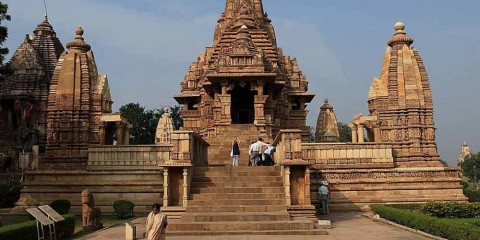
Bihar, North India, Caves, Fort, History, Hot Springs, Musuem, Nature, Temple, Valley, Wildlife Sanctuary
Bihar is 12th largest state in India. In Bihar, Lord Buddha Founded Buddhism. Lord Buddha spent most of his life time at this place. Mahatma Gandhi Setu is one of the longest bridges in the world.
What to see at Bihar:
Patna: It is the capital of Bihar which is situated on the southern banks of Ganges. Mahatma Gandhi Setu Bridge is located here. History of Patna dates back to 493 BC. Magadha Empire ruled at this place. Major attractions of Patna are Agam kuan, Har Mandir, Padri Ki Haveli, Patna Cementry, Golgarh, Patna Museum etc.
Munger: Major attractions of this place are Bihar school of Yoga, Madras Rahmania Islamic School.
Rajgir: This place is famous for several temples and monasteries. This place is associated with Lord Buddha. Jivekarmavan Monastery was the residence of Lord Buddha. This place is well known for hot water springs and Jain temples. Other attractions of this place are Venue Vana, Jarasandha’s Akhara, Ajatshatru’s Fort, Bimbisar’s jail.
Nalanda: Nalanda Attractions are Nalanda University, The Great Stupa, Nalanda Archaeological Museum, Hieun Tsang Memorial Hall.
Sasaram: Sasaram Attractions are Sher Shah Suri’s Tomb, Maa Tara Chandi Temple, Rock Cut Caves and Ashokan inscriptions.
Bihar Sharif: It is situated on the banks of River Panchanan. Plenty of pilgrim Muslim tombs can be seen here. It was served as capital of Pala dynasty. 5th century Muslim tombs, mosques and Gupta Pillar can be seen here. Major attractions of this place are Odantapuri, Tomb of Malik Ibrahim Vaya, Makhdum Shah Sharif ud din Mosque, Saint Mallik Ibrahim Bayu.
Muzaffarpur: Major attractions of this place are Sikandarpur Kali Temple, Baba Garib Stan, Rajeshwari Devi Temple, Ram Chandra Shahi museum etc
Bhagalpur: During 7th century it was the biggest trading market. Major attractions of this place are production of silk fabrics, Madhusudan temple, Colganj Temple.
Gaya: It is one of the tourist’s places of Bihar. This is the sacred place to Hindus. It is believed that at this place Lord Vishnu kept his foot on demon Gayasur to kill him.
Bodhgaya: Lord Buddha got enlightenment at this place. After the enlightenment of 250 years, Emperor Ashoka came to this place and founded Mahabodhi Temple.
What to see around Bihar:
Uttar Pradesh: It is the holy land of Rishikesh, Kedarnath, Badrinath, Haridwar. Tales of Rani of Jhansi is most famous. Major attractions of this place are Taj Mahal, Agra, Allahabad, Ayodhya, Corbett, Gangotri, Lucknow, Mussorie.
Madhya Pradesh: It is the largest state in India. At these place more than 1800 monuments says the stories of musicians, poets, saints, warriors, kingdoms, Empires of centuries old. Major attractions of this place are Bandhavgarh, Amarkantak, Bhojpur, Bhopal, Dhar, Chitrakoot, Chanderi, Gwalior, Indore, Jabalpur etc.
Orissa: Major attractions of this place are Konark, Gopalapur, Cuttack, Chilka Lake, Bhubaneshwar, Berhampur, Puri.
West Bengal: Major attractions of this place are Sunderbans, Shanti Niketan, Diamond Harbour, Siliguri, Darjiling, Calcutta, Bakreshwar.
Sikkim: Major attractions of this place are Yuksom, Lachung, Gangtok.
Getting to Bihar: Bihar is well connected with road ways, railways and airways. Some of the railway stations in Bihar are Abhaipur, Bansipur, Bhagwanpur, Chhapra, Labha, Tilaya, Wena, Sarai, Ismailpur etc. Airports in Bihar are Birsa Munda, Bokaro, Daltonganj, Darbhanga, Dhanbad, Gaya, Giridih, Jamshedpur, Madhubani, Muzaffarpur, Purnea, Raxaul etc.
Getting around Bihar: Buses and Taxis are available to visit the places of Bihar. Trains, buses and Taxis are available to visit the surrounding places of Bihar.
Best time to visit Bihar: Bihar welcomes the tourists throughout the year.
Where to stay in Bihar: Plenty of accommodations are available to stay at various places of Bihar. Starting from Budget to Luxury hotels are available to stay at Bihar.
here to eat in Bihar: Plenty of restaurants are available to have food in Bihar. Major restaurants of Bihar are Bell pepper, Tan door Hut, Takshila, Siam Thai restaurants.
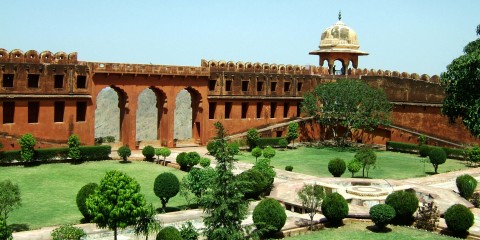
Rajasthan, North India, Architecture, Fort, History, Mughal, Musuem, Palace, Temple, Wildlife Sanctuary
Jaipur is located Rajasthan, India. It was founded by Maharaja Sawai jai Singh II in 1727. This place is well known for great history and natural beauty. This city is also known as Pink City. Specialities of Jaipur are Kota doria sarees, Minakari work, semi precious stones, Exotic jewellery etc.
What to see in Jaipur:
City Palace: It is the major attractions of Jaipur. Major attractions of this palace are audience hall, pavilions, Palace of Welcome, Museum, Maharani Palace, Rajput Weaponry, Chandra mahal, Diwan-e-Khas, Diwan-e-Aam.
Jal Mahal: It is located in the middle of Mansarovar Lake. This is one of the biggest artificial lakes. Rajasthani and Mughal Architecture style can be seen here. Red sandstone used in the construction of this mahal.
Akshardham Temple: This temple is famous for its architecture, idols, sculptures and carvings. Lord Narayana is worshipped here.
Hawa Mahal: It is five storied structure. This mahal has more than 950 windows. Latticework is the major attraction of this mahal. Mahal was designed by Lalchand Usta.
Amber Fort: In the medieval history this fort played a major role. True lifestyle of Rajputs can be known from this place. This is the right place for Muslim and Hindu architecture.
Central Park: It is a largest park in Jaipur. Major attractions of this park are Rambagh Golf Club, Rambagh Polo Ground, Big Garden, and Stone Figures. Several varieties of birds including migratory birds can be seen here.
Jantar Mantar: This monument has been awarded as largest stone observatory in the world. Instruments are used to measure the time.
Shah Mahal: It is a famous hall of mirror which is situated inside the Amber Palace. This was constructed for meeting his special guests. Belgium glass used to construct this.
Nahargarh: For the protection of Ajmer this was constructed. It is located on the Aravalli hills.
Albert Hall Museum: Major attractions of this museum are crystal works, metal sculptures, ivory goods, pottery and natural stones, Chiselled brassware, exquisite Jewellery, rare paintings.
City Palace museum: Ancient manuscripts of Hindu Scriptures are the major attraction of this museum.
Dolls Museum: Various countries and different states of India’s dolls with traditional costumes can be seen here.
Other attractions of Jaipur: Other attractions of Jaipur are Birla Mandir, Anokhi Museum of Hand Printing, Albert Hall, Jawahar Kala Kendra, Moti Doongri, Galtaji, Mubarak Mahal, Jaipur Zoo.
What to see around Jaipur:
Jaisinghpura Khor: It is located 12kms away from Jaipur. This place is famous for Jain temple and step well.
Sanganer: This place is well known for block printing with vegetable dyes and handmade paper. It is located 16kms away from Jaipur.
Ramgarh Lake: It is located 32kms away from Jaipur. It is a beautiful artificial lake spread around 20Sq.kms.
Bagru: This village is famous for a fort and Textile Printing. It is located 35kms away from Jaipur.
Madhogarh Tunga: It is located 40kms away from Jaipur. This place is famous for Madhogarh Fort.
Jamwa Ramgarh: It is located 29kms away from jaipur. This place is famous for artificial lake. Plenty of birds including migratory birds come to this place.
Getting to Jaipur: Jaipur is well connected with road, railways and airways. From Vadodara, Ahmedabad, Udaipur, Ajmer, Shahpura, etc buses come to this place. Railways of Jaipur are well connected with all the major cities such as Kolkata, Udaipur, Indore, Gwalior etc. Both domestic and international port is situated here.
Getting around Jaipur: Autos, cycle rickshaws, taxis, buses are available to see the places of Jaipur. Buses and taxis are available to visit the surrounding place of Jaipur.
Best time to visit Jaipur: Best time to visit this place is between October to March.
Where to stay in Jaipur: Plenty of accommodations starting from Budget to 5 star hotels are available to stay at Jaipur.
Where to eat in Jaipur: Plenty of restaurants are available in Jaipur. Dal Bati Churma is popular snack item of Jaipur.
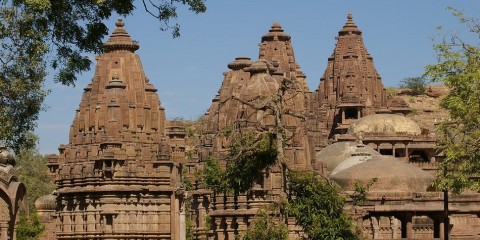
Rajasthan, North India, Architecture, Fort, History, Jodhpur, Musuem, Nature, Temple
Mandore is located in Rajasthan, India. It is one of the ancient towns in Rajasthan. In 6th century it was ruled by Gurjar Partihar dynasty. It is the birth place of several notable peoples such as Padma Sri Kailash Sankhala, Ashok Gehlot, Justice Shri Kan Singh Parihar. Major festivals of this place are Bhogishell Parikrama, Veerpuri Mela, Naag Panchami, Veerpuri Mela, Naag Panchami, Hariyali Amavasya, The Rao Festival.
What to see at Mandore:
Mandore Fort: This place has several historical monuments. Major attraction of this place is Madore Fort. This fort is famous for its architecture. Walls of this fort are very thick and substantial size. Major attraction of this fort is an ancient temple. Temple is carved with planets, animals, birds, botanical designs.
Madore Gardens: This garden consists of Charming temples and memorials. Another attraction of this place is high rock terraces. Chhatris of several rulers are placed here. Of all the Chhatris, major attraction of Chhatris is Chhatris of Maharaja Ajit Singh. It was built in 1793.
Government Museum: It is located in Mandore Garden. Plenty of artefacts can be seen here. Major attraction of this museum is The Temple of 33 crore Gods. Images of several Hindu Gods can be seen here.
What to see around Mandore:
Mehrangarh Fort: In India, this is one of the largest forts. Within the fort there are several palaces. Most famous palaces of the fort were Sheesh Mahal, Phool Mahal, Moti Mahal, Daulat Khana, Sileh Khana. Major attractions of this fort are impressive armoury, furniture, costumes, instruments, folk music, miniature paintings, royal cradles, howdas, and collection of palanquins. It is located in Jodhpur which is 6kms away from Mandore.
Jodhpur: Jodhpur is the second largest city of Rajasthan state, India. This place is famous for several temples, forts, Palaces. Jodhpur Attractions are Mehrangarh Fort, Girdikot & Sardarkot Market, Government Museum , Umaid Garden, Umaid Bhawan Palace, Jaswant Thada, Maha Mandir Temple. It is located 6kms away from the town.
Balsamand Lake & Palace: It is located 5kms away from this town. Lake is artificially made by man. It is one of the best picnic spot during the summer season.
Sardar Samand Lake and Palace: Earlier this place was acted as hunting spot by the royal families. Major attractions of this place are Chinkaras and black bucks. It is located 5kms away from this town.
Guda Bishnoi: It is located 21kms away from this town. This village is famous for flora and fauna. Local people worship Lord Vishnu and they lead vegetarian lifestyle. Major attractions of this place are Cranes, Peacocks, Chinkaras, antelopes, black bucks.
Rohetgarh: It is located 15kms away from Mandore. In 16th century this place was acted as Champawat Fort. Now it is converted into premium heritage hotels.
Getting to Mandore: Mandore is well connected with road. From Udaipur, Jaisalmer, Jaipur, Delhi, Ajmer, Ahmedabad, etc buses come to this place. Nearest railway station is located at Jodhpur. Jodhpur railways are well connected with Kota, Bangalore, Chennai, Delhi, Mumbai, Jaipur, Lucknow, Guwahati, Puri, Ahmedabad. Nearest airways is located at Jodhpur. Jodhpur airport is well connected with Mumbai, Delhi, Udaipur and Jaipur.
Getting around Mandore: Buses and autos are available to visit the places in and around places of Mandore.
Best time to visit Mandore: Best time to visit Mandore is between November to March.
Where to stay in Mandore: Plenty of accommodations are available at Mandore to stay. Budget, midrange, hotels are available to stay in Mandore.
Where to eat in Mandore: Plenty of restaurants in Mandore.
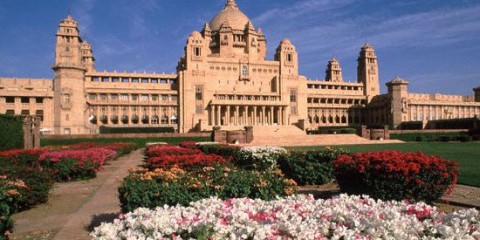
Rajasthan, North India, Architecture, Fort, History, Jodhpur, Musuem, Nature, Palace, Temple, Wildlife Sanctuary
Jodhpur is the second largest city of Rajasthan state, India. This place is famous for several temples, forts, Palaces. Other name of this city is Sun City. It was founded by Rao Jodha in 1459. He is the Rajput Chief of Rathore Clan. Major festivals of this place are Marwar festival, Jodhpur international Desert Kite Festival.
What to see in Jodhpur:
Mehrangarh Fort: In India, this is one of the largest forts. Within the fort there are several palaces. Most famous palaces of the fort were Sheesh Mahal, Phool Mahal, Moti Mahal, Daulat Khana, Sileh Khana. Major attractions of this fort are impressive armoury, furniture, costumes, instruments, folk music, miniature paintings, royal cradles, howdas, and collection of palanquins.
Girdikot & Sardarkot Market: This market is famous for fine Rajasthani Jewellery, marble knick knacks with decorative works, clay elephants, clay camels, handicrafts, Rajasthani Textiles.
Government Museum: It is located in the middle of Umaid Public Garden. This museum is famous for miniature paintings, local arts & crafts, textiles and ornaments. Other attractions of this museum are images of Jain Tirthankars, manuscripts, portraits of rulers.
Umaid Garden: Major attractions of this garden are fountains, seasonal flowers, roses, towering Ashoka Trees, Green Lawns. Area covered by this garden is 82 acres. Inside the garden visitors can see museum, a Zoo and a library.
Umaid Bhawan Palace: Maharaja Umaid Singh builds this palace with the intension to help the people who were suffering from famine. In 1977, part of this palace was converted into hotel. Remaining part was converted into museum.
Jaswant Thada: It was built in 19th century. White marble was used in the construction of Jaswant Thada. At this place visitors can see several portraits of Jodhpur rulers.
Maha Mandir Temple: Architecture of this temple is the major attraction of this temple. It was supported by 84 pillars. Pillars were decorated with several designs. Pictures of several Yogasanas can also be seen here.
What to see around Jodhpur:
Mandore: It is located 9kms away from the city. Earlier this place was acted as capital to Marwar. It is a true Oasis in the desert. This place is known as Hall of Heroes. Major attraction of this place is deities carved out of single rock.
Balsamand Lake & Palace: It is located 16kms away from the city. Lake is artificially made by man. It is one of the best picnic spot during the summer season.
Sardar Samand Lake and Palace: Earlier this place was acted as hunting spot by the royal families. Major attractions of this place are Chinkaras and black bucks.
Guda Bishnoi: It is located 25kms away from the city. This village is famous for flora and fauna. Local people worship Lord Vishnu and they lead vegetarian lifestyle. Major attractions of this place are Cranes, Peacocks, Chinkaras, antelopes, black bucks.
Rohetgarh: It is located 40kms away from Jodhpur. In 16th century this place was acted as Champawat Fort. Now it is converted into premium heritage hotels.
Getting to Jodhpur: Jodhpur is well connected with road, railway and airways. From Udaipur, Jaisalmer, Jaipur, Delhi, Ajmer, Ahmedabad, etc buses come to this place. Jodhpur railways are well connected with Kota, Bangalore, Chennai, Delhi, Mumbai, Jaipur, Lucknow, Guwahati, Puri, Ahmedabad. Jodhpur airport is well connected with Mumbai, Delhi, Udaipur and Jaipur.
Getting around Jodhpur: Buses and autos are available to visit the places in and around places of Jodhpur.
Best time to visit Jodhpur: Best time to visit Jodhpur is between November to March.
Where to stay in Jodhpur: Plenty of accommodations are available at Jodhpur to stay. Budget, midrange, luxury and heritage hotel are available to stay.
Where to eat in Jodhpur: Plenty of restaurants in Jodhpur. This place is famous for sweets. Famous sweets of this place are Maakhan Vade, Besan Ki Chaaki, and Mawa Kachori. Famous food is Mirchi Badas.
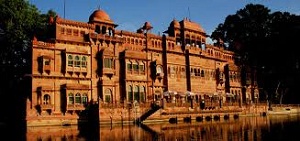
Rajasthan, North India, Architecture, Camal Safari, Fort, History, Musuem, Nature, Palace, Sand Dunes, Temple, Wildlife Sanctuary
Bikaner is a place in Rajasthan, India. Rao Bika was founded this city. This place is famous for snacks and sweets. Other name of this city is Camel Country. Major attraction of this place is Camel rides. Major festivals of this place are Camel Festival, Gangaur Festival, Kite festival, Kapil Muni fair, Holi, Jambeshwar Fair. This is one of the best places for shopping lovers also. Worth buying things are Nokha Quilts, wooden antiques, Kundan work fabrics, Lacquer Bangles, Jewellary, clothing’s etc.
What to see in Bikaner:
Jain Temple: This temple is dedicated to Shri Sumatinathji. He is the 5th Thirthankar. It was constructed in 15th century with white marble and sandstone. Major attractions of this temple are mirror work, fresco, leaf painting, Religious painting.
Junagarh Fort: Raja raj Singh founded this fort between 1588 to 1593. Major attractions of this place are Rang Mahal, Ganga Mahal, Dungar Mahal, Diwan-e-khas, Badal Mahal, Phool Mahal, Chandra Mahal, Hawa Mahal, Anup Mahal. Architecture of this fort is so beautiful.
Lalgarh Palace: In the memory of Maharaja Lal Singhji it was built by Maharaja Ganga Singh. European, Mughal, Rajput architecture can be seen on this palace.
Moolnayakji Temple: In Bikaner, this is the first Vaishnav Temple. It was built in 1486.
Ganga Golden Jubilee Museum: Major attractions of this place are antique carpets, Royal Bikaner Train, traditional Rajasthani musical instruments, terra cotta ware.
Laxminath Temple: It is one of the oldest temples of this place which was built by Rao Bikaji in 1488.
Deshnok Temples: Other name of this place is Karni Mata Temple. Silver door of this temple is one of the attractions of this temple. Rats feed here. In the temple premises rates can be seen.
Rajasthan State Archives: This place is well known for historical wealth records. Attractions of this place are Khatoot, Arzdasht , Vakil Report, Akbarat, Manshurs, Nishans, Persian Farmans.
Shiva Bari Temple: Major attractions of this place are Huge Idol of Lord Shiva and wall paintings of Nandi Bull facing Shiva lingam. Beautiful columns, Pavilions and domes are other attractions of this place.
Other attractions of Bikaner: Other attractions of Bikaner are Bhandeswari Jain Temple, Jain Havelis, Sadul Museum, Ganga Singh Museum, Prachina Museum, Gajneer Palace, and Camel Breeding Farm.
What to see around Bikaner:
Devi Kund: It is located 8kms away from Bikaner. Number of Cenotaphs can be seen here. Major attraction of this place is Chhatri of Maharaja Surat Singh. Rajput Paintings on the ceilings are also worth seeing.
Gajner Wildlife sanctuary: It is located 32kms away from Bikaner. Major attractions of this place are antelopes, desert foxes, wild boar, hares, wildfowl etc
Katariasar Village: It is located 45kms away from Bikaner. Herds of Partridges, Parrots, Peacocks, Rabbits etc can be seen here. Major attraction of this place is sand dunes. Fire dances looks so lovely.
Getting to Bikaner: Ways to reach this place is through road and railways. From Jaisalmer, Jodhpur, Jaipur etc buses come to this place. From Allahabad, Jaipur, Agra, Kolkata etc trains come to this place. Palace on Wheels so luxurious trains also connect this place. Nearest airport is located at Jodhpur which is 240kms away from Bikaner.
Getting around Bikaner: Tourists taxis, Rented Vehicles, Autos well connected different places of Bikaner. Buses and private vehicles are available to visit the surrounding places of Bikaner.
Best time to visit Bikaner: Best time to visit Bikaner is between November to February.
Where to stay in Bikaner: Plenty of hotels are available to stay in Bikaner. Forts, Havelis, Royal Palaces are available for royal treatment.
Where to eat in Bikaner: Plenty of restaurants are available to have food at Bikaner. Churma, Bati and Dal are famous food. Camel milk made sweets is also famous here.
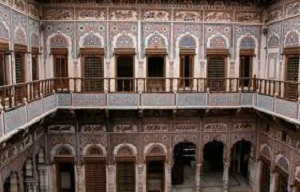
Rajasthan, North India, Architecture, Fort, Havelis, History, Jaipur, Masjid, Musuem, Nature, Palace, Temple
Shekhawati is a historical region in the northern part of the Rajasthan, India. This region consists of districts such as Nagaur, Churu, Sikar and Jhujhunu. History of these places dates back to 18th and 19th centuries. Grand Havelis in this region was constructed by Marwari Merchants. Shekhawati is derived from Rajput Kachwaha Chieftain Rao Shekha Ji. Rao Shekha ji decedents ruled this area. They were called as Shekhawats. This region is famous for hard working and brave people. Worth buying things of this place are metal utensils, Paintings, tie dye fabrics, wood carvings etc. Gangaur and Teej are the major festivals of this region.
What to see in Shekhawati:
Sikar: This is the major district of Shekhawati. Major Havelis of the town are Sanganeria, Kedia Haveli, Mirijamal Kyala, Bansidhar Rathi, and Sawant Ram Chokhani. Khatu Shyamji Temple is most famous in the village Khatu Shyamji. This temple is famous for shaving off the children’s hair for the first time. Other attractions of this district are jeen Mata Temple and Radha Murali Manohar Temple.
Churu: This place is famous for forts and Havelis. Traditional Rajasthani architectural style can be seen here. Major attraction is fort built by Thakur Khushal Singh. Other attractions are Raghunathji Temple, Aath Kambh Chhatri, Laxminarayanji Temple etc.
Nawalgarh: It is Golden city of Rajasthan. Major attractions of this place are Roop Niwas palace, Bansidhar Bhagat, Chokhani, Anandi Lal Poddar, Jodhraj Patodia etc.
Mandawa: Worth seeing havelis are Ganeriwala and Kanoria. It has good handicraft market.
Fatehpur: This place is famous for Singhania and Devra havelis. These were constructed in Western and Indian style. Other havelis of this place are Bharatiya, Jalan, Hukmi Chand Choudhri, Goenka.
Baggar: Piramal Haveli is famous here. Rajasthani Colonial style can be seen here.
Dundlod: This place is well known for havelis and forts. Impressive library and stained glass windows of the forts Diwan I Khas antiques are other attractions. Visitors should not miss to see Goenka haveli.
Lachhmangarh: Worth visiting place here are Sanganeria, Kedia, Rathi, Kyala, Chokhani Havelis.
Khetri: In Jaipur, this is the second wealthiest Thikana. Major attractions of this place are Panna Lal Shah Ka Talab, Bhopalgarh and Raghunath Temple.
Other attractions of this place are Churi ajitgarh, Parasrampura, Mehansar, Alsisar and Malsisar, Chirawa, Jhujhunu.
What to see around Shekhawati:
Chittorgarh: It is the ancient city in Rajasthan. A major attraction of this place is fort of Chittorgarh. It was built in 7th century AD. Height is 180metesrs tall. Other attractions are Rani Padmini Palace, Rana Kumbha Palace, Kalika Mata Temple.
Udaipur: It was founded by Maharana Udai Singh in 1559. Foreign tourist rush is more at this place. This place is known for its Palaces, Havelis and Temples. Other attraction is Azure Lakes.
Mount Abu: It is the only hill station in Rajasthan. Major attractions of this place are Dilwara Jain Temple which was constructed between 11th and 13th centuries. Other places are Achalagarh fort, Dattatreya Temple, Adhar Devi Temple, Ambika Mata Temple etc.
Getting to Shekhawati: Shekhawati is well connected with road and railways. Direct buses are available from Delhi. Places of Shekhawati are well connected with other cities. Trains are available from Jaipur and Delhi. It is easy to reach Shekhawati form Bikaner and Jaipur. Nearest airport is located at Jaipur which is 150kms away from Shekhawati.
Getting around Shekhawati: Private and government buses are available to visit the town and surrounding places of Shekhawati. Taxis and Autos are also available to visit in and around places of Shekhawati.
Best time to visit Shekhawati: Best time to visit Shekhawati is between October and March.
Where to stay at Shekhawati: Plenty of accommodations are available to stay at Shekhawati including luxury hotels. Resorts are also available to stay at this place.
Where to eat in Shekhawati: Plenty of eateries are available here. Though restaurants provide non vegetarian, Rajasthanis were basically vegetarians. Famous food is Lahsun Ki Kachori.
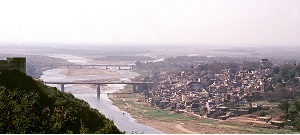
Jammu & Kashmir, North India, Fort, Musuem, Nature, Palace, Temple, Wildlife Sanctuary
Jammu is one of the 3 administrative divisions within Jammu & Kashmir. Most of the land at this place is hilly or mountains. Jammu Tawi is the official name of Jammu city. Other name of this city is City of Temples. In Northern India, it is the largest city. Pir Panjal Range separates Himalayas and Kashmir valley. This is acting as gateway to one of the popular pilgrimage Vaishno Devi temple. It is believed that, Raja Jambu has founded this city in 14th century BC. At that time this place was known as Jambu Nagar. For the shopping lovers also this is the best place. Worth buying things of this place is garments, electronics, footwear, dry fruits, handlooms, handicrafts etc. Major festivals of this place are Lohri, Baisakhi, Bahu Mela.
What to see in Jammu:
Bahu Fort: over 3000 years ago, this was built by Raja Bahulochan. Dogra rulers restored this fort in 19th century. Other attractions of this fort are Bahi Temple, Bhave Ki Bahu Garden, 8 octagonal towers. It was constructed with thick sandstone.
Amar Mahal Museum: Earlier this place was acted as residence place of Dogra dynasty. During 1890, this was built by King Raja Amar with Red Sand stone. Greek Structural style can be seen here. Major attractions are throne of Maharaja Hari Singh, Pahari Paintings, art galleries etc.
Mubark Mandi Complex: This is 150years old complex. It is the royal residence of Dogra rulers.
Bagh-e-Bahu: This is most beautiful garden and looks like Mughal garden. Acres of woods are surrounded this garden.
Dogra Art Museum: This museum is famous for 800 rare paintings and articles.
Shiv Khori: This cave is famous for 4 feet natural Shivalingam. Several Hindu deities and natural impressions can also be seen here.
Raghunath Mandir: In 1835, this was built by Maharaja Gulab Singh. This was dedicated to Lord Rama. It is famous for ancient books and manuscripts.
Bahu Temple: It is one of the ancient temples of this place. This was built by Raja Bahulochan about 3000 years ago.
Other attractions of Jammu: Other attractions of Jammu are Mansar Lake, Ranbireshwar Temple, Rani Charak Mahal, Mahamaya Temple, Dargah Garib Shah, Ziarat Baba Buddhan Shah, Poonch Fort, Peer Kho Cave Temple, Gadhadharji Temple, Aap Sambhu Temple.
What to see around Jammu:
Nandini Wildlife Sanctuary: It is located 28kms away from Jammu. It was established in thick forests area. Major attractions of this place are Chakor, Indian Peafowl, Blue Rock Pigeon, Cheer Pheasants, Red Jungle fowl, Indian Mynah etc.
Surinsar Lake: It is located 24kms away from Jammu. This is situated in the midst of thick forests with hilly terrains in the backdrop. Major attractions of this lake are lotus flower blossoms.
Akhnoor Fort: It is located 32kms away from Jammu. This is the ancient temple situated on the banks of Chenad River built in 19th century. It belongs to Harappan Civilisation. Along with this fort other attraction of this place is two storeyed Palace.
Getting to Jammu: Jammu is well connected with road, railways and airways. From Amritsar, Leh, Srinagar, Delhi etc buses are come to this place. Jammu Tawi railway station is well connected with Jhansi, Gwalior, Agra, Kochi, Indore, Bhatinda, Varanasi, Delhi, Mumbai etc. Jammu airport is well connected with airways also. It is located 7kms away from the city. Airways are well connected with Srinagar, Jaipur, Delhi, Mumbai etc.
Getting around Jammu: Minibuses are available to visit the places of Jammu. Autos and cycle rickshaws are also available to visit the places of Jammu. Buses and Taxis are available to visit the surrounding places of Jammu.
Best time to visit Jammu: Best time to visit Jammu is between March to October.
Where to stay in Jammu: Plenty of accommodations are available in Jammu including luxury hotels. Best Mid range holes are available at Residency Road.
Where to eat in Jammu: Plenty of restaurants are available to eat in Jammu. Continental, Indian and Kashmiri cuisines are available here.
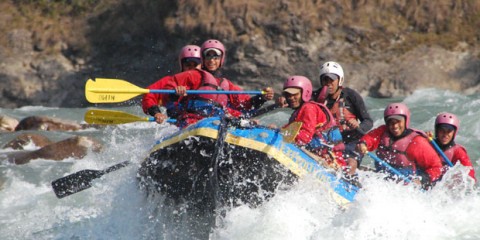
Jammu & Kashmir, North India, Adventurous sports, Buddhist Monestery, Buddhist Stupas, Buddhist temples, History, Ladakh, Lahaul and Spiti district, Musuem, Nature, Palace, Trekking, Valley
Ladakh is a beautiful region in Jammu and Kashmir, India. This place is also known as Land of High Passes. On the eastern side of the Ladakh Tibet is located, Lahaul and Spiti is situated in the South and Kashmir can be seen on the West. This place is dominated by Tibetan Buddhists and second majority religion of this place is Shia Muslims. This is one of the best places for the natural lovers. Plenty of Monasteries are situated here.
Ladakh is famous among the mountaineers and trekking lovers. Beauty of this region can be seen in barren mountains, clean blue sky and snow-capped peaks. For the first time Ladakhi Dynasty was founded here in 842 AD. This is the best place for shopping lovers also. Coral Jewellery, Pashmina, Hand woven blankets, wooden masks, copper samovars etc are worth buying at this place. Major festivals of this region are Spituk Gustor, Dosmoche Festival, Matho Nagrang, Stok Guru Tse Chu Festival, Buddha Purnima etc.
What to see in Ladakh:
Pangong Tso: This Lake is known for its scenic beauty. Last scene of the 3 idiots movie was shooted here.
Nubra Valley: It is high altitude desert which is well known for its beauty. This valley separates Karakoram and Ladakh.
Shanti Stupa: It has white domed monument with backdrop of brown mountains.
Leh Palace: This is the major attraction of this place. In 17th century this was acted as royal residence. Victory on the top of the Namgyal hill is another attraction. This tower was built as a mark of victory over Ballti Kashmir armies.
Stok: This is famous for its Buddhist Monastery. It also acts as gateway for several trekking activities. This is located 14kms away from Leh. Museum of this place attracts the tourists with collection of prayer instruments, copper coins, Precious heirlooms, and crown.
Magnetic Hill: Due to magnetic force of the hill cars will be pulled upwards. It is 27kms away from Leh.
What to see around Ladakh:
Leh: Leh is famous for pristine environment, Buddhist Palace and Scenic Locales. Tibet influence is more in this place. Leh Palace is looks like Potala Palace in Lhasa, Tibet. Major attraction of this place is Sankar Gompa.
Zanskar: This place is famous for flora and Fauna. In India it is one of the unexplored places. Zanskar is known for sparking rivers, snow capped Himalayan Mountains, Vistas of barren landscapes and pleasant climate. Other attractions of this place are river rafting, Paragliding and trekking.
Kargil: In the recent days this place became popular due to the war between India and Pakistan in 1999. It is located on the banks of Suru River.
Getting to Ladakh: Ladakh is well connected with Jammu and Srinagar through road. Buses of JKSRTC buses regularly come to this place. Visitors can reach Ladakh from Manali also. HRTC buses come to this place between July to October. Nearest railway station is located at Jammu Tawi. This is well connected with Mumbai, Kolkata and Delhi. Buses and cars are available to reach Ladakh from Jammu Tawi. Nearest airport is located at Leh.
Getting around Ladakh: Buses are available to visit the places in and around the region. Taxis and motorcycles are also available on rent to see the places of Ladakh.
Best time to visit Ladakh: Best time to visit Ladakh is between June to October.
Where to stay in Ladakh: Plenty of accommodations are available to stay in Ladakh. In Nubra Valley, hikers and camps are very common. In Korzok village, tourist’s camps can be seen.
Where to eat in Ladakh: Plenty of restaurants are available to eat in Ladakh. Marchwangan Korma and Momos are the specialities of Ladakh. Continental, Indian, Chinese, Korean, Tibetan cuisines are available.
Sarnath is a small village in Uttar Pradesh, India. Other name of this place is Isipatana. This place is most famous among the followers of Lord Buddha. At this place, Gautam Buddha first taught the Dharma. Original Sangha was formed at this place. It is one of the 4 major Buddhist destinations. People from Myanmar, Sri Lanka, Tibet, Japan, Thailand comes to this place. Deer Park is the major attraction of this place. This was built by Jataka King of Benaras. Major festivals celebrates at this place are Buddha Poornima, Basant Panchami, Maha Shivarathri and Makara Sankranti.
What to see in Sarnath:
Ashoka Pillar: This is one of the major attractions of this place. Height of this pillar is 50meters. This pillar is carved out of stone. On the top of the pillar 4 lions are situated. All are standing back to back. Pillar also consists of a horse, an elephant, a lion and a bull. This are symbols for the 4 different phases of life of Lord Buddha.
Archaeological Museum: This is famous for best collection of artifacts which are excavated from Archaeologists at this site. It was built in 1910 with 5 galleries. Those galleries are Ashutosh Gallery, Trimurti, Shakyasimha, Triratna and Tathagata Galleries. In this museum one can see the images of Lord Krishna, Lord Buddha, lord Ganesha etc.
Chaukhandi Stupa: This was built by Gupta dynasty in 5th century. This was built to mark the visit of Buddha to this place and he visited his first disciple at this place.
Deer Park: It is believed that at this place Lord Buddha proclaimed Dharma. King of Baneras gifted this forest area to build a park. Buddha taught two discourses at this place. They are Anattalakhana Sutta and Dhammacakkapavathana Sutta.
Thai Temple: This was built in Thai architectural style and it is surrounded by extensive gardens. It is administered by Thai Buddhist monks.
Tibetan Temple: Tibetan architectural style can be seen on this temple. Statue of Shakyamuni is situated here.
Mulagandha Kuti Vihar: This is the modern temple which was built by Mahabodhi Society. This is well known for frescoes from Buddhist literature.
Dhammek Stupa: It was built during Maurya Dynasty. Height is 43.6m. Floral carvings can be seen at the lower part of this stupa.
What to see around Sarnath:
Varanasi: This is most sacred place to Jains and Hindus. Varanasi exists before 3000 years ago. This place is famous for its Ghats and temples. Varanasi Attractions are Jantar Mantar, Bharat Mata Temple, Kashi Vishwanath Temple, Manikarnika Ghat, Durga Temple, Ramnagar Fort, Alamgir Mosque. It is located 11kms away from Sarnath.
Ramnagar: It is located 15kms away from Sarnath. This place is famous for fort museum. It consists of royal collections like antique clocks, ivory works, royal armour, royal palanquins, vintage cars.
Chunars: It is located 43kms away from Sarnath. This was famous for Chunars fort. It was built by Maharaja Vikramaditya. Major attractions of this fort are huge well, sun dial and Sonwa Mandap.
Getting to Sarnath: Sarnath is well connected with road. From Allahabad, Agra, Mathura, Kanpur, Lucknow buses come to this place. Nearest railway station is located at Varanasi which is 11kms away from Sarnath. Varanasi is well connected with all the major cities of India. Nearest domestic airport is located at Varanasi which is located 30kms away from Sarnath.
Getting around Sarnath: To explore the village there is no means of transport. One has to explore on foot. Taxis can hire from Varanasi to visit the places of Sarnath. Buses and taxis are available to visit the surrounding places of Sarnath.
Best time to visit Sarnath: Best time to visit this place is between October to March.
Where to stay in Sarnath: only budget and midrange hotels are available at this place. Ashrams provide accommodations along with food facility.
Where to eat in Sarnath: Good restaurants are available around the Sarnath temple.
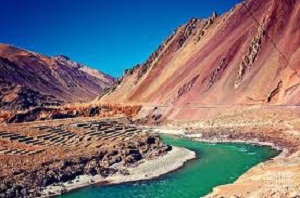
Jammu & Kashmir, North India, Adventurous sports, Buddhist Monestery, Buddhist Stupas, Buddhist temples, Fort, History, Musuem, Nature, Temple, Trekking
Leh is located in Leh district of Jammu and Kashmir, India. Leh is famous for pristine environment, Buddhist Palace and Scenic Locales. Tibet influence is more in this place. So Leh is also known as Little Tibet. It was once acted as Himalayan Kingdom of Ladakh. Leh Palace is looks like Potala Palace in Lhasa, Tibet. Major attractions of this place are Sankar Gompa and Shanti Stupa. It is one of the best places for adventurous sports. This is the best place for shopping lovers also. Worth buying things of this place are Thangka Paintings, Buddhist masks, Prayer Wheels, Ladakhi Jewellery, Knitted carpets, Chang Vessels, Cups, Shawls, Carpets, Hand-woven rugs, Ladakhi traditional dresses, etc. Major festivals of this place are Tak Tok, Harvest Festival, Sindhu Darshan, Dosmoche Festival, Hemis Festival, Losar.
What to see in Leh:
Leh Palace: This is the major attraction of this place. In 17th century this was acted as royal residence. Victory on the top of the Namgyal hill is another attraction. This tower was built as a mark of victory over Ballti Kashmir armies.
Namgyal Tsemo Gompa: It was built in 1430. Major attraction of this place are Frescoes, ancient manuscripts, 3 story high Buddha Statue.
War Museum: Other name is wall of fame. This museum showcases the war effort and Sacrifice of the Indian Army in its war against Pakistan.
Sankar Gompa: This place is famous for the statue of Avalokiteshwara Padmahari or Chenresig. This statue has thousands of heads and arms.
Chamba Temple: Maitreya is worshipped here. Statue of Maitreya is 14meters height.
Alchi Gompa: It is one of the largest gompa in Leh which is situated on the banks of river Indus. Best collection of paintings can be seen here.
Shanti Stupa: It has white domed monument with backdrop of brown mountains.
Zorawar Fort: It is above the Leh Palace and the Namgyal Tsemo Gompa stands the imposing Zorawar Fort overlooking the valley of Leh. Other name of this fort is Riasi Fort.
What to see around Leh:
Stok Palace: It is located 14kms away from Leh. Height is equal to 4 stories.
Hemis Gompa: In 1672 AD this was founded by King Senge Nampar Gyalva. Colourful festival celebrates in the month of July every year. Thousands of tourists come to this place, from across the world. It is located 40kms away from Leh.
Getting to Leh: Leh is well connected with road. To reach Leh there are two popular routes. One is from Srinagar via Kargil on Srinagar Leh Highway and other route is from Manali via Sarchu and Dharchu on the Manali Leh highway. Nearest railway station is located at Kalka. From this railway station, visitors have to reach to Manali via Shimla. From Leh, regular buses and taxis are available to reach Manali. Leh is having airport facility. This airport is well connected with Srinagar, Jammu, Delhi.
Getting around Leh: Best way to see the Leh is Trekking. Local buses are not available to visit the places of Leh. Bikes will be given for rent to explore Leh. Taxis and Jeeps are available to visit the surrounding places of Leh.
Best time to Visit Leh: Best time to visit Leh is between May and September. Most of the trekking routes closed during the winter season.
Where to stay in Leh: Plenty of accommodations are available to stay in Leh. Along with hotels, local guest houses, hiker’s huts, tourists complex, guest houses are also available to stay in Leh.
Where to eat in Leh: Plenty of restaurants are available to have food in Leh. Kashmiri dishes are famous at this place.
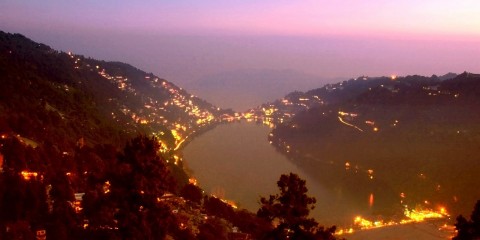
Uttarakhand, North India, Caves, History, Musuem, Nature, Shakti peethas, Temple, Trekking, Valley, Wildlife Sanctuary
Nainital is a popular hill station of Uttarakhand, India. Nainital is having its own place in the history. According to Skand Puranas, Nainital Lake is also known as Tri Rishi Sarovar. Three Sages are Pulaha, Pulastya and Atri. When these sages come to this place there are no water at this place, then they have kept a hole to have water.
What to see in Nainital:
Nainital Lake: It is located at the heart of the city. Town is derived its place due to this lake. Northern end of the lake is called Mallital and southern end is known as Tallital. Bridges connects these two ends of the lakes. It is eye shaped lake.
Naina Devi Temple: It is located at the banks of river Nainital. Major shrines of this temple are Lord Ganesha and Goddess Mata Kali. When Lord Shiva carrying the body of Goddess Sati, one of the body part of sati fell at this place. So this is considered as one of the Shakti peethas.
Governors House: Visitors can see Victorian Gothic Domestic style architecture at this place. It was built in 1899. FW Steven is the architecture of this House. It is two storied complex consists of golf links, a swimming pool, large garden and 113 rooms.
Eco Cave Gardens: It consists of musical fountain and 6 caves. This is the natural Garden.
Gurney House: Earlier this was the residence house of Jim Corbett. Museum of Corbett can be seen in this house.
Pt.GB Pant High Altitude Zoo: In India this is one of the high altitude zoo. Major attractions of this place are Serao, Snow Leopard, Siberian Tiger etc.
Tiffin Top: Other name is Dorothy’s seat. It is located on Ayarpatta hill. From this place visitors can have the best view of surrounding country side. It is a stone work picnic perch.
Naini Peak: It is the highest peak of the town.
Snow View: It is located on Sher-ka-danda Ridge. Visitors can reach this place by cable car. From this place visitors can have best view of Nanada Kot, Trisul, Nanda Devi and Snow peaked Himalayas.
What to see around Nainital:
Bhimtal Lake: It is located 22kms away from the town. This is the biggest lake of Nainital district. It is named after Bhima, one of the Pandavas. At this place one can see 17th century temple complex.
Khurpa Tal: It is located 10kms away from Nainital. This place is famous for angling. It is surrounded by terraced fields.
Sattal: It is located 23kms away from Nainital. Sattal means Seven Lakes. Each one is interconnected with each other. Most popular lakes are Ram, Sita and Laxman lakes.
Naukuchia Tal: It is located 26kms from Nainital. It is believed that if one takes in all nine corners in one glimpse, they can disappear into the smoke of clouds.
Jim Corbett National Park: It is located 63kms away from Nainital. Major attractions of this place are Common musk Shrew, Wild Boar, Chital, Tiger, Elephant etc.
Getting to Nainital: Nainital is well connected with road. From all the nearest cities buses come to this place. Nearest railway station is located at Kathgodam which is 34kms away from the town. From all the major cities trains come to this place. Pantnagar is the nearest airport located at 71kms away from the town. Taxis are available to reach Nainital from airport.
Getting around Nainital: Buses and Taxis are available to visit the surrounding places of Nainital.
Best time to visit Nainital: Nainital welcomes the tourists throughout the year.
Where to stay in Nainital: Plenty of accommodations available to stay in Nainital including luxury hotels. Best hotels are Classic The Mall, Balrampur House, Hotel Maharaja. Few resorts are also available here.
Where to eat in Nainital: Plenty of restaurants are available to eat in Nainital.
Jageshwar is a Hindu Pilgrimage. It is located in Almora district, Uttarakhand, India. Jageshwar is located in Kumaon region of Uttarkhand. This place is famous for temples dates back to 9th to 13th century. Town consists of 124 large and small stone temples. It is place of one of the 12 Jyotirlingas. Major festivals celebrates in this place are Jageshwar Monsoon Festival and Maha Shivratri Mela. Other name of this city is Temple city.
Temples of Jageshwar belongs to Pre- Medieval era and Post Gupta Era, according to Archaeological Survey of India. Based on this analysis temples of this place are 2500 years ago temples. In the temple complex of Jageshwar, once there were 400 temples but now visitors can see only 108 temples.
What to see in Jageshwar:
Jageshwar Temple: Lord Shiva Worshipped here in the form of Child. According to Hindu Mythology, Lord Shiva meditated here. When Lord to come to meditate here all the women wants to catch him, so all the men are jealous of this scene. To control the situation Lord took the form of a child.
Dandeshwar Temple: In the kumaon region, this is the biggest and largest temple. Major attraction of this temple is Dancing Shiva made out of rock which belongs to 18th century.
Vriddha Jageshwar: Lord Shiva can be seen in the form of age old person.
Vinayak Kshetra: This is the starting temple of Jageshwar.
Jhanker Sam Mahadev: It is believed that at this place Lord Shiva meditated. When Shiva was meditating demos try to disturb him then God Jhanker Sam sent his Ganas to kill demons.
Pushti Devi Temple: Other name of this temple is Pushti Bhagawati Maa Temple. Goddess Devi is worshipped here. It is located in the main premises of Jageshwar.
Kot Ling Mahadev: It is believed that Lord Shiva originally selected this place for meditation. This is 2kms away from Jageshwar Temple. Small Mountain is located here. Trekking activity leads to this temple.
Mahamrityunjaya Temple: This is the oldest temple in the temple complex. Entrance of this temple is so unique. It is in eye shape. Mahamrityunjaya Chant can be heard in this temple.
Archaeological Museum: Museum consists of 194 sculpture dates back to 13th century. Major sculptures are Navagraha, Surya and Uma Maheshwar Sculptures. Other attractive sculpture is Pona Raja. He was the local king. Raja is most respectable in Kumaon region.
What to see around Jageshwar:
Chitai Temple: Temple is dedicated to Golu Devta an incarnation of Gaur Bhairav. Thousands of bells can be seen in the temple. To fulfil the wishes, devotees donate brass bells to the Lord. It is located 29kms away from the town.
Binsar: This place is famous for Lord Shiva temple. Spectacular view of Nanda Devi is possible from here. It is located 54kms away from the town.
Getting to Jageshwar: Jageshwar is well connected with road. Plenty of buses come to this place from several cities. One bus route is through Kathgodam and Haldwani and other route is through Jim Corbett National Park. Nearest railway station is located at Kathgodam which is 128kms away from the town. Buses and Taxis are available to reach the town from Kathgodam. Nearest airport is located at Pantnagar which is 165kms away from the town.
Getting around Jageshwar: Temples of the village can be explored on foot. Taxis and buses are available to visit the surrounding places of Jageshwar.
Best time to visit Jageshwar: Best time to visit this place is from March to June and from September to November.
Where to stay in Jageshwar: Only few accommodations are available to stay in Jageshwar. Few Guest houses, a hotel, a forest lodge and a tourist rest house are available in Jageshwar.
Where to eat in Jageshwar: Only limited eateries are available to have food in this place. Famous foods of this place are Thalis and aloo Puri.
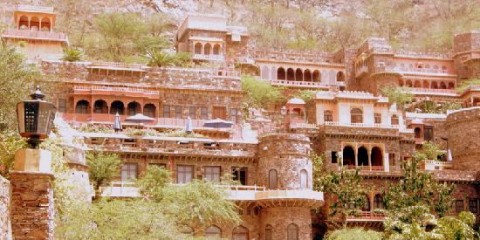
Rajasthan, North India, Architecture, Fort, History, Mughal, Musuem, Nature, Palace, Tomb, Wildlife Sanctuary
Alwar is a city of Alwar district of Rajasthan, India. Formally Alwar was the capital of Princely state of Alwar. In 1770, Pratap Singh has founded the princely state. Major attraction of this place is Sariska Tiger Reserve. To see this reserve both national and international tourists come to this place. For the shopping lovers also this is the best place. Double dyed Saris, Colourful bangles, artefacts, silver jewellery etc are worth buying at this place. Roaming through the old avenues in the town is most memorable experience.
What to see in Alwar:
City Palace: This was built by Raja Bhaktawar in 1793 AD. Mughal and Rajput style can be seen in this palace. In large central courtyard, bases are made up of lotus flower. Major attractions of this place are emerald cut drinking cup, Maharaja’s personal belongings, trinkets, artworks, etc.
Bala Quila: Bala Quila means young fort. Other name of this fort is Alwar fort. There are 446 holes for firing guns from this quila. It consists of 51 small towers and 15 large towers. Nikumbha Mahal Palace is located inside the quila.
City Palace Museum: This is located inside the city Palace. Royal elegance is preserved at this place. It is divided into 3 sections. Major attractions of this place are Mughal Paintings, Rajput Paintings, objects made up of Silver, Jade, Ivory, Rajput weapons etc.
Moti Doongri: This is famous for Lakshmi Narayan Temple, Ganesh temple and Swank Palace. It was once the residence place of Rajmata Gayatri Devi. Architecture of this structure is so unique.
Siliserh Lake: In 1845 AD this was constructed by Maharaja Vinay Singh. Now it was converted into heritage hotel. Plenty of migratory birds can be seen here. This is one of the best spots for anglers.
Vinay Vilas Palace: It is located near Alwar Fort. Earlier it was the residence of Maharaja Vinay Singh. Other name of this palace is Garden Palace. This was built in Mughal and Rajasthani Styles. Carved structures of this palace are so attraction.
Other places to visit in Alwar: Other places to visit in Alwar are Company Bagh, Bhangarh Fort, Moosi Maharani Ki Chhatri, Tomb of Fateh Jung, Vijay Mandir Palace, Purjan Vihar, Choohar Sidh Falls, Tripolia Imperial Mausoleum, Cenotaph of Maharaja Bakhtawar Singh.
What to see around Alwar:
Sariska Tiger Reserve: It is located 53kms away from Alwar city. This area is Rich in mineral resources such as copper. In the world this is the first tiger reserve. Major attractions of this place are Bengal tiger, Golden Jackal, Striped hyena, Caracal, Jungle cat, Leopard etc.
Karni Mata Temple: This temple is dedicated to Karni Mata who is an incarnation of Goddess Durga. Other name of this temple is Rats Temple. Nearly 20,000 rats can be seen here. Devotees offer sweets and milk to the rats.
Natni Ka Baran: This place is famous for ancient Shiva Temple. It is the ideal place for relaxation.
Other attractions near Alwar: other attraction near Alwar Garbhaji Falls, Krishna Temples, Talvriksha.
Getting to Alwar: Alwar is well connected with road and railways. From all the major cities state run buses and private buses come to this place. Alwar railway station is well connected with Delhi and Jaipur. Sanganer airport in Jaipur is the nearest airport to Alwar. This airport is located 162kms away from the city. Airport is well connected with Delhi and Mumbai. Taxis are available to reach Alwar from the airport.
Getting around Alwar: Autos and buses are available to visit the surrounding places of Alwar.
Best time to visit Alwar: Mild showers and moderate climate can be enjoyed between July to September. Best time to visit this place is between October to March.
Where to stay in Alwar: Plenty of hotels including luxury hotels are available to stay in Alwar. Cost of budget hotels is Rs.500 per day and cost of luxury hotels is between Rs.3000 to Rs.5000 per day.
Where to eat in Alwar: Plenty of eateries are available to have food at Alwar. Jain food is also available at this place. Famous food of this place is mirchi ka achaar, gajar ka halwa in pure ghee, allu parathas.
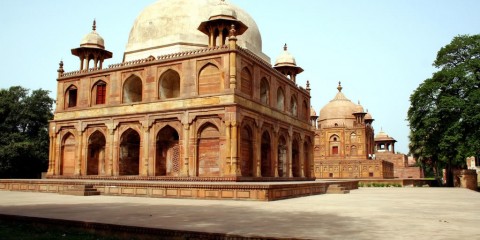
UP,North India, Architecture, Fort, History, Musuem, Palace, Temple, Tomb, Water Sports
Allahabad is a metropolitan city of Uttar Pradesh, India. Earlier name of this place is Prayaga which means place of offerings. In India this is the second oldest city. It is situated on the confluence of Ganga, Yamuna and Saraswati. This is one of the 4 sites where Kumbh Mela is held every 12 years. In Allahabad plenty of temples and Palaces can be seen. According to Hindu Mythology, Lord Brahma had chosen this place to perform Prakrista Yagna at the beginning of creation of the Universe.
What to see in Allahabad:
Kumbh Mela: It is a mass Hindu pilgrimage of faith in which Hindus gather to bath in a sacred river. Kumbh Mela conducts here for every 12 years in Allahabad.
Allahabad Fort: This fort is most attractive due to unique design, construction and craftsmanship styles. It consists of 3 galleries flanked by high towers. Inside the fort one can see Zenana, 3rd Century BC Ashoka Pillar and Mariam –UZ- Zamani Palace.
Khusro Bagh: This was built around the tomb of Khusro. He was the eldest son of Emperor Jahangir. This garden is most beautiful.
Anand Bhavan: In this mansion, Jawarharlal Nehru and Indira Gandhi were born. In the 19th century this was built by Motilal Nehru.
Allahabad Museum: Major attractions of this museum are terracotta artefacts, natural history exhibits and archaeological findings. It also consists of belongings of Jawaharlal Nehru.
Triveni Sangum: Once in every 6 years Ardh Kumbh held at this place. Once in 12 years Kumbh Mela held here. Most memorable thing is sun rise and sunset of this place. This is the place where confluence of Saraswati, Yamuna and Ganga takes place.
Bharadwaj Ashram: This is dedicated to Sage Bharadwaj. Other temple in this place is dedicated to Prayagraj. He is the lord of Prayag.
Minto Park: Lord Minto laid the foundation for this park in 1910. In this place power of East India Company transferred to British Crown in 1858.
Other attractions of Allahabad: Other attractions of Allahabad are Kalyani Devi Temple, Ashoka Pillar, Hanuman Mandir, All Saints Cathedral, Lalitha Devi Temple, Alfred Park, Shankar Viman Mandapam, Mankameshwar Temple, Swaraj Bhawan, Shivkoti Mahadev Temple, Allahabad Planetarium, Alepidevi Temple, Undying Banyan Tree, Allahabad High Court, New Yamuna Bridge, Mayo Memorial Hall, Jawahar Planetarium, Narayan Ashram.
What to see around Allahabad:
Jhusi: This place is famous among the people who are looking for spiritual healing and mental peace. Plenty of ashrams and temple are located here. It is situated on the banks of river Ganga. This is located 9kms away from the city.
Shringverpur: This place is having historical importance in the epic Ramayana. Shringverpur was once the capital of Kingdom of Nishadraj i.e. King of Fisherman. It is located 40kms away from the city.
Garhwa: This is attractive place for history lovers. Glimpses of ancient North Indian can be seen here. Gupta era temples are the major attraction of this place. It is located 60kms away from the city.
Bhita: It is archaeological site which is dates back to 300 BC. This place is situated 20kms from Allahabad.
Getting to Allahabad: Allahabad is well connected with road, railways and airways. From all the major cities buses and trains come to this place. Airport located in Allahabad is Bamrauli airport which is located 15kms away from the city centre. Airport is well connected with Lucknow and Varanasi.
Getting around Allahabad: Autos, taxis and buses are available to visit in and around places of Allahabad.
Best time to visit Allahabad: Best time to visit this place is between October to March.
Where to stay in Allahabad : Plenty of accommodations available in Allahabad. Hotels in the city offer trips around the city. Minimum cost of an economy room is Rs.1000 per day.
Where to eat in Allahabad: Plenty of restaurants are available to eat in Allahabad. Moghlai Cuisine of Allahabad is most famous.
Amritsar is one of the largest cities of Punjab, India. Guru Ramdas founded this city in 16th century. He was the 4th Sikh Guru. This is most sacred place for Sikhs due to the establishment of Golden temple. Along with Sikhs this place is popular among Hindus also as plenty of sacred temple are located here. City is named after Amrit Sarovar which is surrounding the Golden temple. Punjabi Juttis, woollen textiles, bangles, durries, carpets etc are worth buying at this place.
What to see in Amritsar:
Golden Temple: Golden Temple is the most sacred place to the Sikhs. Other name of this temple is Harmandir Sahib. Original temple was built by Guru Arjun, 5th Sikh Guru. Golden Temple Attractions are Central Sikh Museum, Amrit Sarovar, Marble Work, Holy Trees, and Shrines of Sikh Guru’s.
Akal Takht: It is located in Golden temple complex. Akal Takht means throne of immortal. It stands as a witness to Sikh idea of sovereignty.
Jallianwala Bagh: During the period of Independence struggle sad incident happened in this place. This is also known as Amritsar Massacre. On 13th April 1919, British troops fired on peaceful protestors. In this incident nearly 1100 people were killed.
Maharaja Ranjit Singh Museum: It is the summer palace of Maharaja Ranjit Singh. He is the first king of Sikh Empire. Major attractions of manuscripts, old coins, paintings, armours, arms belong to Maharaja Ranjit Singh.
Santokhsar Sahib: This Gurdwara is famous for Sarovar. In the history of Sikh this is the first Sarovar of its kind.
Bathinda Fort: It is one of the major attractions of Amritsar which was built by Bhatti Reo before 1800 years ago.
Bar Baba Buddha: It is inside the Golden temple. Under the tree Baba Buddha sits and meditated here.
Gurdwara Baba Atal Rai: It is 33m high nine storied octagonal tower. This is the tallest tower in Amritsar.
Rambagh Gardens: It was the summer palace of Maharaja Ranjit Singh. Major attractions of this park golden fish and fountains. It is now converted into Museum.
Gurudwara Guru Ka Mahal: This was the birth place of Baba Atal Rai.
Ram Tirth: This was the residence place of Saint Valmiki. Goddess Sita Given Birth to her sons Luv and Kush. Hut of the saint can be seen even now.
Gurdwara Santokhsar Sahib: It is one of the five historical sarovers constructed by Guru Arjan Dev Ji.
Other attractions of Amritsar: Other attractions of Amritsar Khalsa College, Hall Bazaar, Hanuman Mandir, Durgiana Temple, Maharajah Ranjit Singh Panorama, Gurdwara Pipli Sahib, Gurdwara Mata Kaulan, Khair-ud—Din Masjid, Gobindgrah Fort, Lal Devi Mata Mandir.
What to see around Amritsar:
Tarn Taran: It is located 22kms away from Amritsar. 5th Sikh Guru, Guru Arjan Dev ji built this Gurdwara. This place is famous for its sarovar. This sarovar is largest holy tank in the world.
Wagah Border: It is located 28kms away from Amritsar. Every evening before sunset, 40 to 45 minutes ceremony takes place here. It is the road border between India and Pakistan.
Gurudwara Chheharta Sahib: It is located 7kms away from the city. This was the birth place of 6th Guru of Sikh, Guru Hargobind Singh.
Getting to Amritsar: Amritsar is well connected with road, railways and airways. From Dharmasala, Chamba, Dalhousie, Chandigarh etc buses come to this place. From Delhi, Mumbai, Hyderabad etc trains come to hits place. Airport located in Amritsar is Sri Guru Ram Das jee Airport which is located 11kms away from the city centre.
Getting around Amritsar: Common modes of transport in the city of Amritsar are Cycle rickshaws and Autos. Golden temple trust is providing free bus service from the railway station to reach Golden temple.
Best time to visit Amritsar: Best time to visit this place is between November to March.
Where to stay in Amritsar: Plenty of accommodations are available at Amritsar.
Where to eat in Amritsar: Plenty of restaurants are available at Amritsar. Golden temple serves free food to nearly 40,000 people per day. Famous delicacies of this place are Chicken Tikka, Tandoori Chicken.
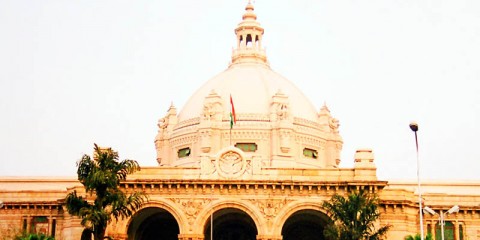
UP, North India, Architecture, Masjid, Musuem, Nature, Palace, Temple, Tomb, Wildlife Sanctuary
Lucknow is a city of Uttar Pradesh, India. It is a metro city. This place was nourished during the Nawabs period. Culture of Nawabs can be seen here. This place is also known as Golden City of the East. It is believed that city is named after Lakshman, brother of Lord Rama. Rama ordered Lakshman to rebuild a town. Now this is known as Lucknow. Chikan Embroidery is most famous at this place. Waist bands, nose pins, colorful bands etc are worth buying in this place.
What to see in Lucknow:
Chowk: It is the market place of Old Lucknow. This is the best place for the shopping lover.
Aminabad: This is another attraction for the shopping lovers. Major attractions of this place are fancy items, men’s chikan wear, ladies wear, fashion garments etc.
Bara Imambara: This place is well known for its Nawab architecture. In 1784, this was built by Asaf-ud-Daula. This complex consists of Step wells, gate ways, courtyards, mosques.
The Residency: To serve as the residence of the British Resident General this was established in 1800 AD. This became famous after Sepoy Mutiny in 1857. At that time 2000 soldiers died in this place. Graves of these soldiers are placed here.
Chattar Manzil: Beautiful European architecture can be seen here. As its dome is in the shape of umbrella it was named as Chattar Manzil.
Moti Mahal: Other name is Pearl Palace. This was built by Nawab Saadat Ali Khan during 1798- 1814. It was constructed as citadel, for watching enemy operations and for bird watching purpose.
Lucknow Zoo: Major attractions of this zoo are 97 different species of wild animals, 57 reptiles, 348 birds, 447 mammals. Indian Rhinoceros, Hoolock, Gibbons, Himalayan Black Bear, Royal Bengal tiger etc also can be seen here.
Ramakrishna Math: This is functioning from past 7 decades. Idols of this math are Swami Vivekananda, Mother Sarada Devi and Sri Ramakrishna. This math consists of garden. It was made up of Marble.
Aurangzeb’s Mosque: This is best example for Indo Muslim architecture.
Other attractions of Lucknow: Other attractions of Lucknow are Constania, Rumi Darwaza, Hazratganj Market, Shaheed Smarak, Begum Hazrat Mahal Park, Council house, 1857 Memorial Musuem, Chota Imambara, Gautam Buddha park, Juma Masjid, Husainabad Clock Tower, Satkhanda, Farangi Mahal, Shah Najaf Imambara, Dilkusha Kothi Palace, Sikander Bagh.
What to se around Lucknow:
Kukrail Forest Reserve: It is located 15kms away from Lucknow which was developed by Forest department. This place is famous for Crocodile Nursery and Deer farm. Rest house, Cafeteria, Children’s Park are other attractions of this place.
Nawabganj Bird Sanctuary: This is one of the best places for natural lovers as well as for the bird lovers. It is located 43kms away from Lucknow.
Crocodile Nursery: It is located 15kms away from Lucknow. This was established in 1978. Aim of this nursery was to protect the endangered crocodiles of the river.
Getting to Lucknow: Lucknow is well connected with road, railways and airways. From Dehradun, Delhi, Allahabad, Kanpur etc buses come to this place. From Kolkata, Chennai, Delhi, Bangalore, Mumbai, Thiruvananthapuram etc trains come to this place. From Mumbai, Jaipur, Bangalore, Chennai, Kolkata, Delhi flights come to Lucknow. Airport is located 14kms away from the city. Nearest international airport is located at Delhi which is located 497 kms away from the city.
Getting around Lucknow: Buses, Taxis, Autos and Tempos are available to see the places of Lucknow. Buses and Taxis are available to visit the surrounding places of Lucknow.
Best time to visit Lucknow: Best time to visit this place is between October to March.
Where to stay in Lucknow: Plenty of accommodations available to stay in Lucknow including luxury hotels. Along with hotels, guest houses are also available to stay at this place.
Where to eat in Lucknow: Plenty of restaurants are available to have food in Lucknow. Tundey Kebab is most famous food in Lucknow. Lucknawi Chat is world famous chat. Along with Indian, international cuisines are also available.
Mathura is located in North India, Uttar Pradesh, India. This was the birth place of Lord Krishna. Mathura has very important place in ancient history. According to Epic Mahabharata, Mathura was the capital of Surasena Kingdom. This kingdom was ruled by Kansa, uncle of Krishna. According to Garuda Purana, this place provides Moksha. Holi and Jamashtami celebrate so grandly in this place. Along with Hindus this place is prominent to Buddhists and Jains. Mathura Peda is most popular. Silver ornament is worth buying from this place.
What to see in Mathura:
Ghats: This place is most famous for Ghats. At present more than 25 Ghats can be seen here. All Ghats are associated with the life of Lord Krishna. People believe that dip taken in the Ghats will wipe of all the sins.
Jama Masjid: Architecture of this masjid is best example for the Mughals style. It was built in 1661 by Abo-in-Nabir-Khan.
Kusuma Sarovar: It is believed to be place where Radha along with gopikas used to collect flowers and meet Krishna. Visitors conduct aarthi in the evening at this place. Ghats consist of plenty of flora and fauna.
Rangbhoomi: It is located opposite to the post office of Mathura. In this place war took place between King Kansa and Lord Krishna.
Bhuteshwar Mahadev Temple: It is one of the oldest temples of Mathura. This temple was dedicated to Lord Shiva. Temple consists of cave of Patal Devi. She was worshipped by King Kansa.
Mathura Museum: Major attractions of this museum are copper, gold and silver coins, terracotta, sculptures, artefacts belongs to Gupta and Kushan period dates back to 400 BC to 1200 AD.
Sri Krishna Janmasthan: It is the birth place of Lord Krishna. Temple is divided into 3 parts. They are Bhagvata Bhavan, Keshavadeva and Garbha Griha.
Jai Gurudev Ashram: It is one of the famous tourist’s spot of Mathura. Architecture of this temple looks like Taj Mahal.
Other attractions of Mathura: Other attractions of Mathura are Vishram Ghat, Sri Keshavji Gaudiya Math, Kans Qila, Mathura Jain Chorasi, Govinddeo Temple, Potara Kund, Dwarikadheesh Temple, Krishnajanmabhoomi Temple, Raja Bharapuras Palace.
What to see around Mathura:
Radha Kund: It is located 25kms away from Mathura. It is believed that, in this place Krishna and Radha spent their happy time. In this place Krishna killed bull demon.
Govardhan Hill: According to the legends, Lord Krishna lifted the hill for seven days during the great flood. It is located 25kms away from Mathura.
Shyam Sunder Temple: It is located 11kms away from Mathura. Idol of this temple is self manifested image of Radha.
Vrindavan: It is located 11kms away from Mathura. According to Hindu Mythology, Lord Krishna spent his childhood place in this town. Vrindavan Attractions are ISKCON Temple, Bankey Bihari Temple, Yamuna River, Seva Kunj and Nidhuban, Kesi Ghat, Shahji Temple.
Other attractions near Mathura: Other attractions near Mathura are Gopishvar Mahadev temple of Vrindavan, Sri Radhavallabh Vrindavan Temple, Gita Temple.
Getting to Mathura: Mathura is well connected with road and railways. From Kolkata, Pune, Mumbai, Nagpur, Gurgaon, Jaipur, Lucknow etc buses and trains come to this place. Nearest airport is Kheria in Agra which is located 57kms away from Mathura.
Getting around Mathura: Buses and Taxis are available to visit the surrounding places of Mathura.
Best time to visit Mathura: Best time to visit this place is between October to March. During the summer season temperature is too hot.
Where to stay in Mathura: Few budget and mid range hotels are available in Mathura. Few lodges are also available near railway station. Apart from lodges, hotels, Dharmasalas are also available in Mathura.
Where to eat in Mathura: Best restaurants are available to eat in Mathura. Only Vegetarian food is available. Mathura Peda and Chaat are most famous in Mathura.
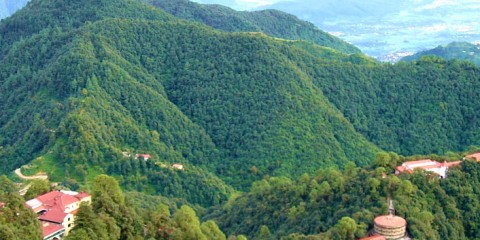
Uttarakhand, North India, Architecture, Hill station, History, Musuem, Nature, Temple, Trekking, Valley, Wildlife Sanctuary
Almora is a cantonment region in Almora district of Uttarakhand, India. This place is considered as cultural heart of Kumaon region. It is most popular hill station situated at a height of 6000meter above the sea level. This place is starting point for trekking to Ranikhet, Binsar, Mukteshwar, etc. During the rule of Chand dynasty, Almora was founded by Kalyan Chand in 1568. Nanda Devi festival, Uttaryani Festival, Jageshwar Monsoon festivals are most famous festivals in this place.
What to see in Almora:
State Museum: Other name of this museum is Govind Ballabh Pant Museum. Major attractions of this museum are artifacts belong to Katyuri dynasty and Chand dynasty. Another attraction of this museum is folk paintings. Two galleries can be seen here. One is Manav Vikas Ki Katha and Ganga River Culture Gallery.
Chaitai Temple: This temple is dedicated to Lord Gollu who is an incarnation of Gaur Bhairav. Wishes of devotees write on the paper and they will keep on the foot of the Lord. People believe all their wishes will fulfil.
Nanda Devi Temple: In the Kumaon region it is one of the most famous temples. Kumaoni style can be seen in the temple. This temple is dates back to 1000 years. Stone carvings on the walls of the temple are another attraction of this temple.
What to see around Almora:
Deer Park: It is located just 3kms away from Almora. This the best place for evening walk. Major attractions of this park are Himalayan Black bear, Leopard and deer. Pine trees welcome the visitors to this place.
Bright End Corner: It is located 2kms away from Almora. Sunrise and sunset are most beautiful from this place. Shri Ramakrishna Kutir Ashram is a centre for meditation is so famous. Vivekananda Library is another attraction of this place.
Simtola: It is located 3kms away from Almora. Once granite hill and diamond mining are attractions of this place but now this place was covered with fur and pine trees.
Kalimath: It is located 5kms away from Almora. Name is derived from the words Kali and Math. Kali means black and Math means soil. Spectacular view of Himalayas is possible from this place. Another attraction of this place is Kasar Devi temple which is dedicated to Goddess Kali. This temple dates back to 2nd century.
Katarmal Sun Temple: This temple is dedicated to Lord Sun which is located 16kms away from ALmora. After sun temple in Konark, this temple got second importance. This temple dates back to 800 years. Architecture is so attractive.
Jageshwar: It is located 24kms away from Almora. This is one of the 12 Jyothirlingas. Main temple is dedicated to Lord Shiva. This place consists of 124 shrines. Temple complex consists of 104 shrines dates back to 8th century to 18th century.
Sadar Bazaar: It is situated in Ranikhet which is located 53kms away from Almora. This is the best place for shopping lovers. Major attractions of this place are dry fruits, traditional jewellery, wooden bangles, garwali shawls, blankets, carpets, readymade garments, handicrafts etc. Apart from shops, plenty of hotels and restaurants are also located here.
Getting to Almora: Almora is well connected with road and railways. From Ghaziabad, Thane, Ludhiana, Mumbai, Delhi, Kanpur, Jaipur etc buses and trains come to this place. Nearest airport is located at Pantnagar which is 125kms away from Almora. This airport is well connected with Delhi. Nearest international airport is at Delhi.
Getting around Almora: As Almora is very small town, visitors can see the places on foot. Buses and taxis are available to visit the surrounding places of Almora.
Best time to visit Almora: Best time to visit this place is between March to November.
Where to stay in Almora: Only Budget and midrange hotels are available to stay in Almora. Almost all the hotels are located in Link road and Mall Road.
Where to eat in Almora: Eating options are limited in Almora. Most famous sweet of this place is Bal Mithai.
Varanasi is a city in Uttar Pradesh India. Other name of this place is Banaras. This is most sacred place to Jains and Hindus. Hindu devotees believe that death in Varanasi leads to salvation. According to Hindu Mythology, this city was founded by Lord Shiva. This place is considered as oldest Living city on the earth. This is the birth place for 7th Jain Thithankar Suparshv Nath Ji and 23rd Tirthankar Parshva Nath Ji. Varanasi exists before 3000 years ago. This place is famous for its Ghats and temples.
What to see in Varanasi:
Jantar Mantar: In 1737 this was constructed by Jai Singh, Maharaja of Jaipur. He was so passionate towards science and technology. To determine eclipse, declination of stars, sun and planets and to measure the local time this was constructed.
Bharat Mata Temple: It is located in Mahatma Gandhi Kashi Vidyapeeth. Mother India worshipped here. Idol was built with marble and it was inaugurated by Mahatma Gandhi. Architecture of this temple is so beautiful.
Kashi Vishwanath Temple: This is the major attraction of this place. Kashi Vishwanath incarnation of Lord Shiva is worshipped here. In 1780 this was constructed by Late Maharani Ahilyabai Holkar. Domes of the temple covered by Gold.
Manikarnika Ghat: It is one of the oldest Ghats of the city. Shiva Durga temple near this ghat is so famous. Footprints of Vishnu, Charanapaduka, can be seen here.
Dasaswamedh Ghat: This is one of the most important Ghats on the banks of river Ganges. Evening Aarti at the Ghats attracts many devotees.
Durga Temple: Nagara style of architecture can be seen on this temple. Other name is monkey temple. Durga Ghat is located very near this temple.
Ramnagar Fort: This was built by Maharaja Balwant Singh in 18th century. Red stone was used to build this fort. Museum and temples are located inside the fort premises. One of the Temples is dedicated to Ved Vyasa, author of Epic Mahabharata.
Alamgir Mosque: It is the largest structure on the banks of river Ganga. It is believed that, earlier Lord Krishna temple was situated in this place.
Other attractions of Varanasi: Other attractions of Varanasi are Banaras Vidya Mandir, Assi Ghat, Tulsi Ghat, kedar Ghat, Shivala Ghat, Harishchandra Ghat, Panchaganga Ghat, Hanuman Ghat, New Vishwanath Temple, Alamgir Ghat, Man Mandir Ghat, Darbhanga Ghat, Ramnagar Museum, Gyan Kup well, Vishnu Charanapaduka, Tulasi Mana Temple.
What to see around Varanasi:
Dhamek Stupa: It is located 13kms away from Varanasi. This was built in 500 CE. In this place, Buddha gave the first Sermon to his five disciples after attaining enlightment.
Chaukhandi Stupa: It is one of the famous stupas of Buddhism. This is located in Sarnath. It is located 13kms away from the city. This was constructed between 4th to 6th centuries. In this place, Lord Buddha’s first disciples met travelling from Bodh Gaya to Sarnath.
Getting to Varanasi: Varanasi is well connected with road and railways. From Kolkata, Bangalore, Chennai, Patna, Ranchi, Noida, etc trains come to this place. From Allahabad, Vijayawada, Baroda, Noida, Patna, Ranchi etc buses come to this place. Best flight facility is also available to Varanasi. From Visakhapatnam, Lucknow, Chennai, Bangalore, Hyderabad, pune, Vijayawada etc flights come to Varanasi.
Getting around Varanasi: Buses and Private vehicles are available to visit the surrounding places of Varanasi.
Best time to visit Varanasi: Varanasi welcomes the visitors throughout the year.
Where to stay in Varanasi: Plenty of accommodations available to stay in Varanasi including luxury hotels. Best hotels in Varanasi are Siddhartha Hotel, Gateway Hotel Ganges, Surabhi International, Pradeep Hotels.
Where to eat in Varanasi: Plenty of restaurants are available to have food in Varanasi. Indian, Chinese, Continental cuisines are available along with local cuisines. Only vegetarian food is available.
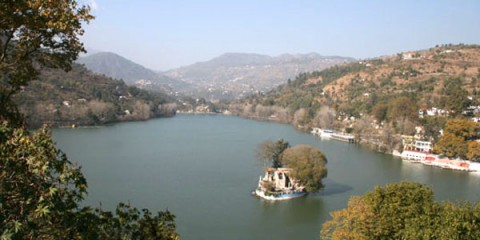
Uttarakhand, North India, Adventurous sports, Lake district of India, Musuem, Nature, Temple, Trekking
Bhimtal is a small town in Nainital district of Uttarakhand, India. This place is named after Bhima of Mahabharata. Bhimtal is known for Bhimtal Lake. At the banks of this lake, visitors can see Bhimeshwara Mahadev Temple. It is believed that this was built by Bhima when he was visited this period during their exile. After Anglo Nepalese War this place came under the rule of Britishers.
Visitors can enjoy the beauty of this place. Climate is so pleasant throughout the year. Boating is one of the major attractions of this place. Other activities of this place are Paragliding, Rappelling, Trekking, and Angling. Fishing can be enjoyed here. Worth buying things of this place are Wood carvings and handmade candles. Unique designs of bead Jewellery can be seen here. Other shopping attractions of this place are carpets, statues, Garhwali Paintings.
What to see in Bhimtal:
Bhimeshwara Mahadev Temple: This temple is dedicated to Lord Shiva. It is believed that this was built by Bhima, one of the brothers of Pandavas. But present temple was built by Baz Bahadur with the help of Raja of Kumaon in 17th century. Baza Bahadur was the king of Chand dynasty.
Folk Culture Museum: In this museum information about rituals, traditional rites, stone implements is available. Major attractions of this place are reproduction of rock art, Photographs, artefacts. Other name of this museum is Lok Sanskriti Sangrahlaya.
Victoria Dam: It is located on Bhimtal Lake. On either side of the dam one can see beautiful flower gardens. Near to this , visitors can find Bhimeshwar Temple. Visitors can have a walk at huge forests. Height of the dam is 40 feet. Wild flowers used to decorate gorge. Thousands of the tourists come to this place every year.
Aquarium on the Island on Bhimtal: Bhimtal Lake has an Island. Earlier one restaurant located in this island. Now it was closed due to pollution reasons. At present aquarium was created in that place. Fishes of the aquarium brought from Mexico, South Africa and China.
What to see around Bhimtal:
Hanuman Garhi: It is located in Nainital of Tallital which is located 21kms away from the town. Main deity of this temple is Lord Hanuman. Sun set over Himalayan can be seen from this place.
Hidimba Parvat: It is located 5kms away from Bhimtal. This place is named after Hidimbi who was the demon wife of Bhima (one of the Pandavas). Vankhandi Maharaj developed refuge for wild animals. He was a monk and an environmentalist.
Nag Temple: During Rishi Panchami thousands of devotees come to this place. In Uttarakand this is one of the Nag Temples. It is located 2kms from Bhimtal.
Sat Tal: It is located 14kms away from the town. This is compared with Westmoreland area of England. Hill near this lake is known as Hidimba Parvat.
Nal Damyanti Tal: It is natural and most sacred lake which is located 2kms away from the town. It is believed that King Nal lost his palace into this lake.
Getting to Bhimtal: Bhimtal is well connected with road and railways. From Kathgodam, Delhi private and government run buses are available to reach Bhimtal. From Hyderabad, Agra, Ghaziabad, Gurgaon, Delhi etc trains come to this place. Nearest airport is located at Pantnagar which is 56kms away from the town.
Getting around Bhimtal: Dollies, Cycle rickshaws are available to visit the place of Bhimtal. Private Taxis are available to visit the surrounding places of Bhimtal.
Best time to visit Bhimtal: Best time to visit Bhimtal is between March to June and between September to December.
Where to stay in Bhimtal: Good accommodations are available to stay in Bhimtal including luxury hotels. Near Satvik Sadan, midrange hotels are available.
Where to eat in Bhimtal: Plenty of eating options in Bhimtal. Indian, Italian, Chinese, Continental cuisines are available.
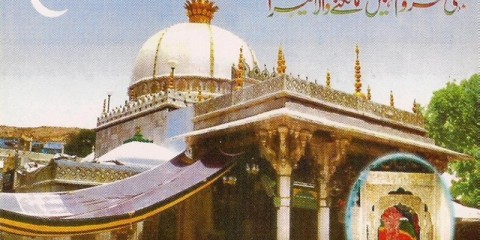
Rajasthan, North India, Fort, History, Masjid, Miniature Paintings, Musuem, Nature, Palace, Temple, Tomb
Ajmer is 5th largest city in Rajasthan, India. Aravalli Mountains covers this city. This is the holy place for both Hindus and Muslims. For Muslims, this place is famous for Dargah of Sufi Saint Khwaja Moin-Ud-Din Chishti. For Hindus this place is well known for several ancient temples. Other attractions of this place are Palaces, Museums, Lakes and forts. This place was founded by Ajaipal Chauhan in 7th century. He belongs to Chauhan dynasty. Most famous for shopping at this place is Bandhani Sari. Major Shopping centres of this place are Dargarh bazaar, Kesarganj, Chudi Bazaar, Naya Bazaar, Mandar Gate.
What to see in Ajmer:
Dargarh Sharif: Tomb of Khwaja Muin-ud-din Chishti is placed here. Silver doors welcome the visitors. It was constructed by Humayun with white marble. Tomb has inscriptions and 11 arches.
Taragarh: It is located on Nagarjuna hill of Ajmer. This is first hill fort of Asia. It is one of the oldest hill forts of the world. 3 gateways to the fort. Major attraction of this fort is Canons. Many reservoirs are placed in the fort.
Archaeological Museum: It is located in Dil-e-Aaram Gardens. Collection of sculptures is the major attractions of this museum.
Ana Sagar Lake: This is an artificial lake built by Anaji Chauhan dates back to 1135 – 1150 AD. Daulat Bagh Gardens located near this lake is so beautiful.
Foy Sagar Lake: It is another artificial lake constructed in 1891. This is the best place for the natural lovers.
Rani Mahal: It is located in Taragarh Fort. Typical Rajasthani Architecture style can be seen here.
Nasiyan Jain temple: This temple is popularly known as Red Temple which is decorated with Silver and gold plates. Rishabh, First Jain Tirthankar is worshipped here.
Akbar’s Palace and Museum: Akbar Palace converted into Museum. Major attractions of this museum are arms, stone sculptures and paintings of the medieval period.
Other attractions of Ajmer: Other attractions of Ajmer are Mayo College and Museum, Adhai-din-ka Jhopra, Ajmer government Museum, Bhagchand Ki Kothi, Anted Ki Mata Temple, Akbarki Masjid, Sola Khamba.
What to see around Ajmer:
Pushkar Lake: It is located in Pushkar which is located 14kms away from Ajmer. People believe that dip in this lake will wipe off all the sins and skin diseases.
Brahma Temple: It lies in Pushkar Valley which is located 14kms away from the city. Temple is decorated with silver coins. This was built of marble and stone stabs. Constructed in 14th century. Lord Brahma Worshiped here.
Kishangarh: This town is located 27kms away from the city. Miniature paintings are the major attractions of this place. Roopangarh fort is another attraction which was built by Maharaja Roop Singh in 1649. Fort consists of several palaces. It is known for its architectural style.
Other attractions near Ajmer: Other attractions near Ajmer are Savitri Temple near Brahma Temple, Mahadev Temple, Mangliyawas, Varah Temple.
Getting to Ajmer: Amer is well connected with road and railways. From the cities such as Bharatpur, Jaisalmer, Jodhpur, Udaipur, jaipur etc buses come to this place. From Udaipur, Gwalior, Bhuj, Mumbai, Haridwar, Indore, Delhi, Ahmedabad etc trains come to this place. Nearest airport is located at Jaipur which is 137kms away from Ajmer. Airport is well connected with Nanded, Hyderabad, Kolkata, Mumbai, Delhi, Chandigarh, Chennai etc.
Getting around Ajmer: Tempos are available to visit the city. Buses, Taxis are available to visit the surrounding places of Ajmer.
Best time to visit Ajmer: Best time to visit Ajmer is between October to March.
Where to stay in Ajmer: Plenty of accommodations available in Ajmer. Along with hotels tourists bungalows are also available to stay in Ajmer.
Where to eat in Ajmer: Plenty of restaurants are available to have food in Ajmer. Italian, Continental, Chinese, Mughalai cuisines are also available to have along with local cuisines.
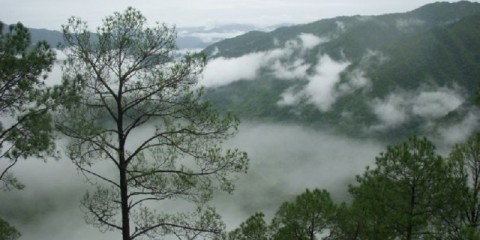
Uttarakhand, North India, Boating, History, Musuem, Nature, Temple, Trekking, Valley
Lansdowne is a cantonment town in Pauri Garhwal district of Uttarakhand, India. This place is named after Lord Lansdowne, Viceroy of India in 1887. For the recruit training centres of Garhwal Rifles this place was developed by the Britishers. It is one of the hill stations in India. This place is surrounded by thick pine and oak forests. Earlier name of this place is Kaludanda. Most ancient temples are located here. One of those famous temples is Tarkeshwar Mahadev Temple. This is the best place for natural lovers. Boating, Bird watching, Trekking can enjoy here. Mahashivratri celebrates so grandly here.
What to see in Lansdowne:
Tip In Top: This is situated near St.Mary’s Church. Spectacular view of snow covered Himalayas can enjoy from here. Trekking takes place here.
The Garhwal Rifles Regimental War Memorial: This museum was founded by Lord Rawlinson of Trent on 11th November 1923. Major attraction of this place is war Memorial in the Parade Ground.
Tarkeshwar Mahadev Temple: It is one of the most ancient temples of the country. Lord Shiva is worshipped here.
Regimental Museum: This was established in 1983. It is named after Darban Singh Negi. Major attractions of this place are antique pieces belongings to Garhwal Rifles.
Bhulla Tal: This is an artificial lake. Bhulla means younger brother. Paddling and Boating can be enjoyed here. Other attractions of this place are fountains, bamboo machan and Children Park.
Garhwali Mess: In 1988, this was built by the Britishers. It is one of the oldest buildings in this hill station. This is the important museum in Asia. Major attractions of this museum are trophies, furnishings, skin of wild animals.
Lover’s Lane: It is one of the best trekking places. From these places visitors can enjoy the beauty of Himalayan peaks on one side and beauty of blue pine trees and oak trees on other side.
Hawaghar: It one of the beautiful places in the town. For Trekking this is the best place. To enjoy the beauty of the nature this is the best place.
St.Mary’s Church: This was constructed in 1895. Now this is converted into museum. Major attractions of this place are Pictures of Pre-independence era and audio visual displays of the history of the regiment.
What to see around Lansdowne:
Durga Devi Temple: It is located 25kms away from the town. Goddess Durga is worshipped here. Temple is situated inside the cave. It is one of the oldest Sidh Peeths.
Bhim Pakora: It is located in Dhura which is 14kms away from the town. It is believed that, during the period of exile, Pandavas stopped here and cooked food. Bhim placed one rock on other. It is so balancing.
Getting to Lansdowne: Only way to reach this place is through road way. From Pauri, Gopeshwar, Nainital etc buses come to this place. Nearest railway station is located at Kotdwar which is 37kms away from the town. From Puir, Bangalore, Kolkata, etc trains come to this place. Taxis are available to reach the Lansdowne town from Kotdwar. Jolly Grant airport at Dehradun is the nearest airport which is 150kms away from the town. Taxis are available to reach the Lansdowne town from airport.
Getting around Lansdowne: Seeing the town on foot is the best option. Cabs are also available to see the places in the town. Buses and taxis are available to visit the surrounding places of the town.
Best time to visit Lansdowne: Town welcomes the visitors throughout the year. But winter is too cold. Best time to visit this place is between March to November.
Where to stay in Lansdowne: Limited accommodations are available to stay in this town. Apart from hotels, Dharmasalas maintained by the Mahadev temple management, Army Welfare board rest house are also available to stay in the town. Tourist rush is more between May and June. Advance booking is essential in those days
Where to eat in Lansdowne: Limited eating options in the town. Continental, Chinese and Indian cuisines are available. Parathas and Momos are popular at this place.
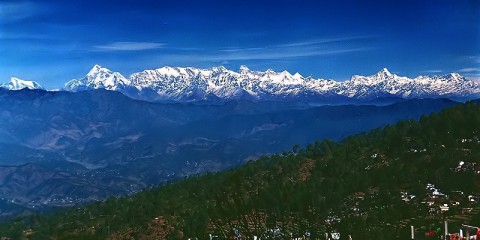
Uttarakhand, North India, Caves, Hill station, History, Hot Springs, Musuem, Nature, Tea Garden, Temple, Trekking,Valley, Water falls
Kausani is a hill station in Bageswar district of Uttarakhand, India. This place is famous for its scenic beauty. Mahatma Gandhi called this place as Switzerland of India. On either side of the Kasauni, visitors can see the beauty of Gomti River and Kosi River. Visitors can have the spectacular view of Panchuli, Nandadevi, Trishul peaks of Himalayas. Trekking and high flavour tea is most famous in this place.
What to see in Kausani:
Anasakti Ashram: Mahatma Gandhi stayed at this place. He penned the commentary on Anashkti Yog. Other name of this Ashram is Gandhi Ashram. Now it is converted into Study cum Research centre.
Lakshmi Ashram: In the year 1948, this Ashram was founded by Catherine Hillman. He became most popular with the name Sarlaben. He was the disciple of Mahatma Gandhi. Ashram is running boarding school for the girls at the foot hill of Kausani. Other name of this Ashram is Sarla Ashram.
Sumitranandan Pant Gallery: This is dedicated to Hindi Poet Sumitranandan Pant. Kausani is the birth place of this poet. Museum consists of awards received by him, manuscripts of the poems and draft copies of his literacy.
Planet Show: It is a planetarium cum internet cafe. Stargazing is an option for the tourists, when clear night sky is available. In the show astronomers explain about astronomy to the visitors of this place.
What to see around Kausani:
Pinnath: It is located 5kms away from the town. This place can be reached by trekking. Indian arch which has representations of the Pandavas on its sides, form the roof of the portico.
Rudrahari Mahadev Temple: It is located 8kms away from the town. It is an ancient cave temple. It is believed that Rishi Kaushik meditated here for a long time.
Kausani Tea Estate: World famous Kausani Tea is produced here. Major exports of this tea are to United States, Korea, Germany and Australia. Visitors can see the manufacturing process of tea. Area covered by this estate is 208 hectares.
Rudradhari Falls and Caves: It is located 12kms away from the town. Trekking can be used to reach this place. Valley flows as small springs and rivers.
Someshwar: Lord Shiva temple of this place is most famous. Beauty of Someshwar Valley can be enjoyed from here. It is located 12kms away from the town.
Baijnath Temple: It is located 16kms away from the town. This temple was constructed in 12th century which is situated at the town Baijnath and on the banks of Gomti River. According to Hindu Mythology, Lord Shiva and Parvati got married at the confluence of River Gomti and Garur Ganga. Other attraction of this town is Maheshsur Mardini.
Getting to Kausani: Kausani is well connected with road and railways. From Pithoragarh, Nainital, Ranikhet, Almora etc buses come to this place. From Delhi, Lucknow, Jaipur, Ghaziabad, Kanpur etc trains come to this place. Nearest airport is Naini Saini airport at Pithoragarh which is located 112kms away from the town. Taxis are available to reach the town from the airport.
Getting around Kausani: Horse drawn Carriage or Tonga is the best means of transport in Kausani. Places in Kausani can see on foot. Buses and taxis are available to visit the surrounding places of Kausani.
Best time to visit Kausani: As the region is so slippery it is advisable not to reach this place during rainy season. Best time to visit this place is between September to May.
Where to stay in Kausani: Resorts, midrange and budget hotels are available to stay at this place. Rest house is maintained by Kumaon Mandal Vikas Nigam. Accommodation is also available in Ashrams.
Where to eat in Kausani: Eating options are very limited in the town. In-house restaurants of hotels are the best option to have food in Kausani.
Barmer is located in Rajasthan, India. Name Barmer is derived from Bar Rao Parmar. He was the founder of the town in 13th century. Western part of the state forms part of Thar Desert. This place is known for historical sites. Barmer is also famous for music, dance and crafts. When visitors are approaching to this place, visitors can enjoy the atmosphere of rural Rajasthan. Colourfully attired people, mud houses decorated with folk motifs can also be seen on the way to this place. Oil fields were discovered recently at this place. Worth buying things of this place are hand block printed textiles, carved wooden furniture, wood carvings.
What to see in Barmer:
Juna Barmer: It is small place located between mountain peaks. Major attraction of this place is Jain Temple. This was built in 12th or 13th century.
Safed Akhara: It is a garden. This offers temporary accommodation and cooking facility.
Chintamani Parasnath Jain Temple: It is located in west Barmer. This temple is dedicated to Parasvanath. He is a Jain Tirthankara. This temple was built in 12th century. Ornamental Paintings and sculptures are more attractive.
Mahavir Park: This is so beautiful with manicured greeneries. It consists of small museum. Major attractions of this museum are ancient stone carved statues.
Other attractions of Barmer: Other attractions of Barmer are 3 Jain Temples, Temple of the ruler Bahadmera, Maharaja Kula Sri Samanta Sinha Deva Temple.
What to see around Barmer:
Neemari: Major attraction of this place is swimming pool. It is located 23kms away from Barmer.
Kiradu Ancient Temples: It is located 39kms away from the city. These temples are located in Hathma Village. 5 temples are situated in this complex. Major attraction of this place is multi turreted tower. This tower consists of sculptures of Hindu mythology Gods and Goddesses. Temples are dedicated to Lord Shiva and Lord Vishnu. Someshvara temple is the largest temple of all the five temples. This was built in 11th century.
Balark Sun temple: Balark means Rising Sun. Golden colour statue of Sun God at the entrance is the one of the major attractions of this place. This is located on the top of the hill rock. Photographers, Archaeological students love this place so much. Other attractions near this sun temple are Safed Akhara, Juna Jain, Devka Sun Temple, Jain Temples. It is located 42kms away from Barmer.
Devka Sun Temple: This temple is well known for its architecture. It was built in 12th century or 13th century. This temple is located in Devka village which is 62kms away from the Barmer. Other two ancient temples can also be seen at this place. But they were in ruin stage.
Getting to Barmer: Barmer is well connected with road and railways. From Udaipur, Jaipur, Jodhpur etc buses come to this place. Barmer railway station is well connected with Jodhpur. Jodhpur railway station is well connected with all the major cities of India. Nearest airport is at Jodhpur which is 220kms away from the city. From Udaipur, Jaipur, Mumbai and Delhi flights come to Jodhpur. From Jodhpur airport, taxis are available to reach Barmer.
Getting around Barmer: Camels are the major means of transport in the desert. Terrain Vehicles are used to visit the surrounding places of Barmer. These are maintained by the Government.
Best time to visit Barmer: Best time to visit this place is between October to March.
Where to stay in Barmer: Major rest houses of this place are small Barmer hotels. Cost of these rest houses is below Rs.200. Near oil wells some good hotels can be found. Few luxury hotels are available.
Where to eat in Barmer: Best food is available at luxury hotels. On the highway Dhabas, traditional Rajasthani food is available.
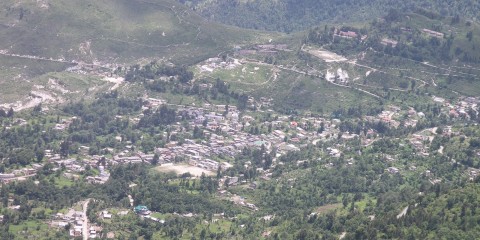
Uttarakhand, North India, Hill station, Mountain Passes, Musuem, Nature, Temple, Trekking, Valley, Water falls, Wildlife Sanctuary
Munsyari is a town in Pithoragarh district in Uttarakhand, India. Munsyari means place with Snow. This is best place for natural lovers, trekkers, glacier and mountaineers. Snow capped peaks surrounded the town. This is also known for flora and fauna. Major festivals celebrates in this place are Olgia, Phool De, Jauljibi, Khataruao, Basant Panchami, Makar Sankranti.
What to see in Munsyari:
Maheshwari Kund: It is the natural lake. Local people called this kund as Mehsar Kund. This place is surrounded by rhododendron. Visitors can enjoy the spectacular view of Panchchuli Peak.
Balati Farm: Visitors can have spectacular view of Ralam Glacier, Snow covered Himalayan Peaks and Balati Glacier. Dense rhododendron shrubs covered this farm.
Thamari Kund: It is a natural lake. Musk deers come to this place to drink water. This lake is surrounded by Paper trees.
Betulidhar: This place is famous to enjoy sunset. It has large garden with rhododendrons.
Khaliya Top: This is the highest peak which surrounds Munsyari. Visitors can have spectacular view of Panchuli Peaks. Skiing is famous in this place.
Masterji Museum: Earlier this was the residence place of Dr.SS Panghti. Now it is converted into museum. Documents that enabled trade between the Tibet and Johar Valley and antiques can be seen here.
What to see around Munsyari:
Kalamuni Temple: It is located 15kms away from the town. Naga God is worshipped here. Visitors can enjoy the spectacular view of Panchchuli Peak. Pine forests surround this temple.
Milam Glacier: River Milam originated here. Milam Glacier originates from the slope of Trishul and Kohli peaks. It is 16kms long. It is located 26kms away from Munsyari.
Ralam Glacier: It is located 28kms away from the town. Best time to visit this place is between April to June and September to November. This place can be reached by trekking from Pithoragarh and Bageshwar.
Birthi Falls: It is located 33kms away from Munsyari. It can be reached via Kalamuni Pass. These falls are surrounded by Himalayas and Dense forests.
Namik Glacier: It is situated in Nachani Village which is 58kms away from the town. This place is famous for waterfalls and sulphur springs.
Kalamuni Top: It is the route from Birthi Falls to Munsyari. On this hill visitors can find most ancient Kali Temple. It is located 34kms away from the town.
Getting to Munsiyari: Munsiyari is well connected with road ways. From Tankpur, Haldwani, Almora, Kathgodam buses come to this place. Nearest railway station is located at Kathgodam. From Jammu, Kanpur, Dehradun, Kolkata, Delhi etc trains come to this place. This place is 218 kms away from the town. Pantnagar is the nearest airport which is 250kms away from the town. Delhi flights come to this place regularly. Taxis are available to visit to Munsiyari.
Getting around Munsiyari: As it is a small town, visitors can see this place on foot. Share taxis are available to visit the surrounding places of Munsiyari.
Best time to visit Munsiyari: As it is a hill station, winter season is too cold. Temperature goes below zero degrees. Best time to visit this place is between March to June.
Where to stay in Munsiyari: Very limited accommodations available in Munsiyari. Only budget and midrange hotels are available to stay in Munsiyari. Resorts and lodges are also available to stay at this place. All the hotels arrange skiing, river rafting, paragliding, trekking etc.
Where to eat in Munsiyari: Limited eateries are available in Munsiyari. All the restaurants offer Kumaoni, Continental, Chinese, Indian cuisines. In-house restaurants of the hotels are the best option to eat. Most famous dish of this place is Kulka.
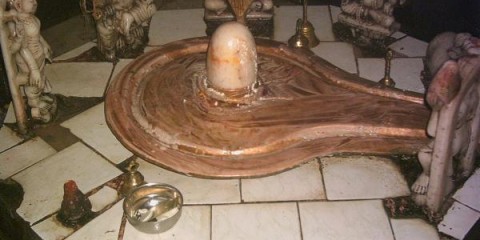
Uttarakhand, North India, Architecture, Hill station, History, Mountain Passes, Musuem,Temple, Trekking
Mukteshwar is a town in Nainital district of Uttarakhand, India. This place is named after the temple Mukteshwar Dham temple. This temple is dedicated to Lord Shiva. It is known for Scenic Splendour and breath taking view of Nanda Devi peak and Himalayan ranges. Plenty of fruit orchards can be seen here. Attractions of this place are trekking, artificial climbing, rappelling, practice rock climbing.
What to see in Mukteshwar:
Shiva Temple: Other name is Mukteshwar Dham. This is one of the major attractions of this place. It is more than 350 years old temple. White marble Shivalingam with copper Yoni is major attraction of this temple. Idols of Lord Vishnu and Brahma can also be seen here.
Sitla: It is one of the attractions of this town. This place is famous to enjoy the beauty of Himalayan ranges. It is an ideal hill station. 100 years old British bungalow is another attraction of this place. Trekking activity conducts here.
Indian Veterinary Research Institute: This was established in 1893. Research conducts on bacteriology, genetics and animal nutrition. Veternity museum and library are other attraction in this campus.
Chauthi ki Jaali: It is one of the tourists spot in this town. From the place visitors can enjoy spectacular view of Kumaon Valley. It is surrounded by numerous rocks. It is believed that natural lattices and hole in the rock are the remnants of the battle between goddess and demons. Rappling and mountain climbing activities take place here.
Raja Rani Temple: Stone sculpture of Rajarani is the major attraction of this place. It was constructed in 11th century. Variety of dance postures and moods of stone carving figures of females can be seen on this temple.
Brahmeshwara Temple: This was constructed in 1050. It is famous for its stone carvings.
Mukteshwar Inspection Bungalow: This place is famous for beautiful architecture. Edward James used to spend his spend time in his rest house. He is famous hunter. Kettle used by him can be seen here.
What to see around Mukteshwar:
Ramgarh: It is located 27kms away from the town. During the British period this place acted as cantonment area. Area is divided into upper and lower region i.e. Malla Ramgarh and Talla Ramgarh. Major attraction of this place is peach, apricot and apple orchards. Other attraction is library of Mahadevi Verma, famous poetess and painter.
Peora: Other name of this place is fruit bowl of Uttarakhand. It is located 8kms away from the town. Popular activities of this place are trekking, game watching, and Bird watching.
Nathuakhan: It is located 19kms away from the town. Major attraction of this place is Kaphal, birch, pine and oak trees. Himalayan ranges can enjoy from this place. Trekking activities and natural walks famous at this place. Cottages made up of stone and wood is another attraction of this place.
Getting to Mukteshwar: Mukteshwar is well connected with roadways. From all the nearest cities buses and taxis come to this place. Nearest railway station is located at Kathgodam which is 73kms away from Mukteshwar. From Ahmedabad, Howrah, Jammu, Dehradun etc trains come to this place. Nearest airport is located at Pantnagar which is 100kms away from the town. Pantnagar is well connected with Delhi. Taxis are available to reach Mukteshwar.
Getting around Mukteshwar: As it is a small hill station, it can be explored on foot. Taxis are available to visit the surrounding places of Mukteshwar.
Best time to visit Mukteshwar: Best time to visit this place is between March to June.
Where to stay in Mukteshwar: Plenty of accommodation is available to stay in Mukteshwar. Midrange hotels are ranging from Rs.2000 to Rs.3000 and luxury hotels are ranging from Rs.3500 to Rs.4500. Best accommodation for budget hotels is Kumaon Mandal Vikas Nigam Limited.
Where to eat in Mukteshwar: Very limited restaurants are available to eat in Mukteshwar. Only local food is available.
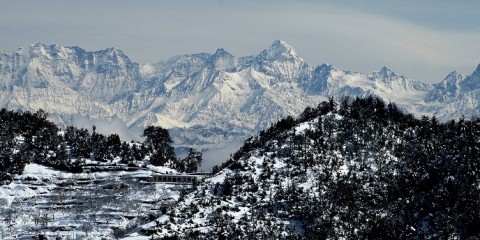
Uttarakhand, North India, Hill station, Musuem, Nature, Temple, Trekking, Wildlife Sanctuary
In the Kumaon Region, Binsar is the highest hill station. It is located in Almora district. This is the best place for adventure lovers, photographers and natural lovers. Name of this town is named after Bineshwar Mahadev Temple. This place acted as capital of the Chand Raj Kings. These kings ruled this region during 7th century. From this hill station visitors can have spectacular view of Panchachuli Peaks, Nanda Kot, Nanda Devi, Chaukhamba and Kedarnath Peaks. This place is also famous for flora and fauna. Trekking activity conducts here.
What to see in Binsar:
Binsar wildlife Sanctuary: With the intension to protect leaf oak forest this sanctuary was established in 1988. This is the home to plenty of flora and fauna. Major attractions of this place are Himalayan Black bears, Kakars, Monkeys, Wild Boars, Leopards etc. Bird Life international declared this place as important bird area. Best time to visit this place is between February to April and from October to November.
Zero Point: It is located inside the sanctuary. Beauty of peaks of Himalayas such as Nanda Devi, Trishul, Shivling, Kedarnath can be seen from this place.
Bineshwar Mahadev Temple: It is one of the major attractions of this place. This temple belongs to 16th century. Binsar town is named after this temple. This temple is dedicated to Lord Shiva. Architecture of this temple is so beautiful.
Binsar Sanctuary Museum: It is located inside the sanctuary. Most valuable and important information about this sanctuary can be known from here.
Pariyadeva Pashan: It is a famous archaeological site. This place has a long stone with cup marks that dates back to megalithic age.
What to see around Binsar:
Khali Estate: This is situated 13kms away from Binsar. Area covered by this estate is 26acres. Beauty of Himalayan Range can enjoy from this place. This was a home to Sir Henry Ramsay, Commissioner of Kumaon. Vijay Laxmi Pandit, Jawaharlal Nehru also resided at this place.
Goula Devta Temple: It is located 4kms away from Binsar Wildlife sanctuary. Goula Devta is worshipped here. People believed that Devta gives quick justice to his devotees.
Kasar Devi Temple: It is located 9kms away from Binsar. In 1820, Swami Vivekananda meditated here. During 1980’s this was the house of Dutch Monks.
Bageshwar: This place is named after Bageshwar Temple. Temple is dedicated to Lord Shiva. Every year thousands of devotees come to this place. It is located 46kms away from Binsar.
Getting to Binsar: Binsar is well connected with road ways. From Pithoragarh, Nainital, Kasauni, Ranikhet etc buses come to this place. Nearest railway station is located at Kathgodam which is 114kms away from Binsar. From Kanpur, Jammu, Delhi, Dehradun, Kolkata etc trains come to Kathgodam. Taxis are available from Kathgodam to Binsar. Pantnagar is the nearest airport of Binsar which is 145kms away.
Getting around Binsar: Private vehicles or hiring a cab is the best way to reach the surrounding places of Binsar.
Best time to visit Binsar: Best time to visit Binsar is between April to June and September to November.
Where to stay in Binsar: Limited hotels are available to stay in Binsar. Few guest houses are also available to stay in Binsar. Best hotels in Binsar are Mountain Resort Khali Estate, The Binsar Retreat, Imperial Hotel, Club Mahindra Valley Resort.
Where to eat in Binsar: Limited restaurants are available to eat in Binsar. All the restaurants offer Continental, Italian, Indian and Chinese Cuisines.
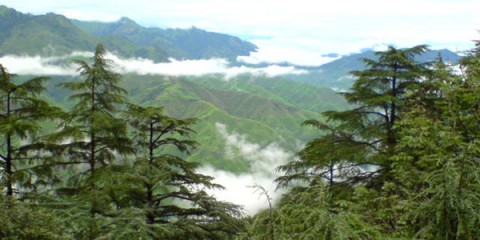
Uttarakhand, North India, History, Musuem, Nature, Trekking , Valley, Water falls, Wildlife Sanctuary
Chakrata is a cantonment town in Dehradun district in Uttarakhand, India. It lies between Yamuna and Tons Rivers. This place is located 92kms away from Dehradun. This place is belonging to Jaunsari Tribe. So this place is also known as Jaunsar Bawar. In 1866, cantonment was established by Britishers. This is the 55th Regiment of British army. Trekking is the major attraction of this place.
What to see in Chakrata:
Deoban: Plenty of animals and plants can be seen in this dense forest. Major attractions are Himalayan Woodpecker, White Collard blackbirds, green backed tit etc. It is situated on hills terrains of Chakrata. From this place visitors can enjoy beautiful view of Himalayan Mountain ranges.
Ram Tal Horticulture Garden: This is the best place for natural lovers. Different varieties of flora and fauna can be seen here. Garden has a small pond and an apple orchid. Major bird attractions of this garden are black headed Jay, grey treepie, oriental turtle dove. Different kind of plants, woody trees, conifers, ferns, Climbers, lichens can be seen here.
Chilmiri Neck: This place is known for mess of military cantonment. Plenty of butterflies and birds can be seen here. From this site visitors can enjoy the beautiful view of Bandapoonch Massif and Swargarohini Peak.
What to see around Chakrata:
Kalsi: It is located 43kms away from Chakrata. This place is famous for rock edict of Emperor Ashoka. Visitors of this place can enjoy scintillating landscapes, cascading waterfalls, beautiful lakes.
Tiger Falls: It is one of the highest falls in India. Visitors can reach this place by trekking. It is located 13kms away from Chakrata. This is one of the best picnic spots of this place.
Paonta Sahib: It is located 71kms away from Chakrata. This one of the pilgrim places for Sikhs. Paonta Sahib Gurudwara is located here. Earlier name of this place is Paontika. Paon means Legs and Tika means Stable. In this place horse of Guru Gobind Singh stopped. Another attraction of this place is a museum. In this museum antique weapons of Guru Gobind Singh can be seen.
Mussorie: It is located 73kms away from Chakrata. Other name of this place is Queen of Hill stations.
Dehradun: It is famous for picturesque landscape and natural resources. Dehradun Attractions are Museum, Clock Tower, Forest Reserve Institute, Sahastradhara, Mahadev Temple, Mall Road, Tapkeshwar Mahadev Temple. It is located 92kms away from Chakrata.
Getting to Chakrata: Chakrata is well connected with road ways. From Mussoorie, Saharanpur, Dehradun etc buses come to this place. Nearest railway station is at Dehradun. From the cities such as Okha, Kathgodam, Varanasi, Ujjain, Indore, Kolkata, Amritsar, Chennai, Delhi etc trains come to this place. Jolly airport at Dehradun is the nearest airport which is located 116kms away from Chakrata. This airport is well connected with Delhi. Taxis are available to reach to Chakrata from Dehradun airport.
Getting around Chakrata: As Chakrata is a small area visitors can see this place on foot. Buses and taxis are available to visit the surrounding places of Chakrata.
Best time to visit Chakrata: During the winter season temperature comes below 5 degrees. So better to avoid to come to this place during winter season. Best time to visit this place is between March to May and between October to December.
Where to stay in Chakrata: Only limited accommodations available in Chakrata. Visitors should not expect luxury hotels. These hotels are not available here. Only budget and midrange hotels are available in this place. Forest rest houses are available to stay in Chakrata.
Where to eat in Chakrata: only limited options are available to eat in Chakrata. In-house restaurants of the hotels are the best option to eat in Chakrata.
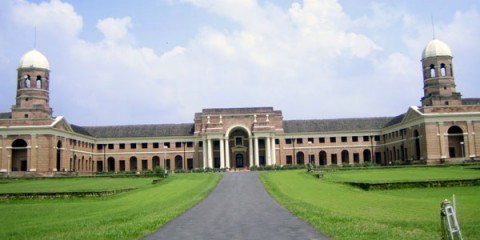
Uttarakhand, North India, Architecture, Caves, Hill station, History, Musuem, Nature, Temple, Wildlife Sanctuary
Dehradun is the capital city of Uttarakhand, India. It is famous for picturesque landscape and natural resources. This place is having historical background. It is believed that this is the birth place of Dronacharya who was the Guru of Pandavas and Kauravas in the epic Mahabharata. This place is also in Ramayana. It is believed that after the death of Ravana, Lord Rama along with Lakshmana visited to this place. Evidences of these are found in the excavations. Best places for shopping lovers are Astely hall, Rajpur Road and Paltan Bazaar.
What to see in Dehradun:
Museum: It is one of the major attractions of the city. This was established in 1971. Origin and development of the city related artefacts can be seen in this museum.
Clock Tower: This was constructed by Britishers before independence. It is six faced tower. Architecture of this tower is so beautiful.
Forest Reserve Institute: Building was constructed in Greco Roman colonial Style. It consists of 6 museums related to entonomy, nonwood forest products, timber, Silviculture, pathology and Social Forestry. This place also has Botanical Garden.
Sahastradhara: It is a beautiful spring. Sulphur present in this spring water. Beautiful views can be enjoyed here. It is believed that this water is having medicinal values.
Mahadev Temple: It is located in Garhi Cantonment area. This temple is dedicated to Lord Shiva. It is a cave temple. It is believed that Lord Shiva made milk flow from the cave for Ashwathma.
Mall Road: This is the best place for shopping lovers. Wide range of products available such as readymade garments, handicrafts, second hand books, ornaments, electronic items, Garwahli shawals, blankets, Tibetan Carpets, traditional jewellery etc.
Waida institute of Himalayan Geology: It consists of huge library consists of several research journals along with best collection of books. To educate the people about general geology and Himalayan; charts, maps and videos are available here.
Paltan Bazaar: This place is famous for wooden crafts items. Fragrances of Basmati Rice and Spices can enjoy at this place.
Other attractions of Dehradun: Other attractions of Dehradun are Ram Rai Gurudwara, Tibetan Buddhist temple, Tapkeshwar Mahadev Temple, Jaspal Rana Shooting Ranges.
What to see around Dehradun:
Chandrabani: It is located 7kms away from Dehradun. People believed that this was the residence place of Maharishi Gautam and his daughter Anjali. It is also believed that Maa Ganga, Daughter of Heaven is manifested here.
Malsi Deer Park: It is located 10kms away from Dehradun. This is the best picnic place for the children. Apart from deers visitors can see Peacocks.
Indian Military Academy: It started functioning from 1st October 1932. Major attractions of this academy are 18 holes FRIMS Golf Course, Shooting Demonstration, War Memorial and Museum. It is located 8kms away from Dehradun.
Mundali: It is located 2.5kms away from Dehradun. This is the best place for Ski Professionals and for snow lovers.
Other attractions near Dehradun: Other attractions near Dehradun are Robbers Cave, Lacchiwalla, Chetwoode Hall, Laxman Siddh Temple, Swarg Niwas Temple.
Getting to Dehradun: Dehradun is well connected with road, railways and airways. From cities such as Ujjain, Varanasi, Kolkata, Chennai, Delhi etc buses and trains come to this place. Flights from Delhi come to this place.
Getting around Dehradun: Autos, Buses, Cars are available to visit the surrounding places of Dehradun.
Best time to visit Dehradun: Dehradun welcomes the visitors throughout the year.
Where to stay in Dehradun: Plenty of accommodations available to stay in Dehradun. Midrange and Luxury hotels provide free pick up services from the airport.
Where to eat in Dehradun: Several eating options available in Dehradun. North Indian dishes are popular in these restaurants. Continental, Chinese and Indian cuisines are available in all the restaurants. Noodles taste at small stalls of this place is unique. Tibetan delicacies are most famous in this city.
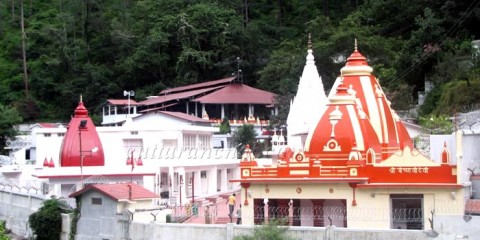
Uttarakhand, North India, Hill station, History, Musuem, Nature, Temple, Trekking, Valley, Wildlife Sanctuary
Ranikhet is a hill station and cantonment town in Almora district of Uttarakhand, India. It is surrounded by majestic Himalayan Ranges and lush green forests. Ranikhet means Queens Meadow. This name was given by Raja Sudhardev to express his love towards his wife Rani Padmini. Palace does not exist here. Britishers used this place as summer retreat. They have established Kumaon Regiment here in 1869.
What to see in Ranikhet:
Nanda Devi Mela: It is one of the major attractions of Ranikhet. Every year in the month of September this is held at Nanda Devi Temple. In the honour of Goddesses Sunanda Devi and Nanda Devi this is held. This was started by Raja Kalyan Chand in 16th century. To bring prosperity this is held every year.
Mankameshwar Temple: This temple is dedicated to Pair of Radha Krishna, Lord Shiva and Goddess Kalika. It was built by Kumaon Regimental Centre of Indian army in 1978. Near this temple Woollen Garden factory and Guruwara can be seen here.
Rani Jheel: It is an artificial lake built between Kendriya Vidyalaya and Canossa Convent School bridges. For the purpose of rain water harvesting this was built by Cantonment board.
Flora and Fauna: This place is famous for flora and fauna. Major attritions of deodar, oak and Pine forests are Porcupine, Red Fox, Langur, Jackal, Red Faced Monkey, Indian Hare, Sambar etc.
Army Museum: Contribution by Regiment during kargil war, Indo China wars can be known here. Weapons used in the wars are placed here.
What to see around Ranikhet:
Upat and Kalika: Best view of snow peaked Himalayan is possible from here. Army golf course can be learned here. It is situated 5kms away from Ranikhet.
Tarikhet: It is 8kms away from Ranikhet. Major attraction of this place is Gandhi Kutiya. In this place Gandhi stayed for long time during freedom struggle.
Chaubatia: It is situated 10kms away from Ranikhet. More than 200 varieties of fruits and flowers can be seen in this orchard. Research laboratory is also located here.
Majkhali: It is located 13kms away from Ranikhet. This place is famous for towering view of the Himalayas.
Binsar Mahadev: Temple is dedicated to Lord Shiva. Place is situated 15kms away from Ranikhet. It is surrounded by Cedar Forests and Water springs.
Sun Temple: It is 800 years old temple of Almora. It is located 25kms away from Ranikhet. It is surrounded by 44 smaller shrines. Trekking route is preferred to reach this place.
Dwarahat: This ancient village is situated 38kms away from Ranikhet. Major attractions are Kachri Devtas temple, Dhwaj, Mrityunjaya, Maniyan and Badnirath temples. Other attraction is Syalde Bikhauti Fair held in April.
Getting to Ranikhet: Ranikhet is well connected with road ways. From Bareily, Almora, Nainital buses come to this place. Nearest railway station is located at Kathgodam which is 80kms away from Ranikhet. From all the main cities of India, trains come to this place. Nearest international airport is located at Delhi which is 350kms away from Ranikhet and Domestic airport is located at Pantnagar which is 119kms away from Ranikhet.
Getting around Ranikhet: Buses, Jeeps, Taxis are available to visit the surrounding places of Ranikhet.
Best time to visit Ranikhet: Best time to visit this place is between March to October.
Where to stay in Ranikhet: Plenty of accommodation is available in Ranikhet. Cost of budget rooms are ranging between Rs.700 to Rs.1500. Cost of Deluxe suites ranges from Rs.7000 to Rs.10, 000.
Where to eat in Ranikhet: Several restaurants available to eat in Ranikhet. Ram Mithai, local sweetmeat, has to taste by the visitors. This taste will remember forever.
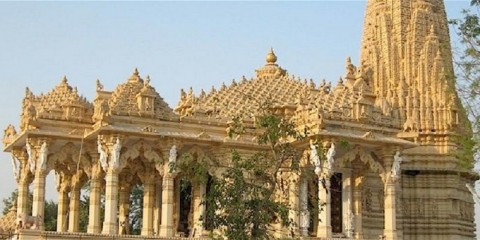
Rajasthan, North India, Boating, Caves, Fort, Hill station, History, Musuem, Nature, Rock Formations, Temple, Trekking, Wildlife Sanctuary
Mount Abu is a world famous tourist’s place which is situated in the Aravalli Range. It is the only hill station in Rajasthan. Other name of this place is summer capital of Rajasthan. According to Puranas, Mount Abu is known as Arbudaranya. It is believed that Sage Vasishta retreated to this place following the difference with Sage Vishvamitra. This place is well known for folk dances, classical music, Rajasthani Handicrafts. Stone crafts, Rajasthani Paintings, leather articles, bangles, wooden and metal artefacts etc are worth buying at this place.
What to see in Mount Abu:
Dilwara Temples: One of the major attractions of this place. It is famous for its stone carvings and architecture styles. Dilwara Temples Attractions are Luna Vasahi Temple, Pitthalhar Temple, Shri Parshavnath Temple, Vimal Vasahi Temple, and Shri Mahaveer Swami Temple. These are constructed in 11th and 13th century.
Archaeological Museum: Major attraction of this museum is Devdasi statues. These statues belong to 6th and 12th centuries. It was built in 1962. This was divided into two sections. Accessories of ancient period are preserved in the first section of the museum. In the second section is so attractive with miniatures paintings.
Mount Abu wild life sanctuary: People visit this place for sightseeing. It is located on the oldest parts of mountain range. Plenty of rare species of flowers can be seen here. Major attraction of this place is Panther, bear, fox and 250 bird species.
Sunset Point: This Place offers a beautiful view of the Sunset.
Nakki Lake: This is one of the major attractions of Mount Abu. Rock formations such as Camel Rock, Nandi Rock, Nun Rock, and Toad Rock can be seen here. Boating is another major attraction of this place.
Neminath Temple: Solanki Style can be seen here. It has a lotus flower carved inside the dome covering the mandap.
Toad Rock: This is the main trekking trail form Abu. Unique rock formations can be seen here.
Sri Raghunathji temple: Lord Vishnu is worshipped here. This temple belongs to 14th century.
Brahma Kumaris Spiritual University: university is offering several courses including yoga, meditation. This is situated with the backdrop of forest.
What to see around Mount Abu:
Guru Shikhar: It is located 14kms away from Mount Abu. Trekking is the major attraction of this place. It is the highest mount peak. Guru Dattatreya Temple is another attraction of this peak. Giant brass bell outside the temple can be seen here. Other temples of this place are Mira Temple, Shiva Temple, and Chamundi Temple.
Achalgarh: It is famous for its fort. This is located 9kms away from Abu. This was built to protect this regions and to have a look on the enemies. Major attractions of this fort are Lord Shiva temple and brass Nandi Structure.
Adhar Devi Temple: It is located in a cave which is 3kms away from Abu. This temple is dedicated to Goddess Durga. 365 steps to be climbed to reach this temple.
Doodh Baori: It is located 4kms away from Abu. This is a sacred well. Water in this well is in milk colour. People believe that this water is having heavenly powers.
Getting to Mount Abu: Abu is well connected with road ways. From all the cities buses come to this place. Nearest railway station is Abu Road station which is 27kms away from Mount Abu. This is well connected with Mumbai and Delhi. Nearest airport is Maharana Pratap or Dabok Airport.
Getting around Mount Abu: Buses and taxis are available to see the places in Abu. Baby Palm is the different means of transportation in Abu to visit the places in this place. Buses and taxis are available to visit the surrounding places.
Best time to visit Mount Abu: Best time to visit this place is between February to June and from October to December.
Where to stay in Mount Abu: Plenty of hotels including luxury hotels are available to stay in Abu.
Where to eat in Mount Abu: Several restaurants available to eat in Abu.
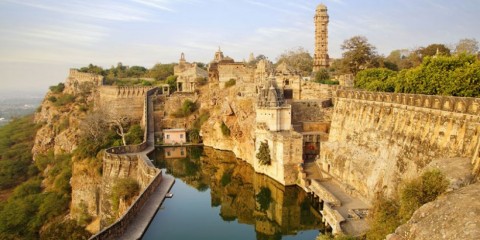
Rajasthan, North India, Architecture, Fort, History, Musuem, Nature, Palace, Temple, Wildlife Sanctuary
Chittorgarh is a city in Rajasthan, India. Major attraction of this place is Chittorgarh Fort which is the largest fort in India. It was built in 7th century by Mauryans. This fort was sacked for 3 times between 15th and 16th centuries. In the history of fort, siege by Ala-ud-din Khilji is an important event. Fort is the pride of Rajputs. From 8th century to 16th century Kingdom of Mewar ruled this place. Area occupied by this fort is 700 acres. It stands on 180m high hill. Jewellery, Leather shoes, handmade shoes, fabrics, metal works are worth buying in Chittorgarh city. Jauhar Mela is the biggest festival celebrates in this city.
What to see in Chittorgarh:
Chittorgarh Fort: Other name of this fort is water fort. It is the major attraction of Chittorgarh. Worth seeing in this fort are Vijay Stambh, Kirti Stambh, gates namely Hanuman Pol and Ram Pol. Several temples are located inside the fort. They are Kalika Mata Temple, Shyam Temple, Meera Temple, Neelkanth Mahadev Temple. These temples belong to 8th century. This fort is having 22 water bodies.
Rana Kumbha Palace: It is located inside the fort. It was built by Rana Kumbha in 1433- 68. Worth seeing in this palace are stables of horses, elephants and balconies. Ganesha temple is also located inside the palace.
Rani Padmini’s Palace: This is 3 storied white building situated inside the fort. Pavilion and lotus temple are located here.
Archaeological museum: Sculptures, houses paintings, artifacts are the major attractions of the museum. Historical facts of ruins of the fort also can be seen here. During the excavation, artefacts belongs to Buddhism are found. These artefacts also can be seen in the museum.
Other attractions in Chittorgarh: Other attractions in Chittorgarh are Phatta’s Memorial, Vijaya Stambh, Kalika Mata Temple, Tulja Bhawani Temple, Meera Temple, Gaumukh Reservoir,
What to see around Chittorgarh:
Sitamata Wild life Sanctuary: It is believed that Sitamata stayed in this forest in Saint Valmiki Ashram so it was named after this. Major attractions of this sanctuary are wild Pangolin, leopards, jungle cat, nilgai, deer etc. It is locate 31kms away from Chittorgarh.
Sanwariyaji Temple: It is located 38kms away from the city. Lord Vishnu worshipped here.
Bassi fort: It is located 54kms away from the city. Major attractions of this fort are Mahals, arches, domes and gates. This was built in 16th century by Thakur Jimal who was the cousin of Maharana Pratap .
Nagari: It is located 18kms away from the city. During the excavation a stupa was discovered decorated with terracotta tiles. This was the flourishing town during Gupta and Mughal rulers.
Other attractions near Chittorgarh: Other attractions near Chittorgarh are Bassi Wildlife sanctuary, Menal, Bhainsrodgarh Wildlife sanctuary, Maha Sati, Sanwariaji Temple, Sathis Deori Temple.
Getting to Chittorgarh: Chitttorgarh is well connected through road and railways. From the cities of Rajasthan, buses come to this place. From Vadodara, New Delhi, Udaipur, Ajmer, Jaipur trains halt at Chittorgarh. Nearest airport is at Udaipur. This airport is popularly known as Maharana Pratap airport. This airport is well connected with New Delhi and Jaipur.
Getting around Chittorgarh: Buses, Taxis and Private Vehicles are available to visit the surrounding places of Chittorgarh.
Best time to visit Chittorgarh: Best time to visit this place is during the winter season. Climate is so pleasant during this season.
Where to stay in Chittorgarh: Plenty of accommodations are available to stay in Chittorgarh. All type of hotels such as budget, midrange and luxury hotels are available.
Where to eat in Chittorgarh: Plenty of restaurants available to eat in Chittorgarh. All the restaurants provide traditional Rajasthani meals along with Continental and Chinese cuisines. Few hotels offer Mughal Cuisines. Almost all the hotels serve only vegetarian food.
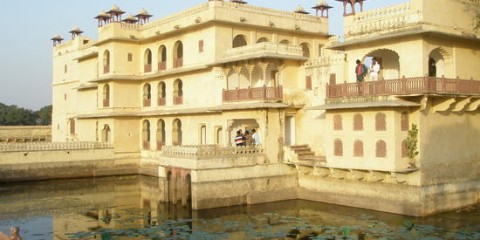
Rajasthan, North India, Architecture, Dussehra, Fort, History, Musuem, Nature, Palace, Rock Formations, Temple, Water falls, Wildlife Sanctuary
Kota is the third largest city of Rajasthan, India. This place is famous for gardens and Palaces. It is located on the banks of Chambal River. Kotya Bhill warrior laid the foundation stone for the construction of this city. Dussehra festival celebrates so grandly in Kota. This city has its own style in celebrating this festival. Main attraction of this festival is burning of effigies of Meghnath, Kumbhakaran and Ravana. Other festival celebrates grandly at this place is Ganguar festival. Grand procession takes place during this festival. Procession includes horses, camels, elephants, drummers and dancers.
What to see in Kota:
City Fort Palace: In Rajasthan it is one of the largest forts. Visitors can see Rajput and Mughal architectural style on this fort. Ceilings are made up of glass and marble are used for the walls as well as for the floors. Palace consists of a museum. This displays the weapons used during the Rajput era were displayed. Major attraction of this fort is Elephant Gate which was built in 17th century.
Chambal Garden: It is located on the banks of river Chambal. This is the best picnic spot. Inside the garden, visitors can find a pond. Major attractions of this pond are gharials and crocodiles.
Kishore Sagar Lake and Jagmandir Palace: It is an artificial lake which was built in 1346 by Prince Dher Dun of Bundi. At the middle of the lake visitors can find a Palace which was built in 1740. This palace was constructed with red sandstone.
Maharao Madho Singh Museum: This is one of the best museums in Rajasthan. It was named after first king of Kota i.e. Rao Madho Singh. Major attraction of this museum is arms, sculptures, miniature paintings of Kota school.
Umed Bhawan Palace: It is located in the cantonment area of Kota. This was built by Maharaja Umed Singh in 1800. Now this palace is acting as heritage hotel.
Darrah Wildlife Sanctuary: It was established in 1955. Kota Kings used this area for hunting purpose. Major attraction of this place is deer, Tiger, Rhinos, wolves, nilgai etc
Other attractions in Kota: Other attractions in Kota are Sawan Phuhar Water Park, Brijraj Bhawan Palace, Godavari Dham Temple, Kansua Temple, Haveli Devtaji, Mathuradheesh Mandir, Gurudwara Azamgarh Sahib.
What to see around Kota:
Kaithoon: It is located 14kms away from Kota. This place is famous for hand woven Kota Daria Saris. Here dress material and fabrics embroider with real gold and silver threads can be seen.
Baroli: It is located 45kms away from Kota. Major attraction of this place is Ghateshwara Temple. It is one of the beautiful temple complexes in Rajasthan. Carvings on the temple are so attractive. Pillars, images of Lord Shiva, Nataraja are the best example for Rajasthani craftsmanship.
Other attractions near Kota: Other attractions near Kota are Taragarh Fort, Sitabari, Alnea, Raniji Ki Baoli, Garadia Mahadev, Gaipernath.
Getting to Kota: Kota is well connected with Road and Railway lines. From Ajmer, Bikaner, Jaipur, Udaipur etc buses come to Kota. From Pune, Chennai, Kolkata, Delhi, Jaipur, Mumbai etc trains halt at this station. Nearest airport is at Jaipur which is 245kms away from Kota. This airport is well connected with Kolkata, Delhi and Mumbai. Taxis are available to reach Kota from this airport.
Getting around Kota: Buses, Cycle rickshaws and Autos are available to see the city. Buses and Taxis are available to visit the surrounding places of Kota.
Best time to visit Kota: Best time to visit this place is between November to February.
Where to stay in Kota: Plenty of accommodations are available to stay in Kota. But only Budget and midrange hotels are available. During the winter season i.e. festival season tourists rush is more so advance booking of rooms is advisable.
Where to eat in Kota: Plenty of hotels are available to eat in Kota. Most of the restaurants serve vegetarian and Rajasthani cuisines.
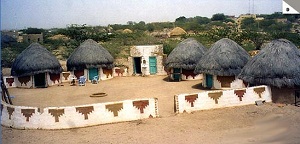
Rajasthan, North India, Bird Sanctuary, Boating, Camal Safari, Fort, Musuem, Nature, Sand Dunes, Wildlife Sanctuary
Khuri is a small village located in Sikar district of Rajasthan, India. Visitors of this can enjoy and can have most memorable experience of Sam Sand Dunes. Sweeping dunes are most attractive in shining golden colour. Riding on the decorated camel is so exiting. From this village visitors can reach to Thar Desert Sand dunes within half an hour. If visitors travel through any other vehicle it will take less than half an hour of time.
What to see in Khuri:
Khuri Sand Dues: Though it is the one attraction of Khuri, it is most unforgettable and impressive experience. Horse safaris and Camel safaris is most memorable experience. Visitors of this place have to experience Spartan splendours of the desert. During the night times desert offers ideal setting to star gaze. Kalbeliya dance and folk songs accompanied by bonfires are very common in this place. For the entertainment of the tourists, Camel Polo and Camel race conducts here. Sunrise and sunset from the sand dunes looks so beautifully.
What to see around Khuri:
Sam Sand Dunes: It is located 40kms away from Khuri. During the winter season night camps in this place is most attractive. Cost of this camp is between Rs.3000 to Rs.7000 per person.
Jaisalmer Fort: Other name of this fort is Ship fort as it looks like ship in the sea of the golden sand. Sandstone is used to build this fort. It was constructed in 12th century. It is located 36kms away from Khuri.
Gadisar Lake: Visitors of this lake can enjoy boat riding. Though it is located in the middle of the desert it will never get dry. It is located 39kms away from Khuri.
Desert National Park: In India this is one of the largest parks. It is located 47kms away from Khuri. Major attraction of this place is fauna and flora. Visitors are allowed between 10.00 AM to 5.00 PM for 4 to 5 hours. Nearly 72 villages are located around this park. This is the best place for natural lovers.
Tazia Tower: This was the construction of Muslim rulers. It is 5 storied structures with several carved balconies. Muharram celebrates here very grandly. It is located 38kms away from Khuri.
Government Museum: It is located 38kms away from Khuri. Major attraction of museum is marine and wooden fossils of wildlife. Handful displays which are placed here dates back to 150 million years. Sculptures of 12th century can be seen here.
Getting to Khuri: Khuri is well connected through road ways. From Jaisalmer, Delhi, Jodhpur, Bikaner, Jaipur buses come to this place. Nearest railway station is located at Jaisalmer which is 50kms away from Khuri. From Mumbai, Delhi, Jodhpur trains come to Jaisalmer. SUVs, Jeeps, Taxis and buses are available to come to Khuri from Jaisalmer. Nearest airport is located at Jodhpur which is 310kms away from Khuri. This airport is well connected with Delhi and Mumbai. From these airport visitors has to reach to Jaisalmer. Then they have to reach to Khuri.
Getting around Khuri: Camel Carts, Horses, Camels, SUVs, jeeps are available to visit the surrounding places of Khuri.
Best time to visit Khuri: Best time to visit Khuri is between November to February.
Where to stay in Khuri: Khuri is having several resorts along with plenty of home stays. Traditional Rajasthan cuisines are available at home stays of Khuri. Dune visits offer by home stays and resorts management. Best facilities will be available at resorts and home stays.
Where to eat in Khuri: Rajasthani Cuisines are available in home stays and Resorts. Both vegetarian and non vegetarian food is available in these home stays and resorts.
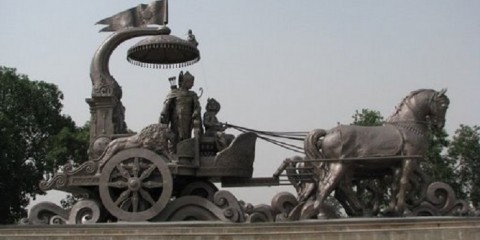
Haryana, North India, History, Kauravas, Kurukshetra, Mahabharata, Musuem, Pandavas, Temple
Kurukshetra is a land of historical importance. It is located in Haryana, India. This is the holy place to the Hindus. At this Place Kurukshetra war was held between Kauravas and Pandavas in epic of Mahabharata. In this place Lord Krishna preached Bhagavad Gita to King Arjuna during the war of Kurukshetra. This place is named after the king Kuru. He was the ancestor of Kauravas and Pandavas. Other names of this town are Brahmakshetra, Uttaradevi, Brahmadevi, and Dharamshetra.
During the ancient days also this place was having great importance. After knowing the facts of the city Sikh Gurus, Lord Buddha and several other religious teachers come to this place to see the holiness. It is located on the bank of Saraswati River and Drishadvati River. Town existed before Harappa Civilisation. This was proved by excavation in many parts of the city. Handlooms, pottery, lungis, robes, woven shawls are worth buying at this place.
What to see in Kurukshetra:
Sannihit Sarovar: This is the meeting point of seven saraswatis. People believe that having bath on Amavasya or on the eclipse day this will be equivalent to performing of Ashvamedh Yajna.
Kurukshetra Panorama and Science centre: This depicts Mahabharata War with scientific explanations.
Kessel Mall: This is the best place for shopping lovers. 3 screen multiplex with several shopping malls can be seen here.
Srikrishna Museum: Historical artefacts along with Paintings which says about Mahabharata War can be seen here.
Light and Sound Show: This is newly built tourists spot. This highlights some aspects of Gita Saar through lights and sounds Balle Balle.
What to see around Kurukshetra:
Brahma Sarovar: on the occasion of Somavati Amavasya, lakhs of pilgrims come to this place. People believe that having bath on solar eclipse in this savovar will wipe off all the sins. It is located 7kms away from the town.
Jyothiswar: It is located 12kms away from the town. This is the place where sacred book Bhagavad Gita originated. This place is having a holy Banyan tree. Under this tree Lord Krishna has preached Bhagavad Gita to King Arjuna.
Kalpana Chawla Planetarium: It is located 11kms away from the town. She was the first Indian women in the space. Her achievements can be known from here.
Bhishma Kund: It is situated in the village of Narakatari which is 7kms away from the town. During the battle of Mahabharata, after Bhishma fell on the ground and was thirty, Arjuna shot an arrow into the ground to get water. Here we can see this large reservoir.
Other places to visit near Kurukshetra: Other places to visit near Kurukshetra are Lakshmi Narayan Temple, OP Jindal Park and Musical Fountain, Phalgu Tirtha, Ararak Tirtha, Pavanhrad Tirtha and Kapil Muni Tirtha.
Getting to Kurukshetra: Best way to reach this place is through road. From Gurgoan, Pune, Goa, Chandigarh, Bangalore, Hyderabad buses reach to this place. It is having small railway station all the trains do not stop at this place. Trains from Kalka, New Delhi, Ajmer halt at this place.
Getting around Kurukshetra: Taxis and buses are available to visit the surrounding places of Kurukshetra.
Best time to visit Kurukshetra: Best time to visit this place is between September to March.
Where to stay in Kurukshetra: Plenty of hotels are available to stay in Kurukshetra but only budget and midrange hotels, luxury hotels are not available. Dharmasalas are also available in kurukshetra. Best midrange hotels are available at old bus stop and on Amin road.
Where to eat in Kurukshetra: Plenty of restaurants are available in Kurukshetra. Best non vegetarian food available all over the town. Best vegetarian food available in Sector 17.
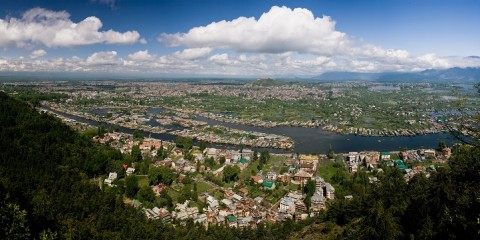
Jammu & Kashmir, North India, Boating, Fort, Hill station, House boats, Masjid, Musuem, Nature, Trekking, Valley, Water falls, Wildlife Sanctuary
Srinagar is summer capital of Jammu and Kashmir, India. Srinagar consists of two words Sri and Nagar. Sri means Lakshmi and Nagar means city. This place is famous for house boats, lakes and gardens. Dry frits and Kashmiri Handicrafts are also famous here.
What to see in Srinagar:
Dal Lake: Deodar tree is major attractions in this place. Near the lake a small Shiva Mandir is located. Base camp for the trekkers is organised here. People believe that if they take a dip in the lake they will be blessed by Lord Shiva.
Jama Masjid: This is oldest mosque of Srinagar. This was destroyed and reconstructed several times. Ancient mughal architecture style can be seen on this mosque. 370 pillars can be seen in this masjid.
Rainwari: This is surrounding by beautiful mountains. Gurudwara in this place was constructed by Guru Hargobind Sahib Ji. He was the 6th guru of Sikh.
Nagin Lake: This is also known as Jewel in the Ring. Major attractions of this lake are Shikaras and House Boats.
Shankaracharya Temple: This was constructed by the son of Emperor Ashoka in 200 BC. It is located on the top of the hill Shankaracharya hill. From this hill beauty of Pir Panjal mountain ranges can be seen.
Shalimar Gardens: This was built by Jahangir for his wife Nur Jahan in 1616. Major attractions of this garden are a canal, fountains and 4 terraces.
Hazratbal Mosque: This was constructed with white marble. This mosque is having large mountains in the backdrop. Kashmiri and Mughal architecture styles can be seen on the mosque.
Other attractions in Srinagar: Other attractions in Srinagar in Sri Pratap Singh Museum, Hari parbat Fort, Chinar Bagh, Kathi Darwaza, Nasim Bagh, Tomb of Madin Sahib, Dastgir Sahib Shrine, Pathar Masjid, Chashme-e- Shahi Gardens, Majid of Akhund Mulla.
What to see around Srinagar:
Shupiyan: It is located 48kms away from Srinagar. This place is also known as Apple town of Kashmir. Apples exports from this place across the country. Other attractions of this place are Nagi Rai Nag, Shahlatoo, Lawahinthora, Kowsernag, Kungwatan, Jama Masjid, Aharbal waterfalls.
Burzahom: It is located 16kms away from the city. This place is famous for ancient artefacts belong to 5000 years ago.
Dachigam Wildlife sanctuary: This was declared as national park in 1951. Major attractions of this place are Blue magpie, Himalayan griffon, Wild boar, Hill fox etc.
Amarnath Cave: It is one of major attractions of this place. This is dedicated to Lord Shiva. Length of this cave is 60feet, height is 15 feet and width is 30feet.
Mughal Garden: It is located 13kms away from the city. This garden is famous for terraced Lawns, flowerbeds and fountains.
Other attractions near Srinagar: Other attractions near Srinagar are Indira Gandhi Tulip Garden, Nishat Bagh, Manasbal Lake, Rozabal Shrine, Wullar Lake, Charar-i-Sharif, and Sangin Darwaz.
Getting to Srinagar: Srinagar is well connected with road, railways and airways. From the cities such as Nagpur, Gurgoan, Hyderabad, Pune, Kolkata buses are available to reach this place. From Ahmedabad, Bangalore, Delhi, Gurgoan etc trains come to this place. From Hyderabad, Kolkata, Ahmedabad, Bangalore, Indore etc flights come to this place.
Getting around Srinagar: Buses, Taxis, Jeeps, private vehicles are available to visit the surrounding places of Srinagar.
Best time to visit Srinagar: Srinagar welcomes visitors throughout the year.
Where to stay in Srinagar: Plenty of accommodations are available to stay in Srinagar. All range of hotels is available. Best hotels in Srinagar are Swiss Hotel Kashmir, City forest by Royal Khazir, Imperial Lake view, Shabnam Hotel.
Where to eat in Srinagar: Plenty of restaurants are available to eat in Srinagar. North Indian, South Indian, Chinese, continental cuisines are available in all the restaurants.
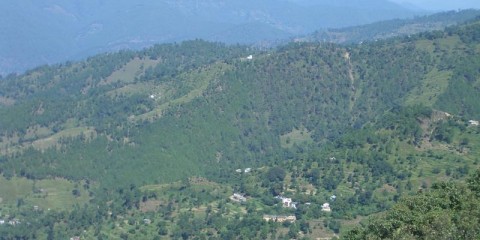
Uttarakhand, North East India, Hill station, Hot Springs, Lake district of India, Mountian Biking, Musuem, Nainital, Nature, Trekking, Valley, Water falls, Water Sports, Wildlife Sanctuary
Sattal is located in Lower Himalayan Range near Bhimtal town of Nainital district in Uttarakhand, India. This place consists of 7 lakes. All the lakes are interconnected. Names of these 7 lakes are Purna Tal, Garud Tal, Sukh Tal, Nal Damyanti Tal, Laxman Tal, Sita Tal and Rama Tal. Most beautiful migratory birds can be seen near these lakes. These birds come to this place to protect themselves from cold in the Himalayan Region. In this region, 20 species of mammals, 11000 species of moths and beetles and 525 species of butterflies can be seen. During the British rule tea plantation is most famous in this place. Most famous festivals of this region are Vasantotsav, Nandadevi fair. Other attractions of this place are Rock climbing, mountain biking, rappelling, Trekking and many more activities.
What to see in Sattal:
Seven Lakes: Major attraction of this place is 7 lakes. All are interconnected to each other. Due to these lakes area is named as Town of Seven Lakes. All the lakes replenished by underground springs.
Methodist Ashram: To introduce Christianity in Kumaon region this ashram was established by E Stanley Jones. Within the ashram visitors can see St.Johns Church. This church is the best example for colonial architecture style.
Butterfly Museum: This was established by Federic Smetacek. It is located inside the premises of Sattal Methodist Ashram. This museum consists of 1100 species of insects and 2500 species of butterflies.
Subhash Dhara: Its scenic location along with crystal clear water attracts large number of tourists. These are natural springs.
What to see around Sattal:
Naukuchital: In the Nainital district this is the picturesque hill station. This place is famous for 9 concerned lakes. It is located 13kms away from Sattal.
Bhimtal: Bhimtal is a part of Lake District of India. This place is famous for its lakes. Other attractions of this place are Dam on Bhimtal Lake and Bhimeshwar temple which was constructed in17th century. It is located 8kms away from Sattal.
Nainital: It is located 22kms away from Sattal. This place is well known for numerous lakes and green hills. It has earned the epithet of Lake District of India. Nainital is surrounded by mountains. Hundreds of ancient temples and mountain peaks can be seen here.
Haldwani: It is located 17kms away from Sattal. Pleasant climate and Scenic beauty attracts the tourists to come to this place again and again.
Getting to Sattal: Sattal is well connected through roadways. State run and private buses come to this place from Uttarakhand and from several other surrounding states. Nearest railway head is located at Kathgodam which is located 36kms away from Sattal. From the cities such as Howrah, Jammu, Dehradun, Delhi trains come to Kathgodam. Taxis are available from the railway station to reach Sattal. Nearest domestic airport is Pantnagar airport. Nearest international airport is located at Delhi.
Getting around Sattal: Best way to explore the place is on foot. Buses and Taxis are available to visit the surrounding places of Sattal.
Best time to visit Sattal: Before reaching to any place knowing best time to visit that place is essential. Knowing weather conditions beforehand is also necessary. Best time to visit this place is during the months of March to June and between September to November.
Where to stay in Sattal: All ranges of hotels such as budget, midrange and luxury hotels are available to stay in Sattal. Few resorts along with KMVN rest houses are also available to stay in Sattal. Best hotels in Sattal are County Inn Sattal, V Resorts, and Langdale Manor.
Where to eat in Sattal: Plenty of restaurants are available to eat in Sattal. Almost all the restaurants serve North Indian cuisines. Very few restaurants serve Chinese and South Indian Cuisines.
Agartala is the capital of Tripura. Agartala is derived from two words Agar and Tala. Agar means a kind of oily valuable perfume tree and Tala means a store house. In this region, visitors can see Agar trees abundantly. Several dynasties ruled this place namely Loknath Jivandharan, Dharmapha, Drikpati, Chitrarath, Manikya dynasties. This place got important after Maharaja Krishna Manikya shifting his capital to this city. This city is famous for lakes, temples, hills, gardens, Palaces. Most prominent festivals are Durga Pooja and Saraswati Pooja. Main business centres are Kaman Chowmuhani and Gol Bazaar.
What to see in Agartala:
Buddha Temple: It is located at the centre of the city which was built in 1946. Two idols of this temple are Lord Buddha and Bodhisattva. Within the temple premises beautiful garden welcomes the visitors.
Kunjaban Palace: This was a recreation place to King Birendra Kishore Manikya which was built in 1927. Currently this is acting as official Governors residence of Tripura.
Ujjayanta Palace: This was built during 1899- 1901 by Maharaja Radhakishore Manikya. Earlier this was the royal Palace but now this is acting as meeting place of Tripura Legislative Assembly. It was built in Indo Greek Style.
State Museum: This was built in 1970. Museum consists of 4 galleries namely Tribal culture, Indian Sculpture, Painting and archaeology. Major attraction of this museum are Jewellery, oil paintings, stone inscriptions, Bronze image, Textiles, Copper Inscriptions, Terracotta, Sculptures, Coins.
Tribal Museum: This museum gives details of 19 tribes of Tripura.
ISKCON Math Chowmuhani: It is located at Banmalipur, Agartala. To improve the life of Tripura people, lot of work had done by this Math. It always engaged in spreading Krishna’s consciousness.
Jagannath Temple: Temple is in orange colour. This was built by Manikyas. Arabic and Hemadpanthi style can be seen here.
Other attractions of Agartala: Other attractions of Agartala are Mariyam Nagar Church, Gedu Miar Maszid, Kamaleswari Temple, Umamaheswar Temple, Rabindra Kanan, Domboor Lake.
What to see around Agartala:
Venuban Vihar: It is located just 2kms away from Agartala. Idol of Lord Buddha was brought to India from Burma.
Kamala Sagar: It is located 24kms away from the city. At the banks of this lake Goddess Kali Temple is situated. This is the best picnic spot for Tripura. It is a vast lake at border of Bangladesh.
Chaturdasa Devata: Major attraction of this temple is image of Gods and Goddess called Chaturdasa Devata. This image consists of 14 heads. Temple also consists of Garbhagriha and Nat Mandapa. It is located 7kms away from the city.
Neermahal Water Palace: It was built in the centre of the Lake Rudrasagar by Kishore Manikya in 1930 as a summer resort.
Other attractions near Agartala: Other attractions near Agartala are Tripurasundari Temple, Chittangong Hills, Chowda Devta Temple, Sepahijala Nature Reserve.
Getting to Agartala: Agartala is well connected with road, rail and air ways. From Kolkata, Guwahati buses are available to reach Agartala. Only few trains come to Agartala station. Nearest railway head is located at Kumarghat which is 160kms away from Agartala. Agartala airport is well connected to Kolkata and Guwahati.
Getting around Agartala: Cycle rickshaws are available to see the places in Agartala. Autos, Taxis and buses are available to visit the surrounding places of Agartala.
Best time to visit Agartala: Best time to visit this place is between October to March.
Where to stay in Agartala: All range of hotels are available. But luxury hotels are very few in the city. Government guest houses are also available to stay. Cost of budget hotels is ranging between Rs.200 to Rs.500. Luxury hotels cost is ranging between Rs.2500 to Rs.4000.
Where to eat in Agartala: Very limited restaurants in Agartala. Hotels are offering Continental, Chinese and Indian cuisines. Bengali cuisines and sweets are most popular in Agartala.
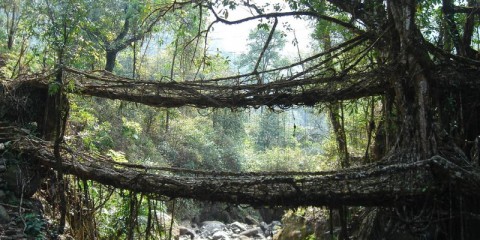
Meghalaya, North East India, Caves, Hill station, Musuem, Nature, Temple, Trekking, Valley, Water falls, Wildlife Sanctuary
Shillong is the capital of Meghalaya. This is the home to Khasis. Britishers influence is more in this place. Even today visitors can find British influence in language, lifestyle and architecture. Traditions of both Europe and India can be seen here.
What to see in Shillong:
Golf Course: One of the oldest Golf Courses in the country. This was started in the year 1898 at Laban. Initially this was started with the course of 9 holes; in 1924 it was transformed to 18 holes.
Police Bazaar: This is popularly known as PB. Plenty of hotels, restaurants, shops are located here. This is the best place for the shopping lovers.
Don Bosco Museum: This museum provides information about north eastern states such as Tripura, Nagaland, Mizoram, Manipur, Meghalaya, Arunachal Pradesh and Assam. Best collection of weapons, photographs, ornamentation, handicrafts, accoutrements, attires, Regional artwork can be seen here.
Shillong Peak: Thousands of tourists come to this place every year. According to the history Shillong city is named after this peak. One of the attractions of this place is Indian Air Force Radar Station. Cameras are not allowed due to security reasons. This peak provides breath taking view of Shillong city and Himalayan Ranges.
Lady Hydari Park: This is one of the major attractions of the Shillong. This is dedicated to first lady of the province, Lady Hydari. She was the wife of Governor of Assam. Major attraction of this park is huge variety of orchids and local flowering plants. This park consists of mini Zoo also. In this zoo 140 reptiles, 73 species of birds can also be seen. This park is in Japanese style.
Other attractions of Shillong: Other attractions of Shillong are Elephant Falls, Wards Lake, Meghalaya State Museum, Wankhar Entomology Museum, All Saints Church, Botanical Survey of India Orchidarium, Shillong Cathedral, Laitlum Canyons, The Meghalaya Butterfly Museum.
What to see around Shillong:
Mawsynram: This place is located 54kms away from Shillong. It is the wettest place on the earth. Major attractions of this place are lush waterfalls, abundant greenery, clear blue skies and fresh air. Other attractions of this place are Mawjymbuin Cave with huge Shivaligam.
Spread Eagle Falls: It is located 6kms away from the city. In the entire Shillong, Spread Eagle Falls are the widest falls. Other name of this falls is Sati falls. People can enjoy Sparkling Waterfalls.
Mawplang: Most famous forest groves are located here. This forest is also known as sacred forest. Castanopsis Kurzii Trees are majorly seen in this forest. This place is considered as natures own museum. Major attractions of this museum are orchids, fern allies, Pipers, Aroids. It is located 25kms away from Shillong.
Sohpetbneng Peak: Bird’s eye view of city of Shillong and dense forest is possible from this peak. It is believed that Hynniewtrep tribe of Meghalaya grew a tree at this peak which acted as a ladder between them and a God. It is located 20kms away from shillong.
Other attractions near Shillong: Other attractions near Shillong are Umiam Lake, Sweet Falls, Beadon Falls, Bishop Falls, Mawlynnong Waterfalls, Mawjymbuin Caves, David Scott Trail, and Diengiei Peak.
Getting to Shillong: This place is well connected with road, railways and airway. From the cities such as Hyderabad, Chennai, Bangalore, Delhi, buses and trains are available to reach this place. From Patna, Mangalore, Ranchi, Jaipur flights are available to reach this place.
Getting around Shillong: Buses, Private vehicles, Taxis are available to visit the surrounding places of Shillong.
Best time to visit Shillong: Visitors can reach this place throughout the year.
Where to stay in Shillong: All range of hotels such as Budget, Midrange and Luxury Hotels are available to stay in this place.
Where to eat in Shillong: Plenty of restaurants are available to eat in Shillong.
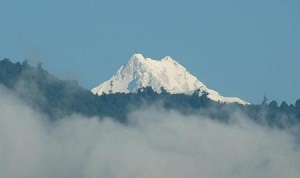
Sikkim, North East India, Hill station, Musuem, Nature, Temple, Trekking, Valley, Water falls, Wildlife Sanctuary
Gangtok is a hill resort and capital of Sikkim. Largest industry in Gangtok is hospitality. At the end of 19th century, Tibetans was defeated by Britishers. Then Gangtok became a major stopover in the trade between Tibet and British India.
What to see in Gangtok:
Hanuman Tok: This one of the major attractions of Gangtok. Army department is managing this temple. Height is 7200feet.
Namgyal Institute: This is a Tibet museum which was inaugurated in 1958 by Jawaharlal Nehru. Major attractions of this museum are ancient manuscripts, wide collection of thangkas, statues, Tibetan works.
Deorali Orchid Sanctuary: Huge collection of Orchids can be seen here. In total there are 454 varieties of Orchids. Out of which 200 can be seen here.
Do-Drul Chorten Stupa: This was built in 1945 and it is located adjacent to Tibetology Institute. Prayer wheels on the stupa have a holy inscription engraved on it as Om Mani Padma Hum.
Tashi Viewpoint: This is the best place to enjoy beautiful view of Mount Kanchenjunga.
Tsuk La Khang Monastery: This is located inside the Royal Palace. Major attractions of this place are figure of snow lion’s head, Wooden Sculptures, Huge collection of Buddhist Scripture works.
White Hill: This is a two storied architecture. It is a permanent venue for Flower show held in Sikkim.
Ban Jhakri Falls: This is one of the attractions of Gangtok. It is the best place for Jogging and morning walk. Ethic sculptures can be seen here.
Mt.Katao: This is the best place for the people who want to have experience of snow. Prior permission from Indian army is essential.
What to see around Gangtok:
Enchey Monastery: This is 200 years old monastery which is located 3kms away from the city. It is an important Nyingma Sect of Tibetan Buddhism. This was constructed by Lama Druptab in 1909.
Ganesh Tok: This is located 7kms away from Gangtok. Lord Ganesha is worshipped here. It is so small only one person can go inside.
Tsomgo Lake: This is located in East Sikkim which is 38kms away from Gangtok. This is the holy lake for the Sikkim people. To visit this place Inner Line Permit is essential from the police. Entire Lake gets frozen during the winter season.
Himalayan Zoological Park: This is located 3kms away from Gangtok. For the wildlife lovers this is the best place. Major attractions of this place are Himalayan Black bear, Barking deer, Musk Deer, Blue sheep, Red Panda.
Kyongnosla Alpine Sanctuary: This is located 31kms away from Gangtok. Wide variety of flora and fauna can be seen here. Medicinal plants also can be seen here. Major attraction of this sanctuary is Rhododendron, Rare Panax, Gentians, Primulas etc…
Other attractions near Gangtok: Other attractions near Gangtok are Nathula Pass, Rumtek Monastery, Changu Lake, Ranka Monastery, Tashiding Monastery, Saramsa Garden, Fambong La Wildlife Sanctuary, Jawaharlal Nehru Botanical Garden, Kabi Lungchok.
Getting to Gangtok: Gangtok is well connected through Road way and Railway. From the major cities such as Patna, Hyderabad, Bangalore, Kolkata, Chennai, Ahmedabad, Nagpur etc buses and trains are available to reach this place. Nearest airport is located at Bagdogra which is 124kms away from the city.
Getting around Gangtok: Private vehicles, Buses, cars are available to visit the surrounding places of Gangtok.
Best time to visit Gangtok: Visitors can come to this place throughout the year. Snowfall can be experienced during the winter season. Best time to visit this place is between September to June.
Where to stay in Gangtok: Plenty of accommodations starting from budget hotels to luxury hotels are available here. Cost of Budget hotels is Rs.795 and cost of luxury hotels is Rs.4500.
Where to eat in Gangtok: Plenty of restaurants are available to eat in Gangtok. Best restaurants found in MG Marg.
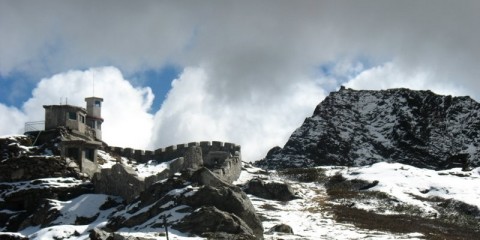
Sikkim, North East India, Hill station, India China Border, Mountain Passes, Musuem, Nature, Trekking, Valley, Water falls, Wildlife Sanctuary
Nathu La is an important Himalayan pass in India. Nathu La is derived from two words Nathu and La. Nathu means Listening and La means Pass. This is located 54kms from Gangtok which is in Sikkim. Between India and China there are 3 open trading borders. Nathu La is one of the trading Borders. During the summer season tourists rush is more. During 1873, Deputy Commissioner of Darjeeling made a survey laying stress on strategic importance of mountain passes between Tibet and Sikkim. At that time potential of Nathu La came to know to the people. This was opened for trade in 1894.
In September 1967, Chinese and Indian soldiers fought against each other for 6 days in Nathu La. After that this place was closed till 2006. This place was reopened on 71st birthday of 14th Dalai Lama. During the years of Nathu La closed, only Chinese post man was allowed to enter into the borders to handover letters from either side of the border.
What to see in Nathu La:
Tsomgo Lake: This is located in East Sikkim which is 38kms away from Gangtok. This is the holy lake for the Sikkim people. To visit this place Inner Line Permit is essential from the police. Entire Lake gets frozen during the winter season. Before 1962, Caravans of mules transferred goods through this route.
Nathula Pass: It is located between Indo Chinese Border which passes through Tsongo Lake. Earlier this was the trade route between Indian and Tibetan Merchants. Throughout the year this is covered with snow. In 1950, huge number of people migrated from Tibet to India through this pass. Foreign tourists are not allowed. Indian are allowed only on Wednesday, Thursday, Saturday and on Sunday with special permission. Only specific vehicles are allowed to pass on selected days. This border protected by Chinese soldiers. Visitors are not allowed at international border.
Flora and Fauna: Flora and Fauna is one of the major attractions of Nathu La. This region has only 4 months growing season. In that season Aconitum, Primula, Pedicularis, Meconopsis are grown abundantly. Major attractions of this place are Ruddy Shelduck, Golden Eagle, Raven, Tibetan Snowcock, Tibetan Wolf, Snow Leopard, and Tibetan Gazelle. During the monsoon season medicinal shrubs and grasses grow abundantly.
What to see around Nathu La:
Gangtok: This is the best place to view the beauty of Kanchenjunga. Major attractions of this place are Hanuman Tok, Namgyal Institute, Deorali Orchid Sanctuary, Do-Drul Chorten Stupa, Tashi Viewpoint, Tsuk La Khang Monastery, White Hill, Ban Jhakri Falls, and Mt.Katao.
Namgyal Institute: This is a Tibet museum which was inaugurated in 1958 by Jawaharlal Nehru. Major attractions of this museum are ancient manuscripts, wide collection of thangkas, statues, Tibetan works. It is located 37kms away from Nathu La.
Getting to Nathu La: Before reaching to Nathu La visitors has to reach to Gangtok. Gangtok is well connected with road and railway. From the major cities such as Patna, Hyderabad, Bangalore, Kolkata, Chennai, Ahmedabad, Nagpur etc buses and trains are available to reach Gangtok. Nearest airport is located at Bagdogra which is 84kms away from Nathu La.
Getting around Nathu La: Best way to explore Nathu La is through trekking. Taxis are another option to see the surrounding places.
Best time to visit Nathu La: Best time to visit this place is between March to May.
Where to stay in Nathu La: Accommodations are not available in Nathu La. Visitors need to stay at Gangtok. Plenty of accommodations starting from budget hotels to luxury hotels are available in Gangtok. Cost of Budget hotels is Rs.795 and cost of luxury hotels is Rs.4500.
Where to eat in Nathu La: Only Limited options are available to eat in Nathu La. only Snack items are available.
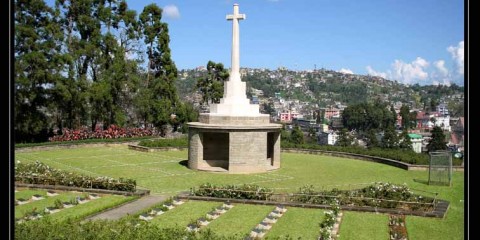
Nagaland, North East India, Caves, Hill station, Musuem, Naga Tribes, Nature, Trekking, Valley, Water falls, Wildlife Sanctuary
Kohima is hilly capital of Nagaland, India. It is the land of Angami Naga tribe. Earlier name of this place is Thigoma. As Britishers unable to pronounce this name they have changed the name as Kohima. This place is famous for wild flowering plants. This town is named after one of the wild plant called Kewhi. Kohima region consists of 16 principle tribes. All belongs to Naga Tribes. Naga Bazaar and Ruzaphema are best places for the shopping lovers. Decorative items, Vests and Shawls are worth buying here.
What to see in Kohima:
Catholic Church: In the North East Region of India, this church is the biggest church. Missionary sisters of Jesus Christ came to this place in 1948 to provide service to the civil hospital of the region. From then onwards Christianity spread in this region.
War Cemetery: This cemetery consists of more than 1420 funerals of the soldiers who died during Japanese invasion at the time of World War II. It is best historical site in Kohima. It consists of 330 Indian Burials, 5 Canadian and 1100 British Burials.
Nagaland State Museum: Rare collection of artefacts which belongs to 16 tribes can be seen here. Other attractions of this place are inscriptions, traditional attires, necklaces, precious stones, clan motifs.
Japfu Peak: One of the major attractions of this place is Rhododendron Tree. This tree entered into Guinness book of world Record. Height of this tree is 130 feet tall. Trekking is the other attraction of this place.
Kohima Museum: Collection of beer mugs, gadgets for Kitchen, farm implements, precious stones, is the major attractions of this museum.
What to see around Kohima:
Dzukou Valley: This is located 25kms away from Kohima. It looks so beautiful with multi colored rhododendrons, Euphorbia, aconitum and Lilies. This valley is used for trekking purpose. Trekking is the major attraction for several visitors.
Tuophema: State Government declared this village as ancient Heritage village. This place is so clam. Social system of Nagas can be known from here. Famous dishes of Nagas such as Bamboo baked fish; rice beer, bamboo and Pork are available here. It is located 35kms away from Kohima.
Zoological Park: It is located 70kms away from Kohima. Rare Bird species, Tragopan is the major attraction of this park. This is the state bird of Nagaland. Animal attractions of this place are Golden Langur, Wild Buffalo etc. Jungle Safari, Nature trips and Bird watching activities are major attractions of this place.
Intangki Wildlife sanctuary: This is located 45kms away from Kohima. Major attractions of this sanctuary are Mithun, Elephants, Tiger, Black Stork, Khaleej, Common Pheasant, Hornbill etc. Flora and Fauna are also other attractions of this place.
Ruzaphema: This is major attraction for shopping lovers. Beautiful and Unique shops are made by tribal women of Nagaland. It is located 5kms away from Kohima.
Getting to Kohima: Only way to reach this place is road way. From cities such as Mizoram, Manipur, Arunachal Pradesh, Tripura, Meghalaya buses come to this place. Nearest railway station and airport is at Dimapur.
Getting around Kohima: Buses, Vans and Cars are available to visit the surrounding places of Kohima. Travel in the smallest vehicles is more safe as this a hilly region.
Best time to visit Kohima: Best time to visit Kohima is between November to March.
Where to stay in Kohima: Accommodations are very limited in Kohima. Only budget and midrange hotels are available to stay in Kohima. Cost of budget hotels is between Rs.500 to Rs.700. Cost of midrange hotels is ranging between Rs.800 to Rs.1500.
Where to eat in Kohima: This is known for non vegetarian. Most famous food is Zouthou, Ghalo and Bamboo baked with Fish.
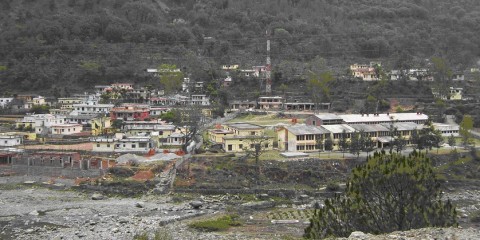
Uttarakhand, North East India, Boating, Hill station, Jyothirlinga, Musuem, Nature, Panch Prayag, River crossing, Rock Formations, Rudraprayag, Temple Trekking, Valley, Water falls, Water Sports
Rudraprayag is a town in Rudraprayag district of Uttarakhand. This is the point of confluence of rivers Mandakini and Alakananda. It is one of the Panch Prayag.
What to see in Rudraprayag:
Kartik Sawmi: This temple is dedicated to Lord Kartikeya. He is the son of Lord Shiva. Bones of Lord Kartik is worshipped here.
Madmaheshwar Temple: This is one of the Panch Kedars. It is believed that Lord Shiva buried in this place. Silver idol is worshipped here. It remains closed for 6 months.
Maa Hariyali Devi Temple: Goddess is seems in most beautiful yellow colour saree. She sits on the lion carrying a child. Other idols of this temple are Vaishno Devi, Bala Devi and Sitla Mata.
What to see around Rudraprayag:
Augustamuni: In this place Rishi Agastya meditated for several years. This village is famous for Agasteshwar Mahadev Temple. It is dedicated to Rishi Augustmuni. Baisakhi celebrations are most famous in this place. It is located 9kms away from Rudraprayag.
Kedarnath Mandir: This is situated near Mandakhi River. Shivalinga in the temple is one of the Jyothirlingas. Shape of this temple is Pyramid. 200 idols of Lord Shiva can be seen here. This was constructed by Adi Shankaracharya. It is located 86kms away from Rudraprayag.
Khirsu: This is located in Rudrayaga region which is 56kms away from the city. Ghandiyal Devta is most ancient temple located here.
Chopta: This is located 56kms away from Rudraprayag. Snowfall in this place is most beautiful during the winter season. Major attractions of this place are Rock climbing, Rock craft, Snow trekking, Yoga, Trekking and Camping. For the bird watchers this is the best place. Best trekking routes of this region are Devariyatal, Tunganath and Chandrashilla.
Kalimath: It is located 46kms away from the city. This is one of the Siddha peeths. Temple is dedicated to Goddess Kali.
Ukhimath: This village is famous for Lord Kedarnath temple. During the winter seasons snowfalls is more so this place is known as winter seat for Lord Kedarnath. Temples of Anirudh, Usha, Parvati and Shiva are also famous here. It is located 42kms away from the city.
Guptkashi: It is located 44 kms from the city. Major attraction of this place is statue of Lord Shiva. This statue is half man and half women.
Chandrashila: This is the hill on which Chopta and Tungnath Mandir are situated. Different peaks of Chandrashila are Trishul, Chaukhamba, Nandadevi, and Kedar. These peaks cover with snow during the winter seasons. This view is most attractive to the visitors. This place is famous for trekking. But during the winter season visitors are not allowed to do trekking. It is located 71kms from the city.
Tungnath Mandir: This is the major nearby attraction of the village. It is believed that Ravana performed penance for Lord Shiva. Idols of this temple are Lord Shiva, Kaal Bhairav, Ved Vyasa, Pandavas, and Adi Shankaracharya can be seen here. This place is one of the Panch Kedars. Due to huge snowfalls, temple does not open between November to March. It is located 71kms away from the city.
Getting to Rudraprayag: Only way to reach this place through road. From the cities such as Gurgoan, Bangalore, Kolkata, Delhi, Hyderabad, Ludhiana, Mumbai, buses are available to reach this place. Nearest railway station is located at Rishikesh which is 72kms away from the city.
Getting around Rudraprayag: Buses, Taxis and private vehicles are available to visit the surrounding places of Rudraprayag. All the surrounding places are in Rudraprayag district.
Best time to visit Rudraprayag: Visitors can come to this place all over the year.
Where to stay in Rudraprayag: Plenty of accommodations are available to stay in Rudraprayag. Best hotels are Monal Resort, Bhatt Resort, and GMVN Tourist Bungalow.
Where to eat in Rudraprayag: Plenty of restaurants are available to eat in Rudraprayag.
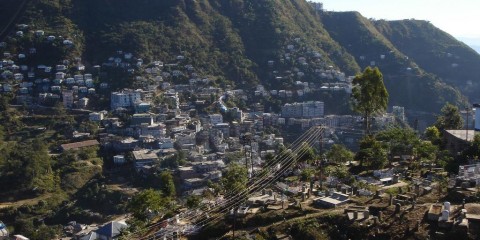
Mizoram, North East India, Hill station, Musuem, Nature, Trekking, Valley, Water falls, Wildlife Sanctuary
Aizawl is the capital of Mizoram, India. This is one of the most beautiful hill stations in India. It is 112 years old town. Varieties of flowers and Timber houses are the major attraction of this place. Majority of population belongs to Mizo tribes. Muslims and Hindus can also be seen here but very small number. Major dances of this region are Sarlamkai, Chai, Chheihlam, and Khuallam. During these dance shows traditional games, Music competitions, Food festival and flower shows are organised here. Chapchar Kut, Pawl Kut, Mim Kut are famous festivals in Aizawl.
What to see in Aizawl:
Berawtlang Tourist Complex: This is the recreation centre. Plenty of cultural activities held here. Local people considered this as famous Picnic spot. Accommodations and restaurants are available inside the complex. Local Taxis are used to visit this complex by the foreigners.
Bara Bazaar: This is the main shopping centre of this hill station. Traditional garments, Wicker handmade baskets are main attraction of this Bazaar.
Durtlang Hills: Tourist attracts to this place for trekking. This offer fine view of the hill station.
Mizoram State Museum: This was established in 1977. More than 2500 items are placed here. Each item says the ethnic background and richest past to Mizoram. This museum is dedicated to tribes of the Mizoram. Some of the items of the museum are archaeological objects, Musical instruments and Photographs.
Mini Zoological Garden: This is located on the hill know as Bethlehem Vengthlan. Major attraction of this garden is Sun Bear. Several numbers of animals can be seen here.
What to see around Aizawl:
Bung: This place is situated 15kms away from Aizawl. It is the best picnic spot. Taxis, Bus and Cars are used to reach this place. This place is always busy with the tourists.
Luangmual Handicrafts Centre: This is located 7kms away from the centre. Handicraft objects are famous in this place. Waterproof Wild hnathial leaves can be seen exclusively in this place.
Reiek Tourists Resort: It is situated 45kms away from the city. For the trekking and natural lovers this is the best place. Music shows also conduct in this resort.
Ruanglang: Traditional Mizoram life of the people will be known from this village. It is situated 5kms away from the city. Local taxis are used to reach this place.
Falkawn: This village is situated 18kms away from Aizawl. Thousands of visitors come to place every year. This is the best place to known the lifestyle and culture of Mizoram People.
Paikhai: This is the best picnic spots. Waterfalls are the major attraction of this place. It is located 16kms away from the city.
Getting to Aizawl: Aizawl is well connected by road ways. From Shillong, Silchar and Guwahati buses are available to visit this place. Nearest railway station is located at Silchar which is 130kms away from the city. Aizawl is having domestic airport. This airport is well connected with Kolkata, Imphal and Guwahati.
Getting around Aizawl: Buses, Cars, Taxis and Autos are available to visit the surrounding place of Aizawl.
Best time to visit Aizawl: Best time to visit this place is between November to February. Heavy woollen should be preferred to wear during the winter season and cotton and light woollen are preferred for summer season.
Where to stay in Aizawl: Accommodations are very limited in Aizawl. Prior booking of the rooms and resorts are advisable. Only luxurious resorts are available but not luxury hotels. They were charging Rs.3500 per night. Budget hotels are charging Rs.500 per night where as midrange hotels are charging Rs.750 to Rs.1000 per night. Hot water facility is available throughout the year.
Where to eat in Aizawl: Limited Restaurants are available to eat food. Most famous local food is Baked Pork Momos, Chicken Momos and steamed fish.
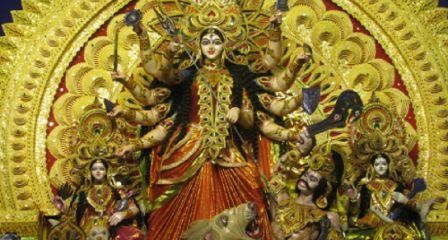
Odisha, East India, Bali Yatra, Fort, Hill station, Musuem, Temple, Wildlife Sanctuary
Cuttack is the second largest city of Odisha. This city is also acting as best commercial centre for odisha. Earlier name of this city is Katak which means The Fort. This name refers to the ancient Barabati Fort. City was developed around this fort. During the historical days city was acted as capital to Kalinga. Kalinga is the older name of Odisha. This was established in 989 by Nrupa Keshari as a Military Cantonment. For the shopping loves best things to buy are Brass, ivory carving, silver filigree work products. Bali Yatra, Durga Pooja, Kali Pooja are famous festivals in Cuttack.
What to see in Cuttack:
Cuttack Chandi Temple: This is the major attraction of the city. Goddess Chandi is worshipped in this temple. Durga Pooja and Kali Puja celebrate so grandly in this temple. Besides the temple one can find Mahanadi River.
Barabati Fort: Once, this was most impressive 9 storied structures but now visitors can see only ruins of the fort. Fort is now has a cricket stadium. Excellent carvings can be seen on the gate of this fort. This was constructed in 11th century.
Bhattarika Temple: This temple is dedicated to Goddess Bhattarika who is an incarnation of Shakti. This is situated on the banks of river Mahanadi.
Stone Revetment: This is a symbol of brilliant ancient engineering skills. It was constructed by Keshari kings during 11th century.
Qadam-I-Rasool: This is important place to both Muslims and Hindus. 3 mosques are placed here. Music gallery called Nawabat Khana is the major attraction of this place. Architecture depicts both Hindus and Muslim style.
Gurdwara Daatan Sahib: This is the holy place for the Sikh community. First Sikh Guru Shree Guru Nanak Dev had passed through and halted for some time when he was going to puri.
Netaji Museum: Rare collection of letters written by Netaji Shubhas Chandra Bose apart from few other valuables of him are placed here.
What to see around Cuttack:
Bhitarkanika Wildlife sanctuary: This is best place to see large variety of Flora and Fauna. It is located 27kms away from Cuttack. Along with flora and Fauna, large variety of mammals and reptiles can also be seen here.
Bhubaneswar: It is located 27kms away from Cuttack. Along with Konark and Puri this forms Golden triangle of temples. This place is famous for several temples and gardens.
Singanatha Temple: This temple is famous for its unique architectural style. Singanatha is the ancient temple in Cuttack. It is located on the rocky Cliff Island of Mahanadi River which is 20kms away from Cuttack.
Dhavaleswar: This temple is sacred to Hindus. Every year thousands of Hindus come to this place. This was constructed in 10th century which was dedicated to Lord Shiva. It is located 25kms away from Cuttack on one of the Islands of Mahanadi River.
Getting to Cuttack: Cuttack is well connected with road and railways. From the cities such as Kolkata, Chennai, Bhubaneswar buses are available to reach this place. From the cities such as Hyderabad, Raipur, Jodhpur, Bhagalpur etc trains come to this place. Nearest airport is located at Bhubaneswar.
Getting around Cuttack: Autos, cycle rickshaws, taxis, buses are available to visit the surrounding places of Cuttack.
Best time to visit Cuttack: September to March is the best time to visit Cuttack. During the summer season temperature is very high.
Where to stay in Cuttack: Plenty of hotels are available to stay in Cuttack. Luxury hotels are few in the city. Along with hotels guest houses are also available to stay in Cuttack.
Where to eat in Cuttack: Very limited restaurants in Cuttack. Only simple Indian meals are available. Most famous food is Thunka Puri. This is prepared only during Bali Yatra Period. In-house restaurants serve Italian, Continental, Chinese and Indian Cuisines.
Puri is a city in Puri district of Odisha, India. This place is well known for Lord Jagannath Temple. It is a holy city for Hindus. This place is also famous for architecture and arts of India. Earlier known as Purusotham Kshetra as, famous Purusotham temple is located here. Today this temple is known as Jagannath Temple. Puri Jagannath Yatra is most famous festival celebrates during June to July.
What to see in Puri:
Jagannath Temple: This is the major attraction of Puri. Height of this temple is 65meters. This was built in 12th century. 20foot high wall is surrounded this temple. This temple is dedicated to Lord Jagannath incarnation of Lord Krishna. It is believed that Lord Jagannath asked King Indradyumna to construct a temple. On the walls of the temple various scenes and stages of Lord Krishna’s life can be seen. Rath Yatra is the major attraction of this temple. Idols of Goddess Subhadra, Lord Balabhadra and Lord Jagannath will take to Gundicha temple during Ratha Yatra and again they will bring them back to the mandir.
Golden Beach: Several temples of this place located near this beach. Wall hangings, lamp shades, Jute shades, Souvenirs made up of shells are worth buying in this place.
Swargadwar: This is located near the beach. People believe that persons who pass away from this place will directly go to heaven after their death.
Gundicha Temple: This temple is shaped like a dome with Lord Vishnu’s Wheel on the top. This temple is considered as the aunt’s house of Lord Jagannatha. During the Ratha yatra period Lord Jagannatha shifted to this temple for 7 days.
Markandesvara Temple: Major attraction of this temple is a statue of Nataraja with ten arms.
Loknath Temple: Shiva Lingam in this temple was established by Lord Rama.
Sudarshan Craft Museum: Major attractions of this museum are a workshop, a library and a Buddhist temple of Japanese style.
Lakshmi Temple: It is believed that Goddess Lakshmi invited Goddess Parvati and Lord Shiva to this place after their marriage.
What to see around Puri:
Chilika Lake: This is the Asia’s largest salt lake. This lake is separated from the Bay of Bengal by only a small neck like piece of land. During the winter season plenty of birds come to this place on migratory basis. It is located 15kms away from the city.
Sakthi Gopal Temple: This temple is dedicated to Lord Krishna and Radha. Idols are brought to this place by King Pratapruda Deva. It is located 17kms away from Puri.
Daya River: It is located 34kms away from the city. On the outskirts of Bhubaneswar, this river joins with Malaguni River and flows into Chilika Lake. Kalinga war fought on the banks of this river.
Getting to Puri: Puri is well connected with road and railways. From the cities such as Kolkata, Chennai, Bhubaneswar, New Delhi etc buses and trains are available to reach this place. Puri is the major railway junction. Biju Patnaik airport is the nearest airport which is located at Bhubaneswar.
Getting around Puri: Buses, autos, rented motor bikes, cycle rickshaws are available to visit the surrounding places of Puri.
Best time to visit Puri: Best time to visit this place is between June to March. Tourists rush will be more during June to November.
Where to stay in Puri: Plenty of accommodations are available to stay in Puri. Huge number of attractive packages is also offering to the tourists. Best price for double bed room of the budget hotel is between Rs.1000 to Rs.1500.
Where to eat in Puri: Huge number of restaurants in Puri. Most of the restaurants serve only vegetarian food. Most famous food in Puri is Bhaang Sharbat.
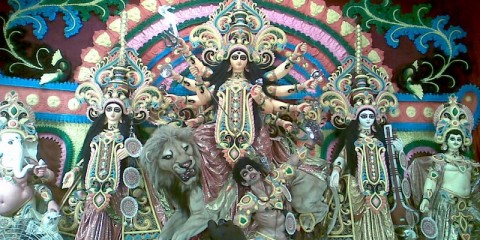
West Bengal, East India, Fort, History, Masjid, Musuem, Nature, Temple, Wildlife Sanctuary
Kolkata is the capital of West Bengal. Major attraction of Kolkata is Port. This is India’s oldest operating Port. Other name of Kolkata is City of Joy. Influence of Raj is more in this city. City has its own place in literature, theatres and films. Several renowned personalities such as Mother Teresa, Satyajit Ray belong to this place.
What to see in Kolkata:
Howrah Bridge: This Bridge is worlds 4th busiest bridge. This connects Western Bank of Kolkata to eastern banks of Kolkata. Photography is restricted here. Nearly 60,000 vehicles travel on this bridge per day. This is also known as Rabindra Setu. This was constructed in 1939.
Eden Gardens: India’s Oldest Cricket Stadium. This is also known as Lords of Asia. It is one of the finest stadiums in the world.
Nicco Park: This is the oldest amusement park. Park is famous for adventure rides such as Water coaster, Moonraker, Flying Saucer, Toy Trian, Cable car etc. Several lakes and gardens can also be seen here.
Aquatica: It is the largest water park of India. Major attractions of this place are adventure water rides, swimming, tornadoes, dance floors, artificial waves.
Dakshineswar Temple: This was built by Rani Rasmani of Janbazar. She was asked by Goddess Kali to build the temple.
Indian Museum: It is the largest museum of India which was established in 1814. Major attractions of this museum are prehistoric objects and artifacts. It consists of more than 60 galleries.
Alipore Zoo: Major attractions of this zoo are Grant’s Zebra, White Tiger, Indian Elephant, one horn Rhinoceros etc.
Kalighat: This was built by Brahmin Zamindar. Goddess Kali is worshipped here. Old temple is housed in small hut.
Nandan: This is the first multiplex of Kolkata. Kolkata International film festival hosted here.
Marble Palace: This was constructed in 1855 with marble stones.
Other attractions of Kolkata: Other attractions of Kolkata are Park Street, Maidan, Town hall, College street, BBD Bagh, Kolkata Metro, Science City, National Library, Vitoria Memorial, Belur Math, Jaldapara Wildlife sanctuary, Jawahar Shishu Bhawan, Nakhoda Mosque.
What to see around Kolkata:
Botanical Garden: This is the best place for the natural lovers. It is located in suburban area of Shibpur in Howrah district which is 8kms away from the city.
Garchumuk: It is situated in Howrah district which is 56kms away from the city. Major attraction of this place is Deer Park.
Chintamoni Kar Bird Sanctuary: It is situated 30kms away from the city. Major attractions of this sanctuary are kingfishers, doves, woodpeckers and cuckoos. Plenty of animals and fruit trees are also can be seen here.
Shrine Bascilica Bandel: It is located 55kms away from the city. It is one of the oldest churches of west Bengal. This was dedicated to Our Lady of the Rosary.
Getting to Kolkata: Kolkata is well connected with road, rail and air ways. From the cities such as Bangalore, Mumbai, Visakhapatnam, Lucknow, Jaipur, Jamshedpur etc buses are available to visit this place. From Patna, Guwahati, Bhubaneswar, Hyderabad etc trains are available to reach this place. From Hyderabad, Chennai, Nagpur, Lucknow, Jaipur etc flights are available to reach this place.
Getting around Kolkata: Autos, Buses, Taxis are available to visit the surrounding places of Kolkata.
Best time to visit Kolkata: Visitors can come to this place throughout the year.
Where to stay in Kolkata: Plenty of hotels are available to stay in Kolkata. Best budget hotels in Kolkata are Marble Palace Guest house Pvt Ltd, Travel Inn, Diamond suites etc. Best Luxury hotels in Kolkata are The Oberai Grand, Hotel VIP International, The peerless Inn.
Where to eat in Kolkata: Plenty of restaurants are available to eat in Kolkata.
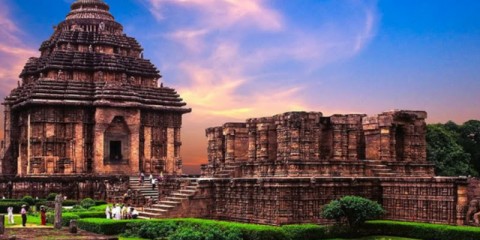
Odisha, East India, Beach, Buddhist temples, History, Konark Sun Temple, Musuem, Nature, Temple
Konark is a small town in Puri district of Odisha, India. Konark is derived from two words Kona and Arka. Kona means Corner and Arka means Sun. Major attraction of this place is Sun Temple. Konark is also famous for pristine beaches, rich culture and heritage. Other name of Konark is Konaditya. Along with Sun Temple several other temples were also built during the rule of Narshimhadeva I of Ganga dynasty. It is believed that this Sun Temple was built by Samba Son of Lord Krishna. Konark dance festival is a five day long annual festival of dance and Music which is most famous in Konark. As a part of this festival, Craft and Handicraft Exhibition is also held.
What to see in Konark:
Konark Sun Temple: This is the major attraction of Konark which belongs to 13th century. This temple is dedicated to Lord Sun. It is most beautiful with ancient Oriyan Architecture. It is in the shape of chariot driven by seven horses. People believed that wheels represent hours of the day and shadow of the wheels says the exact time. This temple was constructed with black granite.
Konark Beach: This is one of the major attractions of this place. Devotees take bath in this beach and went to see Sun God. It is most beautiful with golden sand. Magha Saptami Mela conducts every year grandly in this beach.
ASI Museum: This museum consists of 4 galleries. It is situated just outside the Sun Temple. This museum consists of 260 antiquities. Those are found in and around the sun temple. This was established in 1968.
Ramachandi Temple: It is located on the mouth of Kushabhadra River which is 9kms away from the temple. Some people say that this temple is dedicated to Lord Sun and some people believe that this temple belongs to Lord Ramachandi.
Konark Math: Nirakar Brahma is worshipped here. Sunya Sadhana is the concept of this math. This is situated very close to Konark Sun Temple.
Vishnu Temple: Currently only ruins of this temple can be seen here. It is located just behind the Ramachandi Temple. On the Half broken walls of this temple visitors can see figures of Goddess Saraswati and Goddess Laxmi.
What to see around Konark:
Kuruma: Major attractions of this village are antique images of Buddha and Heruka. This village is located 8kms away from Konark which is built between 9th century and 10th century.
Puri: This place is famous for Puri Jagannath Yatra. It is one of the four Peethams established by Shankracharya. Puri is also known as Purushottama Puri. It is situated 35kms away from Konark.
Bhubaneswar: This place is famous for ancient temples and architectural temples. It is the capital of Odhisha.
Getting to Konark: Only way to reach this place is though road. From the major cities of Odhisha and other states, buses are available to reach this place. Nearest railway station is located at Puri which is 35kms away from Konark. Puri railway station is well connected with all the major cities in India. Nearest domestic airport is located at Bhubaneswar which is 64kms away from the Konark. From Hyderabad, Delhi, Kolkata, Chennai flights are available to reach this place.
Getting around Konark: Taxis and autos are available to visit the surrounding places of Konark.
Best time to visit Konark: Best time to visit Konark is between October to March.
Where to stay in Konark: Plenty of hotels are available to stay in Konark but only budget and midrange hotels. But luxurious resorts and cottages are available to stay. These resorts and cottages cost is ranging between Rs.4500 to Rs.10, 000.
Where to eat in Konark: Plenty of restaurants are available to eat. Most famous food in Konark is fish fry in Bengali Style.
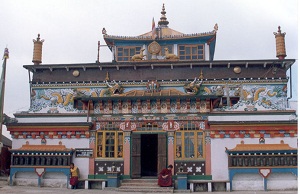
West Bengal, East India, Boating, Buddhist Monestery, Fort, Hill station, History, Musuem, Nature, Temple, Valley, Wildlife Sanctuary
Kalimpong is a hill station of West Bengal, India. This place is famous for ancient temples, churches and Buddhist monasteries. In 1866, this was added into the district of Darjeeling. Prior to China’s annexation of Tibet and Sino Indian War, Kalimpong was used as gateway in the trade between India and Tibet. At the outskirts of the city Indian Army 27 Mountain Division is located. Nepal culture can be seen more in this place.
What to see in Kalimpong:
Mangal Dham: This temple was constructed by Shri Krishna Pranami in 1993. In the memory of Guru Shri 108 Mangaldasji, this was constructed.
Catholic Church: In the Kalimpong area this is the largest Catholic Church. During the British rule this church was constructed. Architect of this church is Hardy.
Flower Nurseries: Plenty of nurseries are located in this town. Flowers of this nursery are exported. Commercial flower nurseries of West Bengal are located here.
Deolo Hill: It is one of the hills on which Kalimpong is situated. This is the highest hill point of this town.
Dr.Graham’s Home: This is the educational institute which was founded by Dr.John Anderson Graham in 1900. Area covered by this institute is 500 acres. This place also consists of clothing department, hospital, Poultry, Dairy, Bakery and farmhouse.
Tharpa Choling Monastery: This is one of the 3 monasteries found in this town. It was established in 1937.
St.Therasa’s Church: This was built by local people in beautiful Tibetan architecture. On the walls of the church inscriptions of Biblical themes can be seen.
Kalimpong Arts & Crafts centre: With the intension to promote handicrafts and to provide employment opportunity to the local people this was established in 1897.
Lepcha Museum: Lepcha Community culture can be learn in this museum. Articles of worship, musical instruments, and manuscripts can be seen here.
Gouripur House: It is located 2kms away from the city. This is the favourite place for Rabindranath Tagore. In this place he had written several poems.
Teesta Bazaar: Artifacts and Handicrafts are the major attraction of this Bazaar. This is the best shopping place.
Kalimpong Science centre: This is the best place to improve science awareness among the students and to the visitors.
What to see around Kalimpong:
Neora National Park: It is located 32kms away from the town. Major animal attractions of this park are Gora, Himalayan black bear, Wild dog, Red Panda. Reptile attractions of this park are King cobra, blind snakes, Pit Viper.
Durpin Dara Hill: It is located 3kms away from the town. From this place visitors can enjoy the Himalayan ranges. River Teesta can also be seen from here.
Pedong Monastery: It is located 20kms away from the town. This was built by Bhutan’s King in 1837.
Getting to Kalimpong: This place is well connected though road. From other cities in Sikkim buses are available to reach this place. Nearest railway station is at Jalpaiguri. This place is well connected with all the major cities. Bagdogra is the nearest airport.
Getting around Kalimpong: Buses, Jeeps, taxis and ferries are available to visit the surrounding places of Kalimpong.
Best time to visit Kalimpong: Best time to visit this place is between March to May and October to December.
Where to stay in Kalimpong: Several hotels are available to stay in Kalimpong. Cost of budget hotels starts from Rs.200. Cost of luxury hotels is around Rs.2000. Nurseries are the additional attractions in some hotels.
Where to eat in Kalimpong: Plenty of restaurants are available to eat in Kalimpong. China Garden is the best place to have Chinese food.
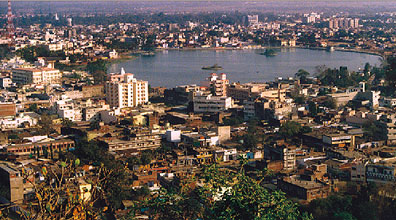
Jharkhand, East India, Boating, Caves, History, Musuem, Nature, Rock Formations, Temple, Valley, Water falls, Wildlife Sanctuary
Ranchi is the capital of Jharkhand, India. Rachi name is derived from the Oraon Village, Archi. Oran word is used for bamboo grove. One of the legends of this place is, once a farmer beat the spirit with bamboo stave. The Spirit shouted archi, archi, archi and vanished. This place is famous for beautiful valleys, barren rocks, green hilly regions and waterfalls. Ranchi is rich in natural wealth such as mica, copper, coal and iron. Wild life is another major attraction of this site. This is the home town of Indian Cricket captain Mahindra Singh Dhoni. Tribal culture is more in this village. Metal crafts, toys, wood products, Bamboo products are worth buying of this place.
What to see in Ranchi:
Ranchi Lake: It is located at the heart of the city. This place is most famous for picnic spot .Boating is the major activity conducts here.
Rachi Museum: Major attractions of this museum are ethnological objects, numismatics, arms, stone sculptures, terracotta sculptures, prehistoric implements.
Ram Rekha Dham: It is believed that during the 14 years exile, Lord Rama along with Lakshmana and Sita stayed here for few days. Temple is located inside the cave.
Tagore Hill: This is located near Albert Ekka Chowk. Height of this hill is 300feet. This is named after the poet Rabindranath. It is believed that he love this place for its scenic beauty.
Other attractions of Ranchi: Other attractions of Ranchi are Rock Garden, Kanke dam, Yogoda Satsanga Sakha Math, Gonda Hill, Birsa Deer Park, Ranchi University Museum, Nakshatra Van, Birsa Zoological Park, Pahari Mandir.
What to see around Ranchi:
Surya Temple: It is the major nearby attraction of the city. It is located 39kms away from the city. Major attraction of this city is statue of Chariot with 7 horses and 18 wheels. This was built by Sanskrit Vihar.
Deori Temple: This is one of the most ancient temples which are dedicated to Goddess Kali. Idol has 16 arms. Pillars of this temple are made up of sand stone.
Hundru Falls: These are located 45kms away from the city. Different rock formations are the major attraction of this site.
Jagannath Temple: It is located 10kms away from the city. This was constructed by the king of Barkagarh, Jagannathpur Thakur in 1691. Architecture style is so attractive.
Panch Gagh Falls: It is one of the best picnic spots near Ranchi. It is located between Road and Chakradharpur Road. These falls are 6kms away from Khunti Village.
Other attractions near Ranchi: Other attractions near Ranchi are Jonha Falls, Dassam Falls, Muta Crocodile Breeding centre, Angrabadi Temple Complex, Hirni Falls.
Getting to Ranchi: Ranchi is well connected with Road, Railway and air ways. From the cities such as Jamshedpur, Patna, Dhanbad, Chaibasa etc buses are available to reach this place. From all the important cities of India trains come to this place. Ranchi airport is located at Hinoo. It is well connected with Mumbai, Pune, Kolkata and Delhi.
Getting around Ranchi: Buses, Autos, Taxis are available to visit the surrounding places of Ranchi.
Best time to visit Ranchi: Ranchi can be visited throughout the year but better to avoid during peak summer season as temperature is too hot.
Where to stay in Ranchi: Plenty of accommodations are available to stay in Ranchi starting from Budget hotels to luxury hotels. Cost of budget hotels are below Rs.1000 per night. Cost of luxury hotels is about Rs.4000.
Where to eat in Ranchi: Plenty of restaurants are available to eat in Ranchi. All the restaurants serve continental cuisines. Cafe Coffee, Dosa Plaza, KFC, Subway, Dominos have outlets in Ranchi.
Murshidabad is a city in Murshidabad district of West Bengal, India. During the Mughal Period this city acted as capital of Bengal. This place is known for British Colonial history. Several historical sculptures of British and Mughal era can be seen in this place. Silk Textiles is most famous in this city. Plenty of patterns in light weight sarees can be seen here. Bera Utsav is most famous festival in Murshidabad.
What to see in Murshidabad:
Imambara: This was built in 1847 by Nawab Nazim Mansoor Ali Khan Feradun Jah. Across India this is the largest Imambara. Cost of this Imambara is around Rs.6lakhs.
Katra Masjid: This was built in 1723 by Nawab Murshid Quli Khan. In West Bengal this is the oldest Masjid.
Hazarduari palace: This is the major attraction of the city. In this Palace thousand doors can be seen. Earlier this was used to conduct meetings of Nawabs. This is the 3 stored building which was built in 1837 by Duncan Mcleod.
Nasipur Palace: It is one of the largest temples in the district. Lord Ramachandra Temple is located inside the Palace.
Nimak Haram Deori: This is the main gate of jafarganj Palace. This place got importance as Nawab Siraj Ud Daulla was killed here.
Jafarganj Cemetery: Area covered by this cemetery is 3.51 acres. From Mir Jafar to Humayun Jah tombs are placed here.
Footi Mosque: Tourists visit this place for unique architecture style. It was not completed fully.
Wasef Manzil: It is full of Marble statues and staircases. This is very close to Hazarduari Palace which was built by Nawab Wasef Ali Mirza.
Jahan Kosha Cannon: In the early 17th century this was built by Craftsman Janardan Karmakar of Dhaka. It is very large Cannon. Weight is 16,880 lb and Length is 17.5feet.
Other attractions of Murshidabad: other attractions of Murshidabad are Khosh Bagh, Tomb of Alivardi Khan, Tomb of Azimunnisha Begum, Tomb and Mosque of Murhsid Kuli Khan, Tomb of Seraj Ud Daullah, Tomb of Mir Mardan and Tomb of Sujauddin.
What to see around Murshidabad:
Murshidabad District Museum: It is located at Jiganj which is 10kms away from the city. There are 3 galleries in this museum. Major attractions of this museum are Dashavatara Pillar, black stone Sculpture, antique coins, early medieval inscriptions, ancient terracotta Potteries.
Bhavaniswar Mandir: It is one of the best examples for terracotta sculptures. This was established in 1750AD by Queen of Natore. It is located 23kms away from the city.
Cossimbazar: Located at Confluence of Bhagirati River Channels. Major attraction of this place is Cossimbazar Palace. It is most beautiful with terracotta walls and 100 pillars with a lotus finial.
Getting to Murshidabad: Murshidabad is well connected with road and railways. From the cities such as Durgapur, Krishnagar, Malda, Bolpur, Suri, Rampurhat, Burdwan, Kolkata buses come to this place. From the cities such as Ahmedabad, Chennai, Mumbai, Howrah trains come to this place. Nearest airport is located at Kolkata.
Getting around Murshidabad: Autos, Taxis and buses are available to visit the surrounding places of Murshidabad.
Best time to visit Murshidabad: Best time to visit Murshidabad is between October to March.
Where to stay in Murshidabad: Plenty of accommodations are available to stay in Murshidabad. But only budget and midrange hotels are available. Best hotels in Murshidabad are Indrajit Hotel, Majusha Hotel, Baharampur Tourists Lodge, Hotel Sagnik.
Where to eat in Murshidabad: Plenty of restaurants can be find in this place. Local Cuisines are almost similar to Bengali Cuisines. This is the best place to find Mughal and Bengali combination cuisines. Most popular food here is Misti Polao, Gobindo bhog Chaal, Murshidabad Murgi Biryani.
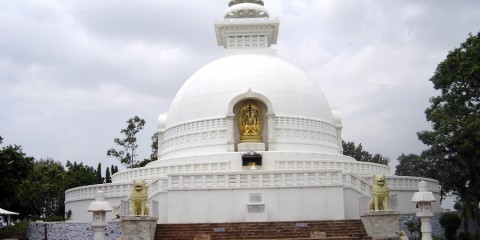
Bihar, East India, Boating, Caves, Fort, History, Musuem, Nature, Temple, Trekking
Rajgir is a city in Nalanda district of Bihar. It was the first capital of Magadha Kingdom. Rajgir was most ancient city dates back to 3000 years old. According to Hindu mythology this was ruled by Jarasandh of Mahabharata. Wrestling match between Bheema and Jarasandh was conducted here. Mahavir spent 14 years of life in this city. City is divided into two parts. First part is surrounded by 7 hills and other part was established by King Ajatsharu. Major attractions of this temple are Hot springs, Trekking and Rope way. Rajgir Dance Festival and Makar Sankranti Mela are most famous festivals in Rajgir.
What to see in Rajgir:
Sonbhandar Caves: These caves are also known as Swarna Bhandar which means Store of Gold. It is believed that treasury of King Bimbisara present in this cave. Sonbhandar caves are most ancient and rock cut caves which were dates back to 500BC.
Pippala Caves: These are situated on the top of the hill, Vaibhava Hill. It is a house for the monks. It is believed that Lord Buddha has done meditation in these caves. These are natural caves.
Hot springs: These are situated at the foot of Vaibhava hills.
Vishwa Shanti Stupa: This is located on the top of Ratnagiri hill. With the help of ropeway visitors has to reach this place. As a symbol of world peace this was built by Japanese. There are 4 statues of Lord Buddha on each corner.
Ajatshatru Fort: This was built by Ajatshatru king of Magadha in 6th century. At the top of the fort 6.5sq.m stupa stands.
Jivaka’s Mango Garden: Jivaka used to be royal Physician of Magadha rulers namely Ajatshatru and Bimbisara.
Ashoka Stupa Peak: This is one of the attractions of Rajgir which was built by Emperor Ashoka with bricks.
Ancient 40kms wall: This is popularly known as Cyclopean wall. It is one of the few important pre-Maurayan stone structures.
Jain Temples: In Rajgir there are 26 Jain temples are situated. These are located on hill crest. Only way to reach this place is through trekking.
Other attractions of Rajgir: Other attractions of Rajgir are Monastery Venuvana Vihara, Ghora Katora Lake, Bimbisara Jail, Gymnasium of Jarasandh, Nava Nalanda Maha Vihira, and New Venu Vana Vihara.
What to see around Rajgir:
Ruins of Nalanda University: It is located 15kms away from Rajgir. These ruins are located in the Nalanda town. It is the oldest Buddhist University.
Nalanda Archaeological Museum: Four main galleries are included in this museum. Main hall consists of Nagaraj Sculptures, Parshvanath sculpture, Bodhisattva Avalokiteshvara, Bhumisparsh postures etc…This was established in 1971. It is located 13kms away from Rajgir.
Other attractions near Rajgir: Other attractions near Rajgir are Nalanda, Bihar Sharif, Pawapuri, Kundlapur, Swarajpur, and Barabar Caves.
Getting to Rajgir: Rajgir is well connected with road and railways. From the cities such as Bihar Sharif, Pawapuri, Nalanda, Patna, Gaya etc… buses are available to reach to this place. Nearest airport is located at Gaya which is 68kms away from this place. Gaya airport is well connected with Varanasi, Kolkata and Delhi.
Getting around Rajgir: Buses, Taxis, Tonga’s are available to visit the surrounding places of Rajgir.
Best time to visit Rajgir: Best time to visit Rajgir is between October to March.
Where to stay in Rajgir: Only budget and midrange hotels are available to stay in Rajgir. Bihar State Tourism Development Corporation is maintaining 3 tourists’ bungalows for the tourists.
Where to eat in Rajgir: Only limited restaurants are available to eat in Rajgir. Almost all the restaurants serve only vegetarian. Chinese, Punjabi and North Indian Cuisines are available.
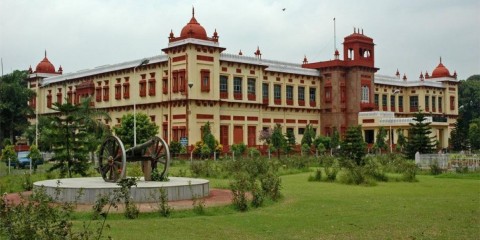
Bihar, North India, Fort, History, Masjid, Musuem, Nature, Temple, Wildlife Sanctuary
Patna is second populous city in East India. It is the capital of Bihar. Patna name is derived from Patan, name of Hindu Goddess Patan Devi. Pataliputra is the name of ancient Patna. Modern Patna is located on the banks of river Ganga. This is the most sacred place for Sikhs as Guru Gobind Singh; last Sikh Guru was born here. This place was developed by Udayi son of Ajatshatru, Magadha King. During the rule of Maurya Kings, Patna enjoyed the Golden period. Most famous festival is Chhath festival. After Diwali, this festival celebrates for 6 days.
What to see in Patna:
Gandhi Maidan: This place had witnessed to several Indian Freedom Movements such as Quit Indian Movement, Champaran. It is popularly known as Patna Lawns.
Folk Art Museum: It is located at Chhajjubagh. Major attractions of this museum are folk Jewellery, Costumes and Musical instruments. Terracotta collections and Ceramic Specimens also can be seen here.
Patna Museum: This looks most beautiful in Mughal and Rajput architectural style. Major attractions of this museum are 16m long fossilised tree (200 million years old), stone and metal sculptures of Maurya and Gupta era.
Takht Sri Patna Sahib / Gurudwara Patna Sahib: In the memory of Guru Gobind Singh this was built. He was the last (10th) Sikh Guru. Guru was born on 22nd December 1666 here.
Agam Kaun: This is oldest and most important archaeological site. It was built by Emperor Ashoka for torturing people.
Patna Devi Temple: This temple consists of two temples namely Bari Patna Devi Temple and Chhoti Patna Devi Temple.
Mahavir Mandir: This is one of the most famous temples in Bihar which is dedicated to Lord Hanuman.
Sanjay Gandhi Jaivik Udyan: This is one of the 16 largest zoos in India. It consists of 800 animals and 300 species of trees.
Gol Ghar: It is a magnificent beehive shaped building which was established by Captain John Garstin in 1786.
Other Attractions of Patna: Other attractions in Patna are Phulwari Sharif, Mahatma Gandhi Setu, College of Arts & Crafts, Jalan Museum, Jalmandir Temple, Sri Krishna Science Centre, Patna Planetarium, Patri Ki Haveli, Mangal Talab, Pathar ki Masjid, Khuda Bakhsh Oriented Library, Bihar Police Museum, Harmandirji, Kumhrar Kumhrar, Meetan Ghat, and Old Opium Warehouse.
What to see around Patna:
Maner Sharif: It is located 30kms away from Patna. This site is famous for 2 tombs namely Shah Daulat and Makhdoom Yahya Maneri. In 1608, Makhdoom was died here.
Nalanda: It is the learning centre from 5th century to 1197 CE. Great University was ruined. It is located 35kms away from Patna.
Vaishali: This place is famous for World Peace Pagoda, Kutagarasala Vihara, and Relic Stupa. It is associated with Lord Mahavira and Lord Buddha. This place is situated 55kms away from Patna.
Getting to Patna: Patna is well connected with road, railway and air ways. Trains from Bangalore, Chennai, Kolkata, Delhi, Mumbai halt at this place. From several cities of Bihar buses come to this place. Patna International airport is well connected with Bangalore, Kolkata, jaipur, Delhi, Mumbai etc…
Getting around Patna: Buses, Autos and Taxis are available to visit the surrounding places of Patna.
Best time to visit Patna: Best time to visit this place is between November to March. Rush will be more during March as Patliputra Mahotsava is held.
Where to stay in Patna: Plenty of accommodations are available to stay in Patna starting from Budget to luxury hotels. State Tourism Department is also maintaining tourist’s bungalows for tourists.
Where to eat in Patna: Plenty of restaurants are available to eat in Patna. Besides local food, Chinese and Indian food is also available.
Bishnupur is a town in Bankura district of West Bengal, India. This place is famous balucheri sarees and terracotta temples. Architecture of Bishnupur is most brilliant for its terracotta work. Malla Kings developed this unique work. This is known as city of temples. For the shopping lovers worthy things can be purchased are Baluchari Sarees and terracotta Products such as Ganesha, elephants, horses, disks, handmade jars.
What to see in Bishnupur:
Jorebangla Temple: This was built by King Raghunath Singha Dev II in 1655 AD. It was constructed in Classical Chala Style. Terracota works and carved designs also found on the walls of the temple.
Acharya Jogesh Chandra Purakriti Bhawan: This is the museum related to archaeology and art. Visitors can see Palaeolithic era and Mesolithic era things in this museum. Other attractions of this museum are ancient day’s artifacts, coins starting from Gupta kings to Pal kingdom. Rare Photographs, manuscripts and paintings can also be seen here.
Shyamrai Temple: This temple is famous for carved roof architecture. Temple is in square shape. Garden around the temple is so attractive. Stories of lord Krishna can be seen on the walls in the form of carvings and pictures.
Pancha Ratna Temple: It is considered to the first Bengal temple in a creative manner. This temple was dedicated to Shyam Rai and constructed by King Raghunath Singh in 17th century.
Rasmancha: This was the oldest Pyramidal tower shaped brick temple. Turrets are surrounded to this temple. This was an idea of King Bir Himbira who belongs to 17th century.
Madanmohan Temple: In Late 17th century this was built by King Durjana Singh. It is one of the oldest temples of Bishnupur. Roof of this temple is curved with Pinnacle and Cornices over the top.
What to see around Bishnupur:
Siddheswar Temple: It is located 25kms away from the city and is situated in Bahulara. Unique designs on the walls of the temple are most attractive. Major shrines of this temple are Jai Parshwanath, Ganesh and Durga. Gajan is the famous festival in this temple which celebrates in March – April.
Susunia Pahar: It is located 62kms away from the city. This place is famous for Silialipi, Dhara, natural springs and Trekking.
Biharinath Hill: This place is famous for flora which is located 57kms away from the city.
Radhashyam Temple: It is located 65kms away from the city which was built during the reign of Chaitanya Singha in 1750. This was built in Terrocotta architectural style. Main idol of this temple is Lord Sri Krishna.
Getting to Bishnupur: Bishnupur is well connected with roadway. From other cities in West Bengal is well connected to Bishnupur through roadway. Jeeps, cars and buses reach to this place. Bishnupur is having small station only limited trains stop in this place. Nearest railway head is located at Howrah. From this station autos, cars are available to reach Bishnupur. Nearest airport is located at Kolkata.
Getting around Bishnupur: Almost all the temples are located very near to each other. Walking is the best way to reach the places in Bishnupur. Cycle rickshaws are also available to reach the temples of the city. Autos, taxis, and buses are available to visit the surrounding places of Bishnupur.
Best time to visit Bishnupur: Bishnupur welcomes the visitors throughout the year. But tourist rush will be more during the Bishnupur festival season.
Where to stay in Bishnupur: Only budget and midrange hotels are available. Tourist’s lodges are also available. These are cheaper than hotels.
Where to eat in Bishnupur: Limited restaurants are available to eat in Bishnupur. Almost all the restaurants serve Bengali food and sweets. Only limited restaurants offer Chinese, South Indian and north Indian cuisines.
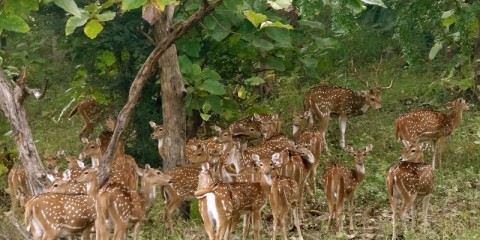
MP, Central India, Elephant Rides, Musuem, Rock Formations, Temple, Water falls, Wildlife Sanctuary
Panna is a city in Panna district of Madhya Pradesh. This place is renowned for diamond mines and Panna National Park. On North East branch of Vindhya Range a large group of diamond deposits exists. Several hillocks in this place are the best place for the Photographers.
What to see in Panna:
Panna National Park: This is the most attractive place in Panna. Area covered by this park is 542.67sq.kms. This was established in 1981 by Government of India. Ken River flows from the reserve. This creates most beautiful waterfalls in the reserve. Stone paintings are the major attraction of this reserve. These paintings belong to Neolithic Era. Elephant rides, Jungle safaris are other attraction of this park.
In this park more than 200 species of rare birds can be seen. Major animal of this reserve apart from Tigers are Gharial, Sloth Bear Pangolin, Four horned antelope, Indian Wolf. Other species of cat family such as Carcel, Leopard, and Rusty Spotted Cat can also be seen here. Ken River has several aquatic animals, turtles and huge fish species. For this park there are two entrance gates namely Hinouta and Madla.
Karnavati Interpretative Centre: This centre offers introduction to the history and ecology of the Panna National park area.
Baldeoji Temple: Paladian architectural style can be seen in this temple. It is the replica of St.pauls Cathedral in London. Under the guidance of Manly this was constructed.
Mahamati Prannathji Temple: During Sharada Purnima thousands of devotees come to this place. Temple built in 1692. It is believed that for 11 years Mahamati Prannathji lived here.
Ken Gharial Sanctuary: Wild life lovers will enjoy this place. This place is most famous for 6meter long fish eating Gharial. It is very species of Crocodile.
Jugal kishoreji Temple: This was constructed between 1758 to 1778 in Bundelkhandi Style by Raja Hindupat Singh.
Padmavati Devi Temple: This is the most ancient temple. Navratri festival celebrates grandly in this place.
What to see around Panna:
Raneh Falls: These falls are surrounded by beautiful rock formations. Major attraction of this place is Canyon of Crystalline Granite. Different varieties of Granites can be seen here. It is amazing to see gray, green, misty white, red and pink colour Granites. It is located 45kms away from Panna.
Pandav Waterfalls: It is breathtaking view. Height is 100feet. It is believed that Pandavas lived in this place. Major attractions of this place are angling and boating. It is located 12kms away from Panna city.
Gatha Falls: In this region Gatha Falls is the most beautiful falls. It is located 35kms away from the city. These falls are one of the highest falls in India.
Getting to Panna: Only way to reach this place is by road. From the cities such as Khajuraho and Jhansi buses are available to reach this place. Nearest railway station is at Jhansi which is 205kms away from Panna. Satna is the small railway junction near Panna which is 90kms away from Panna. Nearest airport is at Khajuraho.
Getting around Panna: Taxis and Jeeps are available to visit the surrounding places of Panna. Elephant rides and open top jeeps are available to enjoy the tiger reserve.
Best time to visit Panna: To enjoy the beauty of nature best time has to be chosen. Best time to visit this place is between October to March.
Where to stay in Panna: Plenty of accommodations are available to stay in Panna. All range of hotels along with several resorts is available here to stay. Best hotels are Pashan Garh, Jewel of the Jungle, Ken River Lodge.
Where to eat in Panna: Plenty of restaurants are available to eat in Panna.
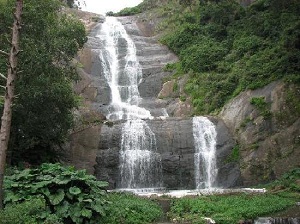
Tamil Nadu, South India, Boating, Caves, Hill station, History, Musuem, Nature, Temple, Valley, Water falls, Wildlife Sanctuary
Kodaikanal is a city and hill station in Indigo district of Tamilnadu. Meaning of Kodaikanal is The Gift of the Forest. Other name of this city is Princess of Hill stations. It was established in 1845. First Westerner to visit this place is BS Ward, British Lieutenant in 1821. Most famous during the festival season is fruits and flower shows and Boat Races. Summer festival and Carnival at Mother Salette Church are most famous festivals in Kodaikanal.
What to see in Kodaikanal:
Kodaikanal Solar Observatory: This is the science museum. During the peak seasons this place opens every day but during off seasons it opens only on Fridays.
Kodai Lake: Boating in this lake is most memorable to all the visitors of this place.
Shembaganur Museum of Natural History: In this place more than 500 taxidermy collection of insects, birds and animals are placed. Tuesday is a holiday to this museum
Green Valley View: It is located 6kms away from Kodaikanal Lake. This valley is so deep, dense and dangerous. This is popularly known as Suicide point.
Kurinji Andavar Temple: This temple is dedicated to Lord Murugan. Other attraction near this temple is Kurinji Flowers. These flowers blossoms once in every 12years.
Other places to see In Kodaikanal: Other places to visit in Kodaikanal are Luthern Church, Bryant Park, Bear Shola Falls, Flora and fauna Museum, Shenbaganur Museum, Dolmen Circle, Coaker’s Walk.
What to see around Kodaikanal:
Berijam Lake: Prior permission from forest department is essential to visit this place. It is located 20kms away from Kodaikanal. Major attraction near this lake is spotted deer, panthers, Bison and snakes. This water used as a drinking water source to nearby villages so this place is not used for boating.
Pillar Rocks: It is situated 7kms away from the city. 3 giant rock pillars are situated here. Near this place public gardens are also most attractive to the visitors.
Guna Caves: Earlier name of these caves is Devils Kitchen. Only sections of the caves are seen now as it is most infected due to bats. It is located 8kms away from the city.
Silent Valley View: It is located on Berijam Lake Road which is 10kms away from the city. Best time to visit this place is during late afternoon and early morning. Better to avoid taking children to this place as valley is so deep.
Dolphin’s nose: it is located 8kms away from the city. This is the best place to see the birds view. For the natural lovers this is the best place to visit.
Silver Cascade: It is located 8kms away from Kodaikanal. This place is famous for waterfalls.
Other places to visit around Kodaikanal: Other places to visit around Kodaikanal are Subrahmanya Temple, Christ the king Church, Perumal Peak.
Getting to Kodaikanal: Kodaikanal is well connected though road ways. From the cities such as Coimbatore, Dindigual, Palani, Trichy, Chennai plenty of buses are available to reach Kodaikanal. Nearest railway station is Palani which is 64kms away from the city. Madurai is the nearest airport to Kodaikanal.
Getting around Kodaikanal: Buses, Vans, Taxis, Rented Bicycles are available to visit the surrounding places of Kodaikanal.
Best time to visit Kodaikanal: Best time to visit this place is between April to June and September to October.
Where to stay in Kodaikanal: Plenty of hotels, resorts are available at Kodaikanal. Home stays are also available to stay in Kodaikanal.
Where to eat in Kodaikanal: Plenty of restaurants are available to eat in Kodaikanal. Both vegetarian and non vegetation food is available. Vegetables, Fruits are very cheap in this place as cultivation is more.

Kerala, South India, Beach, Boat race, Boating, Fort, History, Masjid, Musuem, Nature, Temple, Trekking, Water falls, Water Sports, Wildlife Sanctuary
Kochi is located in Ernakulam district of Kerala. Other name of Kochi is Cochin. This is also known as God’s Own Country. After Muziris Port was destroyed Kochi was developed as best trade centre. Dominated cultures in this town are Jewish settlers, Arab and Christians. Oldest group of Jews are located here. Curios, arts, handicrafts, mobile phones, electronic items, Coir products, Ayurvedic Fabric are most famous and worth buying in Kochi. Cochin Carnival and Indira Gandhi Boat race are most famous festivals in Kochi.
What to see in Kochi:
Jewish Synagogue: This Synagogue is the oldest one among 53 member countries of Common wealth Nations. Cochin Jewish Community instructed this synagogue.
St.Francis Church: It is the oldest European church in India which was constructed in 1503. Explorer Vasco Da Gama was buried at this place.
Jew Town: This place is famous for trade and Commerce during 700BC.
Mattancherry Palace: This palace was gifted to Raja Veera Kerala Vara .It was built in 1557 by Portuguese. Temple’s are also placed inside this palace.
Pareekshit Thampuran Museum: 19th century paintings are most attractive in this museum. Other attractions of this museum are Plaster of Paris sculptures, ancient coins, monuments.
Other place to see in Kochi: Other attractive places to see in Kochi are kashi Art Caf, Santhagopala krishnaswamy Temple, Indian naval Maritime Museum, Pierce Leslie Bungalow.
What to see around Kochi:
Wellingdon Island: It was artificial manmade Island. This was named after British Governor Lord Willingdon. Central institute of Fisheries, Kochi Naval base of Indian Navy are located here. It is situated 6kms away from Kochi.
Cherai Beach: It is located 39kms away from the city. Sunbathing, water sports and Swimming are most important activities of this place. In this beach tiny Island is located which can be reached by boat.
Fort Kochi: It is located 7kms away from Kochi. Old Victorian Era stayed bungalows are most attractive in this place.
Princess Street: It is located in Fort Kochi which is located 7kms away from the city. Major attractions of this place are French, British, Dutch and Portuguese Bungalows.
Mangalavanam: This is the Bird sanctuary. Huge variety of migratory birds can be seen here. Major attractions of this sanctuary are Eurasian Otter, Bandicota, House rat, Palm Squirrel etc… It is located 10kms away from the city.
Other places to visit near Kochi: Other places to visit near Kochi are Santa Cruz Cathedral, Bolghatty Palace, Shiva temple, Museums of Kerala History, Kochi beach, Vamanamoorthy Temple, Gurudwara Sri Guru Singh Sabha, Subhash Park, Chottanikkara Temple.
Getting to Kochi: Best way which connects the city to other place is by road. From the cities such as Goa, Bangalore, Mangalore, Kozhikode etc buses are available to reach this place. Nearest railway station is at Ernakulam. Cochin International Airport is the nearest airport of Kochi.
Getting around Kochi: Taxis, Autos and buses are available to visit the surrounding places of Kochi.
Best time to visit Kochi: Best time to visit this place is between October to April.
Where to stay in Kochi: Plenty of hotels are available to stay in Kochi. Tourist rush will be more between November to February so advance booking of hotels is essential. Boutique hotels are available in Fort Kochi. Price of luxury hotels are ranging between Rs.9000 to Rs.20,000. Home stays are also available whose cost is ranging between Rs.350 to Rs.800.
Where to eat in Kochi: Plenty of restaurants are available to eat in Kochi. Starting from Rs.50 meals are available. Banana Leafs are preferred to serve the food in all the restaurants.
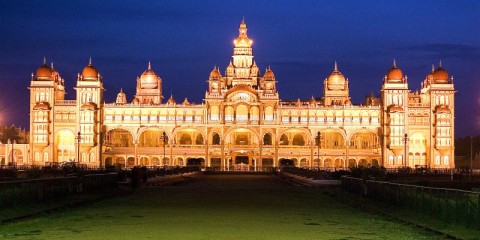
Karnataka, South India, Boating, City of Palace, Elephant Rides, History, Musuem, Nature, Temple, Water Sports, Wildlife Sanctuary
Mysore is the 3rd largest city in Karnataka State of India. From 1399 to 1947, Mysore is the capital to Mysore Princely kingdom. It is famous for its palace. Major industry in this city is Tourism. During the Dasara Festival season tourists rush will be more. This festival celebrates grandly for 10 days. Celebrations were first time started in 1610 by King Raja Wodeyar I. According to Hindu mythology, demon Mahishasura ruled Mysore. He was killed by Goddess Chamundeshwari. Due to this Dasara Festival celebrates grandly here. For the shopping lovers incense, Sandalwood, Silk products and traditional paintings are worth buying.
What to see in Mysore:
Maharaja’s Palace: Interior of this palace is most attractive with different colours, mirrors, stained glass. Paintings of Edwardian Era are looks so beautiful.
St.Philmena’s Church: This was built in neo Gothic Style between 1933 to 1941. Stained glass windows are used in this construction.
Mysore Zoo: Major attractions of this Zoo are Rhinos, Birds, Bears, Elephants, Tigers, Primates etc… This was established in 1892.
Sri Chamundeswari Temple: Entrance gate of this temple is 40meters height. This temple is dedicated to Goddess Chamundeswari. This was constructed in 11th century. Major attraction of this temple is huge statue of demon king Mahishasura in front of this temple. It is located on Chanmundi Hills.
Mysore Palace: It is the major attraction of the city. This is the fourth palace constructed in the same site. It is most beautiful with mirrors.
Regional Museum: This was established to create interest about the nature and to explain about what is the interrelationship between Plants and animals. It was established in 1995.
Rail Museum: In this museum several types of trains can be seen including first Indian made steam engine.
Other attractions of Mysore: Other attractions of Mysore are Bylakuppe Buddhist Golden Temple, GRS Fantasy Park, Jayachamarajendra Art Gallery, Somnathpur Temples, Datta Peetham, St.Philomena’s church, Melody World Wax Museum, Jagamohan Palace.
What to see around Mysore:
Brindavan Gardens: Earlier name of these gardens is Krishnarajendra Terrace Gardens. It is located 19kms away from Mysore. Major attraction of this gardens is fountains, numerous pools, trees, Shrubs, flower beds, beautiful lawns.
Srikanteswara Temple: It is located 25kms from Mysore. This temple was constructed in Dravidian style.
Balmuri and Edmuri Waterfalls: These waterfalls are most famous. Waterfalls are located 3kms away from Mysore. Water games and Swimming are most popular activities of this place.
Kesava Temple: It is located 40kms away from Mysore. This was built in 1268AD. It is one of the Hoysala Period Temples.
Ranganathittu Bird Sanctuary: On the river Cauvery this is located on the small Island. It is located 18kms away from Mysore. Major attractions of this sanctuary are terns, herons, White necked storks, Painted Storks etc…
Getting to Mysore: Mysore is well connected with road and railways. From all the major cities such as Chennai, Mangalore, Bangalore, etc buses and trains are available to reach to Mysore. Nearest airport is located at Bangalore which is 140kms away from Mysore.
Getting around Mysore: Tangos and Autos are available to visit the surrounding places of Mysore.
Best time to visit Mysore: Between September to March is the best time to visit Mysore.
Where to stay in Mysore: All type of hotels such as budget range, Midrange and luxury hotels are available to stay in Mysore. Cost of budget hotels is ranging between Rs.500 to Rs.800 per day. Luxury hotels are providing services such as Ayurvedic Massages, multi Chinese restaurants, gyms, swimming pools.
Where to eat in Mysore: Plenty of restaurants are available to eat in Mysore. Idly and Dosa along with different variety of chutneys are most famous in Mysore.
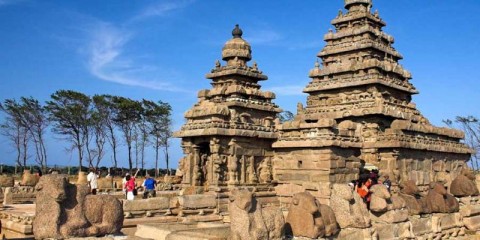
Tamil Nadu, South India, Beach, Boating, Caves, History, Musuem, Nature, Rock Cut Temples, Rock Formations, Temple, Water Sports
Mahabalipuram is an ancient historic town located in Kancheepuram district of Tamilnadu. Other names of this town are Mallapuram and Mamallapattana. Mahabalipuram means city of Great Bali. This place is famous for Stone temples and Stone Carvings. Almost all are built between 7th century and 9th century. Narashimhavarman, Pallava King played a major role in the development of this town during 17th century. Britishers established Modern Mahabalipuram in 1827. Vibrant fence festival is most famous in this town. Stone Sculptures are worth buying at this place.
What to see in Mahabalipuram:
Five Rathas: It is a rock cut temple. This is named after Pandavas in Mahabharata which was built in 7th century. Pallavas built this temple. Five Rathas consists of status of 5 brothers on Pandavas including their wife Draupadi.
Shore Temple: 3 temples are located here, two temples belong to Lord Shiva and one temple belongs to Lord Vishnu. These temples belong to 8th century. Pallavas had constructed these temples in Dravidian style. Granite was used to build the temples.
Mahabalipuram Beach: It is one of the major attractions of the city. Most popular activities in the beach are motor Boating, Surfing, Diving and Sunbathing. Near this beach rock cut temples and Monolithic Rathas can also be seen.
Mahishamardini Cave: It is located in Chingleput district of Mahabalipuram. These caves belong to 8th century and it was dedicated to Mother Goddess. In the centre of the cave major attraction are Carvings of Murugan, Parvati and Shiva.
Descent of the Ganges: It is the rock cut monument belongs to 7th century. This place is famous for open air rock sculptures and Carvings.
Arjuna Penance: This place is famous for the carvings belong to 7th and 8th centuries. Height of this penance is 9meters and 30 meters long. Carvings of this penance belong to animals, birds and Gods.
Trimurti Cave Temple: It is located near Ganesha Ratha. Idols of Shiva, Brahma and Vishnu are placed here. This is most ancient rock cut temple which was built in 7th century.
Krishna’s Butterball: It is a large rock balanced on the hill side. Diameter of this rock is around 5m.
Other places to visit in Mahabalipuram: Other places to visit in Mahabalipuram are Dakshinachitra, Mamallapuram Light House, Mumu Surf Shop, Sculpture museum, Ganesh Ratha Temple, Dharmaraja Cave, and Little Art Gallery.
What to see around Mahabalipuram:
Varaha Cave Temple: This place is famous for the sculptures of Earth Goddess, Holding Bhudevi, and Lord Vishnu. This temple is dedicated to Lord Varaha who is the incarnation of Lord Vishnu. It was built in 7th century which is 27kms away from the temple.
Tigers Cave: It is located 5kms away from Mahabalipuram. This is rock cut temple dedicated to Goddess Durga.
The Crocodile Bank: It is located 14kms away from Mahabalipuram. Snake Farm, African Alligators, Indian Alligators are major attractions of this place.
Thirukalukundram: This temple is dedicated to Lord Shiva. It is located 15kms away from Mahabalipuram. Inscriptions in ancient Indian, English and Dutch Languages can be seen here.
Getting to Mahabalipuram: Only way to reach this place is by road. From cities such as Chennai, Hyderabad, Bangalore, Kochi, Thiruvananthapuram, Delhi buses are available to reach this place. Nearest railway station is located at Chengalpattu which is 29kms away from Mahabalipuram. Nearest airport is Chennai International Airport.
Getting around Mahabalipuram: Mahabalipuram is a small town. All the places in the town are very near to each other. So, best way to see the places in Mahabalipuram is on foot. Taxis and buses are available to visit the places near Mahabalipuram.
Best time to visit Mahabalipuram: Best time to visit this place is between October to March.
Where to stay in Mahabalipuram: Plenty of hotels are available to stay in Mahabalipuram. As beach is located in this town resorts are also available to stay near the beach.
Where to eat in Mahabalipuram: Plenty of restaurants are available to eat in Mahabalipuram. Almost all the restaurants offer non vegetarian. Vegetarian food is available on demand.
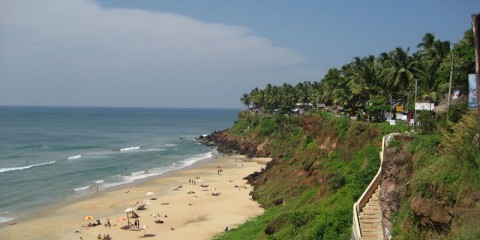
Kerala, South India, Beach, Boating, Fort, hiddent Beaches of Kerala, Masjid, Musuem, Nature, Temple, Water Sports
Varkala is located in Thiruvananthapuram district of Kerala. One of the major attractions of Varkala is Janardhan Swamy Temple which is 2000 years old. According to one myth, it is believed that this was built by Pandyan King when Lord Brahma instructed him to construct a temple to wipe off his sins. Worth buying in Varkala is Artifacts made up of Coconut shell. Most famous festival is Arattu festival. This festival celebrates for 10days during March – April.
What to see in Varkala:
Varkala Beach: This beach is the best place for swimming and sunbathing. Other name of this beach is Papanasam Beach. This beach consists of golden sand and it is surrounded with lush green areas.
Janardanaswami Temple: This is 2000 years old Temple. At the temple large bell is situated. It is believed that Lord Brahma came into the dream of Pandya King and asked to construct the temple to wipe off the sins. Idol of the temple submerged in the sea. With the help of fisherman it was taken out and temple was constructed.
Sivagiri Mutt: This was constructed in 1904 by Sree Narayana Guru who was the Social Reformer and famous Philosopher. This was the residence place of Guru till 1928. Tomb of Narayana Guru can also be seen here.
Vakarla Tunnel: It is one of the historic sites built by Britishers to established inland waterways. Construction of this way started in 1860; it has taken 14years to complete this project.
Vakarla Lighthouse: British rulers constructed this in 18th century. This is the best example for colonial style of architecture.
What to see around Varkala:
Sarkara Devi Temple: It is located at Chirayinkeezhu village which is 14kms away from Varkala. Most famous festival celebrates in this temple is Kaliyoot. As per the Malayalam Month this celebrates during the month of March.
Ponnumthuruthu Island: Water Boat rides are most famous at this place. It is located 10kms away from Vakarla. This island was constructed before 100 years by Lord Shiva and Parvati. Jetty rides and boats are used to reach to this place.
Kappil Lake: It is located 8kms away from Vakarla. It is one of the nearby attractions of Vakarla. In this place backwaters of kerala merges into Arabian Sea. Bridge was constructed over the lake. With the help of this bridge one can see this lake and nearby places very clearly. Coconut groves are another attraction in this place.
Kaduvayil Thangal Dargah: This is dedicated to kaduvayil Thangal Saint. It is located between kallambalam and Attingal which is 14kms away from Varkala.
Anjengo Fort: It is located 11kms away from Vakarla. This fort was built between 17th to 18th centuries.
Kaduvayil Juma Masjid: This is dedicated to Kaduvayil Thangal who was the Muslim Saint. Other name is Kaduvayi Palli.
Getting to Varkala: This place is well connected with road ways. From Thiruvananthapuram and Kochi plenty of buses reach to this place. Varkala is having the railway station which is located between Thiruvananthapuram and Ernakulam. However all the trains do not stop at this place. So it is better to reach Thirvananthapuram Junction. Plenty of taxis are available to reach this place from Thiruvananthapuram. Nearest airport is located at Thiruvananthapuram.
Getting around Varkala: Taxis, Autos are available to visit the surrounding places of Varkala. Scooters and bikes will be given on rent to visit nearby places of Varkala.
Best time to visit Varkala: Best time to visit Varkala is between October to March.
Where to stay in Varkala: Plenty of accommodations are available starting from Budget hotels to luxury hotels to stay in Varkala. Home stays are also available at reasonable costs. Cost of home stays and budget hotels are below Rs.1000.
Where to eat in Varkala: Plenty of restaurants are available to eat in Varkala. For the non vegetarian lovers this is the best place. Tibetan, Italian, Mexican, Continental cuisines are also available.
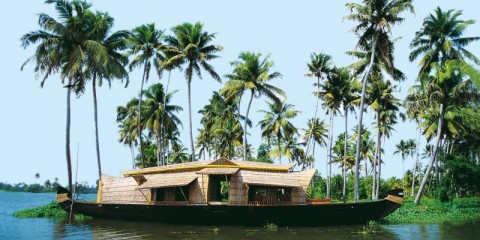
Kerala, South India, Backwater of Keral, Boating, Musuem, Nature, Temple, Wildlife Sanctuary
Kumarakom is backwater tourism in Kerala. It is situated on the backdrop of Vembanad Lake. Kumarakom is derived from the words Kuminja and Akam. Meaning of Kumarakom is Land which is formed by accumulation of sediments. This place is famous for huge variety of Flora and Fauna. Notable person who were born in this place are Alfred George Baker, Bishop Mar Alexader Choolaparampil and Umman Chandi. Boat race is most famous in this place. For the shopping lovers Urulis, decorated traditional door latches, household utensils, bronze lamps are worth buying in this place.
What to see in Kumarakom:
Kumarakom Bird Sanctuary: It is situated on the banks of Kavanar River. Area covered by this sanctuary is 14 acres. Tourists attracts towards Boating riding of this place. Main attractions of this bird sanctuary are Duck, Brahminy Kite, Darter, Moorhen, Cormorant, Heron, Egret, Owl, Cuckoo, and Waterfowl. These are local birds .To this sanctuary several birds come on migration also. Migratory birds are Flycatchers, Lark, Teal, parrot, Siberain Crane. These migratory birds come from two places. Some of these come from Siberia and some of the birds come from Himalayas.
Vabanad Lake: Another attraction of Kumarakom is Vembanad Lake. Other name of this lake is Kochi Lake. In Kerala this is the largest wetland. Nehru Trophy Boat race is the major attraction in this lake. Huge varieties of fishes can be seen in this Lake. It is estimated that there are 150 species of fishes in this lake.
Aymanam Village: other name of this village is Ayemenem. Arundati Roy’s Booker Prize winning novel is God of Small Things. This is set in this village.
Bay Island drift wood Museum: It is the only museum of its kind in India. This museum is the hard work of Mrs.Raji Punnoose. Drift wood museum is closed on Monday.
What to see around Kumarkom:
Aruvikkuzhi waterfalls: Height of these waterfalls is 100 m. It is located 2kms away from Kumarakom.
Pathiramanal: This became an Island when Young Brahmin had divided the lake to perform his prayers. This is the best place to see the migratory birds. It is located 5kms away from Kumarakom.
Muhamma: It is located 33kms away from Kumarakom. Most famous of this temple is Mukkal Vettom Ayyappa. It is believed that Lord Ayyappa trained at this Kalari.
Ettumanoor Shiva Temple: It is located 12kms away from Kumarakom. This temple is famous for unique sculptures and Paintings.
Vaikom Temple: Kerala style architecture is most attractive. This temple is dedicated to Lord Shiva. It is located 31kms away from Kumarakom.
Getting to Kumarakom: Kumarakom is well connected with roadways. From Cities such as Thiruvananthapuram, Cochin, Chennai, Mumbai, Bangalore buses are available to reach this place. Kottayam is the nearest railway head which is 15kms away from Kumarakom. Cochin International Airport is the nearest airport.
Getting around Kumarakom: Boats and Steamers are used to visit the places in Kumarakom. Taxis, Buses, Autos are available to visit the surrounding places of Kumarakom.
Best time to visit Kumarakom: Best time to visit this place is between September to February.
Where to stay in Kumarakom: House boats is the best option to stay in Kumarakom to enjoy the nature. But plenty of hotels are also available to stay in the town. All varieties of hotels are available. Cost of these house boats is raging between Rs.7000 to Rs.15000. Apart from hotels; resorts are also available to stay in Kumarakom.
Where to eat in Kumarakom: Plenty of Eating options in Kumarakom. Non vegetarian food is most famous in this place. Famous dishes of this place are Oysters, Crabs and Prawns cuisines.
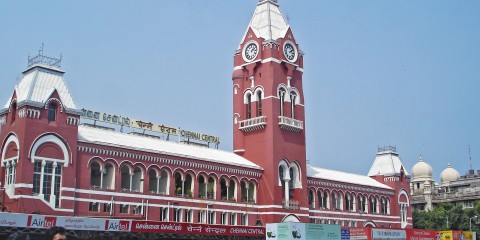
Tamil Nadu, South India, Beach, Boating, Fort, History, Masjid, Musuem, Nature,Temple, Tomb, Wildlife Sanctuary
Chennai is the capital city of Tamilnadu. In India it is the major educational, Cultural and Commercial centre. In Chennai second biggest film industry is located. Famous singers like Sivamani and AR Rahman belongs to Chennai. Since the first century several dynasties ruled this place. Few major dynasties are Pandya, Pallavas, Cheras, and Cholas. This city was majorly developed as commercial centre by Britishers. Major festivals of the city are Pongal, Indian International Leather Fair, and Music Festival.
What to see in Chennai:
Beaches: Plenty of beaches can be seen in this place. Marina Beach is the second longest beach. Other beaches are Cove long, Golden, VGP and Breezy.
MGR Film City: It is one of the major attractions of the city. This was established in 1994 in the memory of MG Ramachandra, actor and Politician.
Thousands Lights Mosque: For the Shia Community of India this place is most sacred place. This place is famous for its architecture. To illuminate the hall 1000 oil lamps are needed to lit.
Madras High Court: It is one of the 3 high courts of pre-independent India. Other high courts are located in Kolkata and Mumbai.
Marundeeswarar Temple: This temple is dedicated to Marundeeswarar Temple who is an incarnation of Lord Shiva. He is considered as God of Medicines. It is located in Thiruvanmiyar.
Government Museum: It is the oldest museum in India. In the college of St.George this was established in 1851. Major attractions of the museum are Decorative art gallery, Tanjore Painting gallery, Archaeology and Anthropology galleries etc.
Forts: Major forts of Chennai are Dutch fort (400 years old), St.Mary’s Church and Fort Museum, Anglican Church, Fort St.George.
Temples: Plenty of temples are located in Chennai. Major temples are Ashthalakshmi Temple, Ayya Vaikundar Nizhal Thangal, Kalingambal Temple, Kapaleeshwara Temple, Vadapalani Murugan Temple etc…
Other attractions of Chennai: Chennai has plenty of museums, parks, Libraries. Weavers Centre, Vivekananda House, Birla planetarium, Prakasam Salai are other major attractions.
What to see around Chennai:
Aignar Anna Zoological Park: It is located 35kms away from Chennai and located at Vandalur. Till 1855 this is inside the city but due to expansion this was shifted to outside of the city in 1877. Zoo consists of 170 species of reptiles, birds and mammals. Major attractions are Nilgiri Langur, Nilgai, Black buck, etc…
Kalakshetra: This is the dance institution situated 10kms away from the city. Training will be given in Music and Bharatnatyam. This was established by Rukmini Devi Arundale in 1936.
Sriperumbudur: Major attraction of this place is Rajiv Gandhi Memorial. Several temples are located in this place. It is located 40kms away from Chennai.
Getting to Chennai: Chennai is well connected with road, rail and airways. In Chennai there are 3 major railway stations. They are Tambaram, Egmore and Chennai Central. Chennai is having both domestic and international airports. From all the cities such as Cochin, Kolkata, Hyderabad, Guwahati, Ahmedabad, Delhi, Mumbai etc buses, trains and air buses are available to reach this place.
Getting around Chennai: Local trains, buses, taxis, autos are available to visit the surrounding places of Chennai.
Best time to visit Chennai: During summer season temperature is high. Visitors can notice heavy rainfall during monsoon season. Monson is from June to September and Mid October to Mid December. Generally tourists do not prefer to visit this place in summer and during monsoon seasons.
Where to stay in Chennai: Plenty of hotels are available to stay in Chennai. Budget and midrange hotels are available at Egmore, T Nagar, and Mylapore. Anna Salai is the place where luxury hotels are located.
Where to eat in Chennai: Plenty of restaurants are available to eat in China. Famous dishes are Puliogare and Tairchadam. Both domestic and international food is available.
Madurai is located in Madurai district of Tamilnadu. It is situated on the banks of river Vaigai. Madurai is the oldest cities in India. This place is famous for Meenakshi Sundareswarar Temple. City is having several names few names are City of four Junctions, City that never sleeps, Temple city, City of Jasmine, and City of Junction. Madurai played a vital role during independence period. Most famous festival in Madurai is Meenakshi Tirukalyyanam. This festival celebrates during April- May for 10 days. Millions of visitors visit this place during this festival season. Other famous festivals in Madurai are Pongal, Chithirai, and Festival of Cradle.
What to see in Madurai:
Meenakshi Temple: Madurai is famous for this temple. This consists of several enclosures. Major attraction of this temple is Beautiful stone work on the walls . Temple is having 14 gateway towers. Ayiram Kal Mandapam is most attractive. Original temple was sacked in 1310 by Malik Kafur, Muslim Invader. Current structure was built between 1623 to 1655 CE.
Mariamman Teppakulam: Main idol of this temple is in the tank. In this temple Lord Vigneshwara is worshipped.
Gandhi Museum: In India there are 5 Gandhi Museums. It is one of those museums. Primary attraction of this museum is Blood stained Dhoti of Gandhi along with photos of his lifetime.
Goripalayam Dargah: This dargah consists of 2 Muslim saint graves. Those saints are Hazrat Sulthan Shamsuddin Badusha and Hazrat Sulthan Alauddin Badusha.
Thirumalai Nayak Palace: This was built by Thirumalai Nayak in 16th century in Indo Sarcenic Architecture style. 3/4th of this palace was ruined. At present only 1/4th palace with 248 pillars.
Koodal Azhagar Temple: Huge statue of Lord Vishnu in front of the temple is the major attraction of this temple. Main Idol of this temple is Lord Vishnu. It is one of the oldest temples of south India.
Alagar Koli: This temple is famous for Sculptures and Stone Carvings. Lord Vishnu is worshipped in this temple.
Kazimar Big Mosque and Maqbara: It was constructed by Hazrat Kazi Syed in 13th century. It is the oldest Mosque in Madurai.
Pazhamudhir Solai: It is one of the six abodes of the lord. This temple is dedicated to Lord Subramanya. It is located near Alagar Koli temple.
What to see around Madurai:
Tirupparankundram Murugan Temple: Temple is dedicated to Lord Murugan. It is located 8kms away from Madurai which was built by Pandya King in 8th century. It is one of the rock cut temples.
Athisayam: It is located 7kms away from Madurai. 20 water rides and plenty of games can be played here.
Vaigai Dam: This is the major source to the irrigation of the surrounding regions. Vaigai Dam is located on the river Vaigai. Other attraction near this dam is Agricultural Research Institute. It is located 69kms away from Madurai.
Getting to Madurai: Madurai is well connected with roadways, railways and airways. From cities such as Coimbatore, Bangalore, Trichy, Chennai, etc buses, trains and airbuses are available to reach Madurai. Madurai airport is 10kms away from the main city.
Getting around Madurai: Buses, taxis, private vehicles, cabs are available to visit the surrounding places of Madurai.
Best time to visit Madurai: Between March to June temperature is extremely hot so better not to come to this place during those months. Best time to visit this place is between October to February.
Where to Stay in Madurai: Plenty of hotels are available to stay in Madurai. Budget range, Midrange and Luxury Hotels are available to stay. As per the requirement of the visitors, they can choose to stay.
Where to eat in Madurai: Plenty of restaurants available to eat in Madurai. Breakfast will not available here. Almost all the restaurants offer Iyengar Style of Meals. Only few restaurants offer Chettinad, Continental, Chinese and South Indian cuisines.
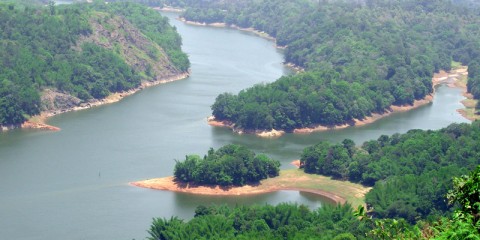
Kerala, South India, Hill station, History, Musuem, Nature, Trekking, Valley, Water falls, Water Sports, Wildlife Sanctuary
Ponmudi is a hill station in Thiruvananthapuram district of Kerala. Ponmudi means The Golden Peak. This is the best place for natural lovers. Major attractions of this hill station are Hiking and Trekking. While trekking people can enjoy with butterflies and mountain flowers. Northern attraction in this area is tea Gardens. Ponmudi is one of the biggest peaks in Western Ghats. It is divided into Upper Sanatorium and Lower Sanatorium. Plenty of animals and birds make this place as their home town.
What to see in Ponmudi:
Ponmudi Falls: These waterfalls are famous for clear water falling.
Kallar: It is the gateway to Ponmudi. Golden Valley located in this place. This is also known as river of stone. Golden valley is on the banks of river kallar. Major attraction of this Kallar is Golden Valley and Meenmuti Falls. This place is considered as best place for trekking lovers as well as natural lover. Huge variety of birds can be seen here. Some birds are native of this place but few come to this place on migration.
Meenmutty Falls: It is located at the base of the Ponmudi hill. This is the best place for Trekking lovers. Persons have to reach this place through trekking in the dense forest. Prior permission from Forest department is essential before visiting this site. Another waterfall named Kombaikani Waterfalls are located very close to this Meenumutty Falls.
Golden Valley: It is located at the base of the Ponmudi hill. Bathing in this Valley in the cool water is most memorable experience.
What to see around Ponmudi:
Orchids and Deer Park: This is one of the major attractions near Ponmudi. It is located 36kms away from Ponmudi. This place is famous for tea plantation. Wind that comes from these plants is so cool and most memorable experience.
Agasthyarkoodam: It is another nearby attraction of Ponmudi. It is the part of Agasthyamala Biophere Reserve. It is located 22kms away from Ponmudi. This place is considered as pilgrim place for Hindus. It is believed that Sage Agasthya resides in this place earlier. He is one of the seven Rishis of Hindu Puranas. This place is most wild so prior permission from forest department is essential.
Mini Zoo: This place is famous for huge number of deer’s. It is located 61kms away from Ponmudi.
Thiruvananthapuram: This place is most famous for the richest God Sri Padmanabhaswamy Temple. Other attractions are Sri Chitra Art Gallery, Planetarium Academy of Magical Sciences, Kanakakunnu Palace etc…
Getting to Ponmudi: Ponmudi is well connected with roadway. Before reaching to Ponmudi one has to reach Thiruvananthapuram. From Thiruvananthapuram plenty of buses are available to reach Ponmudi. Nearest railway station is at Thiruvananthapuram. From all the major cities such as Hyderabad, Mumbai, Chennai, Kolkata etc trains are available. Thiruvananthapuram airport is the nearest airport.
Getting around Ponmudi: Cycles are available to visit the surrounding places of Ponmudi. Jeeps and Privates taxis are also available to visit the surrounding areas of Ponmudi.
Best time to visit Ponmudi: Best time to visit this place is between October to March.
Where to stay in Ponmudi: In this hill station plenty of dormitories and cottages are available to stay in Ponmudi. Lower Sanatorium has several resorts and lodges where as upper sanatorium has only one resort which is running by KTDC. Few Government guest houses are also available in lower sanatorium.
Where to eat in Ponmudi: Very limited options are available to eat in Ponmudi. Only local cuisines are available. But both vegetarian and non vegetarian food is available.
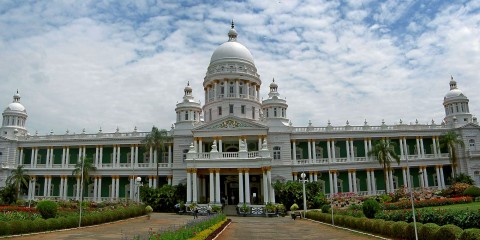
Karnataka, South India, Fort, History, Masjid, Musuem, Nature, Rock Formations, Temple, Tipu Sultan, Trekking, Valley, Water falls, Wildlife Sanctuary
Bangalore is the capital city of Karnataka. Silion Valley of India is the most famous in Bangalore. Most famous educations institutions such as NIMHANS, IIMB, IISc are well established here. Bangalore is home town to Kannada Film Industry. Bangalore is named after the Dish Bendakalooru which means Boiled beans. A small story behind this dish. Once a king halt in this place. At that time a lady served food with boiled beans. The taste of this dish is unforgettable to that king so he named after the town as Bendakalooru. This city is blessed with architectural landmarks, natural lakes, gardens, parks, pubs, shopping malls. Karaga, Pongal, Ugadi are most famous festivals in this city.
What to see in Bangalore:
Benguluru Palace: This was built by Chamaraja Wodeyar in 1887 with Tudor Style of architecture. Most attractive things to be seen in the palace are Paintings of famous personalities, Belongings of royal family, turrets, battlements, Gothic Windows etc…
Tipu’s Palace: It is summer recreation to the Tipu Sultan. This was built in 1791. It is most beautiful wooden structure with carved pillars.
Attara Kacheri: It is the place where Karnataka High court is situated. This was built during the reign of Tipu Sultan. Red bricks are used to construct this two stored building. Neo Classical Architecture of this building is so attractive.
Lakes: All the lakes in Bangalore are manmade lakes. Earlier there were 51 lakes in the city but now there are only 17 Lakes.
Brigade Road: This is the best place for the shopping lovers. All varieties of shops are located here. Clubs, discotheques, pubs are also can be seen here.
Lal Bagh: This is most beautiful garden in Bangalore. Construction of this was started in 1760 by Hyder Ali but it was completed by Tipu Sultan. This garden was later converted into Government Botanical Garden.
Forum Mall: This is the best place for youngsters for shopping purpose. From basic things to luxury items everything is available here.
Cubbon Park: This Park is famous for shaded groves, trees, rare floral species, and innumerable flowers.
Other Attractions of Bangalore: Other attractions in the Bangalore city are Vidhana Soudha, Mahatma Gandhi Road, Film City, Ulsoor Lake, Jumma Masjid, Bangalore Turf Club, St.Mary’s Basilica, Jawaharlal Nehru Planetarium, Venkatappa Art Gallery.
What to see around Bangalore:
Bannerghatta National Park: This was established in 1971 which is located 24kms away from the city. Major attractions of this park are Crocodiles, Tigers, and Lions.
Bugle Rock: It is located in Basavanagudi. This place is famous for massive rock formations. These are belongs to 3000 million years old. It is located 7kms away from Bangalore.
Wonder La: It is located 28kms away from the city. This is most famous amusement park. Major attractions in this park are Wet Rides and Dry Rides.
Other attraction nearby Bangalore: Other attractions nearby Bangalore are Suryanarayana Temple, Pyramid Valley, Nandi Hills, Janapada Loka, Bridavan etc…
Getting to Bangalore: Bangalore is well connected with road, Rail and through airways. From all the cities buses, trains and airbus come to this place.
Getting around Bangalore: Bangalore Metro, Autos, Taxis, Private vehicles are available to visit the surrounding places of Bangalore.
Best time to visit Bangalore: Best time to visit this place is between October to February. Tourists rush will be more during October.
Where to stay in Bangalore: Plenty of accommodations are available to stay in Bangalore. All range of hotels such as budget range, mid range hotels and even five star hotels are available in Bangalore.
Where to eat In Bangalore: Plenty of restaurants are available to eat in Bangalore. Almost all restaurants offer Western, Mughalai French, Mexican, south Indian, Continental, Chinese, Thai, Indian Cuisines.
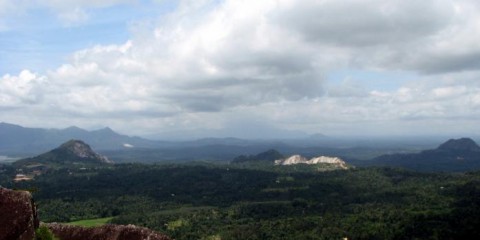
Kerala, South India, Boating, Caves, Hill station, Masjid, Mountian Biking, Musuem, Nature, River crossing, Valley, Water falls, Wildlife Sanctuary
Sultan Bathery is a town in Wayanad district of kerala. Earlier it was named as Sultan’s Battery. In Wayanad district this is the largest town. Town got this name after Tipu Sultan had stationed his battery of field guns, at the time of invaded Kerala. Climate is so cool and it is beautiful place with lush green hills. Spice plantation is most famous in this place. Wayand is the biggest shopping place in Sultan Bathery. Worth buying things in this town are home appliances, electronics, textiles, and agricultural appliances.
What to see in Sultan Bathery:
Sri Maha Ganapathy Temple: It is one of the main attractions of the town. This temple is dedicated to Lord Ganesha. Other shrines of this temple are Goddess Saraswathi, Lord Sri Nagar, Sri Sivan, and Sri Ayyappa.
Jain Temple: This temple was built in 13th century at Bangalore – Kozhikode highway. This temple is famous for beautiful Keralite architectural styles and carvings on the walls. It is dedicated to Lord Ananthanatha Swami.
What to see around Sultan Bathery:
Wayanad Wildlife sanctuary: It is 14kms away from the town. This sanctuary was established in 1973. Area covered by this sanctuary is 344.44 Sq.km. Major Attraction of this sanctuary are Wild dogs, Civets, Panthers, Jungle cats, Monkeys etc…
Agricultural Research station: It is located at Ambalavayal town which is 10kms away from the town. This conducts research on fruits, vegetables, paddy, and spices.
Edakkal Caves: These are considered as earliest human settlement on the planet. Length is 96feet and width is 22 feet.
Thovarimala Ezhuthupara: This place is famous for cave. It is considered as rare historic treasure. This place is located 5kms away from Sultan Bathery and it is located at Nenmeni.
Phantom Rock: This place is famous for skull shaped rock formation. It is popularly known as Cheengeri Mala. It is located 10kms away from the town.
Chethalayam Falls: These falls are located 41kms away from the town. Black granite stones are most famous in this place. Trekking activity takes place at this falls.
Ambalavayal Heritage Museum: It is located 10kms away from the town. Rare artifacts which belong to 2nd century are placed here.
St.Thomas Orthodox Church: It is located in Malankarakkunnu which is 11kms away from the town. Sultan Bathery Diocese is maintaining this church.
Kalpetta: It is located 24kms away from the town. This place is famous for Sanctuaries, valleys, waterfalls and huge number of temples.
Getting to Sultan Bathery: This place is well connected with road. From Karnataka and Kerala buses are available to reach Sultan Bathery. Nearest railway station and air port is located at Kozhikode which is 100kms away from the town.
Getting around Sultan Bathery: Buses and Taxis are available to visit the surrounding places of Sultan Bathery.
Best time to visit Sultan Bathery: Best time to visit this place is between October to March.
Where to stay in Sultan Bathery: Plenty of hotels can be seen in Sultan Bathery. Few resorts are also available to stay in Sultan Bathery.
Where to eat in Sultan Bathery: Huge number of restaurants is available to eat in Sultan Bathery. North Indian, South Indian and Chinese cuisines are available.
Kovalam is a beach town in Thiruvananthapuram City of Kerala. This is the oldest tourist centre. In the world Kovalam is having best beaches. Kovalam consists of 3 beaches. This is the best place for sunbathing. Along with sunbathing other activities such as cultural programs, herbal body massage, Catamaran Cruising and swimming are also available.
Shape of these beaches is like Crescents. This is the best picnic spot to spend the time more leisurely. Near the beach Maharani Lakshmi Bai built a palace to spend her honey moon and she want to spend private time with her consort Prince GV Raja. After seeing and spending few days GV Raja recognised that this place can be developed as tourists place so he invited Thomas Cook to develop this place. He is from United Kingdom.
What to see in Kovalam:
Samudra Beach: It is located on the northern part of Hawwah beach. This beach is mostly use by fisherman for fishing but this is not much developed as tourist centre.
Hawwah Beach: Hawwah beach is the 2nd largest beach in Kovalam. It is the first topless bathing beach. Now this was banned. Its popular name of Eve’s Beach. Sunbathing and Herbal massage is famous in this beach.
Light house Beach: In Kovalam, Lighthouse Beach is the largest beach.
The Lighthouse: It is located on the hillrock of Kurumkal. Due to this lighthouse, Kovalam beach is named as Lighthouse Beach. Height of this lighthouse is 30 meters.
Halcyon Castle: It is also known as Kovalam Palace. This was built by Maharani Lakshmi Bai who is the consort of MR Sri Rama Varma Valiya Koil Thampuran in 1932. This place used as summer resort by Lakshmi Bai.
What to see around Kovalam:
Aruvikkara: It is one of the nearby attractions of Kovalam which is 25kms away. This place is famous for Bhagavathi Temple. This temple is dedicated to Goddess Durga.
Vizhinjam Rock Cut Cave: It is located 1km away from Kovalam. In this place sculptures belong to 8th century can be seen.
Vellayani Lake: It is located 8kms away from Kovalam. In Thiruvananthapuram district this is the largest fresh water lake. Boat race is the main attraction of this lake.
Vizhinjam Marine Aquarium: It is located in Vizhinjam which is 5kms away from Kovalam. World’s rare species of ornamental fish and invertebrates can be seen here.
Karamana River: It is located 14kms away from Kovalam. On this river two dams are located. These are used for irrigation purpose.
Vizhinjam Fishing Harbour: Vizhinjam is the major sea port area. This is the commercial centre for Dutch, Portuguese and Europeans. It is located 5kms away from Kovalam.
Other places to visit nearby Kovalam: Other places to visit nearby Kovalam are Kovalam Jama Masjid, Vizhijam Vilage, Thiruvallam Parasuarama Temple, Valiathura Pier, Analothbhava Matha Church, and Government Agricultural College.
Getting to Kovalam: This place is well connected though roadways. From Thiruvananthapuram Junction plenty of buses are available to reach this place. From Chennai, Nagarcoil, Madurai, Bangalore huge number of buses are available to reach Thiruvananthapuram. Nearest railway station is at Thampanoor. Nearest airport is Thiruvananthapuram Airport.
Getting around Kovalam: Motorcycles, Atuos, Cabs, Private Vehicles are available to visit the surrounding places of Kovalam.
Best Time to visit Kovalam: Best time to visit this place is between September to March.
Where to stay in Kovalam: Plenty of accommodation facilities are available to stay in Kovalam. Budget hotels are available at Light House Beach. Near Hawwah Beach midrange hotels are available. At Light house beach and Chowara, luxury hotels are available.
Where to eat in Kovalam: Plenty of restaurants are available to eat in Kovalam. Both vegetarian and Non Vegetarian food are available. Famous foods in Kovalam are Fried Chicken, Chicken Fry. All varieties of Continental, North Indian, South Indian, Italian, Punjabi, and Chinese are available.
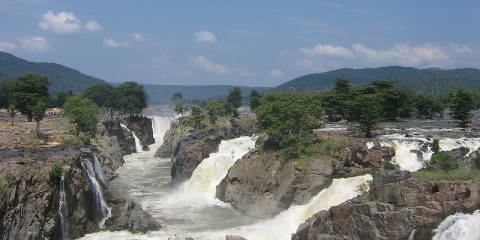
Tamil Nadu, South India, Boating, Caves, Hill station, Musuem, Temple, Trekking, Valley, Water falls, Wildlife Sanctuary
Yercaud is a hill station in Salem district of Tamilnadu state. Yercaud is derived from 2 names Yeri and Kaadu. Yeri Means Lake and Kaadu means Forest. This is located 1515meters above the sea level. Other name of Yercaud is Jewel of the destination. As it is less commercialised place, this is also known as Poor Man’s Ooty. Servarayan Range is the highest peak in Yercaud. This place is famous for orange groves and coffee plantation. On this hill station large variety of rare plants can be seen. This hill is a home town to several wild animals. Few animals are Swallow, Kite, Sparrow, Snake, Partridge, Mongoose etc…
What to see in Yercaud:
Yercaud Lake: Trees and Gardens are surrounded to Yercaud Lake. Boating is the major attraction in this lake.
Bear’s cave: It is located in the private coffee estate.These caves are situated 7 feet below the ground level. Visitors can see this while they were reaching to Servarayan Temple.
National Orchidarium and Botanical Gardens: This is third largest Orchidarium in India. In this garden more than 4000 species of plants can be seen. Apart from these varieties, huge varieties of orchids are also most attractive in this garden. It was established in 1963.
Pagoda Point: To form a pyramid shape 4 pills are arranged in this place. Local tribes built this place. Now Rama Temple can be seen here. Best time to see this place is during the night times or in the early morning hours.
Silk Farm: These farms explain about how silk garments manufactured. Entire life cycle of silk worms can be seen here.
Lady’s Seat: This is rock in the form of seat. Other attractions near this place are Children Seat and Gent’s seat.
Fairholme Cottage: Earlier this was a Colonial bungalow but now it is converted into Hotel.
What to see around Yercaud:
Kiliyur Falls: Trekking is the major attraction in these falls. It is located 3kms away from Yercaud.
Servarayan Temple: Lord Servarayan and Goddess Parvati are worshipped in this temple. Temple is located on Servarayan Hill which is 6kms away from Yercaud. This temple is narrow dark cave.
Anna Park: It is located just 1km away from Yercaud. This is most attractive place for the children. Inside the park Japanese Garden is located.
Namakkal: Major attractions in this place are fort on the hillock and rock cut cave temples. Temples belongs to Narashimhasway and Ranganathaswamy. In the Ranganathaswamy temple, huge Hanuman statue is worth seeing which 20feet height.
Salem: It is located 28kms away from Yercaud. Plenty of industries and temples are located here.
The Grange: It is located just 1km away from Yercaud. This was used as a summer resort by Robert Clive of East India Company. It was built by MD Cockburn in 1820.
Getting to Yercaud: Only way to reach this place is though Roadway. From the cities such as Salem, Chennai buses are available to reach this place. Nearest railway station is Salem Junction which is 30kms away from Yercaud. Trichy Airport is the nearest airport to Yercaud which is 163kms from Yercaud.
Getting around Yercaud: Cycles, Cars, Autos and cabs are available to visit the places surrounding to Yercaud.
Best time to visit Yercaud: Best time to visit this place is between May to October.
Where to stay in Yercaud: Budget, midrange and luxury hotels are available to stay in Yercaud. But there are very limited. Few guesthouses are available to stay. These are maintaining by Christian Missionaries
Where to eat in Yercaud: Limited restaurants are available but all the restaurants serve both vegetarian and non vegetarian food. Most famous food is Mutta Bonda, Fried Dumplings Egg, and Mulaga Bhajji.
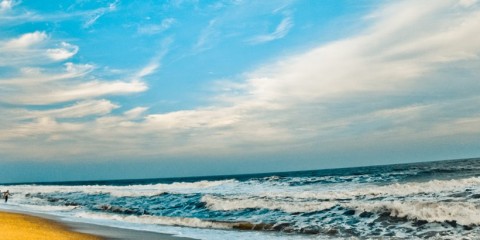
Tamil Nadu, South India, Beach, Boating, Fort, History, Mountian Biking, Musuem, Nature, Temple, Trekking, Valley, Water falls
Puducherry is a Tamil Name which means New Town. It is popularly known as Pondicherry. Earlier this place is acted as French Colony. It is believed that Sage Agastya established his Ashram here. This place is known for best food products, Pottery, leather, Furniture, textiles. Puducherry is also famous for handmade products, glassware, Indian art, Modern decor items, Jewellery, Marmalades and Pickles, Jellies, Sachets, Perfumed oils etc.. Most famous festivals in Puducherry are Bastille Day, Fete De Puducherry, Veerapattinam Car Festival, Villinur Temple car festival.
What to see in Puducherry:
Promenade: This place is famous for old Light house, Dupleix Statue, Statue of Joan of Arc, War Memorial. Promenade is 1.5kms long which is running along the beach.
Temples: In Puducherry, Varadaraja Perumal Temple is the oldest temple dates back to 600 AD. Kanniga Parameswari Temple is best example for French architectural style. This temple is dedicated to Goddess Shakti. Sri Gokilambal Thirukameshwara Temple is another famous temple is Puducherry. This was built in 12th century.
Sri Aurobindo Ashram: This was built by Aurobindo Ghose in 1926. Children who were below 3 years are not allowed to enter into the Ashram.
Botanical Gardens: In this garden more than 1500 species of plants are placed here. This was built in 1826 in French Style. Major attraction of this gardens are fountains, gravel lined paths, beautiful flower beds, pruned trees.
Ananda Ranga Pillai Museum: This was built in the name of Ananda Ranga Pillai who was the governor of Puducherry. Things belongs to 18th century of French India can be seen here.
Churches: Plenty of churches were built during the French Rule. Most famous Churches are Church of Our Lady of Lourdes, Church of Sacred heart of Jesus. These are built in 1700’s.
Jawahar Toy Museum: More than 120 dolls are placed in this museum. Visitors can visit this place except on Monday. All dolls are dressed in different styles each represent each state.
Bharati Memorial Museum: This is dedicated to Subramanya Bharathi who was the Poet and Freedom fights. Romantic compositions, finest patriotic writings of Subramanya Bharati are placed here.
Puducherry Museum: Rare collection of stone and bronze sculptures which belongs to Chola and Pallava dynasties can be seen here.
What to see around Puducherry:
Arikamedu: It is located 4kms away from the city. French, Cholas and Romans style of trade can be seen here. In ancient days this place was acted as Roman Trade centre.
Auroville Beach: This is the best place for swimming. Most of the people spend their weekends in this place. It is located 12kms away from the city.
Serenity Beach: It is located 6kms away from the city. It is the best picnic spot.
Chunnambar: This place is famous for the beach. It is located 8kms away from the city. Chunnambar is the best place for Sunbathing and Water sports.
Getting to Puducherry: Puducherry is well connected through road way. From the cities such as Bangalore, Madurai, Chennai buses are available to reach puducherry. Nearest railway station is at Villupuram which is 35kms away from the city. Chennai International airport is the nearest airport.
Getting around Puducherry: Autos, Cycles, 3 wheelers are available to visit the places in Puducherry. Buses, Autos, private vehicles are available to reach the places which are surrounding to Puducherry.
Best time to visit Puducherry: Best time to visit Puducherry is between October to March.
Where to stay in Puducherry: Plenty of hotels are available to stay in Puducherry. Resorts are also available to stay near beach town.
Where to eat in Puducherry: Huge number of restaurants is available to eat in Puducherry. Most famous cuisines in Puducherry are Portuguese, Tamil, French and Dutch cuisines. Almost all the restaurants provide only non vegetarian. Vegetarian food will be available only on demand.
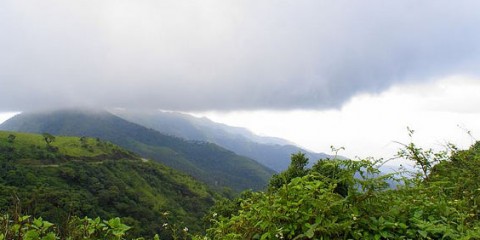
Karnataka, South India, Hill station, History, Mountian Biking, Musuem, Nature, River crossing, Temple, Trekking, Water falls
Chikmagalur is in Chikkamaguluru district in Karnataka. This is the famous hill station. Chikmagalur is known as Coffee Land. Word Chikmagalur means Land of Younger daughter. A small story related to this name. Rukmangada; Chief of Sakrepatna gifted this land as dowry on the occasion of his young daughter. Hiremagulur place is gifted by Rukmangada to his elder daughter. Coffee cultivation is started in 1670 by Babu Budan a Muslim Saint. He bought coffee seeds from Yemen. This place is famous not only for coffee plantation but also for Pilgrimage, Trekking and Wildlife.
What to see in Chikmagalur:
Mahatma Gandhi Park: Earlier it was a forest but now it is converted in to a garden. In the amphitheatre several cultural, music, art events conducted. More than 250 varieties of rose plants are available. Toy attracts children.
Baba Budan Giri Hills: This place is famous for trekking and Hiking. It is also a pilgrim place to both Hindus and Muslims.
Kodanda Ramaswamy Temple: There are 3 parts in the temple. In the 14th century Navagraha was built, in 16th century Mukhamanatapa was built and in 17th century entrance of the temple was built. This was built in Hoysala architectural style.
What to see around Chikmagalur:
Central Coffee Research Institution: with the intension to give the solutions to the problems such as leaf diseases which are affecting coffee plants. It is situated in Chikmagalur and it was established in 1915. Area occupied by this institution is 130 hectares. Out of these 130 hectares, 80.26 hectares are used for the cultivation of Robusta and Arabian coffee. It is located 34kms away from Chikmagalur.
Mullayanagiri: It is the highest peak in Karnataka. This place is one of the best places for trekking. It is situated 22kms away from Chikmagalur.
Bhadra Wildlife Sanctuary: It is located 38kms away from Chikmagalur. Large varieties of Flora and Fauna can be seen here. Area covered by this sanctuary is 29.90 sq.miles. More than 120 plant species can be found here. Few are Toddy Palm, White Teak, Kadam, Slow Match tree etc… Major attractions of fauna are spotted deer, Sambar, Jackal, Wild dog, Jungle Cat, Wild Boar etc…
Hebbe Falls: It is located 60kms away from Chikmagalur. But from Kemmangundi, Karnataka it is just 10kms away. These waterfalls are divided into 2 falls such as Chikka Hebbe means Small Hebbe and Dodda Hebbe means big falls.
Getting to Chikmagalur: This place is well connected with road ways. From the cities such as Hassan, Hubli, Mangalore, Bangalore buses are available to reach Chikmagalur. Kudur is the nearest railway station which is located 40kms away from Chikmagalur. At Mangalore, nearest airport is located which is 160kms away from Chikmagalur.
Getting around Chikmagalur: Autos, Taxis, Jeep and buses are available to visit the places around Chikmagalur. To enjoy the nature and to visit the places of tea and coffee plantations preferring jeep is the best option.
Best time to visit Chikmagalur: Knowing pleasant and best season to visit this place is essential to visit the places in and around Chikmagalur. Best time to visit Chikmagalur is between September to April.
Where to stay in Chikmagalur: Budget, midrange and luxury hotels are available to stay in Chikmagalur. Few resorts are also available to stay in Chikmagalur. Both midrange and luxury hotels are providing recreation facilities for the children. Best hotels in Chikmagalur are The Gateway hotel KM Road, Coffee country stay, The Serai Mugthihalli.
Where to eat in Chikmagalur: Plenty of restaurants are available to eat in Chikmagalur. In this place visitors can find five star hotels also. All the restaurants serve local cuisine. Name of this local food is Malanadu. Famous food in this place is kaikadbu and Akki Roti. Both Indian and international cuisines are available in Chikmagalur.
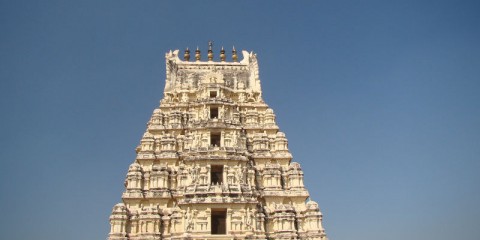
Karnataka, South India, Fort, History, Masjid, Musuem, Nature, Temple, Wildlife Sanctuary
Srirangapatna is a town in Mandya district of Karnataka. This place is famous for its history, culture and religion. It is surrounded by the river Kaveri. This was founded in 9th century by Ganga Dynasty. Earlier this place acted as capital to Khudadad State which belongs to Tipu Sultan. Main temple in Srirangapatna is Ranganathaswamy temple. The temple is one of the set of 3 major temples. These 3 temples are built in 3 different islands on the river kaveri. First temple was dedicated to Antya Ranga which is located at Srirangam, 2nd temple is Madhya Ranga which is located at Shivanasamudra and 3rd temple is Adi Ranga which is placed at Srirangapatana.
What to see in Srirangapatna:
Gumbaz: This is the burial place of Tipu Sultan’s Mother Fatima Begum and father Hyder Ali. Doors here are decorated with Ivory which looks so beautiful. These doors are presented by Lord Dalhousie.
Srirangapatna Fort: This was built by Tipu Sultan. It consists of 4 major entrances. Persian inscriptions can be seen at the each entrance. In 1527 this was constructed in Indo Persian style. Paintings in this fort are most attractive. These paintings say how Tipu Sultans got victory over Britishers.
Sri Ranganathswamy Temple: Srirangapatna is famous for Sri Ranganathswamy Temple .It is located inside the Srirangapatna Fort. This temple is dedicated Lord Krishna.
Daria Dault Bagh and Museum: Museum consists of the things which are used by Tipu Sultan. Major attraction of this museum is ammunitions, arms, engravings, Pencil sketches, Oil Paintings. Daria Dault Bagh is summer recreation of Tipu Sultan.
Other attractions of Srirangapatna: Other attractions of Srirangapatna are Masjid –E-Ala, The Obelisk, Nimishamba Temple, and Place of Martyrdom.
What to see around Srirangapatna:
Karighatta: This place is famous for Karighatta hill which is situated 8kms away from Srirangapatna. On this hill ancient temple is located. Temple is dedicated to Lord Vaikunta Srinivasa.
Mysore: This is the known as City of Palaces. It is the second largest city of Karnataka. It is located 18kms away from Srirangapatna.
Mahadevapura: It is located 18kms away from Srirangapatna. This village is famous for most ancient Shiva Temple which is dates back to 600 years.
Sangama: It is located 3kms away from the town and it is located in Mandya. People believe that if they dip in the water of Sangama all the sins will wash away.
Ranganthittu Bird Sanctuary: In India it is one of the most popular bird sanctuaries. This is also known as Pakshi Kashi of Karnataka. It is located 5kms away from Srirangapatna.
Other attractions nearby Srirangapatna: Other attractions nearby town are Balmuri Falls, Kere Thonur, and Captain Baileys Dungeon.
Getting to Srirangapatna: This place is well connected with roadways. From Bangalore and Mysore buses are available to reach Srirangapatna. Nearest railway station and airport is located at Mysore.
Getting around Srirangapatna: Taxis, Buses and Autos are available to visit the places surrounding to the town.
Best time to visit Srirangapatna: Best time to visit Srirangapatna is between September to March.
Where to stay in Srirangapatna: Plenty of budget and midrange hotels are available to stay in Srirangapatna. Best hotels are available in Mysore and Bangalore road. Best hotels in Srirangapatna are Balaji Garden Resort, Sri Ventakeswara Lodge, Guru Raj continental Hotel, Sri Venkateshwara Lodge, Hotel Nandini, and Amravati Hotel.
Where to eat in Srirangapatna: Plenty of restaurants are available to have food in Srirangapatna. Both vegetarian and Non vegetarian food are available. Chinese, North India and South Indian Cuisines are available.
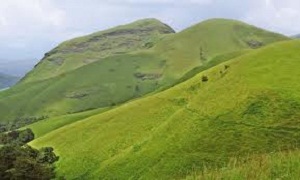
Karnataka, South India, Fort, Hill station, Musuem, Nature, Temple, Trekking, Valley, Water falls, Wildlife Sanctuary
Kudremukh is a small hill station located in Chikkamagaluru district of Karnataka. Kudremukh is also spelled as Kudremukha which means Horse Face. This place is famous for mineral wealth and bio diversity. Recently this place is developed as iron ore mining town. This is the birthplace of 3 rivers. They are Tunga River, Nethravati River and Bhadra River. Besides these rivers trekking which is most famous activity conducts regularly. Several verities of orchids can be seen here. Kudremukh is surrounded by dense forests. This forest is a home town to several animals such as wild dogs, Jackals, Tigers, Leopards, Malabar, Barking deer, Macaques etc…Near Kudremukh sacred ponds are located. They are Varaha Teertha, Rudrea Teertha, Vasishtha Teertha, Naga Teertha, and Amba Teertha.
What to see in Kudremukh:
Kudremukh Peak: This is the favourite spot for the Photographers. It is located 184meters above the sea level. This peak is covered by several mountain peaks.
Kadambi Falls: This place is famous for waterfalls. It is the best place to enjoy in the water.
Kudremukh National Park: It is one of the major attractions of Kudremukh. This is located in the Western Ghats. It is essential for the visitors to take prior permission from the forest officials.
Rajendra Hill: This is situated in Kudremukh region. It is the highest Peak in Karnataka state. This hill is surrounded by Coffee Plantations. Other name of this hill is Babaudan Hill. This place is rich in iron ore.
Lakhya Dam: This place is famous for lush green region. Height of this dam is 100meters. This dam covers 572 hectares of Shola Forest valley.
What to see around Kudremukh:
Kalasa: This place is famous for Kalaseshwara Temple. This temple is dedicated to Lord Shiva. It is located 22kms away from Kudremukh. Kalasa is situated on the banks of Bhadra River. This is the main source for the cultivation purpose.
Annapurneshwari Temple: This is the most ancient temple located in Horanadu which is 27kms away from Kudremukh. It is believed that idol in the temple was installed by sage Agastya.
Rock Cut Garden: This is located near Bhadra Reservoir which is 93kms away from Kudremukh. It is most beautiful and unique garden in Kemmanagundi hill station. Large variety of flowers can be seen here.
Horanadu: This place is located 27kms away from Horanadu. It is famous for Adi Shaktyatmaka Shri Annapoorneshwari Temple. Adi Shakti is the worshipped in this temple. People believe that the person who visited this place will never suffer with shortage of food. Idol in this temple is made up of pure gold.
Jamalabad Fort: This was built by Tipu Sultan in 1794. It is located in Jamalabad village which is 8kms away from Kudremukh.
Hanuman Gundi Waterfalls: Height of these waterfalls is 100feet. This is most attractive place for the trekking lovers. Between October to May is the best time to visit this place. These waterfalls are popularly known as Suthanabbe Waterfalls. It is located 19kms away from Kudremukh.
Getting to Kudremukh: This place is well connected with roadways. From the cities such as Kalasa, Horanadu, Mangalore buses are available. Nearest railway station and airport is located at Mangalore.
Getting around Kudremukh: Taxis and local buses are available to visit the surrounding places of Kudremukh.
Best time to visit Kudremukh: Between October to February is considered as the best time to visit this place.
Where to stay in Kudremukh: Home stays are available to stay in Kudremukh. Government tourism is offering cottages and tent houses with all the amenities to stay in kudremukh.
Where to eat in Kudremukh: Restaurants are not available in Kudremukh. It is advised to carry food before visiting to this place. Only few snacks are available.
Pattadakal is a town located in Bagalkot district of Karnataka State. This place is popularly known as City of the Crown Rubies. In 1987 it was declared as World Heritage Site. Earlier name of this place is known as Kisuvolal. Jain Sanctuaries and Hindu temple Temples are most famous in Pattadakal. Few temples in Pattadakal are built in Nagara Style and few are constructed in Dravidian Style. Nandi in Pattadakal is another major attraction in Pattadakal. Mallikarjuna Temple Festival, Virupaksha Temple, 3days dance festival which is organised by Karnataka Government, Chalukya Utsava are the most famous festivals in Pattadakal.
What to see in Pattadakal:
Virupaksha Temple: After Vikramaditya won in the war against Pallavas, Vikramaditya’s wife expressed her happiness by construed this temple. Major attractions of this temple are Sculptures of Lingodhbhava, Ravananugraha, Nataraja, and Ugranarasimha.
Sangameswara Temple: It is considered as one of the oldest temples in India. This was constructed between 696 AD and 733 AD. Roof and temple hall are similar to Virupaksha Temple. It was constructed in Dravidian Style.
Mallikarjuna Temple: This temple looks like Virupaksha Temple. It was constructed after the construction of Virupaksha Temple. During 7th century this was built by 2nd queen of King Vikramaditya. Her name is Triloyamahadevi.
Papanatha Temple: In this temple 16 massive pillars are supporting the ceiling of the main temple. This is an extraordinary place to see. On the ceilings of the temple, Sculptures of Goddess Parvati and Lord Shiva can be seen.
Kadasiddhesvara and Jambulingeswara Temples: These temples are popularly known as twin temples. These two temples are dedicated to Lord Shiva and these are constructed in 7th century AD. Jambulingeswara Temple was constructed in Nagara Style of Architecture.
Jain Temple: This temple was constructed by Rashtrakutas of Manyakheta in Dravidian Style. It was built in 9th century. Jain Temple is famous for unique Sculptures and Idols.
Museum of the plains and Sculptures Gallery: Archaeological Survey of India is supervising this museum. It is located in Bhutanatha Temple road. Ancient era’s rare Scriptures and sculptures can be seen in this temple.
What to see around Pattadakal:
Galganatha Temple: It is located in Bagalkot. This temple was constructed in 8th century AD. Sculptures of Sanctum with Shiva Linga, Shukanasa and Navaranga are most worth seeing. It is located 11kms away from Pattadakal.
Badami: It is located 22kms away from Pattadakal. Main attractions of Badami are Badami Fort, Cave Temples, Agastya Lake, Bhoothnatha Temple, and Archaeological Museum.
Durga Temple: It is located in Aihole which is 13kms away from Pattadakal. This was constructed in 7th century.
Ravana Phadi Cave: This was built in 6th century. It is the oldest rock cut temple. Carved pillars are major attraction of the temple. It is located 11kms away from Pattadakal.
Lad Khan Temple: It is located 23kms away from Pattadakal. It is the oldest temple constructed by Chalukya Kings in 5th century. This temple is dedicated to Lord Shiva.
Getting to Pattadakal: This place is well connected with Roadways. From cities such as Bidar, Bangalore, Bijapur buses are available. Nearest railway station is located at Hubli which is 127kms away from Pattadakal. Belgium is the nearest airport.
Getting around Pattadakal: Tango’s, buses, autos are available to visit the places surrounding Pattadakal.
Best time to visit Pattadakal: Best time to visit this place is between October to March.
Where to stay in Pattadakal: Plenty of accommodations are available starting from budget hotels to luxury hotels. Best hotel in Pattadakal is Badami Court.
Where to eat in Pattadakal: Plenty of restaurants are available. South Indian, Continental, North Indian cuisines are available to eat.
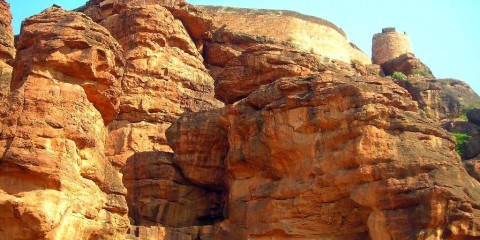
Karnataka, South India, Caves, Fort, History, Mountian Biking, Musuem, Nature, Temple, Trekking, Valley, Water falls
Badami is a town in Bagalkot district of Karnakata. This place is famous for Structural temples and rock cut temples. Cave Temples were built from 5th to 8th centuries. Vatapi and Ilvala hills surround this town. Earlier name of Badami is Vatapi. This town acted as capital of Chalukyas. From 6th century to 8th century this region was ruled by Chalukyas. Almost all the cave temples are built by Mangalesha I and Kirthivarman who were the sons of Pulakesi. Only 4 rock temples were constructed during the reign of Chalukyas. Out of these 4 rock temple, 3 are dedicated to Hindu Gods and remaining temple is dedicated to Jain Tirthankars. Cave Exploration, Trekking and Rock Climbing are famous activities in Badami.
What to see in Badami:
Badami Fort: This is famous for two Shivalayam complexes. Upper one is dedicated to Lord Shiva and lower one is dedicated to Lord Ganesha.
Cave Temples: Major attraction of Badami is Cave temples. Each cave temple is dedicated to one Hindu God. In the First cave temple dancing postures of Lord Shiva with 18 arms are most attractive in this temple. Painting of Goddess Parvati can also be seen here. This temple is dedicated to Lord Shiva. Third cave temple is famous for the carving of Lord Vishnu as this temple was dedicated to Lord Vishnu. Third temple is famous for the carvings of different avatars of Lord Vishnu. Fourth temple is famous for the carvings of Parshavnath. This is dedicated to Jain Tirthankar.
Agastya Lake: All the caves located in the town are facings towards the lake. Temples and hills are located around the lake.
Bhoothnatha Temple: This temple is dedicated to Lord Bhoothnath incarnation of Lord Shiva. Local Sandstone is used to construct this temple. Beautiful sculptures of avatars of Vishnu and Jain figures can be seen here.
Archaeological Museum: 4 Galleries are appeared here. Two are open air galleries. Main attractions of this museum are stone equipments and prehistoric sculptures.
What to see around Badami:
Sangameshvara Temple: It is the oldest temple in Pattadakal which is located 22kms away from Badami. Major attraction of this temple is Nataraja and Ugranarasimha. This was built by Chalukya King.
Virupaksha Temple: This is located in Pattadakal which is 22kms away from Badami. After Vikramaditya won in the war against Pallavas, Vikramaditya’s wife expressed her happiness by construed this temple. Major attractions of this temple are Sculptures of Lingodhbhava, Ravananugraha, Nataraja, and Ugranarasimha.
Ravana Phadi Cave: This was built in 6th century. It is the oldest rock cut temple. Carved pillars are major attraction of the temple. It is located 35kms away from Badami.
Lad Khan Temple: It is located 35kms away from Badami. It is the oldest temple constructed by Chalukya Kings in 5th century. This temple is dedicated to Lord Shiva.
Durga Temple: It is located in Aihole which is 35kms away from Badami. This was constructed in 7th century.
Getting to Badami: This place is well connected with Roadways. From cities such as Bidar, Bangalore, Bijapur buses are available. Nearest railway station is located at Hubli which is 100kms away from Badami. Belgium is the nearest airport.
Getting around Badami: Tango’s, buses, autos are available to visit the places surrounding Badami.
Best time to visit Badami: Best time to visit this place is between October to March.
Where to stay in Badami: Plenty of accommodations are available starting from budget hotels to luxury hotels. Best hotels in Badami are Hotel Mookambika Deluxe, The Heritage Resort, Hotel New Satkar Deluxe, Hotel Mayura Chalukya, and Rajsangam International Hotel.
Where to eat in Badami: Plenty of restaurants are available. South Indian, Continental, North Indian cuisines are available to eat. Huge variety of snacks, Chutneys and rice dishes are famous in Badami.
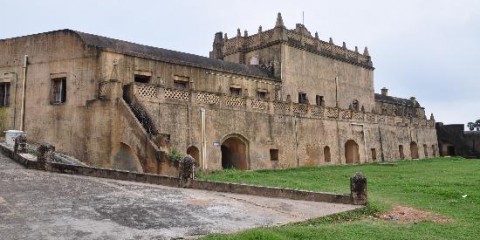
Tamil Nadu, South India, Beach, Fort, History, Musuem, Nature, Temple, Tomb
Tharangambadi is a town in Nagapattinam district of Tamilnadu. Tharangambadi means Place of the singing waves. From 1620 to 1845 this town was acted as Danish Colony. Before it was treated as Danish colony, Pandyas and Cholas ruled this place. From Germany two Protestants came to this place and started printing press. This was the first printing press in India. First book they have printed is Holy Bible. This book was printed in Tamil language. In Tamil they have printed 300 books till the end of 1712.
What to see in Tharangambadi:
Fort Dansborg: This was built in 1620 in Danish architectural style. It was used as residence of Danish Governor. Northern and Western side rooms of the fort are ruined but Southern side rooms of the fort are in good condition.
Town Gate: This was built in 1660. In 1761, Original Gate was destroyed but new one was constructed in its place. It is situated in King’s street.
Danish Museum: This museum says the history of Danish colonies. It was established in 1970. It is located inside the Fort Dansborg. Lamps, Chinese tea Jars, Danish Manuscripts, decorated terracotta objects, Steatite Lamps, Porcelain ware, Glass Objects are most attractive to see in this museum. Wooden Objectives, Spears, Daggers, Swords, Sculptures, different collection of stone are also placed here. All these objectives are used during the Danish rule.
Ziegenbalg Museum Complex: This complex consists of first printing press. It is located in Admiral Street. First book printed in this press was Bible.
The Zion Church: This was the oldest Protestants church in India. The Zion Church was constructed with the combination of Indian and Colonial architectural style. It was constructed in 1701.
The New Jerusalem Church: It was constructed by Rev.Bartholomaeus Ziegenbalg in 1718. It is located in Kings Street.
Old Danish Cemetery: It is located in Kavalamettu Street. Various colonial officials and Danish Tradesmen’s graves can be seen here.
Bungalow on the Beach: It is only dining option in this town. Several regional and Continental dishes can be seen here.
What to see around Tharangambadi:
Thirukkadaiyur: It is located 8kms away from the town. Amritaghateswarar and Abirami Temple is most famous in this town. This was the ancient temple dedicated to Lord Shiva and Goddess Parvati.
Kakaikal: It is located 15kms away from the town. Plenty of rivers and beaches can be seen here. Mangani Festival is famous in this place. Main attractions of this place are Church of Our Lady of Angles, Karaikal Port, Aayiram Kaliamman Temple, Lord Saturn Temple, Karaikal Ammayar temple.
Getting to Tharangambadi: Only way to reach this place is through road. From Thiravarur, Puducherry, Thanjavur, Trichy, Chennai, Vellore cities buses are available. Mayiladuthrai is the nearest railway station which is 24kms away from Tharangambadi. Chennai is the nearest airport of the town.
Getting around Tharangambadi: Autos, Taxis and buses are available to reach the places around Tharangambadi.
Best time to visit Tharangambadi: To avoid inconvenience Visitors has to know best time to visit this place. Best time to visit this place is Between February and August. In the month of December rainfall will be more in the town.
Where to stay in Tharangambadi: Only budget and mid range hotels are available. Few guest houses and dormitories are the other option in Tarangambadi. Best hotels in Tharangambadi are The Bungalow on Beach and Nayak House.
Where to eat in Thamrangambadi: Restaurants are very limited in Thamrangambadi. Only south Indian Cuisines are available.
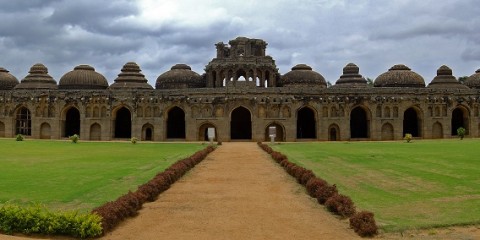
Karnataka, South India, Caves, Fort, Hill station, History, Musuem, Nature, Temple, Trekking, Wildlife Sanctuary
Hampi Attractions : Virupaksha Temple, Lakshmi Narasimha Temple, Hazara Ram Temple, Museum, Matanga Hills,Hemakuta Hill Temple Complex
Hampi is a small town in Karnataka. Other name of this town is Pampa. This name is derived from the river Pampa who is the daughter of Lord Brahma. Earlier it was the capital of Vijayanagar Empire. Several dynasties ruled this town. Main dynasties are Aravidu, Tuluva, Saluva and Sangama. During the Vijayanagar kingdom diamonds were sold on the streets. Name of that street is Pan Supari Street. Silver and Gold used as currencies. Most famous festival celebrates in Hampi is Hampi Utsav or Vijaya Utsav.
What to see in Hampi:
Virupaksha Temple: This temple is dedicated to Lord Shiva. According to Hindu Mythology, Lord Shiva and Pampa got married here. Gopuram of this temple is 50 meters high. It is located on the banks of river Tungabhadra. This temple was built in 7th century. This is the major attraction of Hampi.
Lakshmi Narasimha Temple: There is no idol inside the temple. Based on the architecture it is considered that this temple belongs to Jains. However Carvings of Goddess Lakshmi, Lord Vishnu and Hanuman can be seen on the walls of the temple.
Hazara Ram Temple: On the walls of this temple episodes of Ramayana can be seen. This is one of the small and cute temples in Hampi.
Museum: It is one of the attractions of Hampi. It was divided into 4 parts. They are Hampi’s Ancient culture, Royal remains, daily used things of ancient Hampi People and Models.
Vijaya Vittala Temple: This temple is famous for rich architectural style. It was built in 15th century.
Matanga Hills: On this hill several temple are located. For the trekking lovers this is the best place in Hampi.
Monkey temple: It is located on Anjanadri Hills. This is a small concrete structure. It is believed that it was the birth place of Sri Hanuman.
Other attractions in Hampi: Other attractions in Hampi are Queen’s Bath, Vithala Temple Complex, Hampi Bazar, Balakrishna Temple, and Hemakuta Hill Temple Complex.
What to see around Hampi:
Lotus Temple / Lotus Palace: It is located 3kms away from Hampi. It is two stored building used by Royal ladies. Lotus Bud is carved on its dome so it is named as Lotus temple. This was built in Indo Islamic architectural style.
Mahanavami Dibba: This is the tallest structure. Two stair cases have to climb to the top of this structure. Beautiful Carvings of Horses, Elephants and other carvings can be seen.
Zenance Enclosure: There are 4 structures inside the enclosure. Queen’s Palace is the largest enclosure of all the 4 enclosure. This is specially meant for Royal Women. It is located 3kms away from Hampi.
Elephant Stables: It is located 3kms away from Hampi. There are 11 domed tall chambers. This is specially meant for Royal Elephants.
Other places to visit around Hampi: Other places to visit the places around Hampi are Daroji Bear Sanctuary, Badami Fort, and Badami Cave Temples.
Getting to Hampi: Only way to reach this place is Roadways. From Gokarna, Bangalore buses are available to reach Hampi. Nearest railway station is located at Hospet. Nearest airport is at Bellary.
Getting around Hampi: Best way to see all the places in Hampi is on foot. Autos and Taxis are available to visit the surrounding places of Hampi.
Best time to visit Hampi: Best time to visit this place is between October to December.
Where to stay in Hampi: Plenty of accommodation is available to stay. Budget and Midrange accommodations are available. Cottages with all the modern amenities are also available.
Where to eat in Hampi: Plenty of restaurants are available to eat in Hampi but only vegetarian and local food is available. Famous snacks of this place are Sandwiches and Burgers.
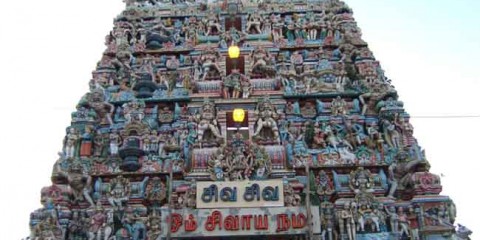
Kerala, South India, Beach, Boating, Fort, History, Musuem, Nature, Temple, Valley, Water falls, Wildlife Sanctuary
Thiruvananthapuram is the capital city of Kerala. Other names of this city are Trivandrum and Evergreen city of India. This place is famous for historical structures, windy backwaters, palm fringed shorelines who are stretched so long and Beaches. Apart from the beaches, this place is also known for its ancient temples. Maharaja Marthanda Varma named this city as Thrivananthapuram. He was the deity of Lord Padmanabhaswamy so he dedicated this city to Lord Padmanabhaswamy. Word Thiruvananthapuram derived from the word Thiru Anantha Puram which means City of Lord Aantha. Britishers had changed this name as Trivandrum. Best places for the shopping lovers are MG Road and Connemara Market. Handloom, Coir, Metal, Horn, Wood are worth buying here.
What to see in Thiruvananthapuram:
Sri Padmanabhaswamy Temple: It is one of the oldest temples in India. This is the best example for Dravidian style of architecture. Temple is dedicated to Lord Padmanabhaswamy who is an incarnation of Lord Vishnu. Recently treasury was discovered in the temple. It is estimating that worth of the treasury would be around Rs.1.2 trillion. This treasury makes the temple richest temple in India.
Zoological Park: This is the first Zoo in India which was opened in 1843. 75 different species of animals can be seen here. Major attraction of this zoo is Royal Bengal Tiger, Asiatic Lion, Indian Rhino, Hippo, snakes etc…
Napier Museum: This was built by Robert Chisholm in Gothic style of architecture. Different collection of Buddhist Status, Carved Wooden Carts, Ceramics, Bronze idols etc attracts the tourists to this place.
Kanakakunnu Palace: This is the summer recreation to Travancore Kings. Today several fairs, exhibitions, cultural events are conducting here.
Other Attractions of Thiruvananthapuram: Other Attractions of Thiruvananthapuram are Natural History Museum, East Fort, Mahadeva Temple, Kuthiramalika Palace Museum.
What to see around Thiruvananthapuram:
Padmanabhapuram Palace: It is one of the most attractive Palaces in the world. This palace is famous for Granite dance halls, Clock Tower, Carved Mahogany Ceilings. It is situated 11kms away from the city.
Veli: It is located 8kms away from Thiruvananthapuram. In this place Veli Lake is separated from Arabian Sea by a sand bar. Water Sports is most famous in Veli.
Shankhumugham Beach: This is the best place to relax in the evening time and during that period one can enjoy sunset. Water is safe for swimming. It is located 8kms away from the city.
Kovalam: It is located 10kms away from the city. This place is famous for Beach. It is one of the best beaches in the world.
Other Attractions nearby Thiruvananthapuram: Other Attractions nearby Thiruvananthapuram are Marine Aquarium, Samudra Beach, Kovalam beach, Poovar Island, Kalari, Neyyar Wildlife Sanctuary.
Getting in Thiruvananthapuram: Thiruvananthapuram is well connected with Road, Rail and Airways. From several cities such as Chennai, Bangalore, Kolkata, Delhi, Mumbai etc buses, trains and airbuses are available to reach this place.
Getting around Thiruvananthapuram: Autos, Taxis, Buses are available to visit the places around Thiruvananthapuram.
Best time to visit Thiruvananthapuram: Best time to visit Thiruvananthapuram is between August to March.
Where to stay in Thiruvananthapuram: Plenty of accommodations are available to stay in the city. Budget, Midrange and luxury hotels are available. Best hotels in Thiruvananthapuram are Travancore Palace Beach, Turtle on the Beach, Maurya Rajadhani and KTDC Chaithram Trivandrum.
Where to eat in Thiruvananthapuram: Plenty of restaurants are available. All the restaurants serve North Indian, Chinese, Tamilian and Local cuisines. Most famous dishes in the city are Fish Molee and Fish Pollichathu. Every visitor of this city has to try these dishes.
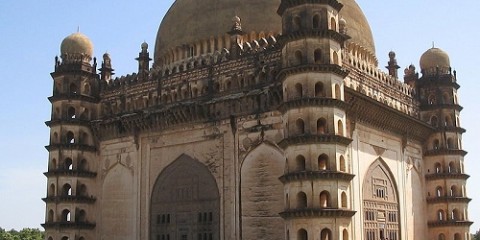
Karnataka, South India, Boating, Fort, History, Masjid, Musuem, Nature, Temple, Tomby
Bijapur is a historical town in Karnataka state. This place is famous for Mosques, gardens, forts, architectural sculptures and historical monuments. Bijapur was established by Kalyani Chalukyas in 10th century. It was the golden period for the city during the period of Yusuf Adil Shah in 15th century. In those days it was called as Vijayapura which means City of Victory. Another attraction of the city is Gol Gumbaz which is one of the largest domes in the world.
What to see in Bijapur:
Gol Gumbaz: It is the tomb of Mohammed Adil Shah. If any person make noise in the central chamber of the structure that sound will be heard till 37meters. Yaqut of Dabul, a famous architect, designed this structure. Diameter of this tomb is 124feet.
Ibrahim Rauza: It was built on a single rock. This is the tomb of Ibrahim Rauza. With the inspiration of Taj Mahal this was built. This was designed by Malik Sandal.
Archaeological Museum: Weapons, Inscriptions, Sculptures belong to 11th century are the major attraction of this museum.
Malik-e-Maidan: In Medieval India it was the largest canon. Weight is 55tonnes, diameter is 1.5meters and length is 4meters. After the victory in the battle this was brought from Ahmedabad. It looks like a lion’s head with an elephant being crushed between the teeth.
Gagan Mahal: This mahal is having 4 huge wooden pillars. Gagan Mahal means Sky Palace. In 1681, Sikander Adil Shah surrenders himself to Aurangzeb in this Mahal.
Asar Mahal: It was used as Justice hall. This Mahal was built in 1646 by Mohammed Adil Shah. 3 tanks are placed inside the building. Women are not allowed into the building.
Jama Masjid: This is the largest Masjid in Deccan Region. To celebrate victory in the battle of Talikota this was built by Adil Shah between 1557 to 1580.
Other places to visit in Bijapur: Other places to visit in Bijapur are Citadel, Anand Mahal, Bara Kaman, and Chand Bawadi.
What to see around Bijapur:
Mehtar Mahal: This is located 6kms away from the city. Mehtar Mahal means Sweepers Palace. It was built in 1620AD. A sweeper received this gift from Ibrahim Adil Shah I.
Narasimha Temple: It is located 5kms away from the city. It is believed that in this place Kumara Valmiki wrote Thovari Ramayana in Kannada.
Almatti Dam: This was built on river Krishna. It is located 68kms away from the city. It provides irrigation water to Koppal, Raichur, Gulbarga, Bagalkot and Bijapur.
Kudalasangama: This pilgrim centre is dates back to 800 years. In this place two Nandi’s jointly sits before Shivalingam.
Pangarh Fort: This is located opposite to Lotus Lake. Boating and Fishing are most famous in this place. It is located 25kms away from the city.
Getting to Bijapur: Bijapur is well connected with Road and Railways. From the places such as Sholapur, Bidar, Badami, Bangalore, Mumbai buses and trains are available to reach this place. Belgaum airport is the nearest airport.
Getting around Bijapur: Buses, Autos, Taxis are available to visit the surrounding places of Bijapur.
Best time to visit Bijapur: Between October to March tourists feel comfortable to reach this place. So this is the best time to reach this place.
Where to stay in Bijapur: Plenty of hotels are available to stay in Bijapur but only budget and midrange hotels. Luxury hotels are not available. Government is also provide guest house facility to the tourists. Best hotels are Hotel Kanishka International, Hotel Navaratna, Hotel Pleasant Stay and Hotel Madhuvan International.
Where to eat in Bijapur: Plenty of restaurants are available to eat. Chinese, South Indian, Mughalai, Hyderabadi cuisines are available to eat.
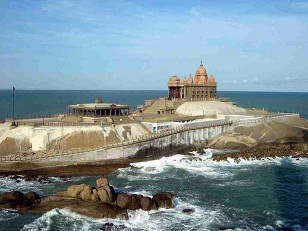
Tamil Nadu, South India, Beach, History, Musuem, Nature, Temple, Valley, Water falls
Kanyakumari is a town in Kanyakumari district of Tamilnadu. This place was named after Goddess KanyaKumari who is the incarnation of Goddess Parvati. Earlier this was called as Cape Comorin. This place is famous for Pilgrimage. It is the confluence point of Indian Ocean, Bay of Bengal and Arabian Sea. Sunrise and Sunset from the beaches are most attractive. Swami Vivekananda spent his meditation time in this place. Several rulers ruled this place such as Pandayas, Nayaks, Cheras, and Cholas. Sarees and other textiles are worth buying.
What to see in Kanyakumari:
Kanyakumari Temple: This temple is dedicated to Kumari Amman who kept waiting for her groom on her wedding day but he did not come. Nose ring of the statue is so bright. One can identify this from long distance also.
Tiruvalluvar Statue: Height of this statue is 133ft. This is the statue of Saint, Poet Tiruvalluvar. He was the writer of Tirukkural.
Vivekananda Rock Memorial: This was built by Ramakrishna mission in 1970. It was built on a small island off the shore of Kanyakumari. This is dedicated to Swami Vivekananda.
Gandhi Memorial: This is designed like a temple which is dedicated to Gandhi. In this place urn can be seen. In that Urn, Gandhi’s ashes were kept before immersion. Position of the urn is kept in such a position that on 2nd Oct (which is the birth day of Gandhi) first ray of light fall on the urn.
Government Museum: It is having great historical importance. Tribal Objects, woodcarving, Bronze sculpture, Old Coins are placed here.
Kanyakumari Beach: This one of the most attractive place for the tourists. Sunrise and sunset during full moon days in the month of April is most popular.
What to see around Kanyakumari:
Padmanabhapuram Palace: This Palace is the best example for rich cultural heritage. It is located in Padmanabhapuram village in Kanyakumari district which is 33kms away from the city.
Mathur Aqueduct: This was built on Pahrali River. It is the highest and longest aqueduct in South Asia. It is located 46kms away from the city.
Udayagiri Fort: This is one of the ancient forts which were constructed in 1600 AD. It is located 32kms away from the city.
Vattakottai Fort: It is one of the major attractions near Kanyakumari. This was built in 18th century. It is located 9kms away from the city.
Chitharal: It is located 50kms away from Kanyakumari. This place is most famous for Jain Monuments.
Pechiparai Reservoir: During the reign of Maharaja Sri Moolam Thirunal this was built. Tourist come to this place thought-out the year. It is located 56kms away from the city.
Muttom Beach: 100 years old Light house and sunset from this beach are the attractions of this place. It is located 36kms away from kanayakumari.
Sothavilai Beach: It is one of the longest beaches of South India. This beach is situated 10kms away from the city.
Olakaruvi Falls: It is located 21kms from the city. This place is most attractive place for the visitors due to waterfalls
Getting to Kanyakumari: This place is well connected though road and railways. From the cities like Jammu Tawi, Kolkata, Delhi, Chennai, Mumbai, Bangalore etc buses and trains are available. Nearest airport is Thiruvananthapuram International Airport.
Getting around Kanyakumari: Buses, autos, taxis are available to visit the place around the city.
Best time to visit Kanyakumari: Between October to March tourists rush will be more in this place. So this is time is considered as best time to visit.
Where to stay In Kanyakumari: Plenty of hotels are available in Kanyakumari. Huge number of Budget hotels and midrange hotels are located in Kovalam Road and in East Car Street. At Kottakari Road and Sunset Point luxury hotels are available.
Where to eat In Kanyakumari: Plenty of restaurants are available all over the city. Continental, North Indian, South Indian, Italian, Punjabi, Chinese cuisines are available in all the restaurants.
Thanjavur is a city in Thanjavur district of Tamilnadu. Word Thanjavur is derived from Tanjan, a legendary demon in Hindu Mythology. This city is stated as cultural capital of Tamilnadu. Thanjavur is famous for Paintings, history, handicrafts, arts, temples. Rice cultivation is more in Thanjavur so this place is also known as Rice Bowl of Tamilnadu. Cholas played the major role in developing this city as centre for culture and art. Worth buying articles in Thanjavur are Jewellery, Brass Idols, Bronze Idols and Paintings.
What to see in Thanjavur:
Thanjavur Royal Palace: It is situated within the vijayanagara Fort Complex which is the residence of Thanjavur Nayak Kings. Royal palace was built in 16th century.
Brihadeeshwara Temple: This Temple is located in centre of the city. It is one of the largest temples in the world. Temple is dedicated to Lord Shiva. It is famous for its beautiful architectural style. Temple was build in 11th century by Raja raja Chola I.
Vijaynagara Fort: Fort construction started by Vijay Raghav, Nayak King but completed by Maratha rulers. Other attractive places within the fort are Siva Ganga Gardens, Art Gallery, Serfoji’s Saraswati Mahal Library, Sangeetha Mahal, and Thanjavur Palace.
Thanjavur Art Gallery: It is located within the Thanjavur Royal Palace. Rare collection of Bronze and Stone Statues can be seen here. Chola period Idols are also placed here.
Nandi Bull: Nandi is always having its own importance in Hindu mythology. Height is 12feet, Length is 19.5feet, and width is 18.25feet. Weight will be more than 25tonnes.
Siva Ganga Gardens: Major attraction of this garden is huge tank which provides drinking water to the city people. This was built in 16th century.
Vellai Puliar Temple: This is one of the ancient temples in Thanjavur. Major attraction is Lord Ganesha which is made up of white stone.
Schwartz Church: This is located inside the Thanjavur Palace. In 1779, this was built by Raja Serfoji.
Sangeetha Mahal: This is another attraction inside the Thanjavur Palace. It is the hall of music built in 1600. This is the theatre adorned with gems.
Our Lady of Sorrows Church: This is the oldest church in the city which was built in 1740AD by an Italian Jesuit Priest.
What to see around Thanjavur:
Papanasam: It is located 30kms away from the city. This place consists of 108 Sivalayam Temples. Another attraction is Granary. It is having the capacity to store 3000 Kalams of rice.
Mercury Temple: It is located 16kms away from Thanjavur. This temple is dedicated to Lord Mercury. Other name of the temple is Sri Suvedaranyar Temple.
Grand Anicut / Kallanai: It is located 45kms away from Thanjavur. Around 1st century this was built by Chola King Karikalan. One interesting thing is this building is still in use.
Airavateswara Temple: It is one of the pilgrim places nearby Thanjavur. This temple is located in Kumbakonam which is 35kms away from Thanjavur. Temple is dedicated to Lord Airavateshwara who is an incarnation of Lord Shiva.
Chandra Bagawan Temple: It is located 25kms away from the city. This temple is famous for Navagraha Temples.
Getting to Thanjavur: This place is well connected with road ways. Nearest railway station and airport are located in Trichy.
Getting around Thanjavur: Autos, Buses and Taxis are available to visit the places around Thanjavur.
Best time to visit Thanjavur: October to April is the best time to visit this place.
Where to stay in Thanjavur: Plenty of accommodations are available. As per the requirement one can choose the hotels. Best hotels are Hotel Star Residency, Sangam Hotels, and Hotel Oriented Towers.
Where to eat in Thanjavur: Plenty of restaurants are available. Continental, Chinese, Indian cuisines are available.
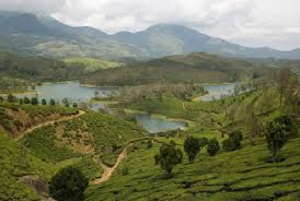
Tamil Nadu, South India, Boating, Fort, Hill station, History, Musuem, Nature, Temple, Trekking, Valley, Water falls
Yelagiri is a hill station Village of Tamilnadu in Vellore district. This village is surrounded by green valleys, rose gardens and orchards. Yelagiri is famous for trekking activity. Other activities of this place are Paragliding, rock climbing. It is also known as Poor Man’s Ooty. Earlier this place was under the control of Yelagiri Zamindars. In 1950 this place was undertaken by the Indian government. It is believed that Tipu Sultan Soldiers came to this place and settled in this region. After few years they became cultivators. Yelagiri Summer festival is most famous in Yelagiri. This is 3 days annual event celebrates in the month of May. Dog shows and Flower shows are major attraction during this festival season.
What to see in Yelagiri:
Nature Park: Area covered by this park is 12acres. It is the home to large number of plant species. Artificial lake was arranged inside the park. Fish aquarium in the park attracts the visitors. Large varieties of fishes along with tortoises can be seen here.
Don Bosco Centre: This is IT centre which was founded by Fr.Guezou of France. Aim of this centre is provide education to poor for best future.
Swami Malai Hill: Shape of the hill is like a cake. This place is famous for mountain climbing and trekking activities.
Yelagiri Lake: This is artificial lake created by man.
Nilavoor Lake: This is the best place for boating in Yelagiri. Garden look near the lake also attracts several visitors. Another attraction near the lake is Devi Temple which belongs to Kadavu Nachiyar. One interesting thing in this temple is, puja in this temple conducts only between 11 PM to 12PM on Friday.
Moksha Vimochana Temple: Before 14 years this was built by a saint. It is located near Nilavoor Lake. Architecture is most famous in this temple.
What to see around Yelagiri:
Nilavoor Tribal Village: It is located 3kms away from the village Yelagiri. Nilavoor Tribal village is famous for the park and for a small lake.
Jalamparai Falls: This valley is surrounded by lush Flora. This place is dry during summer season. Tourists rush will be more between November to February. It is located 5kms away from Yelagiri.
Vainu Bappu Observatory: It is located 51kms away from Yelagiri. Prior permission is essential to see this observatory. It is the house of Asia’s Largest Telescope.
Government Silk Farm: It is located 5kms away from Yelagiri. This is located at Mangalam. It is a home to silk worms.
Punganaur Lake: It is located 81kms away from Yelagiri. This is manmade artificial lake. This place is famous for boating and rowing activities.
Getting to Yelagiri: Only way to reach this place is though road. Private and Government buses are available to reach this place. From Bangalore, Coimbatore, Chennai buses come to this place frequently. Nearest railway station is located at Jolarpettai Junction. Bangalore airport is the nearest airport.
Getting around Yelagiri: To see the hill station walking is the best option. Buses are available to visit the places surrounding Yelagiri.
Best time to visit Yelagiri: Between November to February is the best time to visit Yelagiri.
Where to stay in Yelagiri: Dormitories and basic accommodation will be provided by YMCA Camp. From 2kms away from the Yelagiri Lake few resorts are available. Swimming pool, indoor games, gardens are available in these resorts.
Where to eat in Yelagiri: Very limited restaurants are available in Yelagiri. Most of the restaurants are located near Yelagiri Lake.
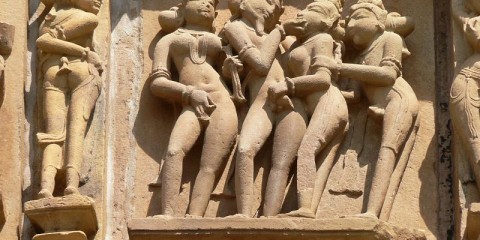
MP, Central India, Boating, Fort, History, Musuem, Nature, Temple, Wildlife Sanctuary
Khajuraho town is located in Chhatarpur district of Madhya Pradesh. This place is famous for medieval period Jain and Hindu temples. Khajuraho is the best example for Medieval Heritage. Temples in Khajuraho attained the status as UNESCO World Heritage site. City was bought out of the world in 19th century by Gen Alexander Cunningham. 22 temples are famous for Erotic Wall sculptures. Other name of these temples is Kama sutra Temples. Carvings on the temples do not belong to the God. Several reasons say for the carvings on the temple. Some people say that person must renounce all their sexual desires before entering the temple. Khajuraho Dance festival is famous in Khajuraho.
What to see in Khajuraho:
Kandariya Mahadev Temple: This temple was dedicated to Lord Shiva. In the western group of temples of Khajuraho it is the biggest temple consists of Chandela art. It was constructed between 1025 to 1050. On this temple 800 god images can be seen here.
Chitragupta Temple: This temple was dedicated to sun god and it was built in 11th century. Idol of Lord Surya is so beautiful. Its height is 5 feet.
Viswanath Temple: Marble Shivalinga is major attraction of this temple. Idols of Brahma can also be seen here. Another attraction of this temple is Nandi Bull which is 6feet height.
Shilpagram: This place is famous for performance of folk arts. Ancient culture of India can be seen here. This was established in 1998 by the government.
Parsvanath Temple: This temple is dedicated to Jain Tirthankaras. It is the largest Jain temple in India.
Lakshmana Temple: This temple is dedicated to Lord Vishnu which was constructed between 930 to 950 AD.
Chaturbhuj Temple: This temple belongs to Southern group of temples which was constructed in 1100 AD. It is west facing temple.
Devi Jagdambi Temple: This temple is dedicated to Goddess Jagdambi. She is the incarnation of Goddess Parvati. Image of this goddess is so huge. Wall carvings are most famous in this temple.
Vaman Temple: This temple is dedicated to Vaman which is dwaft avatar of Vishnu. Beautiful architecture can be seen here. Apart from that some of the status is studded with diamonds.
Kalinjar Fort: This fort is famous for huge collection of sculptures including Mashewar, Brahma, Vishnu and monuments. Kalinjar fort was built during Chandela dynasty.
Other attractions: Other attractions of Khajuraho are Javari Temple, Archaeological Museum, Jain Museum, Brahma Temple, Ghantai Temple, State Museum of Tribal and Folk Art, Shanthinath Temple.
What to see around Khajuraho:
Panna: This place is famous for its temples and forts. Panna National Park is located here. It is situated 43kms away from Khajuraho.
Gangau Dam: It is located 21kms away from Khajuraho. This is famous picnic spot which is surrounded by Gangu Sanctuary, Panna National Park, boating, water sports.
Dhubela Museum: This museum is the huge collection of ancient artifacts and modern artifacts. It helps to know how Khajuraho place is developed and its history.
Getting to Khajuraho: Khajuraho is well connected with road, railways and airways. From Varanasi and Delhi flights are available. From Mumbai, Kolkata, Jabalpur, Gwalior, Varanasi, Allahabad etc… Buses and trains are available to reach Khajuraho.
Getting around Khajuraho: Cycles can be hired to see the places in Khajuraho. Autos and Cycle rickshaws are available to see the places around Khajuraho.
Best time to visit Khajuraho: Best time to visit this place is between November to March.
Where to stay in Khajuraho: All range of hotels starting from budget hotels to luxury hotels are available. As per the requirement of the tourists they can choose to stay.
Where to eat in Khajuraho: Plenty of restaurants are available. All restaurants offer continental, Indian and Chinese Cuisines. Famous street food is Moong Daal Ka Halwa, Kaju Barfi, Jalebi etc…
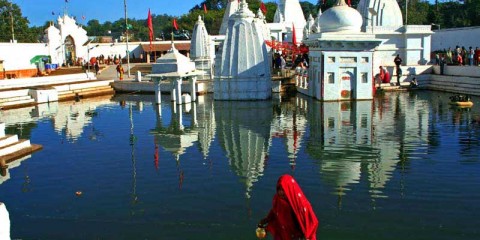
MP, Central India, Hill station, History, Musuem, Nature, Temple, Trekking, Valley, Water falls, Wildlife Sanctuary
Amarkantak is a pilgrim town in Madhya Pradesh. Amarkantak is derived from Sanskrit words Amar and Kantak. Amar means immortal and Kantak means Hindrances. It is the meeting point of Satpura and Vindhya ranges. People believe that this is the gateway to the heaven. This place consists of plenty of mango trees so it is known as Amrakoot by Poet Kalidas. As per the Hindu mythology, people states that when Lord Shiva destroyed Tripura by fire, one of the ashes fall on Amarkantak which turned into thousands of Lingams. Narmada Jayanti is most famous festival celebrates here.
What to see in Amarkantak:
Flora and Fauna: Due to equitable distribution of temperature large number of trees grown in this place. Between 1970 to 1976, Saxena, a forest Botanist identified 635 species. Few species are Anogeissus Latifolia, Gardenia Latifolia, Grewia spp, Bauhinia Spp, Terminalia Chebula etc. In this place wide variety of grasses can also be seen.
Shri Sarvodaya Digamber Jain Temple: World’s biggest Ashtadhatu Jain Idol can be seen here. This temple is under construction.
Ancient temples of Kalachuri Period: Between 1042 to 1072 AD plenty of temples built by Kalachuri Maharaja Karnadeva. These temples are famous for its architectural styles.
Narmadakund and Temples: This is the origin place of river Narmada. There are 16 major stone temple surrounded to this temple.
Sonakshi Shaktipeeth Temple: people believe that during Navrathri Goddess Sonakshi comes to this place to bless the people.
Trimukhi Temple: This temple is dedicated to Lord Shiva which is located on the top of a hill in Amarkantak. Among 24 temples in Amarkantak this is the oldest temple.
What to see around Amarkantak:
Dudh Dhara: This place is most famous for waterfalls. It is located 8kms away from Amarkantak. Horticulture garden is worth seeing near these waterfalls.
Kabir Chabutara: For the followers of Saint Kabir this is most important place. It is believed that here Kabir had done meditation for several years.
Mai Ki Bagiya: In the honour of Goddess Narmada this garden was built. It consists of rose plants, Gulbakawali, Mango, banana trees etc… Other name for this garden is Mother’s Garden. It is located 3kms away from Amarkantak.
Kapil Dhara: This place is famous for waterfalls. These waterfalls are surrounded by mountains and dense forests. This place is named after the sage Kapil Muni. It is located 8kms away from the town.
Jwaleshwar Mahadev: It is located 2kms from Amarkantak. This is the origin place of river Johilla. Lord Shiva temple near this place is most famous.
Sonemuda: This place is surrounded by Valleys and thick forests. Trekking activity conducts here. It is located 3kms away from the town.
Getting to Amarkantak: Amarkantak is well connected with Anuppur, Bilaspur, Rewa, Jabalpur, Umaria, and Shahdol through roadways. Nearest rail line is located at Pendra Road which 42kms away from Amarkantak. Raipur airport and Jabalpur airports are the nearest airports of Amarkantak.
Getting around Amarkantak: Walking is the best option to see the place in Amarkantak. Autos are the only means to visit the surrounding places of Amarkantak.
Best time to visit Amarkantak: Between October to March visitors feel so comfortable to visit this place.
Where to stay in Amarkantak: Very limited accommodation facilities are available. Local municipality is providing certain cottages to the visitors. Kalyan, Barfani ashrams and Madhya Pradesh state Tourism also providing some rooms to the visitors of this place. Luxury accommodation cannot be seen here.
Where to eat in Amarkantak: Only limited options are available to eat in Amarkantak. Dharmasalas and few Ashrams are providing food at best quality.
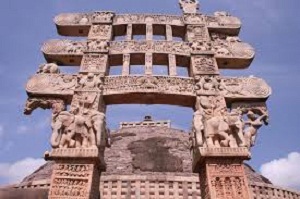
MP, Central India, Buddhist Monestery, Buddhist Stupas, Buddhist temples, Caves, History, Musuem, Nature, Temple
Sanchi is a small village in Raisen district of Madhya Pradesh. Sanchi is derived from Pali Word Sanch which means to measure. This place is most famous for oldest stone structure in India i.e. The Great Stupa. This was built by Ashoka in 3rd century BC. In this place several Buddhist Monuments, stupas, Pillars, Monasteries are most attractive. Richest carvings on the stupas are most attractive in Sanchi. Earlier name of Sanchi is Vidishanagar.
What to see in Sanchi:
Sanchi Museum: This is an archaeological museum. Large number of ancient artefacts can be seen here. Ashokan Pillars, Metal objects used by monks are preserved in this museum. Almost all the items belong to 1st and 3rd centuries.
Ashoka Pillar: It is located near Great stupa. This pillar is beautifully carved in Greco Buddhist Style. This Pillar looks like Sarnath Pillar. Only difference is that here the lions do not have Dharmachakra.
Great Stupa: Major attraction in Sanchi is Stupas. These stupas are dome shaped hemispherical structure. Stupas are oldest structure in India. One of the stupa is Great Stupa. Its height is 16.4m and its diameter is 36.5meters. This is considered as Stupa No.1.
Stupa No.2: This is surrounding with stone wall. Decorations on the stupa makes the stupa most attractive. There are no gateways to this stupa. It was constructed in 2nd century.
Stupa No.3: Shrines of Sariputta, Mahamogellena and Buddha can be seen inside the Stupa.
Gupta Temple: This place is best example for the traditions of ancient India. It was built in 5th century.
Toranas/ Four Gateways: Great stupa is surrounded by 4 gateways. This is also known as Toranas. They are named as Western, Eastern, Northern, Sothern gateways.
The Great Bowl: It is used to distribute food to the monks. This bowl is made out of the single stone.
What to see around Sanchi:
Vidisha: It is located 10kms away from Sanchi. Most attractive place for the tourists is Udaygiri Caves. Other places to visit in Vidisha are Bijamandal, Lohang Pir, and Helidorus Pillars.
Bhopal: Bhopal is known as city of lakes. Best places to visit in Bhopal are Taj-ul-Masjid, Upper Lake, Lower Lake, Bharat Bhawan, Van Vihar Park, Birla Museum, and Archaeological Museum. It is located 48kms away from Sanchi.
Bhimbetka: This place is famous for horse and elephant ride, household scenes, animal fighting’s, music, dancing and hunting. In the caves of Bhimbetka Wild boars, lions, tigers, bisons etc can be seen. It is located 89kms away from Sanchi.
Getting to Sanchi: This place is well connected to Bhopal through road ways. Best option to reach this place is hiring private taxis. Nearest railway stations are Bhopal and Vidhisha. Nearest airport is Raja Bhoj Airport at Bhopal.
Getting around Sanchi: Walking is the best option to enjoy the nature and places to see in Sanchi. Buses are available to visit the places around Sanchi.
Best time to visit Sanchi: Best time to visit this place is between October to March. During November large number of visitors comes to this place. At that time Chethiyagiri Vihara festival celebrates very grandly.
Where to stay in Sanchi: Only option to stay is MP tourism hotels and lodges. Most of the people prefer to stay in Bhopal.
Where to eat in Sanchi: Limited restaurants are available. Continental, Chinese, South Indian and North Indian food is available in all the restaurants.
Gwalior is historical city in Madhya Pradesh. This place is named after Sage Gwalipa. He saved the life of King Suraj by curing Leprosy disease. Other name of Gwalior is Fort City. Babur, Mughal Emperor, stated regarding Gwalior as the pearl amongst fortresses in Hind. During the British rule this place enjoys 21 gun salutes. This place is famous for Hindustani Classical music. Two cultures are dominated Gwalior. They are Braj and Bundeli. Ahir is the famous dance in Gwalior. Popular festival in Gwalior is Baredi.
What to see in Gwalior:
Gwalior Fort: This is the most beautiful fort one has to visit. It is situated on a sandstone hill. On the recommendation of Sage Gwalipa, this was built by King Suraj. Statues of Jain Theerthankaras are most attractive. Entry fee will be charged to see the fort.
Gurudwara Data Bandhi Chhod: In the memory of Guru Hargobind Singh, Sixth Sikh Guru this was built. For 2 years he was in jail kept by the king Jahangir. On the recommendation of 52 Hindu kings he was released from the jail.
Teli Ka Mandir: This temple is dedicated to Lord Vishnu. North Indian and Dravidian unique structures is so famous in this temple.
Sarod Ghar: This was established by Ustaad Amjad Ali Khan. This is the only museum in Madhya Pradesh dedicated to musical instruments. Huge collection of documents and photographs are placed here.
Tomb of Ghous Muhammad: Ghous Mohammed is an Afghan Prince who helped to Babur to win the fort.
Man Mandir Palace: This palace is famous for carved stone walls, designed tiles. In this place Jauhar Pond is located. In this place Rajpur ladies committed sati. This was built in 16th century.
Suraj Kund: This pond was built in 15th century. It is a part of Gwalior fort.
Museums: Several museums present in Gwalior. Gujari Mahal Archaeological Museum is one of the most attractive museums dates back to 1st century. Statues of several Goddesses can be seen here. Most attractive statue is Gyraspur, tree Goddess. Other museums are Municipal Corporation museum, Kala Vithika.
What to see around Gwalior:
Jail Vilas Palace: This is located 4kms away from Gwalior. This was built by Maharaja Jiyaji Rao Scindia in 1809. To test the strength of the Palace 10 elephants hang from the ceiling. More than 35 rooms of the palace converted into museum.
Tighra Dam: It is located 22kms away from Gwalior. This dam supplies drinking water to the city.
Datia: It is located 75kms away from Gwalior. 7 storied Palace is most attractive here which was constructed in 1614.
Sonagiri: 77 Jain temples are located here. It was constructed in 17th century. This is 72kms away from Gwalior.
Getting to Gwalior: Gwalior is well connected with all means of transport such as Road, Railways and Airways. From the cities like Varanasi, Jaipur, Mumbai, Bhopal, Indore, Agra, Delhi buses, trains and air buses are available.
Getting around Gwalior: Tongas, Tempos, autos, local buses are available to visit the places surrounding Gwalior. Cheapest means of transport is Tango.
Best time to visit Gwalior: Climate is extreme in all the seasons. Best time to visit this place is between October to March.
Where to stay in Gwalior: Plenty of hotels are available to stay in Gwalior. Naya Bazaar is famous for budget hotels. In the luxury hotels coffee shops, shopping places are also available.
Where to eat in Gwalior: Most popular food in Gwalior is Malpua, Khoprapak, Mawa Bati, Bhuttle Ki kees, Kebabs and Rabdi. Plenty of restaurants are available to eat. Continental and Nepal dishes are most famous to serve in the restaurants.
Mandu is located in Dhar district of Madhya Pradesh. This is a beautiful place with Palaces, crafted Pavilions and the lakes. Mandu was founded by Parmar rulers in 11th century. People believe that this place is resembled the love and affection of Prince Baz Bahadur and Rani Roopmati. Beautiful rock cut caves attracts the tourist. Excellent paintings can be seen on the walls of the caves. Shopping lovers can buy best things from Mandu are fabrics, colourful textiles, showpieces, wall pieces, gift items, Home decors.
What to see in Mandu:
Jahaz Mahal / Ship Palace: It is situated between 2 artificial lakes. This palace is in elephant shape which consists of 3 large halls with excellent bath. It was constructed in 15th century. Stones and colored tiles in the palace are most attractive.
Rupayan Museum: This consists of tools and crafts which are used by the ancient Mandu People.
ASI Museum: Large Statue of Thirthankar is the major attraction in this museum. Large number of Hindu sculptures which belongs to 11th and 12th century can be seen here.
Jal Mahal: This is also known as Water Mahal. It was built for the private escape of royal couples.
Jami Masjid: This is the best construction during Ghauri dynasty. It was constructed with several monuments and red sandstones.
Champa Boali: It was a wide construction. It is believed that water in the well which is situated here smells like Champa Flower. Under rooms are more attractive. This place acted as summer recreation to the kings.
Tomb of Hoshang Shah: This is a unique tomb and it is India’s first marble edifice. It is the best example for Afghan architecture. Beautiful towers, Porticoed courts, marble work, proportioned dome are most beautiful.
Rupmati Pavilion: It was actually built for the army post but this was used as recreation place by Rani Roopamati.
Jain Temple: Images of plenty of Jain Thirthankars are placed here. All are made up of Gold, Silver and Marble.
Hindola Mahal / Swing Palace: Due to sloping sidewalls this mahal is named as Hindola Mahal. It is T Shaped structure which was built in 1425 by Hoshang Shah.
Other Attractions : Other attractions in Mandu are Darya Khan’ s Tomb, Dai Ka Mahal, Rewa Kund, Dilwar Khan’s Mosque, Nilkanth Mahal, Darwazes, Shri Mandavgarh Teerth.
What to see around Mandu:
Baz Bahadur Palace: It is located 4kms away from Mandu. This beautiful Palace was built by last king of Malwa. Spacious Patios, ornate halls, high terrace, Rajasthani and Mughal architectural style are most attractive.
Bagh Caves: These are Buddhist caves belong to 400 AD to 700 AD. It is situated 50kms away from Mandu.
Getting to Mandu: Mandu is well connected with roadways. From other cities such as Bhopal, Ujjain, Ratlam, Dhar buses are available frequently to reach Mandu. Nearest railway station is Ratlam which is 124kms away from Mandu. Nearest airport is at Indore.
Getting around Mandu: To see all the sities in Mandu hiring cycles, scooters, Bikes is the best option. One can enjoy these rides. Tempos, Autos are available to visit the surrounding places of Mandu.
Best time to visit Mandu: During the monsoon season climate in Mandu is so pleasant. Monsoon season is between July to September. This is the best time to visit this place.
Where to stay in Mandu: Plenty of accommodation facilities are available to stay in Mandu. All range of hotels starting from budget to luxurious hotels is available.
Where to eat in Mandu: Most famous dishes in Mandu are Malpua, Khoprapak, Mawa Bati, Bhuttle Ki Kees, Kebabs, Mandu Ki Imli. Plenty of restaurants serve local, Chinese, South Indian cuisines but only vegetarian food.
Indore is the largest city in Central India. This city is famous for entertainment, education, technology, research, fashion, art, finance and commerce. India’s third oldest stock exchange is located here. IIM Indore most famous institution for management studies is also located here. This city was founded by Rao Nandlal Chaudhary . He named this city as Indrapur. During the Maratha regime it was renamed as Indur and during the British era it was renamed as Indore. Famous festivals celebrates in this city are Ahilya Utsav, Rangapanchami. Chanderi and Maheshwari saris are very popular in this place.
What to see in Indore:
Lal Bagh Palace: It is 3 storied building which was built between 1886 to 1921 by Maharaja Shivaji Rao. Best collection of Italian Paintings, contemporary Indian and old coins are located here. Belguium Stained glass, flying nymphs and Italian Marbles can be seen inside the palace.
Indore Museum: Best collection of armour, arms, coins which belongs to 11th and 12th century can be seen here. It consists of 2 galleries. In Gallery I, Prehistoric period artefacts are placed and in Gallery II consist of Carvings of Hindu mythology.
Kanch Mandir: This temple is dedicated to Lord Mahavir. Glass beads covered this statue. 50 murals are also placed here. It was built in 20th century by Sir Hukamchand.
Krishnapura Chhatris: It was the tombs of Holkar dynasty which was constructed in Maratha style on the banks of river Khan.
Sukh Niwas Mandir: It was the summer residence for Holkars which was built in Indo Western style. This was surrounded by Sukh Mahal Lake and beautiful garden.
Town Hall / Mahatma Gandhi Hall: It was constructed in Indo Gothic style. This hall consists of a temple, Children Park, a library.
Rajwada / Holkar Palace: This was the residence place of Holkar dynasty which was built by Rani Ahilyabai Holkar. She is responsible to become the city as commercial hub. Visitors are so attractive to see this place as most beautiful Maratha and French style of architecture can be seen here.
What to see around Indore:
Patal Pani Water Falls: It is most attractive tourists centre with waterfalls. Trekking activity is also conducts here. It is situated 31kms away from Indore. People believe that under the waterfalls Patal city is located.
Omkareshwar: This is an island called as Mandhata or Shivapuri. On the north side of the temple Vindhya hills are located and on the south side Satpura hills are located. It is 71 kms away from Indore. This temple is dedicated to Lord Shiva. It is one of the 12 Jyothirlings.
Getting to Indore: Indore is well connected with road, railway and airways. From all the major cities such as Jaipur, Bhopal, Kolkata, Chennai, Ahmedabad, Mumbai, Delhi buses, trains, and airbuses are available.
Getting around Indore: Autos, Taxis, private vehicles are available to visit the places surrounding Indore.
Best time to visit Indore: Between October to March weather is so pleasant so it is considered as best time to visit Indore.
Where to stay in Indore: Plenty of accommodations are available to stay. All budget, midrange and luxury hotels are available for the tourists. Best hotels in Indore are Fortune Landmark Indore, Radisson Blu Hotel, Shreemaya Hotel, and Hotel Omni Palace.
Where to eat in Indore: Plenty of restaurants are available. All the restaurants serve both vegetarian and non vegetarian food. International, Chinese, Indian cuisines are available in almost all the restaurants. Most famous food in Indore is Poha Jalebi.
Ujjain is located on the banks of river Kshipra in Central India. It is one of the oldest cities in India. In the historic days this place is known as Ujjayini. This place is famous for Kumbh Mela which is held every 12 years. This mela is also known as Simhastha Mela. It is believed that this place originated during Sagar Mathanam. When Demos and Gods are doing Sagar Mathanam, Amrit came out of the ocean. While fleeing with the pot 4 drops of Amrit fell on 4 different places on the earth. Those places are Nashik, Haridwar, Allahabad, and Ujjain. It is also believed that Shipra River also comes out of the ocean during sagar Mathanam. Kartik Mela, Mahashivrathri, Kumbh Mela are famous festivals here.
What to see in Ujjain:
Bade Ganeshji Ka Mandir: Temple consists of huge statue of Lord Ganesh and 5 faces of Hanuman. This is the best centre for learning Sanskrit and astrology.
Mahakaleswar Temple: It is five level temples which are dedicated to Lord Shiva. It is believe that Lord Shiva to have formed on his own. Roof of the temple is decorated with Silver. More than 100 Kgs of silver was used for this.
Kalbhairav Temple: This temple is dedicated to Kalbhairav. Several Gods and Goddesses statues are also placed here. Shivlingam is under the banyan tree.
Bhartrihari Caves: This is situated on the banks of river Shipra. It is believed that Poet Bhartrihari meditated here.
Sandipani Muni’s Ashram: It is believed that this is the place where Lord Krishna used to wash his writing tablets. This ashram is dedicated to guru Sandipani.
Jantar Mantar / Vedh Shala: This place is having astronomical importance which was established in 17th century. Star gazers considered this place as Jantar Mantar.
Ram Janardhan Mandir: This temple is best example of Maratha period’s architectural and elegant structural style. Large number of Maratha paintings is placed here.
Kalidas Academy: This was constructed in the memory of Poet Kalidas by Government of Madhya Pradesh.
Other attractions of Ujjain: Other famous temples and attractions in Ujjain are Vikram Kirti Mandir, Navagrah Mandir, Harsiddhi Temple, Gopal Temple, Chintaman Ganesh Mandir, Vikram University, Iskon Temple, Kaliadeh Palace, Durgadas ki Chhatri.
What to see around Ujjain:
Gadkalika: It is believed that in this place Kalidasa worshipped Goddess Gadkalika. It is located 2 miles away from Ujjain.
Indore: It is located 55 kms away from Ujjain. This city is having historical importance. It is the largest city in Madhya Pradesh. Large number of monuments and temples are placed here.
Getting to Ujjain: Ujjain is well connected with road ways and Railways. From several cities such as Bangalore, Delhi, Mumbai buses and trains are available to reach this place. Nearest air port is Devi Ahilyabai Holkar Airport which is located in Indore. This airport is well connected with Hyderabad, Pune, Patna, Chandigarh, Ahmedabad, Delhi, and Mumbai.
Getting around Ujjain: Tonga’s, tempos, autos, buses are available to visit the places nearby Ujjain.
Best time to visit Ujjain: Between October to March is the best time to visit Ujjain.
Where to stay in Ujjain: only budget and midrange hotels are available in Ujjain. Plenty of midrange hotels are available at Free Ganj Area.
Where to eat in Ujjain: As this place is famous for large number of temples only vegetarian food is available here. North Indian, Punjabi, Kashmiri, Chinese along with all other varieties of Indian cuisines are available here.
Chanderi is a historical town in Ashoknagar district of Madhya Pradesh. Historical monuments are built by Malwa Sultans and Bundela Rajputs. These historical monuments are established between 11th century to 18th century. Religions such as Islam, Jainism and Hindu are dominated during this period. Shishupal who is the cousin of Lord Krishna belong to this place. Several dynasties have conquered the city such as Scindias, Bundelas, Mughals, and Malwa Sultans. This place is surrounded by forests, lakes and hills. Handloom sarees are most famous here.
What to see in Chanderi:
Chanderi Fort: This was built during the Mughal period. It is having 3 gates. Main gate of this fort is known as Khooni Darwaza. It is located in the ancient town on the top of the hill.
Koshak Mahal: As per the history it is stated that, when Mahmud Khilji of Malwa is passing from this place he ordered to build a Mahal here in 1445 AD. That Mahal was named as Koshak Mahal. His plan is 7 storied building but he is able construct only 2 stories during his life time.
Jageshwari Temple: This is one of the beautiful temples in Chanderi. Statues of 2 lions guarded this temple. Idol is having white face and large eyes.
Jama Masjid: Most beautiful monument of Chanderi is Jama Masjid. This is famous for its high arcades and domes. It is the biggest mosque in Bundlekhand. This was constructed in 13th century by Ghiassuddin Balaban.
Archaeological Museum: Plenty of sculpture collections are placed here. Timing to visit this museum is 10.30 AM to 5.30 PM.
Battisi Bavdi: Name is derived from 32 steps flight. In 1485 this was built by Sultan Ghiyasuddin Shah.
Shahzadi ka Rauza: This is the tomb of Shahzadi Ka Rauza which is built by Sultans of Malwa during 15th century. It is famous for its geometrical designs. Stone carving is unique.
What to see around Chanderi:
Shri Choubisi: Jain culture is more in Chanderi area. Jain places are more near Chanderi. One of the Jain Mandir near Chanderi is Shri Choubisi. It is located 4 kms away from Chanderi.
Parameshwar Tal: This is located kilometre from Chanderi. It was built by Bundela Rajput Kings. On its banks cenotaphs of 3 Rajput kings and a temple are located.
Buddhi Chanderi: It is located on the banks of river Urvashi which is 20 kms away from Chanderi. Thousands of Jain temples are located here. All are built during 9th and 10th century.
Thurvanji: It is located 26 kms away from Chanderi. Early medieval period Jain temples are located here.
Getting to Chanderi: Chanderi is well connected with road ways. From Jhansi, Bhopal, Sanchi, Vidisha, Tikamgarh, Lalitpur buses are available. Nearest railway station is located at Lalitpur which is situated 40 kms away from Chanderi. Nearest airport is at Gwalior or Bhopal.
Getting around Chanderi : Autos and Buses are available to visit the surrounding places of Chanderi
Best time to visit Chanderi: Some people want to know the best time before visiting any place. Best time to visit this place is between October to March.
Where to stay in Chanderi: Plenty of hotels are available to stay in Chanderi but all are budget and midrange hotels. Luxury hotels cannot be seen here. Best Hotels in Chanderi are Tana Bana, Hotel Shri Kunj.
Where to eat in Chanderi: Famous food available here are Malpua, Khoprapak, Mawa Bati, Bhuttle Ki Kees, and Kebabas. All the restaurants serve Chinese, Mughal, Punjabi, South Indian and North Indian Cuisines.
Bhopal is the capital of Madhya Pradesh. As large number of natural and artificial lakes dominating the city it is known as City of Lakes. City attracts the tourists with amazing landscapes, hills and forests. It is divided into old city and new city. Old city consists of narrow alleyways while new city attracts the tourists with gardens and Parks. Mughal influence is more in the city. Fruits and sweets such as Sewaiya and Bafla are part of their meals. Nawabzada Shahryar Mohammad Khan, former Pakistan Foreign Secretary, and Nawab Mansoor Ali Khan, former Indian test Captain Ace Cricketer belongs to this place.
What to see in Bhopal:
Taj-ul-Masjid: This is one of the oldest Mosques. Construction of this mosque started by Sultan Shah Jehan but completed by Allama Mohammed Imran in 1971. It is known as Crown of Mosques.
Upper Lake: Other names are Big Lake and Bada Talaab. This is oldest manmade lake in India. It is believed that King Bhoj’s skin disease cured by this lake. Water sports are most famous here.
Lower Lake / Chota Talaab: It is connected with upper lake. Water sports are most famous here.
Bharat Bhawan: It is multi art complex. This is the best place for exploration and innovation of visual, Vocal and Performing arts. It is a thrieving centre for contemporary arts.
Van Vihar Park: It is situated in the heart of Bhopal on the hillock. It is like Zoo.
Birla Museum: It is an archaeological museum established in 1971. Artefacts belongs to prehistoric period are placed here. Tools used by Palaeolithic and Neolithic man are placed here. Terracotta belongs to 2nd and 6th century BC and stone sculpture belongs to 7th century are also placed here.
Archaeological Museum: Statues of Lord Vishnu, Shiva, Lakshmi and painting from Bagh caves are major attraction in this museum.
Other attractions: Other attractions in Bhopal are Gohar Mahal, Museum of Mankind, Shaukat Mahal, Jama Masjid, Moti Masjid, Bhimbetka Caves, Fish Aquarium, Sanchi Stupa, Sair Stupa, Lakshmi Narayan Temple, and Gufa Mandir.
What to see around Bhopal:
Sanchi: In 3rd century BC, Emperor Ashoka built several stupas. It is the oldest stone structure in India. It is Located 48 kms away from Bhopal.
Bhojpur Temple: It is located on the banks of Vetraveti River. This temple is named against King Bhoj, former ruler of this place. It is dedicated to Lord Shiva. It is located 32 kms from Bhopal.
Bhimbetka: South Asian Prehistoric cave Paintings and prehistoric rock shelters are placed here. It is located 44 kms away from Bhopal.
Getting to Bhopal: Bhopal is well connected with Road, Railway and Air ways. From Jabalpur, Chandigarh, Chennai, Hyderabad, Mumbai, Delhi etc bus, trains and airbuses are available to reach Bhopal.
Getting around Bhopal: Autos, Taxis, Mini buses, Buses are available to visit surrounding places of Bhopal.
Best time to visit Bhopal: Best time to visit the place is place between November to February.
Where to stay in Bhopal: Plenty of budget, Midrange and Luxury hotels are available to stay in Bhopal. Most of the Midrange hotels are located in Shamala Hills and Maharana Pratap Nagar. Budget hotels with good facilities are available near bus stand and railway station.
Where to eat in Bhopal: Mughal influence in spicy meat delicacies such as Kebabas and curries in more. Both vegetarian and non vegetarian food is available. All varieties of Continental, Chinese, Mughal, Punjabi, South Indian cuisines are available.
Chamba is the ancient town in Himachal Pradesh. This town is famous for several Palaces and Temples. This is the most beautiful hill station located at the heights of 3268 feet. In 920 this was established by Raja Sahil Verma. Sal River and Ravi River can be seen here. Famous activities near these rivers are river crossing and river rafting.
Both private and government organisation conducts this rafting. School of art is most attractive place to the tourists. This was flourished between 10th to 17th centuries. Major attractions for the shopping lovers are hand woven textiles, chappals, Pahari paintings. Suhi Mata Mela and Minjar Mela are most famous festivals celebrate here.
What to see in Chamba:
Hariraya Temple: This temple is dedicated to Lord Vishnu. It is constructed during 11th century in Shikhara style. Idol of Lord Vishnu is made out of 8 different materials.
Bhuri Singh Museum: This is named after Raja Bhuri. Paintings of Raja Bhuri, Guler Kangra style of paintings are most attractive to the visitors. Other collections of the museum are ornaments, musical instruments, costumes, coins, armour, and arms.
Church of Scotland: This place is famous for arched windows and carvings. Other name of this church is St.Andrew’s Church .Now this is converted into museum.
Laxmi Narayana Temple: It is the biggest temple in Chamba which is built in 10th century by Sahil Varman. This temple is best example for Shikhara style architecture. Temple is dedicated to Lord Shiva and Vishnu.
Central Park: From this park one can view entire hill station. Lord Shiva temple is a part of this park. Other name is Choughan.
Chamunda Devi Temple: Shrines of several Gods and Goddess can be seen here. This temple is dedicated to Chamunda Devi who is incarnation of Goddess Kali. It was built 750 years ago.
Rang Mahal: In 18th century this was constructed by Raja Umed Singh. Mughal and British architecture can be seen on this Mahal. Things like Chappals, Shawls, and Kerchiefs are sold here.
Other Place to see in Chamba: Gauri Shankar Temple, Bansi Gopal Temple, Chobia Pass, Chamera Dam are other places to see in Chamba.
What to see around Chamba:
Dal Lake: Deodar tree is major attractions in this place. Near the lake a small Shiva Mandir is located. Base camp for the trekkers is organised here. People believe that if they take a dip in the lake they will be blessed by Lord Shiva. It is located 92 kms away from Chamba.
Dalhousie: Dalhousie is a hill station in Himachal Pradesh. In this place river rafting is very famous. 5 hills are located in this place. They are Bhangora, Bakrota, Tehrah, Potreyn and Kathalagh. Large number of Victorian style mansions can be seen here. It is located 43 kms away from Chamba.
Chattrari: Shakti Devi temple is most famous here. It is located 45kms away from Chattrari.
Saho: Entrance of this village is having images of Nandi and Lord Shiva. Lord Chandra Shekhara temple most famous here. It is located 20kms away from Chamba.
Getting to Chamba: It is well connected by road. From Dalhousie, Khajjiar, Bharmour town’s buses are available to this place. Nearest railway station is located at Pathankot. Nearest Air port is Gaggal airport.
Getting around Chamba: Private vehicles, autos and taxis are available to visit the surrounding places of Chamba.
Best time to visit Chamba: During the winter season temperature goes below zero degrees. Best time to visit this place is between March to October.
Where to stay in Chamba: Only budget and midrange hotels are available. Luxury hotels are not available. Most of the hotels are located at Court Lane.
Where to eat in Chamba: Restaurants in this place are very limited. Most popular food here is Rajma in curds. Continental, Chinese and Indian food is also available.
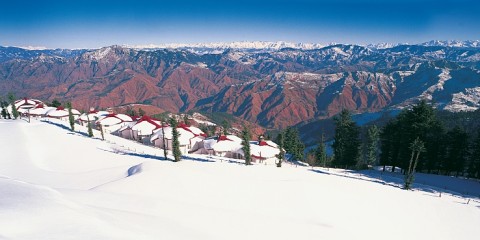
HP, North India, History, Musuem, Nature, Temple, Trekking, Valley, Wildlife Sanctuary
Kufri is a small hill station of Himachal Pradesh. The Word Kufri is derived from the word Kufr which means a lake in the local language. This is founded by British in 1819. From 50 years this place is so famous among the tourists. Popular activity is trekking. Several trekking places such as Fagu, Rewalsar, Shimla etc are started from Kufri to reach Manali.
Chail, Shimla and Kufri jointly known as Golden Triangle of Himachal Pradesh. Kufri is a perfect summer gateway. Annual winter sports festival celebrates here. Sikking competitions are the major attractions of Kufri. It is the best place for natural lovers as well as trekking lovers. Before Kufri ceded to the British it was the part of Nepal.
What to see in Kufri:
Himalayan Wild Life Zoo: Plenty of birds, Felines and Antelopes are living here. State Bird of Himachal Pradesh is Himalayan Monal. This Monal can also be seen in this zoo.
Mahasu Peak: During the winter season slopes of Mahasu Peak acts as Skiing ranges. It is highest peak in Kufri.
Indira Tourists Park: It is the best place for the relaxation during the evening timings. A major attraction of the Indira Park is Coffee shop.
Himalayan National Park: This is the best place to see several varieties of flora and Fauna. Few small temples are located inside the park .They are open only during summer season.
Chini Bungalow: It is one of the famous attractions in Kufri. In this place most exciting statues are located here.
Kufri Fun World: This is an amusement park. It is well equipped with worlds highest go-kart track, Pools and rides. All adults, teenagers, children are more exited to visit this place.
What to see around Kufri:
Shoghi: This place is known for most beautiful temples. It is beautiful town with excellent climate and lush green cover. It is located 27 kms from Kufri.
Chail: Chail is a beautiful hill station located in Himachal Pradesh. It was founded by Bhupinder Singh, Maharaja of Patiala. This place is famous for its architecture and the Palace which was built during British rule. It is located 34 kms from Kufri.
Barog: Major attraction in Barog is Renuka Lake. This is the largest lake in Himachal Pradesh. It is located 65 kms away from Kufri.
Shimla: This is famous hub for Indian tourism sector. It is surrounded by Oak Deodar and Pine forests. Several popular hill stations are located here. Kohana Embroidery, Thapada embroidery and Handicrafts of Shimla are world famous. It is located 34 kms away from Kufri.
Solan: Apart from several temples, oldest breweries are also located here. This place is also known as Mushroom Capital of India. It is located 62 kms away from Kufri.
Getting to Kufri: Best way to reach this place is road way. From several cities like Rampur, Kandaghat, Dharampur, Panchkula, Kalka, Shimla buses are available. Nearest railway station is located at Shimla. From railway station taxis are available to reach Kufri. Nearest airport is located at Shimla.
Getting around Kufri: Buses and Taxis are available to visit surrounding places of Kufri.
Best time to visit Kufri: During winter season temperature will be below zero degrees. At that time visitors can enjoy snowfall. Best time to visit this place is between March to October.
Where to Stay in Kufri: Several budget and midrange hotels are available to stay in Kufri. Luxury hotels are not found here. Few resorts are available. They are located at Kufri – Fagu Road and Kufri – Chail Road.
Where to eat in Kufri: Very Limited restaurants are available to have food in Kufri. Famous snacks available here are noodles, chaat, Pakoras, parathas. Chinese Continental and Indian food are available to eat.
Shimla is the capital city of Himachal Pradesh. This is famous hub for Indian tourism sector. This place is name after Goddess Shyamala Devi. She is incarnation of Goddess Kali. It is surrounded by Oak Deodar and Pine forests. Several popular hill stations are located here. Kohana Embroidery, Thapada embroidery and Handicrafts of Shimla are world famous.
Different music instruments such as Chimta Flute, Ghunghroo, Ghariyal, Manjara, Iktara etc are used by tribal’s to play the music. For the shopping lovers The Mall is the best place. Walking sticks, Kinnauri and Kullu shawls, mufflers, winter garments, Tibetian Jewellery are worth buying here. Festival which are famous here are Bharara Fair, Bhoj Fair, Lavi Fair, Mahasu Jatar, Pathar Ka Khel.
What to see in Shimla:
The Mall: This is the major shopping centre in Shimla. Several tourist offices, Post Offices, Bars, banks, Clubs, restaurants are located here. Gaiety Theatre is also placed here.
Kamna Devi: This is one of the major attractions in Shimla. It is popularly known as Prospect Hill. Baleugunj place is located near this hill. From this place visitors can see Tara Devi, Jutogh Canntt, summer hill and Shimla.
Christ church: It is located at the heart of the city. In many Hindi movies one can see this church. It was built in 1857.
State Museum: Collection of ancient Jewellery, Textiles, Dresses, Paintings, are placed here.
Indian Institute of Advanced Studies: This was built in 1884 during the period of Lord Dufferin. Henry Twain designed this place. Visitors can enjoy best views and gardens here.
Jakhu Hill: This is the highest peak of Shimla. Lord Hanuman Temple is very famous here. Chir and Deodar trees are major attraction to the visitors. Bajrangbali statue whose height is 108 feet is placed here.
What to see around Shimla:
Summer Hills: It is located 6 kms away from Shimla. This place consists of full of oaks and Pine trees. Himachal Pradesh University is situated here.
Tattapani: Hot springs are most famous in this place. It is located 51 kms away from Shimla. This is religious place having several temples. Trekking, Fishing, Rafting, adventures sports major attraction to the tourists.
Chali: This place is famous for deodar and Pine trees. Several tourists especially honeymoon couple visits this place. Idyllic resort is most famous here.
Mashobra: This place consists of awesome range of flowers, elegant guest houses, and green meadows. Major attractions here are apple orchards and thick woods of pine and oaks.
Glen: This is best Picnic Place for the visitors. It is located 4 kms away from Shimla.
Other place to visit: other places to visit nearby Shimla are Naldehra, Narkanda, and Kurfi.
Getting to Shimla: Through all the means of transport such as road, air and railways are well connected with Shimla. From all the major cities like Kullu, Chandigarh, Delhi buses, trains and air buses are available daily to reach this place.
Getting around Shimla: Plenty of Taxis and buses are available to visit the place surrounding Shimla.
Best time to visit Shimla: Best time to visit this place is between April to October. During the rainy reason visitors has to be so careful as roads in this place are so slippery.
Where to stay in Shimla: Plenty of hotels are available here. Based on the tourist’s requirements they can choose the hotels. All range of hotels is available here. Private and Government guest houses are also available.
Where to eat in Shimla: Plenty of restaurants are available. All varieties of food such as Chinese, Continental, and Indian food are available.
Dharmasala is located in Kangra district of Himachal Pradesh. Other name is Bhagsu. Dharmasala is divided into two parts. They are Upper Dharmasala which is also known as McLeod Ganj and other one is Lower Dharmasala. Lower Dharmasala consists of Commercial areas, local hospitals, schools and government offices. Upper Dharmasala is famous for Tibetan culture and community. This is the residence place of spiritual Tibetian Leader Dalai Lama. Prime Minister Jawaharlal Nehru had given permission for the Tibetians to live in this place in 1959. Main attraction of Dharmashala is Tibetian Architecture. Buddha Purnima is a famous festival celebrates in this place.
What to see in Dharmasala:
Dal Lake: Deodar tree is major attractions in this place. Near the lake a small Shiva Mandir is located. Base camp for the trekkers is organised here. People believe that if they take a dip in the lake they will be blessed by Lord Shiva.
Himachal Pradesh Cricket Association Stadium: This was opened in 2003. Venue holds IPL Matches and Ranji Trophy. Capacity of the stadium is 25000 seats.
Billing Adventure: In the international paragliding circuit Billing Paragliding site has become legend. It hosts both world cup and International competitions.
Tsuglagkhang: It is a vast temple complex consists of Namgyal Monastery which is residence of Dalai Lama, Cafeteria, library, Buddhist shrines, Prayer wheels, book shop, and Tibetian museum. All sections of monastery can be seen except monk’s residence.
What to see around Dharmasala:
Kangra Fort: This is best place which acts as the evidence to war records of Alexander. It is one of the oldest and largest forts in India. Other name is Nagakot. Main attractions are Manjhi and Banganga Rivers. It is located 20 kms away from Dharmasala.
Dharmakot: This is the best picnic spot located 14 kms away from Dharmasala. This place offers Himalayan views.
Norbulingaka Institute: This is a centre for continuation. Training will be given for Tibetian arts and crafts. This was developed by Dalai Lama.
Bhugsunath: This place is named after ancient Bhugsunath temple. It is the favourite picnic spot to all the visitors. Major attraction here is waterfalls.
Palampur: This place is famous for Tea Gardens. Other name is Tea Capital of North India. After Kullu and Manali this is famous honeymoon destination. It is located 43 kms away from Dharmasala.
Bhagsu waterfalls: This place famous for waterfalls. It is located very close to McLeod Ganj. A Bhagsu waterfall is 7 kms away from Dharmasala.
Kangra Arts Museum: This is located 4kms away from Dharmasala. This displays artifacts of Buddhist and Tibetan cultures. Some of the items in the museum belong to 5th century.
Getting to Dharmasala: Different ways to reach this place are Road and Air ways. From all the north Indian cities, buses will come to this place frequently. Nearest railway station is Kangra Mandir. Nearest airport is Gaggal / Dharmasala airport which is 15 kms away from the city. Domestic flights connected to Delhi.
Getting around Dharmasala: Bus is the cheapest way to reach the surrounding places of Dharmasala. Auto rickshaws are also available to take to destination places. But they will not run on meters.
Best time to visit Dharmasala: Throughout the year visitors are allowed visit this place. But January is not preferable to visit this place as temperature at that time is subzero. Best season to visit this place is between September to June.
Where to stay in Dharmasala: Plenty of hotels are available to stay in this place. Most of the hotels are located at Yongling area and McLeod Ganj areas.
Where to eat in Dharmasala: Most famous food here is Thupkas and Momos. All varieties of food are available in all the restaurants.
McLeod Ganj is also known as Upper Dharmasala. This town is named after David McLeod who is former Governor of Punjab. It is the residence place of Tibetian Spiritual Leader, The Dalai Lama. This is Himalayan hill town located in Himachal Pradesh. It is the best place to know about Buddhism, rituals and Tibetian culture. Dalai Lama and his followers are allowed to live in this place by Prime Minister Jawaharlal Nehru. This place is also famous for trekking. Here Mules are used as means of transport. In this place visitors can see several monuments, monasteries and ancient temples.
What to see in McLeod Ganj:
Tsuglagkhang: It is a vast temple complex consists of Namgyal Monastery which is residence of Dalai Lama, Cafeteria, library, Buddhist shrines, Prayer wheels, book shop, and Tibetian museum. All sections of monastery can be seen except monk’s residence.
Tibet Museum: Tibet Museum tells us the story about the Tibet and its people. This is located inside the main complex. It opens from Tuesday to Sunday. Timings 9 AM to 5 PM .Entry fee is $5.
Kalachakra Temple: This consists of Kalachakra Mandala. It was built in 1992.
Regional Mountaining centre: This is the best place for trekking.
Norbulingaka Institute: This is a centre for continuation. Training will be given for Tibetian arts and crafts. This was developed by Dalai Lama.
Other places to visit McLeod Ganj: Namgyalma Stupa, Nowrojee and Sons General stores, Kangra Art Museum, Tibetian Children village, Dip Tse Chok Ling Monastery,
What to see around McLeod Ganj:
Masroor Temple: It is believed that this was built by Pandava Brothers. This consists of 15 rock cut temples. Main shrines of the temples are Rama, Sita and Laxmana. It is located 46kms away from McLeod Ganj.
Himachal Pradesh Cricket Association Stadium: This was opened in 2003. Venue holds IPL Matches and Ranji Trophy. Capacity of the stadium is 25000 seats. It is located 2 kms from McLeod Ganj.
Dal Lake: Deodar tree is major attractions in this place. Near the lake a small Shiva Mandir is located. It is located 3 kms from McLeod Ganj near Tota Rani Village.
Bhugsunath: This place is named after ancient Bhugsunath temple. It is the favourite picnic spot to all the visitors. Major attraction here is waterfalls. It is located 3 kms away from the town.
Trikund: This is famous trekking spot. It is located 9 kms away from McLeod Ganj.
St.Johns Church: It is dedicated to John Baptist. This is known for its stained glass windows painted by Italian artist. It is located 2 kms from McLeod Ganj.
Other places to see around McLeod Ganj: Dharmakot, Bhagsu waterfalls, Tibetian institute for Performing arts, Tushita Meditation centre, Library of Tibetian Works and archives.
Getting to McLeod Ganj: Only way to reach this place is road way. From Delhi, buses are frequently come to this place. Nearest railway station is Pathankot which is 90kms away from McLeod Ganj. Nearest domestic airport is Dharmasala Airport which is 10 kms away from McLeod Ganj.
Getting around McLeod Ganj: Visitors can reach the nearest places on foot. Buses, autos are also available to reach surrounding places of McLeod Ganj.
Where to stay in McLeod Ganj: As it is small village only affordable and midrange hotels are available. During the peak seasons rush will be more. Some resorts are available. Cost of these resorts is ranging between Rs.2000 to Rs.4000.
Where to eat in McLeod Ganj: Plenty of restaurants are available in this place. Both domestic and international cuisines are available. Timing for the restaurants is between 8.00 AM to 10 PM.
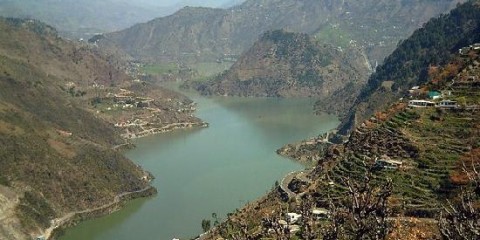
HP, Boating, History, Musuem, Nature, Temple, Valley, Water falls, West India, Wildlife Sanctuary
Dalhousie is a hill station in Himachal Pradesh. This was established as summer retreat for soldiers, officials of military, Englishmen. It was founded by Britisher Lord Dalhousie in 1854. 5 hills are located in this place. They are Bhangora, Bakrota, Tehrah, Potreyn and Kathalagh. Large number of Victorian style mansions can be seen here. This is the right place to enjoy the nature as well as trekking. Nearby town is Chamba. In this place river rafting is very famous. One can enjoy this between June to October. Main shopping centre for the shopping lovers is at Gandhi Chowk. Purses, Handicrafts, dolls, traditional bags are worth buying in this place. Tuesday is holiday to the shops.
What to see in Dalhousie:
St.John’s Church: This is the oldest historical church. It was constructed during the British rule. This is most beautiful church of the town with beautiful natural background.
St.Francis Church: Donations were collected to construct this church. Civilians as well as army officers contributed most of the money. It was constructed in 1894. Intrictive stone work and beautiful glass work can be seen here.
St.Patrick’s church: Under the area of Dalhousie cantonment this church is located. This church is largest church of hill station.
Kynance: Constructed in 1933 by NR Dharamvir. When Netaji Subhash Chandra Bose health deterioted, he came to Dalhousie and taken rest in this building.
Trekking: Moti Tibba, Dainkund Peak, Garam Sadak, Bkrota Hills, Jhandri Ghat are best trekking places in Dalhousie.
Other places to visit in Dalhousie: Shivkal, Satdhara Falls, Ganji Pahari, Norwood Paramdham are worth seeing places in Dalhousie.
What to see around Dalhousie:
Kalatop: This place is located 11 kms away from Dalhousie. 3 days training will be given for trekking in this place.
Bhuri Singh Museum: It was established in 1908. Several scripts can be seen here. These scripts provide information about Chamba. This was named after the king Raja Bhuri. Painting of his family members can be seen here. Outstanding collections of Guler Kangra style painting are kept here. This is located 52 kms away from the city
Laxmi Narayan Temple: This temple belongs to 10th century. It was built by Sahil Verman in Shikhara style. This temple was dedicated to Lord Shiva and Lord Vishnu. It is located 91 kms away from Dalhousie.
Kalatop Forest / Kalatop Wild Life sanctuary: It is situated 8 kms away from Dalhousie in chamba. Thick Foliage of deodar trees covered the forest. Major wildlife species in this forest are Jackal, Langur, Serow, Barking, Deer, and Leopard etc…
Chemera Lake: It is situated 25 kms away from Dalhousie. This is the Excellent site for the activities like boating, angling, fishing. Other activities available here are kayaking, Motor boating, rafting.
Getting to Dalhousie: Only way to reach this place is by road. Buses are available from Delhi, Amritsar and Mumbai. Nearest Railway station is located at Pathankot. Nearest domestic airport is located at Pathankot.
Getting around Dalhousie: Buses, Taxis, jeeps are available to visit the places around Dalhousie.
Best time to visit Dalhousie: Between March to November tourists feel comfortable to visit this place.
Where to stay in Dalhousie: Plenty of guest houses, hotels and home stays are available. As per their requirement tourists can choose the hotels. During the peak seasons, per night cost of the resort is ranging between Rs.5000 to Rs.8000.
Where to eat in Dalhousie: Several restaurants are situated here. Cheapest food will be available at Punjabi Dhabas. These dhabas are located at Subhash Chowk.
Panipat is the historic city in Haryana. Other name of the city is City of Weaver. Three famous battles held in this place. All the battles are named as Battle of Panipat. First battle happened in 1526, second in 1556 and third happened in 1761. These battles are turning point to Indian History. In Bhagavad Gita, Panipat is named as Dharmakshetra. According to the history Pandavas have founded 5 cities during the times of Mahabharata. Panipat is one of the 5 cities. At that time it was named as Panduprastha.
Panipat is famous for Carpet and Textile industries. It is the biggest centre of Shoddy Yarn in the world. Shoddy Yarn means recycling of the yarn. Thermal Power Plant located in Panipat is the source of electricity to Haryana. Several forts and temples are situated in this place. Best place for the shopping lovers is Amar Bhawan Chowk.
What to see in Panipat:
Devi Temple: This temple is situated at the banks of large tank. Local goddess is worshipped in this temple. This temple is famous for its architecture. Near this temple Lord Shiva’s temple was situated.
Tomb of Bu Ali Shah Qalandar: This was constructed by Khizar Khan before 700 years. Bu Ai Shah Qalandar was born in 1190. Khawaja Altaf Hussain Hali and Hakim Mukaram Khan’s tombs are also located in this place.
Grave of Ibrahim Lodhi: This is located near Tehsil office. Lodhi was died when he is fighting with his uncle Babur in first battle of Panipat. Lodhi was buried in this place. This was made up of lakhori Bricks. It was placed in high platform so it has to be reached by climbing the steps.
Salar Gunj Gate: In the centre of Panipat it is located.
Panipat Museum: This museum displays weapons used in Panipat Battles. It is one of the attractions of Panipat.
What to see around Panipat:
Kala Amb Tree Site: It is located 8 kms away from Panipat. During 3rd battle of Panipat, Sadashiv Rao placed his Maratha troops near this tree. This is dedicated to the soldiers (Maratha) who sacrificed their lived in the battle.
Kabuli Bagh: This was built by Babur as a part of celebrating the victory over Ibrahim Lodhi in first battle of Panipat. Kabuli Shah Mosque is famous in this place. This mosque was named after the wife of Babur. Her name is Mussammat Kabuli Begum. It is located 2 kms away from Panipat.
Kurukshetra: This place was having prominent place in the history. In this place Lord Krishna delivered Bhagavad Gita to King Arjuna. It is located 72 kms away from Panipat.
Karnal: It is located 36 kms from Panipat. In 1811 British cantonment was established here.
Getting to Panipat: This place is well connected with Road and Railway routes. Nearest airport is at Delhi. From all the cities such as Jammu Tawi, Jaipur, Mumbai, Delhi etc buses and trains are available.
Getting around Panipat: Private Vehicles, buses, Taxis, autos are available to reach the surrounding places of Panipat.
Best time to visit Panipat: Between August and November visitors feel comfortable to visit this place.
Where to stay in Panipat: All range of hotels are available in Panipat. Visitors can choose the hotels as per their requirements. Mid range hotels are located near Grand Trunk Road. Best hotels are Gold Hotel, Hotel Mid town, Nirula’s Hotel.
Where to eat in Panipat: Best places to eat are Chorua Bazaar, Palika Bazaar, and Sector 11. Both vegetarian and No vegetarian food is available here. Continental, Chinese, Italian, South Indian Punjabi dishes are available in all the restaurants.
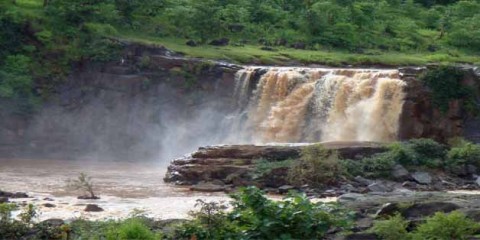
Gujarat, Boating, Fort, History, Musuem, Nature, Temple, Valley, Water falls, West India, Wildlife Sanctuary
Saputara is the only hill station in Gujarat. Meaning of Saputara is Abode of Serpents. It is located on the banks of river Sarpagana. On the Holi day prayers conducts to the images of Snake which are situated at the banks of river Sarpagana. Climate in Saputara is very cool throughout the year. This is the best place for natural lovers. Several sanctuaries, parks, gardens are located here. Popular activity here is trekking. Best places for trekking trail are Tridhara and Rajat Pratap.
Along with Swaminarayan Temple several Jain Temples and Nageshwar Mahadev temple are famous in Saputara. Lake Gardens, Rose Gardens, Step Gardens are major attractions to natural lovers. Most popular tourist attraction is Pushpak Ropeway. Different cultures such as Warli, Kunbi and Bhil are followed by the tribal communities here. Tribal houses are made up of Bamboo and Wood. Grishm Mahotsav is most popular festival celebrates for 3 days.
What to see in Saputara:
Saputara Lake: It is located at the heart of Saputara Valley. This is considered as best picnic spot. Row Boats and Paddle Boats are available.
Sunrise Point: This is also known as Valley View Point. Of the entire valley view this point is considered as best view.
Sunset Point: Dang forests can be seen from this place. Other name of this place is Gandhi Shikhar.
Pushpak Ropeway: This is the major attraction to the tourists. It takes the tourists above the valleys and hills. This is the best place to see surrounding place of the city.
Vandsa National Park: This is the residence place to several animals such as four horned antelope, Python, Leopard, spot tigers etc…
What to see around Saputara:
Purna Wildlife sanctuary: It is situated 60 Kms away from Saputara. Entire area is covered with bamboo glades. Tourists can have exciting walking in this sanctuary. Trekking activity is the best activity here.
Hatgad Fort: It is very ancient Fort located in Mulher, Nasik district, Maharashtra. At the peak of the Sahyadri ranges best architecture can be seen by the visitors of this place. From the top of this place one can view Suragana which is nearest village. It is located 6 kms away from Saputara.
Gira Falls: This is another major attraction to the tourists. Botanical gardens are located near this water falls. Forest department conduct camps in this place. Other name of this place is Gira Dhodh. It is located 49 kms away from Saputara.
Waghai: This place is famous for hot springs and Unnai Mata Temple. People believe that hot springs are the treatment to chronic diseases. It is located 68 kms away from Saputara.
Getting to Saputara: Only way to reach this place is Roadway. Nearest Railway station is located at Waghai. Nearest airport is located at Surat. From all the cities of Gujarat and Mumbai, government buses are available to this place.
Getting around Saputara: To reach Sunset Point, Cable cars are available. Buses and Jeeps are available to reach the surrounding areas.
Best time to visit Saputara: Extreme climates cannot be seen in this place. Climate is so pleasant throughout the year. Best time to visit this place is March to Middle of November.
Where to stay in Saputara: Unique construction of Forest log huts are most attractive to stay in Saputara. State Forest department is maintaining these huts. Living in these huts is the great experience to the tourists. Apart from these huts several hotels including luxury hotels are available to stay in this place.
Where to eat in Saputara: Across the city one can find Golas, Sodas and Nimbu Paani. Best Guajarati Thali is available in all the restaurants. Very few restaurants offer Chinese, Punjabi and north Indian food.
Bhuj is a city in Gujarat. This place is mostly associated with Indus Valley Civilization, Alexander the Great, Mahabharata. In the Kutch region this is the most important city. Earthquake occurred in 2001 has destroyed several historical places in Bhuj. City is named after Bhujiyo Dungar Hillock which is located 3 kms from the city centre. On the Bhujiyo Dungar hill, Bhujiya Fort is located. Bhuj is wide spread around this hill.
Bhuj was established in 1510 by Rao Hamirji. Several temples and houses can be seen Gujarati style. Kutch festival is most famous festival in this region. This celebrates for 6 days during February or March. Lord Shiva is worshipped during this festival season. For the shopping lovers best things to purchase in this place are seashell toys, lacquered wood, metal bells, Silver Jewellery, gold Jewellery. Specialities of this region are silk embroidery, batik textiles, Bandhani Textiles on leather.
What to see in Bhuj:
Hamirsar Lake: This is considered as best place to visit during holidays. It is located at the heart of the city.
Aaina Mahal: After 2001 earthquake this was restored. This is the Palace of Mirrors. It is used as exhibition hall by the handicraft people to display their handicraft items.
Prag Mahal: Gothic Style can be found on this Mahal. It was constructed by Maharao Pragmalji. Visiting hours of this Mahal is between 10 AM to 6 PM.
Swaminarayan Temple: It was built with Marble stone. This temple is also known as breathtaking temple. Best architecture of Kutch rulers can be seen here.
Kutch Museum: This is dedicated to Kshatrap. Kutch Script can be seen here. It was built in 1877. Kutch museum was considered as old desert museum in Gujarat.
What to see around Bhuj:
Kutch: World’s largest salt desert Rann of Kutch is located in this place. Area covered by this desert is 16000 Sq.kms. It is located 72 kms away from Bhuj.
Kutch great Indian bustard Sanctuary: This is the best place for the natural lovers. This is located 2 kms away from Kutch. Major attractions of this place are Nilgai, Jungle cats, Chinkaras, Connoisseurs. Most attractive migration bird is Florican Bustards.
Getting to Bhuj: Bhuj is well connected with Road, Rail and Airways. Airport is located 7 kms away from the city. It is connected to Mumbai. From major cities like Mumbai and Delhi and from different parts of Gujarat, Bhuj is having bus and train facility.
Getting around Bhuj: Local name for auto rickshaws is Tuk Tuk. Autos, Taxis are available to reach the surroundings areas of Bhuj.
Best time to visit Bhuj: Few Visitors like to visit this place during the winter season. Best time to visit this place is between October to March.
Where to stay in Bhuj: Plenty of affordable and midrange hotels are available near Bhuj. Few guest houses are also located here. But Luxury hotels are not available in Bhuj. Best hotels in Bhuj are Hotel KBN, Hotel Prince, Gangaram Hotel, Hotel Seven sky.
Where to eat in Bhuj: Almost all the restaurants serve only vegetarian food. Very few restaurants serve non vegetarian.
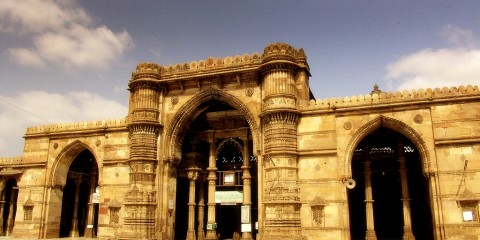
Gujarat, Fort, History, Musuem, Nature, Temple, Tomb, West India, Wildlife SanctuaryFort, Gujarat, History, Musuem, Nature, Temple, Tomb, West India, Wildlife Sanctuary
Ahmedabad is the largest city in Gujarat. It is located on the banks of Sabarmati River. This is the best place to see historical constructions and new monuments. Many dynasties ruled this place starting from Sultans to Mughals. After Mughals, Marathas ruled this place till the Britishers occupied. It served as home to several freedom fighters like Sardar Vallabhai Patel, Mahatma Gandhi. One interesting story related to name of Ahmedabad is, once Sultan Ahmed Shah was standing on the banks of Sabarmati River he saw hare chasing a dog. He approached to spiritual leader and asked for the reason he stated that this is the uniqueness of the land. This impressed him and decided to arrange his capital in this place. At that time he named this place as Ahmedabad.
What to see in Ahmedabad:
Dada Hari Vav: This was built during the regime of Mehmud Begda. It is located below the ground level. This is considered as best place to relax. Beautiful engraving pillars can be seen here. It is one of the complex structures. Timing to visit this place is between 9 AM to 5 PM.
Teen Darwaza: This place is known for its best architecture. It is the oldest and longest gateway in Ahmedabad. This was built by Ahmed Shah founder of the city.
Kankaria Lake: In 1451 AD this was built by Sultan Kutubuddin. A summer palace is located in the middle of the lake. Mughal Emperor Jahangir and his wife Noor Jahan frequently come to this place for relaxation. This is an artificial lake with 34 slides.
Vechaar Utensils Museum: In this museum several utensils were displayed such as stainless steel, Zinc, German silver, Copper, Bronze, and Brass.
Hazrat Pir Muhammad Shah Library: Very rare manuscripts of Sindhi, Turkish, Arabic and Persian are available here.
What to see around Ahmedabad :
Gandhi Ashram: This was the residence of Father of Nation, Mahatma Gandhi. Other names of this Ashram are Satyagraha Ashram and Sabarmati Ashram. It is located 4 kms away from the city.
Bhadra Fort: This fort is famous for Bhadrakali Temple. Goddess Bhadra is worshipped here. She is incarnation of Goddess Kali. It is located 4 kms away from the city.
Jhoolta Minar: Swaying minaret is famous here. If any person uses little force on the upper arc minaret it tends to sway. At the time of construction two minarets were constructed. Now we can see only one minaret. Other one was destroyed by the Englishman who tried to discover the secret behind the sway. It is located 5 kms away from Ahmedabad.
Swaminarayan Temple: Thousands of People from all over the country visit this place every year. Lord Swaminarayan is worshipped here. It is located 4 kms away from the city. This is the first Swaminarayan Temple in India which was built at Kalupur.
Other places to see around Ahmedabad: Gandhinagar, Lothal City, NalSarovar Bird Sanctuary are the other places to see around Ahmedabad.
Getting to Ahmedabad: Ahmedabad is well connected with Road, Rail and Air ways. From all the major cities like Bangalore, Mumbai, Delhi etc… buses, trains and air buses are available.
Getting around Ahmedabad: Buses, Cycle rickshaws, auto rickshaws, taxis are available to visit the places around Ahmedabad.
Best time to visit Ahmedabad : Weather is so pleasant between October to March. So it is considered as the best place to visit this place.
Where to stay in Ahmedabad: All range of hotels are available here. Near Nehru Bridge area and airport luxury hotels are available. Midrange hotels are located near Gujarat college road and Shahibagh road.
Where to eat in Ahmedabad: Most of the hotels in Ahmedabad serve only Gujarat cuisine and vegetarian food. Best non vegetarian food is available at Navrangpura.
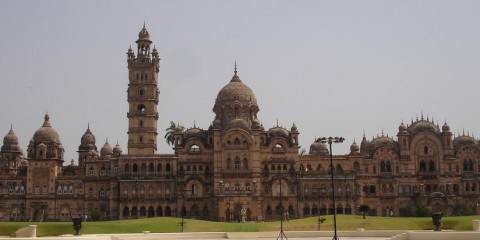
Gujarat, Boating, Fort, History, Musuem, Nature, Temple, West India, Wildlife Sanctuary
Vodadara is the cultural capital of Gujarat. It is formally known as Baroda. Vodadara is situated on the banks of Vishwamitri River. It is the third largest city in Gujarat. It is known as best commercial and trade centre. City consists of more than 100 private schools and 20 public schools. It is also known as knowledge city. One of the top 3 arts colleges in India is MSU’s Faculty of Fine Arts. This is located here. Till India got independence it was ruled by Gaekwads. Marathas ruled this place for more than 400 years before Gaekwads. Here visitors can have best leather, textile and Handicrafts products.
What to see in Vadodara:
Mandvi Gate: During the festival seasons it looks so attractive as it decorates with beautiful lights. This was built in 1511-26 AD by Sultan Muzaffar. It is square shaped structure.
Makarpura Palace: For the royal families this is the summer rest house. Training school of Indian Air force is running here. This was built in Italian style by Maharaja Khanderao. Later it was renovated by Sayajirao Gaekwad.
Tambekarwadi: It is a four storied building. In first and second floors of the building visitors can find mural paintings which belong to 17th and 18th century.
Sayaji Baug: It consists of Flock Clock, Planetarium, Zoo and two museums. This is the largest garden in western India. Area covered by this garden is 45 hectares. It was built in 1879 by Maharaja Sayajirao Gaekwad.
Picture Gallery: British painter’s pictures are kept here to attract the tourists. This was built in 1921.
Zoo: More than 1103 animal species are here. Major attraction is Asiatic Lion.
Museums: Skeleton of Blue Whale and Egyptian Mummy are the main attractions to the visitors. It is the place of best collection of art and sculptures. Museum was built in 1894.
Laxmi Vilas Palace: Manoj Charles Mant designed this palace in Indo Saracenic style. Music and Cultural events conduct in Darbar hall. Raja Ravi Varma Paintings is the special attraction in this palace. Maharaja Fateh Singh Museum and Moti Baug Palace are the also located here. In 1890 this was built by Maharaja Sayajirao Gaekwad III.
Aurobindo Ashram: Between 1894 to 1906 this was residence place of Aurobindo Ghose. He was the vice principle of Baroda College. Now it became Ashram with Library. Works of Aurobindo can be seen here.
Nazarbaug Palace: In 1721 this was built by Malhar Rao Gaekwad in old Classical Style. It is the place where visitors can see best collection of Gaekwad Jewellery including 125 carat star of south diamond.
What to see around Vadodara:
Chandod: It is best pilgrim centre for Hindus. Temples and Bathing Ghats are located here. Mechanised boats used to see ravines, cliffs, rock formation. It is located 57 kms away from Vadodara.
The Dabhoi Fort: In 13th century this was built by Patan King. This fort is best example for Hindu Gujarati style architecture. It is situated 29 kms away from Vadodara.
Champaner – Pavangadh Archaeological Park: Best collection of tombs, Palaces, Mosques, Temples, Forts are situated here. It is located 45 kms away from Vadodara.
Getting to Vadodara: This place is well connected with Air, Road and Railways. From all the major cities such as Kolkata, Delhi, Mumbai, Ahmadabad etc… a bus, trains and air bus facility is available.
Getting around Vadodara: Autos, Taxis, buses are available to visit the places around Vadodara.
Best time to visit Vadodara: Between October to February visitors enjoy their travel here.
Where to stay in Vadodara: All range of hotels are available. As per their budget and requirement tourists can choose the hotel.
Where to eat in Vadodara: Plenty of restaurants are available here. Continental, Mughalai, South Indian food is served here.
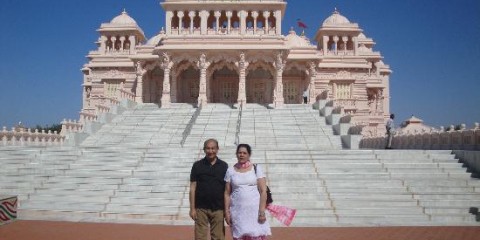
Gujarat, Beach, History, Musuem, Nature, Valley, Water falls, West India, Wildlife Sanctuary
Porbandar is located in Gujarat. This is a birth place of Father of Nation, Mahatma Gandhi. It is believed that this is the birth place of Sudama who is the best friend of Lord Sri Krishna. So this place is also named as Sudamapuri. During the regime of British, Marathas, Mughals this city acted as best trade centre. In those days trade activities are regularly done with East African, Aab and Persian countries. From 16th century BC to 14th century BC Harappa Civilisation dominated this place. This place is considered as home to Harappa Civilisation.
During 16th century it was an independent state which was ruled by Jethwa Rajputs. After independence it was merged into Kathiawar. Later it became part of Gujarat. This is the best place for shopping lovers also. Bandhani Work textiles are most famous in this place. Several Silver jewellery, Mirror works, terracotta figures, iron items, brass items, clay items are available. Best markets in Porbandar are located at kedareswar Road and Sudama Road.
What to see in Porbandar:
Huzoor Palace: A Water fountain in this palace attracts the visitors. European style of work can be noticed here. This was built during 20th century by Rana Natwarsinhji.
Porbandar Bird Sanctuary: This is best place for natural lovers. Several species of birds such as Herons, ibis, Spoon Bills, Geese, Ducks, Pelicans are most attractive to the visitors. In 1988 this was declared as bird Sanctuary.
Porbandar Beach: Other name of this beach is Chowpatti. It is the venue of annual Janmastami fair.
Krishna Sudama Temple: It is believed that persons who enter into this temple will be wiped off their sins. This is the only temple dedicated to Sudama who is the best friend of Lord Krishna. Some people say that this temple is dedicated to the friendship between Sudama and Lord Krishna.
Kirti Temple: This mandir is dedicated to Mahatma Gandhi, Father of Nation and Kasturiba Gandhi. Old paintings of Kasturiba and Mahatma Gandhi are most attractive to the visitors.
What to see around Porbandar:
Harshad Mata Temple: This is most ancient temple located on koyla Hill. It is believed that every day morning Harshad Mata make the king of Minalpur alive and roast him and eat. This temple looks like Navlakha Temple which was constructed by Chalukya Dynasty. It is situated 45 kms away from Porbandar.
Barda Hills Wild Life Sanctuary: This is the home place to several birds and animals. Spotted deer crocodile, Chinkaras, Lions are major animal species placed here. Most attractive bird species here are Hawk Eagle, Spotted eagle. Area covered by this sanctuary is 192 sq.kms. It is located 45 kms away from Porbandar.
Getting to Porbandar: This place is well connected though Road, Railways and Air ways. From several cities like Vadodara, Ahmadabad, Rajkot, Mumbai both bus and train facility are available. Airport of Porbandar is connected to Diu and Mumbai.
Getting around Porbandar: For sightseeing private vehicles, autos, taxis, cars are available to tourists.
Best time to visit Porbandar: Few visitors see the weather conditions to visit the places. For those people best time to visit this place is between October to March.
Where to stay in Porbandar: Best midrange hotels are available at Cross Road and MG Road. Near airport and Hospital Road luxury hotels are located. Plenty of affordable hotels are available all over the city.
Where to eat in Porbandar: Most of restaurants serve vegetarian and Gujarati Cuisine. Whereas some restaurant provide best varieties of sea food along with other varieties of non vegetarian food.
Surat is the admistrative capital of Surat District. Earlier it was known as Suryapur. It is cleanest and second largest city in Gujarat. Surat it situated on the banks of Tapi River. More than 90% of the diamond cut and polished here. Other names of Surat are Embroidery capital of India, Manchester of India, Textile capital of India, Diamond capital of India. It is an international market for diamonds. Best diamonds are available on Dumas Road shops.
What to see in Surat:
Sardar Patel Museum: Before independence it was named as Winchester Museum. It was established in 1889. Timings to visit this museum are 9 AM to 11.30 AM and 2.30 PM to 5 PM.
Chintanmani Jain Temple: Major attraction of this temple is Vegetable dye paintings of King Kumarpala and Acharya Hemchandra who is the Jain Preacher. This is very ancient temple dates back to 400 years ago.
Surat Castle: From the top of the castle visitors can view Surat and Tapi River. This was built by Sultan Mahmud III in 1540.
Swaminarayan Temple: Visitors can see 3 wooden shrines of Ghanshyam Maharaj, Lord Swaminarayan, and HariKirshna Maharaj. This temple is dedicated to Swaminarayan. He belongs to Vaishnavism.
Amba Niketan Temple: This temple is dedicated to Goddess Ashtabhuja Ambika. She is having 8 hands. This is located on the Shore of Tapi River. Most famous festival celebrated in this temple is Navratri. Statues of Lord Shiva, Laxminarayana, Sita, and Ram are also can be seen here.
Dutch Gardens: This is a cemetery belongs to Islam and Hindu religions. Several famous tombs can be seen here. Photography is restricted.
Rangupvan: It is biggest open air theatre in India. At one time this theatre can provide accommodation to more than 4000 people. This is used to conduct musical and cultural programs.
What to see around Surat:
Suvali Beach: Visitors prefer to come to this place for relaxation. Sand in this beach is black. It is located 24 kms away from Surat.
Dandi: This place has prominent importance during independence struggle. This march was undertaken against the Britishers for levying heavy taxes on salt. As a part of Civil Obedience Movement this March was undertaken. From Sabarmati Ashram this march was started and ended at Dandi. It is located 26 Kms away from Surat.
Hazira: It is a famous picnic spot and seaside resort. This is situated 23 kms away from Surat. This is the best place to relax at Beach. Near Beach visitors can visit Bird Sanctuary.
Bharuch: This city is having 8000 years old history. It is famous for Swaminaryan temple. Bharuch is situated 73 kms away from Surat.
Getting to Surat: This place is well connected with Road, Rail and Air ways. From all the major cities such as Indore, Jabalpur, Bhopal, Nagpur, Kanpur, Jaipur, Luck now, Kolkata, Chennai, Hyderabad, Ahmadabad, Delhi, Mumbai buses and trains are available. Surat airport is having regular flights to Mangalore, Calicut, Amritsar, Bhavnagar, Bangalore, Ahmadabad, Mumbai and Delhi.
Getting around Surat: Buses, Auto Rickshaws, Taxis are available to visit the places around Surat.
Best time to visit Surat: Weather is most favourable to the visitors between October to March.
Where to stay in Surat: All affordable, mid range and Luxury hotels are available in Surat. Luxury hotels are located in Ring road and near airport. Midrange Hotels are located at Sumal Dairy Road and City centre. At Umarwada affordable hotels are located.
Where to eat in Surat: Most of the restaurants serve Gujarati Cuisine and Vegetarian cuisine. Few hotels at Varachha Road and Ring Road non vegetarian food are available.
Palitana is a major pilgrim centre for Jains which is located in Gujarat. In this place more than 900 temples were constructed. All were constructed before 900 years. This was founded in 1194. Temples in Palitana is known as Palitana Temples. Main temple in Palitana temples was dedicated to Lord Rishabdev. He was the first Tirthankar. Two different saying about the construction of these temples. Some people believe that these temples were built by wealthy Businessman. But some people believe that 23 Jain Tirthankars constructed when they visited this place.
Most of the temples built on Shatrunjaya hills. This is only place in the world where hundreds of temples are concentrated. To reach this Shatrunjaya hill visitor has to climb 3000 steps. On this hill 853 temples can be seen. Temples are divided into 9 separate wings. Each wing consists of one big temple which is surrounded by several small temples. All the temples are having 4 doors so idol can be seen from all the places.
What to see in Palitana:
Adinath Temple: This temple is one of the most famous temples in Palitana Temples. It is believed that Lord Rishabdev got enlightenment in this place. So this temple is dedicated to Lord Rishabdev. He was the first Tirthankar.
Adishwar temple: It is believed that this was the first temple on Shatrunjaya hills. This temple is dedicated to Lord Adeshwara. On surrounding of this temple visitors can find friezes of dragons.
Sampriti Temple: In terms of design and architecture this temple is entirely different from other temples of Shatrunjaya hills.
Vimal Shah Temple: This is most famous for its unique carvings.
Chaumukh Temple: Here Four images of Lord Adinath were facing 4 directions. This was built in 1618.
What to see around Palitana:
Shri Vishal Jain Museum: In this museum visitors can know several interesting things about the life of Lord Mahavir. Apart from that they can also see ancient manuscripts, excavated idols, and collection of artifacts.
Angarsha Pir Dargah: This is located 7 kms away from Palitana. Angarsha Pir lived in 14th century. From invading armies he protected temple. Angarsha Pir is the tomb of Sufi saint.
Getting to Palitana: This place is well connected with Road and Railways. From Ahmadabad, Talaja, Una, Bhavnagar government and private buses are available to reach this place. From Bhavnagar and Ahmadabad train facility is available to reach Palitana.
Getting around Palitana: Visitors of Palitana Temples can reach to temples on foot. If they were unable to walk palanquins or dolly are available. Visitors who are interested to see the places around Palitana they can hire taxis, auto rickshaws.
Best time to visit Palitana: No one is restricted to visit these temples. Throughout the years visitors are invited to see this place. But visitors feel comfortable to reach this place between October to March.
Where to stay in Palitana: Large number of hotels is available in Palitana. Apart from low and mid range hotels, luxurious hotels are also available to stay. During October to March it is very difficult to find vacancies in hotels. So it is advisable to book the rooms in hotel before visiting this place.
Where to eat in Palitana: Only vegetarian food is available in all the restaurants. Very few restaurants serve south Indian cuisine and Chinese cuisine. Sukh Sagar is the best restaurant to eat in Palitana.
Junagadh is the 7th largest city in Gujarat. Junagadh means Old Fort. Earlier it was named as Sorath. Till independence this place was ruled by Nawabs. Last Nawab made promise to Pakistan that this city will be merged into Pakistan. At that time India and Pakistan struggled for this city. India won in this struggle as a result Junagadh joined in India on 9th November 1947. In the history, this city acted as capital to Nawabs. Tourists considered this as pilgrim centre. On the Girnar range several Jain and Hindu temples are located. Visitors have to reach to this place by climbing 10,000 steps.
During the regime of Nawabs several beautiful building were built. Visitors can see those building even today. Of all the structures visitors attracts towards Bahauddin Maqbara and Mahabat Maqbara structures. Bhavnath Fair festival is most famous festival. This festival celebrates for 5 days during Mahashivaratri. Several prominent people born in this city. Few are Parveen Babi (Bollywood actress), Narsinh Mehta (Gujarati litterateur), etc…
What to see in Junagadh:
Mount Girnar : Several Jain and Hindu temples can be seen in this place. It takes 2 hours to climb the mountain. 16 temples are there on this mountain.
Jama Masjid: It was the palace of Rankadevi. When Saurashtra was handed over by Sultan Muhammed Begda this was converted into Mosque.
Upper Fort: This is also known as Uparkot. In this place visitors can see 1500 years old Buddhist caves. One of the interesting things in this place is Navgan Kua. Two step wells that go 170 feet below sea level are known as Navgan Kua. Visitors can find 3 beautiful entrances.
Wild Museum: when the Visitors entered into this museum they will feel that they have entered into zoo. In this place one can see Persian Sanskrit, ancient coins, stuffed animals, art furniture etc…
Ashoka’s Edicts: This place can be see when tourists are moving towards Mount Girnar. In this place 14 Edicts of Ashoka can be seen. Edicts are carved. Timings to visit this place are between 8 AM to 6 PM.
Other attractions in Junagadh: Junagadh Zoo, Durbar Hall Museum, Ayurvedic Museum, Swami Vivekananda Vinay Mandir, Moti Baug, Wellington Dam, Dataar Hills, Damodarji Temple, Damodar Kund, Gayatri Mandir,
What to see around Junagadh:
Chorwad Beach: Visitors can reach to this place by roadways. This beach was located 66 Kms away from the city.
Veveral : This place is famous for beaches. Now this place has become most commercialised place. It is located 85 kms away from the city.
Somnath Temple: This temple is one of the 12 Jyothirlingas in India. It is the seventh temple to worship of Lord Somnath in India. It is locate 87 kms away from the city.
Getting to Junagadh: This place is well connected with road and railways. From all the major cities like Rajkot, Ahmadabad, Somanth Bhubaneswar, Dwarka etc… bus and train facility is available. Nearest airport is Rajkot.
Getting around Junagadh: Private vehicles, buses, autos, taxis are available to reach surrounding places of Junagadh.
Best time to visit this place: Visitors to prefer to come to this place between October to April.
Where to stay in Junagadh: All range of hotels starting from lower level to luxurious hotels are available to stay in Junagadh. On Jayashree and MG Road, mid range hotels are located. Affordable hotels are located in Alkapuri Road and Zanzarda Road.
Where to eat in Junagadh: Only vegetarian food is available. Almost all the restaurants serve Gujarati cuisine. Only few restaurants which are located near Jayashree Road offer South Indian and Continental Cuisine.
Jamnagar is a city in Jamnagar district, Gujarat. In 1920, this city was built by Maharaja Kumar Shri Ranjitsinhji. At that time it is known as Nawanagar. Other name of Jamnagar is Oil City of India as two largest oil refineries are located in this place. Rajpur architecture can be seen in this place. This place is famous for pearl fishing centre. So it is known as Oyster of India. Before oil companies started in Jamnagar, primary job of the people in Jamnagar is manufacturing brass. So Jamnagar is also known as Brass city of India.
Jamnagar was modernised with the consultation of Sir Edward Lutyens. Modernisation includes residential plots, entrance gates, gardens, parks, axial road. Several Jain and Hindu Temples are situated in this place so this place is also known as Chhoti Kashi that means small Kashi. Of all the temples most famous temples are Bala Hanuman Temple and Ancient sun temple. For the shopping lovers best places are Chandi Bazaar and Lindi Bazaar. Silver ware, embroidery and tie and die fabrics are famous in Jamnagar.
What to see in Jamnagar:
Bhujio Kotho: It was built to act as watch tower against enemies. This was five storied building. On the first floor of the building holes are placed. They are used to shoot the enemies from the holes. Tower is located at the top of the building. From that tower visitors can have a view of entire Jamnagar. Tower is in the shape of peacock.
Darbargadh Palace: Sculptures, decorated mirrors, ornate pillars and monuments can be seen in this place. This palace is best example for European and Rajput architecture styles. It was built in 1540.
Lakhota Palace and Museum: This was located on the Lakhota Lake. Other name of the Palace is Lakhota Tower. During 9th century this palace was converted into museum. Several artifacts, weapons, knives, guns, swords and art pieces can be seen in this place.
Bala Hanuman Temple: This place is most famous in Jamnagar. It has entered into Guinness Book of World Record, as devotee are doing continues 24 hours chanting of the Rama Mantra Sri Rama Jai Rama Jai Jai Rama from 1st August 1964. This chanting is known as Ram Dhun. Everyone is welcomed to join in this chanting. It is located near Lakhota.
Other places to see in Jamnagar: Mota Ashapura Maa Temple, Bohra Hajira, Pratap Vilas Palace, Lakhota Fort are some other places to see in Jamnagar.
What to see around Jamnagar:
Marine National Park: In India this is the first marine park. Area covered by this park is 163 sq.kms. It is a part of Marine Wild life Sanctuary. Mangroves, coral reefs and habitants can be seen here. It is located 30 kms from Jamnagar.
Khijadiya Bird Sanctuary: More than 300 species of birds can be seen here. Migratory birds also can be seen in this place. Area covered by this sanctuary is 6 sq.kms. It is located 18 kms away from Jamnagar.
Getting to Jamnagar: This place is well connected with road, rail and airways. From several major cities such as Bhuj, Rajkot, Baroda, Udaipur, Mumbai, Ahmadabad buses and trains are available. Jamnagar is connected to Mumbai, Ahmadabad, and Vadodara through airways.
Getting around Jamnagar: Cheapest way to see the places around Jamnagar is to prefer bus. Visitors can also hire autos, taxis to visit the places surrounding Jamnagar.
Best time to visit Jamnagar: Best time to visit the place is between October to March.
Where to stay in Jamnagar: All varieties of hotels are available in Jamnagar. Luxurious hotels located on Bedi Road. Several number of midrange hotels are located in India Marg and Okha Road.
Where to eat in Jamnagar: Vegetarian food is most famous in Gujarat. Almost all the restaurants serve only Gujarati cuisines. Very few restaurants offer south Indian, Punjabi, and North Indian Continental Cuisine. Best restaurants are available in Arya Samaj Road, Bhidbhanjan Road and Hapa Road.
Diu is a town in Diu district of Daman and Diu, India. This is having its own place in the history. According to Hindu Mythology, Diu was once ruled by King Jallandhar. He was killed by Lord Vishnu with his Sudharshan Chakra. After killing him, Lord Vishnu left his chakra on the Island known Chakra Tirtha. There is another mythology to this place i.e. during 14 years of exile of Pandavas they have visited this place. Name of this place during that period is Mani Nagar. At that time it was under the control of Yadava Dynasty.
Several rulers ruled this place but Portuguese Influence is more. They have ruled for more than 400 years. Hoka trees are major attractions to the tourists. These are bought by Portuguese from Africa. Three beaches are another major attraction to the tourists. Several cultures such as Christianity, Islam, Hindu, and Portuguese Saurashtra can be seen here.
What to see in Diu:
Diu Fort: Diu is the major attraction to the tourists. This was built by Nuno De Cunta, Governor of Portuguese. On 3 sides of the fort sea was surrounded. Stone gallery is the major attraction of the fort. Canons and Light house can be seen here.
St.Thomas Church Museum: Earlier this was church built in 1598. In this museum idol, wooden carvings, stone inscriptions, antique statues are major attractions.
Nagoa Beach: Water sports are most famous here. Shape of this beach is horse shape.
INS Khukri Memorial: During 1971 war PNS Hangor hit INS Khukri. In the memory of sailors and officers of INS Khukri this was built in 1999.
St.Paul’s Church: It look like Goa Bom Jesu Basilica. Between 1601 to 1610 this church was built.
Ghogala Beach: Surfing, Parasailing, Water sports are the major activities in this place. In Diu this is the largest Beach.
What to see around in Diu:
Somnath Temple: Lord Somanth is worshipped here. It is one of the 12 Jyothirligas. This is 47 Kms from Diu Museum.
Junagadh: This place is now part of Mumbai but earlier it was the part in Saurashtra state. Meaning of Junagadh is Old Fort. In Gujarat it is the 7th largest city. It is located 150 Kms away from Diu Museum.
Gir National Park: Other name of this park is Sasan Gir National Park. Refugee of Asiatic Lions is placed in this park. Area covered by this park is 1412 Sq Kms. It is located 68 Kms away from Diu Museum.
Getting to Diu: This place is well connected with Road ways. Buses from all the major cities such as Gujarat, Talaja, and Veraval Bhavnagar regularly come to this place. Major railhead is at Veraval. Nearest Airport is located at Nagoa.
Getting around Diu: Auto’s, Taxi’s are available to go the place surrounding Diu. Some people prefer to go on foot.
Best time to visit Diu: Tourists prefer to visit this place between November to February.
Where to stay in Diu: At Ghoghla tourism department is maintaining few hotels and resorts at reasonable costs. For the budget people several hotels are available. Luxurious hotels are also available here. Beach resorts are most famous here.
Where to eat in Diu: All type of cuisines such as Chinese, Portuguese, Punjabi, South Indian, Gujarati Cuisines are available to eat. Plenty of restaurants are available here. Best restaurants in Diu are Shri Ram Vijay, O’Coquerio Music Garden restaurant, Apana Foodland, Night Heron Restaurant.
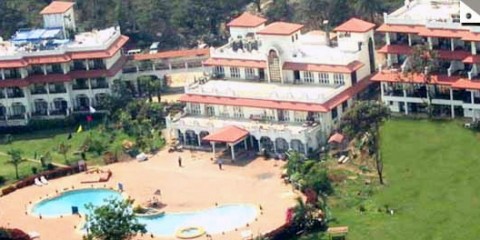
Dadra and Nagar Haveli, History, Musuem, Nature, Valley, Water falls, West India, Wildlife Sanctuary
Silvassa is the capital of Dadra and Nagar Haveli. It lies between Gujarat and Maharashtra. Silvassa name derived from the Portuguese word Silva. Silva means wood. Till 1779 this was ruled by Marathas. There are 72 small villages in Silvassa. After Marathas, Portuguese ruled this place. During the Portuguese rule several stone walls and Roman Catholic Churches was constructed.
This place is well known for its scenic beauty, beaches and Wildlife Sanctuary. Water sports are most famous in this place. Along with water sports tourists are most attracted towards jets skis, water scooters, Canoeing, Kayaking, nature walks, Boating, Trekking. Most of the people in Silvassa follow Warli culture. This is the combination of Gujarati and Marathi cultures. It is believed that this is the birth place of Warli Culture. This place is 2.5 hours journey from Mumbai through road ways. Mumbai people considered this as the best weekend place. For the shopping lovers Kilvani Road is the main market. Here tourists can purchase Warli Painting, Palm Leaf mats, Bamboo Crafts, Smoking Pipes.
What to see in Silvassa:
Our Lady of Piety Church: During 18th century this was built by Portuguese rulers. Arches of the church are the major attraction to the tourists.
Tribal Cultural Museum: With the intension to protect the culture of tribal this museum was established. Timing is from 10 AM to 5 PM. In this museum tourists can find Kitchen articles, fishing gears, musical instruments which are made by tribal without using any machines, Hunting tools, masks etc…
What to see around Silvassa:
Vanganga Lake View Garden: This is located 9 Kms away from Silvassa. Thatched Huts, Wooden Bridges can be seen in Japanese style. This is the best place for the children, families as well as film makers. Paddle boating is most famous in this place.
Vasona Lion Safari Park: This is the wild life sanctuary of Dadra & Nagar Haveli. Area covered by this park is 20 acres. This is the home place of Asiatic Lions. It is located 10 Kms away from Silvassa.
Satmalia: This place is known for wild life sanctuary. Major species in this sanctuary are Black Bucks, Chital, and Sambhar. This is located 8 Kms away from Silvassa.
Dudhni: This place is famous for kayaking; Seed boating, Canoeing, Jet Skiing. Dudhni is the best place for water sports lovers. This place is located 40 Kms away from Silvassa.
Khanvel: This village is surrounded by wildlife and green hills. It is the place for barbets, flycatchers, fruit bats, and spot flying fox. It is located 22 Kms away from Silvassa.
Getting to Silvassa: Best option to reach this place is roadway. From Udaipur ply, Shirdi, Nashik, Surat, Ahmadabad, Mumbai buses are available on regular basis. Nearest Railway station is Vapi. This station is 17 Kms away from Silvassa. Nearest Airport is located at Diu which is 7 Kms away from Silvassa.
Getting around Silvassa: Taxis and Autos are available frequently to see the surrounding places of Silvassa.
Best time to visit Silvassa: Best time to enjoy trekking and boating is between November to June.
Where to Stay in Silvassa: As per the requirement of the tourists all range of hotels are available in this place. Luxurious will be provided with gaming section, disco’s, bar, swimming pools. Peak season for the hotels is April and May.
Where to eat in Silvassa: All varieties of food is available here such as sea food, Thai, Mexican, Continental, Indian Cuisine.
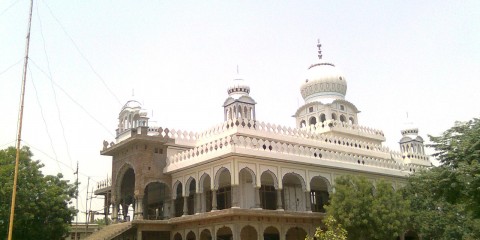
Chhattisgarh, Central India, History, Musuem, Nature, Temple, Water falls, Wildlife Sanctuary
Raipur is the capital city of Chhattisgarh. According historical mythology it is believed that Lord Rama established this city. This is one of the biggest commercial centres in India. Here more than 6 steel plants, 200 steel rolling mills are located. In India it is the largest steel market. Till 2000 it was the part of Madhya Pradesh. After than it became the capital of Chhattisgarh state.
Raipur is known as Rice Bowl of Chhattisgarh. More than 800 rice mills are situated here. This is the major centre for Bio-technology, IT and Manufacturing industry. Pola is the main festival in Raipur. During the festival season children will be offered many entertaining events and clay bull idols. For the shopping lover’s furniture items, metal jewellery, Zardosi work, Zari work textile products are available.
What to see in Raipur:
Budhapara Lake: For the Raipur people this place is the most important picnic spot. In 1402 AD this was built by Kalchuri Emperor.
Vivekananda Ashram: Persons who are interested to seek spiritual enlightenment are always visiting this place. In 1897 this was inaugurated by Swami Vivekananda.
Doodhadhari Monastery and Temple: This is very ancient temple famous for its attractive murals. In the name of Swami Balbhadra Das a monastery was established here. Temple was built by Jaitsingh in 17th century. Lord Rama is worshipped here.
Mahant Ghasidas Memorial Museum: Museum consists of 3 different sections. They are Natural history, anthropology, archaeology. In 1875 this was built by Maharaja Mahant Ghasidas. Best collection of books can be seen here.
What to see around Raipur:
Champaran: This is the birth place of Ballabhacharya Guru. Temple of his was built in 20th century by his followers. It is located 58 Kms away from Raipur.
Rajim: In this place three rivers are combined. They are Sondur, Pairi and Mahanadi. This place is located 48 Kms away from Raipur. Tourists can find most ancient temple of Lord Kuleswar. This was built in 14th century.
Arang: Ancient temples such as Mahamaya Temples, Baghdeval Temples, Bhandadevel temples can be seen here. Place is located 36 Kms away from Raipur.
Fingeshwar: This place is one of the 5 holy places of Mahadeva temples. It is located 65 Kms away from Raipur.
Udanti Sanctuary: From the river Udanti this name was derived. It was built in 1983 with the intension to protect wild Buffaloes which are endangered. Large varieties of birds and animals such as Cobras, Hyenas, Bison, Foxes, Jackals, Bucks, and Tiger can be seen here. It is locate 169 Kms away from Raipur.
Getting to Raipur: This place is well connected with Road, Railway and Airport. From all the major cities like Bangalore, Bhubaneswar, Chennai, Kolkata, Nagpur, Mumbai bus facility, train facility and air facility is available.
Getting around Raipur: Private Busses, Taxi’s, autos are available to reach different places around Raipur.
Best time to visit Raipur: Between November to March tourists feel comfortable to see this place.
Where to stay in Raipur: Several hotels are available in this place. As per the requirement tourists can opt for the hotels. During the winter season rush will be more so it is advisable to book the hotels in advance. Best Hotels in Raipur are Hotel Grand Arjun, Hotel Celebrations, Hotel Grand International, and Hotel Piccadily.
Where to eat in Raipur: Several fast food centres are situated here. All the restaurants provide Italian, American, Chinese, Indian cuisines to the tourists. Best restaurants in Raipur are Madrasi Restaurant, MFC, Madrasi Durbar.
Chandigarh is a city and Union Territory in India. The name is derived from ancient temple called Chandi Mandir. After India got independence this is the first planned city. This place is best known for Urban and architectural Designs. Several architectures worked hard to design this city. Few names of the architectures are Maxwell Fry, Jane Drew, Pierre jeanneret , Le Corbusier.Some of the Notable people born in Chandigarh are Nek Chand Saini, Gul Panag, Yuvraj Singh, Jeev Milkha Singh, Neerja Bhanot, Yami Gautam, Ramesh Kumar Nibhoria.
Chandigarh is the capital city to Haryana and Punjab. Workshops and Exhibitions are the best examples for the talent of people in Chandigarh. Section 17 is the best place for the shopping lovers. This is the handicraft emporium. Punjabi Dupattas and Punjabi footwear are available at reasonable cost. Festivals celebrated in Chandigarh are Teej Festival, Chandigarh Carnival, and Baisakhi. Chandigarh Carnival is the longest 3 day festival.
What to see in Chandigarh:
International Doll Museum: Best collection of doll from international countries namely Holland, Korea, Russia, Spain can be seen here.
Evolution of Life Museum: This museum gives the information about the evolution of human life starting from earlier days to modern era.
Sukhna Lake: For the local people this is the best picnic spot. Yachting, boating is most famous in this place.
Rock Garden: From domestic and industrial waste this Garden was made. This was an open air exhibition. This unique place attracts world tourists also.
Leisure valley: People prefer to come to this place to do yoga, Jogging and walking. This is attractive place for the nature lovers. This place is known as garland of gardens.
Capitol Complex: This is the place where office of secretariat, Legislative assembly, high court is located. Architecture Le Corbusier had designed this complex.
What to see around Chandigarh:
Kasauli: For the Chandigarh is places around the area this is the best hill station. This place is located 53 Kms away from Chandigarh.
Solan: it has one of the Oldest Breweries in the country. Yungdung Monastery is the best place to visit in Solan. Several Monasteries and Temples are located here. Shoolini Mata Temple, Jatoli Shiv Temple are best seen here. This is located 66 Kms away from Chandigarh.
Getting to Chandigarh: This place is well connected with Road, Railways and Airport. From several cities Chandigarh is well connected with National Highways 21 & 22. Major cities like Chennai, Luck now, Kolkata, and Mumbai are having railway facility. Airport is located in the outskirts of the city.
Getting around Chandigarh: Tourists who came here are attracted towards Hop on Hop off Coach. Autos, Rickshaws are available to visit the place around Chandigarh.
Best time to visit Chandigarh: Between August to November tourists are generally prefer to visit this place.
Where to stay in Chandigarh: Starting from Lower level hotels to luxurious hotel are available in this place. Range of Luxury 5 Star hotel cost is between Rs.18000 to Rs.10000. Best Hotels in Chandigarh is Hotel City Plaza 17, Park Plaza Chandigarh, Hotel Mount view, Hotel City Heights.
Where to Eat in Chandigarh: All varieties of food namely Continental, Italian, South Indian, Chinese, Tahi cuisines are available in this place. International fast food centres like KFC, Pizza Hut, and McDonalds are also seen here. Best restaurants in Chandigarh are The Cafe – JW Marriott, Buffet Hut, Pirates of Grill, and and Ten Downing Street.

History, Mughal, Musuem, Nature

Musuem, Rath Yatra, Temple

History, Musuem

Fort, History, Mughal, Musuem

History, Mughal, Musuem, Temple

Caves, Fort, History, Hot Springs, Musuem, Nature, Temple, Valley, Wildlife Sanctuary

Architecture, Fort, History, Mughal, Musuem, Palace, Temple, Wildlife Sanctuary

Architecture, Fort, History, Musuem, Nature, Temple

Architecture, Fort, History, Musuem, Nature, Palace, Temple, Wildlife Sanctuary

Architecture, Camal Safari, Fort, History, Musuem, Nature, Palace, Sand Dunes, Temple, Wildlife Sanctuary

Architecture, Fort, Havelis, History, Masjid, Musuem, Nature, Palace, Temple

Fort, Musuem, Nature, Palace, Temple, Wildlife Sanctuary

Adventurous sports, Buddhist Monestery, Buddhist Stupas, Buddhist temples, History, Ladakh, Musuem, Nature, Palace, Trekking, Valley

Buddhist temples, Musuem, Nature, Temple, Wildlife Sanctuary

Adventurous sports, Buddhist Monestery, Buddhist Stupas, Buddhist temples, Fort, History, Musuem, Nature, Temple, Trekking

Caves, History, Musuem, Nature, Shakti peethas, Temple, Trekking, Valley, Wildlife Sanctuary

Jyothirlinga, Musuem, Nature, Temple, Trekking

Architecture, Fort, History, Mughal, Musuem, Nature, Palace, Tomb, Wildlife Sanctuary

Architecture, Fort, History, Musuem, Palace, Temple, Tomb, Water Sports

Fort, History, Masjid, Musuem, Nature, Ramayana, Temple

Architecture, Masjid, Musuem, Nature, Palace, Temple, Tomb, Wildlife Sanctuary

Mahabharata, Musuem, Nature, Palace, Temple

Architecture, Hill Station, History, Musuem, Nature, Temple, Trekking, Valley, Wildlife Sanctuary

Fort, History, Mahabharata, Masjid, Musuem, Nature, Temple

Adventurous sports, Musuem, Nature, Temple, Trekking

Fort, History, Masjid, Miniature Paintings, Musuem, Nature, Palace, Temple, Tomb

Boating, History, Musuem, Nature, Temple, Trekking, Valley

Caves, Hill Station, History, Hot Springs, Musuem, Nature, Tea Garden, Temple, Trekking, Valley, Water falls

History, Musuem, Nature, Temple

Hill Station, Mountain Passes, Musuem, Nature, Temple, Trekking, Valley, Water falls, Wildlife Sanctuary

Architecture, Hill Station, History, Mountain Passes, Musuem, Temple, Trekking

Hill Station, Musuem, Nature, Temple, Trekking, Wildlife Sanctuary

History, Musuem, Nature, Trekking, Water falls, Wildlife Sanctuary

Architecture, Caves, Hill Station, History, Musuem, Nature, Temple, Wildlife Sanctuary

Hill Station, History, Musuem, Nature, Temple, Trekking, Valley, Wildlife Sanctuary

Boating, Caves, Fort, Hill Station, History, Musuem, Nature, Rock Formations, Temple, Trekking, Wildlife Sanctuary

Architecture, Fort, History, Musuem, Nature, Palace, Temple, Wildlife Sanctuary

Architecture, Fort, History, Musuem, Nature, Palace, Rock Formations, Temple, Water falls, Wildlife Sanctuary

Bird Sanctuary, Boating, Camal Safari, Fort, Musuem, Nature, Sand Dunes, Wildlife Sanctuary

History, Kauravas, Musuem, Pandavas, Temple

Boating, Fort, Hill Station, House boats, Masjid, Musuem, Nature, Trekking, Valley, Water falls, Wildlife Sanctuary

Hill Station, Hot Springs, Mountian Biking, Musuem, Nature, Trekking, Valley, Water falls, Water Sports, Wildlife Sanctuary
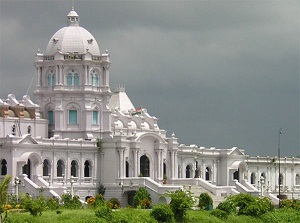
Fort, History, Masjid, Musuem, Nature, Temple

Caves, Hill Station, Musuem, Nature, Temple, Trekking, Valley, Water falls, Wildlife Sanctuary

Hill Station, Musuem, Nature, Temple, Trekking, Valley, Water falls, Wildlife Sanctuary

Hill Station, India China Border, Mountain Passes, Musuem, Nature, Trekking, Valley, Water falls, Wildlife Sanctuary

Caves, Hill Station, Musuem, Naga Tribes, Nature, Trekking, Valley, Water falls, Wildlife Sanctuary

Boating, Hill Station, Jyothirlinga, Musuem, Nature, Panch Prayag, River crossing, Rock Formations, Rudraprayag, Temple, Trekking, Valley, Water falls, Water Sports

Hill Station, Musuem, Nature, Trekking, Valley, Water falls, Wildlife Sanctuary

Bali Yatra, Fort, Hill Station, Musuem, Temple, Wildlife Sanctuary

Beach, Musuem, Nature, Rath Yatra, Temple

Fort, History, Masjid, Musuem, Nature, Temple, Wildlife Sanctuary

Beach, Buddhist temples, Konark Sun Temple, Musuem, Nature, Temple

Boating, Buddhist Monestery, Fort, Hill Station, History, Musuem, Nature, Temple, Valley, Wildlife Sanctuary

Boating, Caves, History, Musuem, Nature, Rock Formations, Temple, Valley, Water falls, Wildlife Sanctuary

Masjid, Musuem, Nature, Temple, Tomb

Boating, Caves, Fort, History, Musuem, Nature, Temple, Trekking

Fort, History, Masjid, Musuem, Nature, Temple, Wildlife Sanctuary

Musuem, Nature, Temple, Terracotta Temples

Boating, Elephant Rides, Musuem, Rock Formations, Temple, Water falls, Wildlife Sanctuary

Boating, Caves, Hill Station, History, Musuem, Nature, Temple, Valley, Water falls, Wildlife Sanctuary

Beach, Boat race, Fort, History, Masjid, Musuem, Nature, Temple, Trekking, Water falls, Water Sports, Wildlife Sanctuary

Boating, City of Palace, Elephant Rides, History, Musuem, Nature, Temple, Water Sports, Wildlife Sanctuary

Beach, Boating, Caves, History, Musuem, Nature, Rock Cut Temples, Rock Formations, Temple, Water Sports

Beach, Boating, Fort, hiddent Beaches of Kerala, Masjid, Musuem, Nature, Temple, Water Sports

Backwater, Boating, Musuem, Nature, Temple, Wildlife Sanctuary

Beach, Boating, Fort, History, Masjid, Musuem, Nature, Temple, Tomb, Wildlife Sanctuary

Fort, History, Musuem, Nature, Temple, Water Sports

Hill Station, History, Musuem, Nature, Temple, Trekking, Valley, Water falls, Water Sports, Wildlife Sanctuary

Fort, History, Masjid, Musuem, Nature, Rock Formations, Temple, Tipu Sultan, Trekking, Valley, Water falls, Wildlife Sanctuary

Boating, Caves, Hill Station, Masjid, Mountian Biking, Musuem, Nature, River crossing, Valley, Water falls, Wildlife Sanctuary

Boating, Caves, Musuem, Nature, Temple

Boating, Caves, Hill Station, Musuem, Tomb, Trekking, Valley, Water falls, Wildlife Sanctuary

Beach, Boating, Fort, History, Mountian Biking, Musuem, Nature, Temple, Trekking, Valley, Water falls

Hill Station, History, Mountian Biking, Musuem, Nature, River crossing, Temple, Trekking, Water falls

Fort, History, Masjid, Musuem, Nature, Temple, Wildlife Sanctuary

Fort, Hill Station, Musuem, Nature, Temple, Trekking, Valley, Water falls, Wildlife Sanctuary
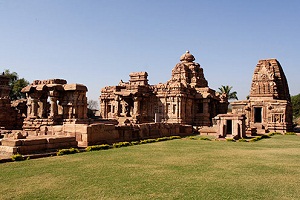
History, Musuem, Nature, Temple

Caves, Fort, History, Mountian Biking, Musuem, Nature, Temple, Trekking, Valley, Water falls

Beach, Fort, History, Musuem, Nature, Temple, Tomb

Caves, Fort, Hill Station, History, Musuem, Nature, Temple, Trekking, Wildlife Sanctuary

Beach, Boating, Fort, History, Musuem, Nature, Temple, Valley, Water falls, Wildlife Sanctuary

Boating, Fort, History, Masjid, Musuem, Nature, Temple, Tomb

Beach, History, Musuem, Nature, Temple, Valley, Water falls

Fort, History, Musuem, Nature, Temple

Boating, Fort, Hill Station, History, Musuem, Nature, Temple, Trekking, Valley, Water falls

Boating, Fort, History, Musuem, Nature, Temple, Wildlife Sanctuary

Hill Station, History, Musuem, Nature, Temple, Trekking, Valley, Wildlife Sanctuary

Buddhist Monestery, Buddhist Stupas, Buddhist temples, Caves, History, Musuem, Temple

Fort, History, Masjid, Musuem, Nature, Temple

Caves, Fort, History, Masjid, Musuem, Nature, Temple

Fort, History, Musuem, Nature, Temple, Trekking, Valley

History, Masjid, Musuem, Temple

Fort, History, Masjid, Musuem, Nature, Temple

Fort, Masjid, Musuem, Nature, Temple

Hill Station, History, Musuem, Nature, Temple, Trekking, Valley

History, Musuem, Nature, Temple, Trekking, Valley, Wildlife Sanctuary

Musuem, Nature, Temple, Valley, Water falls

History, Musuem, Nature, Temple, Valley, Water falls

History, Musuem, Temple, Valley

Boating, History, Musuem, Nature, Temple, Valley, Water falls, Wildlife Sanctuary

Fort, History, Musuem, Nature, Temple, Tomb

Boating, Fort, History, Musuem, Nature, Temple, Valley, Water falls, Wildlife Sanctuary

Fort, History, Musuem, Nature, Temple

Fort, History, Musuem, Nature, Temple, Tomb, Wildlife Sanctuary

Boating, Fort, History, Musuem, Nature, Temple, Wildlife Sanctuary

Beach, History, Musuem, Nature, Valley, Water falls, Wildlife Sanctuary

Beach, Fort, History, Musuem, Nature, Temple, Tomb

Musuem, Temple
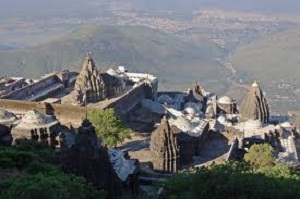
Fort, History, Musuem, Nature, Temple, Wildlife Sanctuary

Fort, History, Musuem, Nature, Temple

Beach, Fort, History, Musuem, Nature

History, Musuem, Nature, Valley, Water falls

Musuem, Nature, Temple, Water falls

History, Musuem, Nature, Temple, Valley
